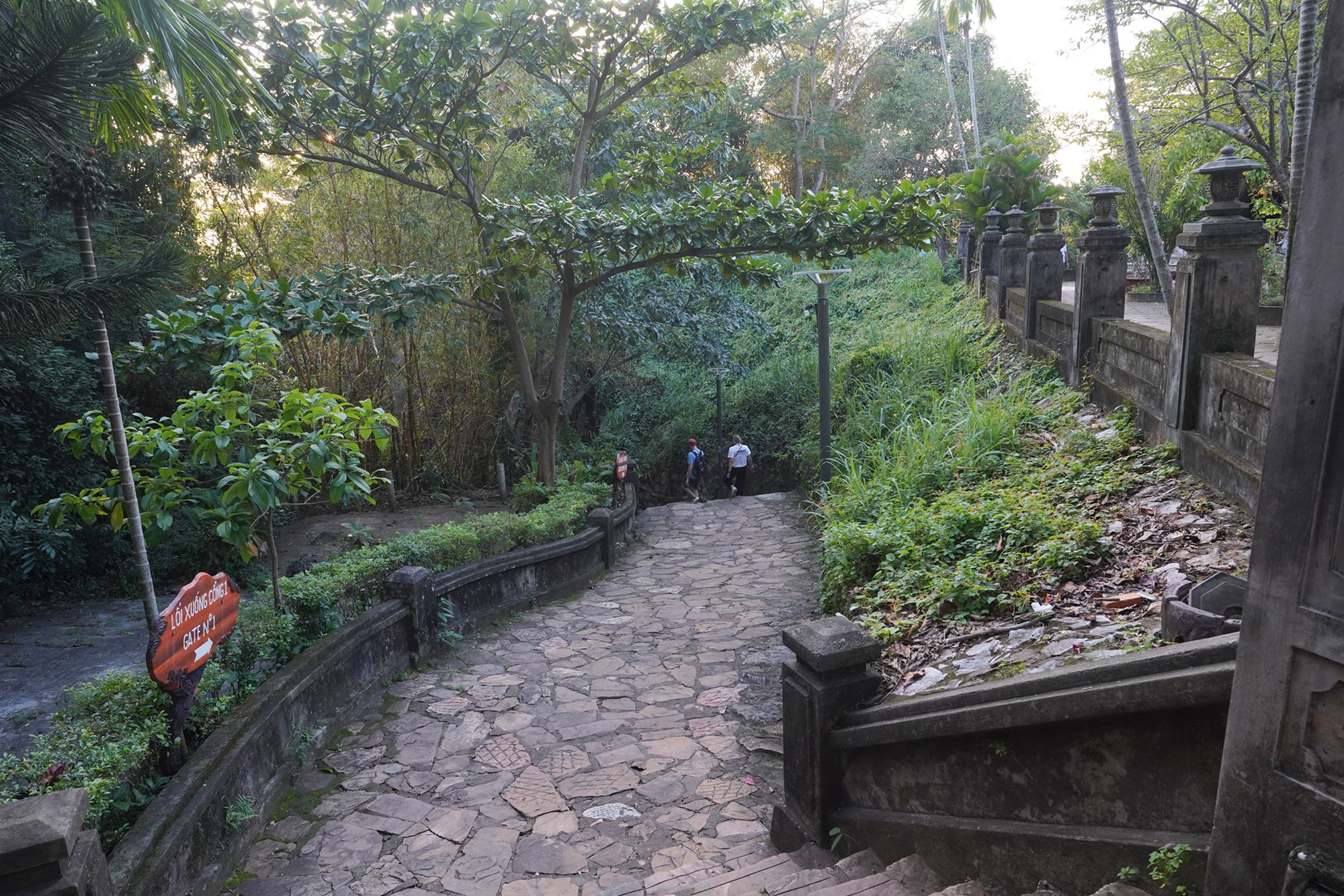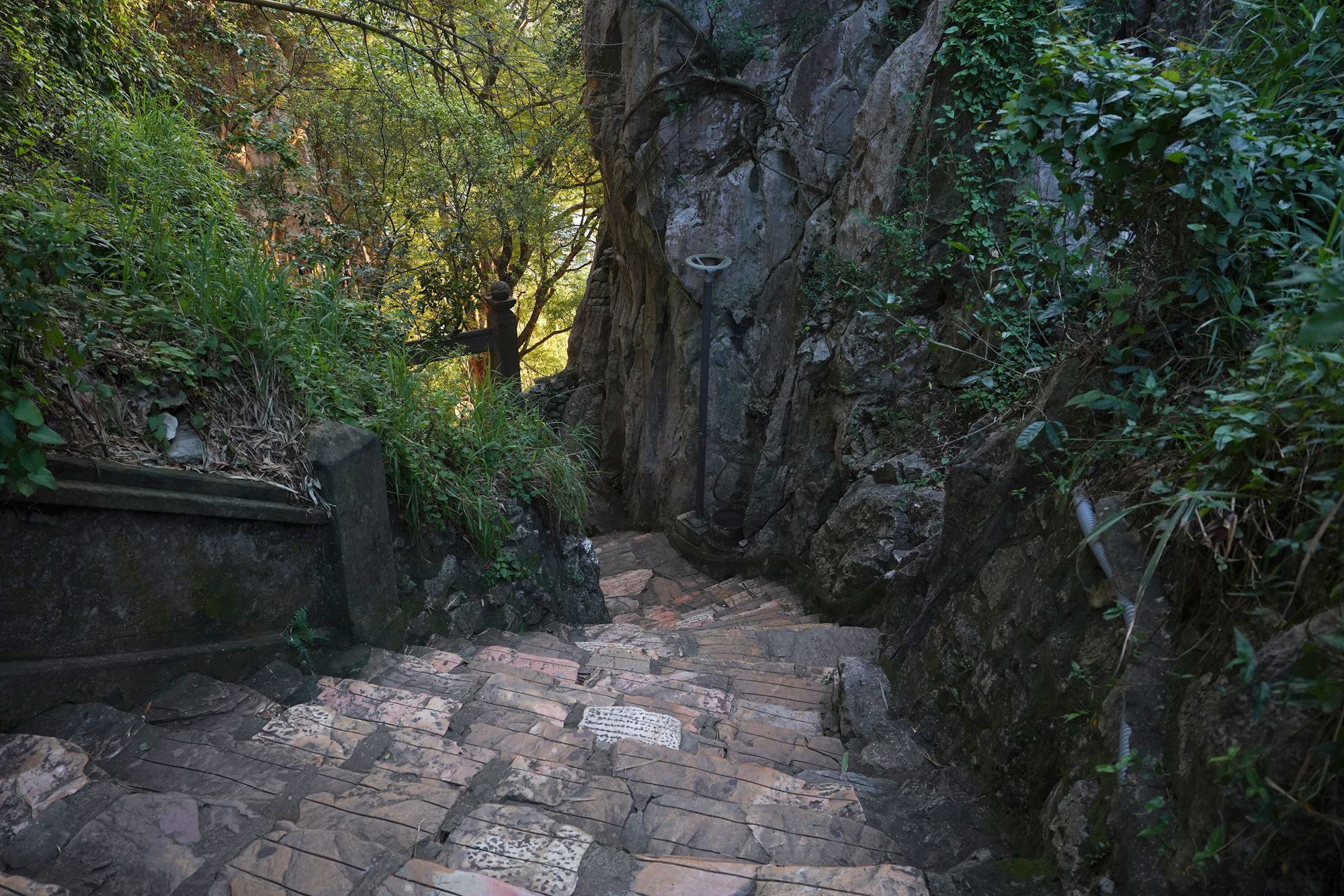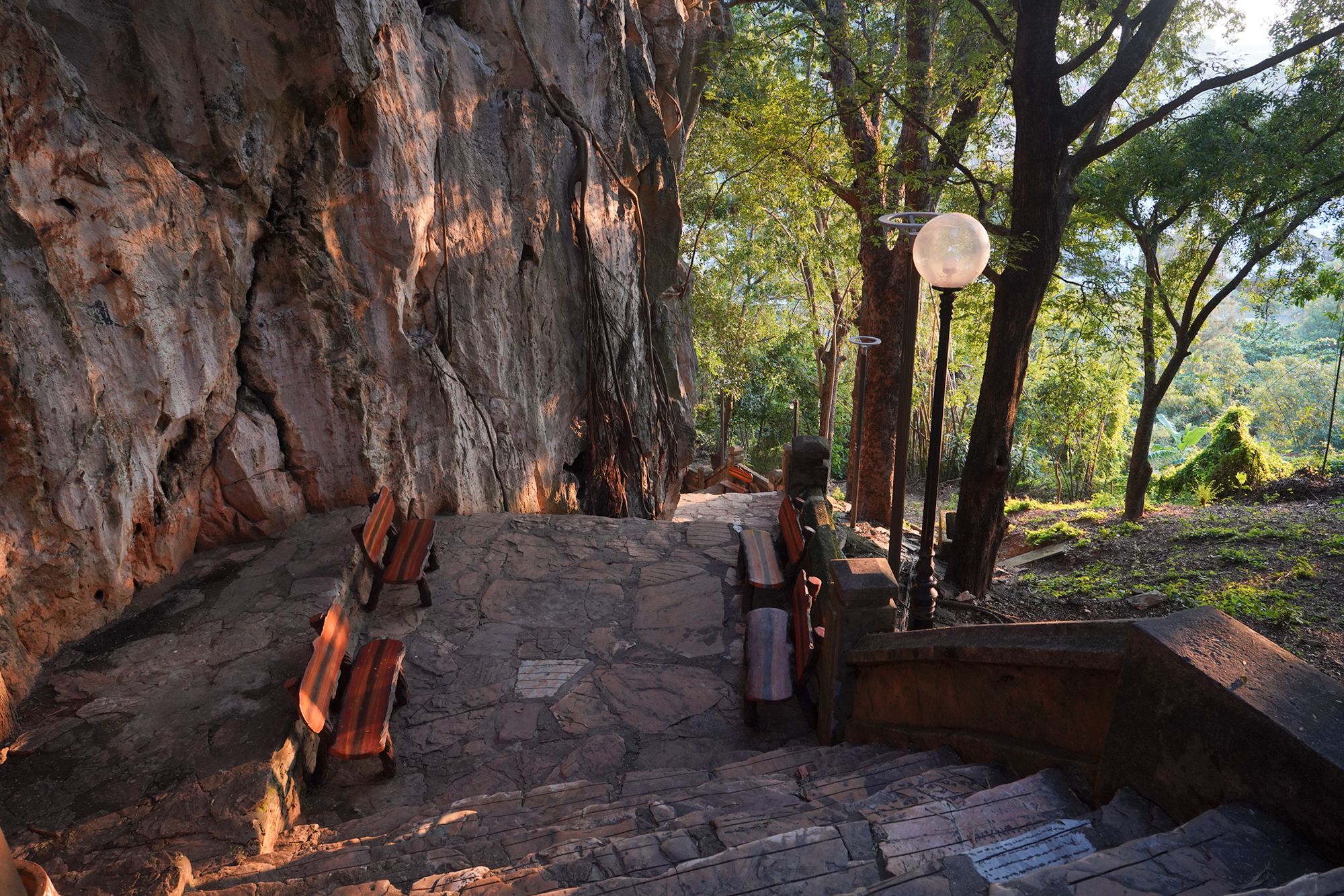Chùa Linh Ứng and Tháp Xá Lợi Temples, Danang, Vietnam
Chùa Linh Ứng and Tháp Xá Lợi are significant Buddhist temples in Vietnam, known for their serene atmosphere and striking architecture. 1018
Chùa Linh Ứng Temple: 472H+435 Vườn Lâm Tỳ Ni, Hoàng Sa, Thọ Quang, Sơn Trà, Đà Nẵng, Vietnam
Tháp Xá Lợi: 2737+CM6, Hòn Thủy Sơn, Hoà Hải, Ngũ Hành Sơn, Đà Nẵng 550000, Vietnam
Date Picture Taken: November, 2024
I visited two renowned temples near Da Nang, both popular attractions in the area.
The pagoda shown in the picture below belongs to Tháp Xá Lợi Temple, located in front of Chùa Linh Ứng Temple, which I explored afterward.
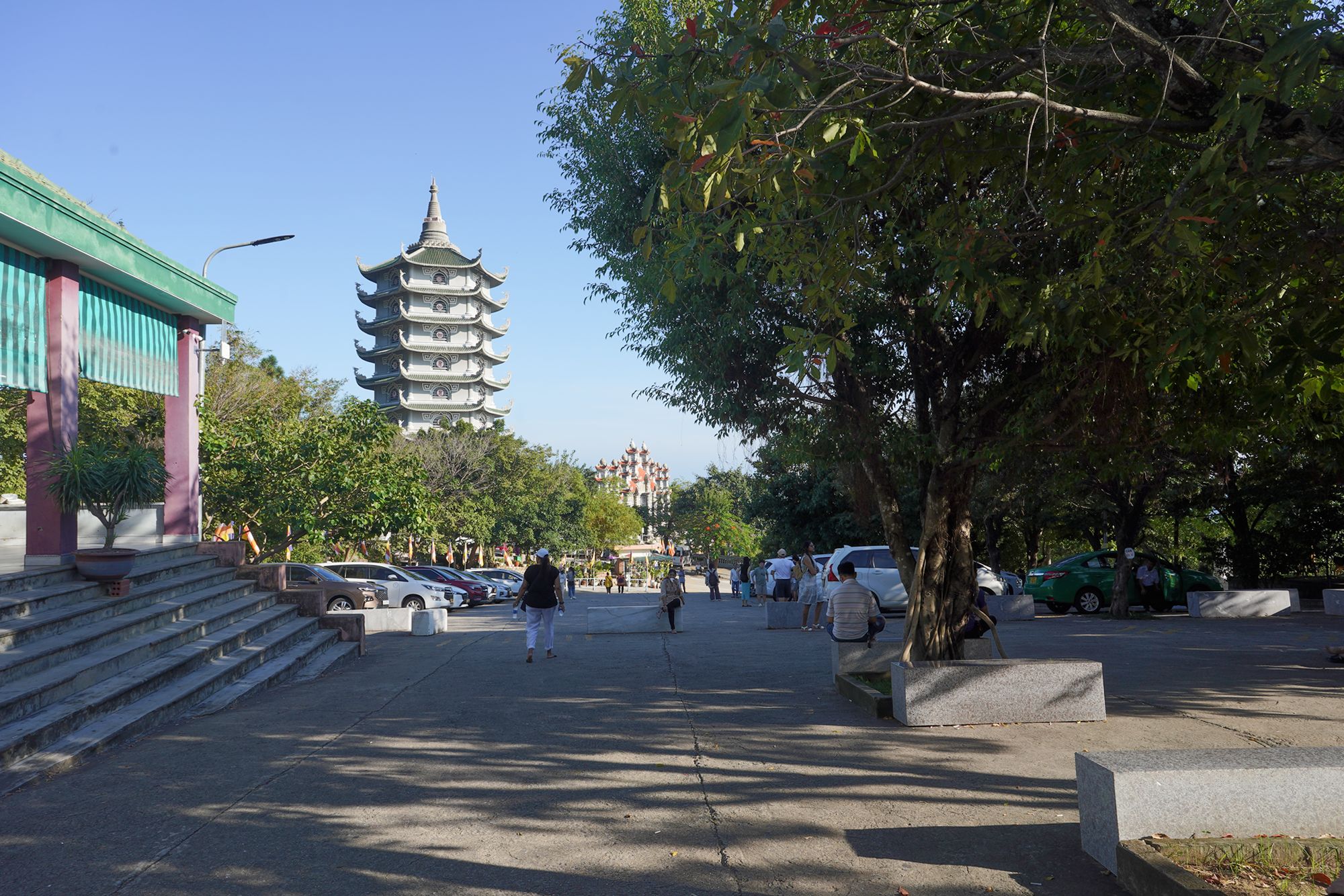
A map of area temples
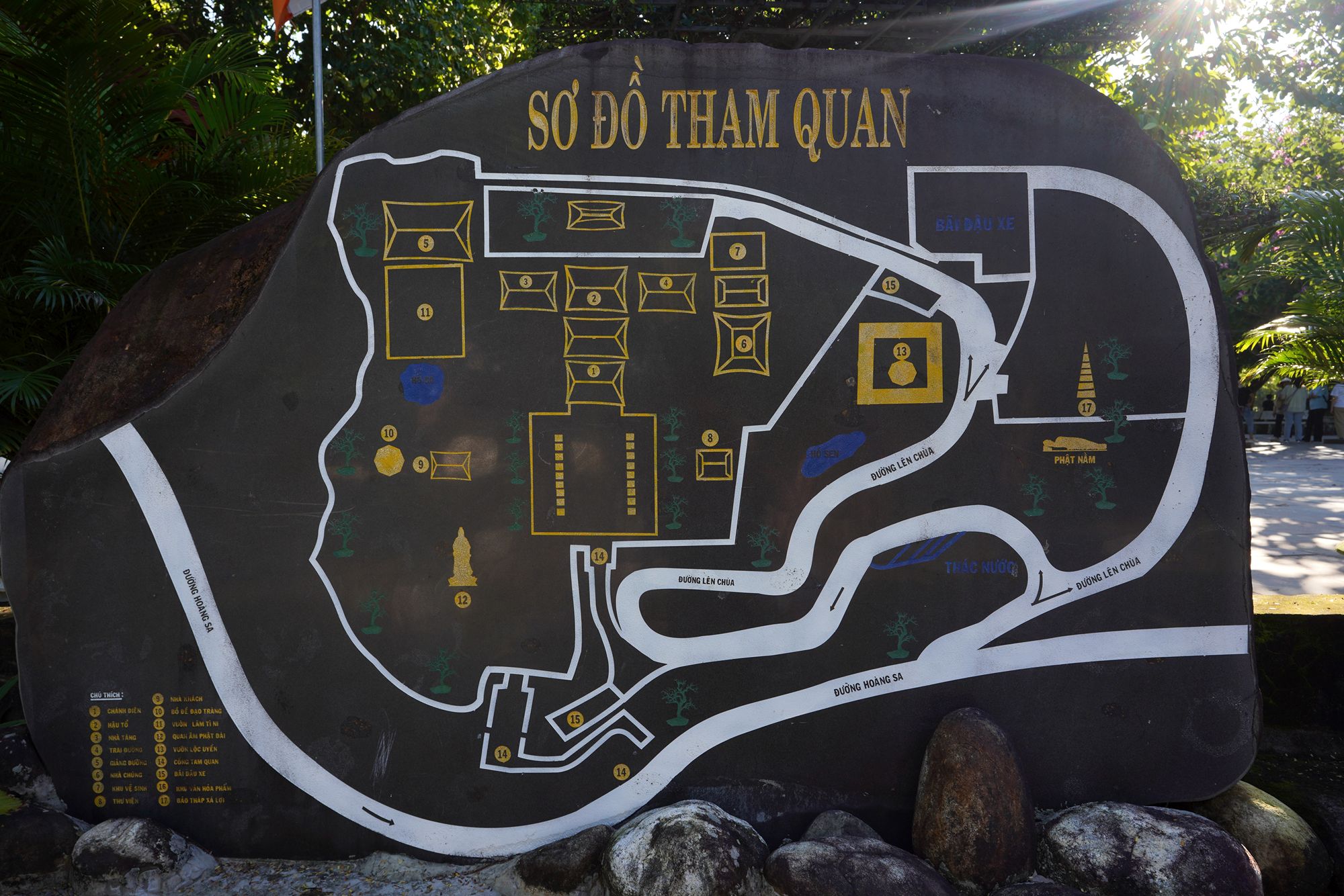
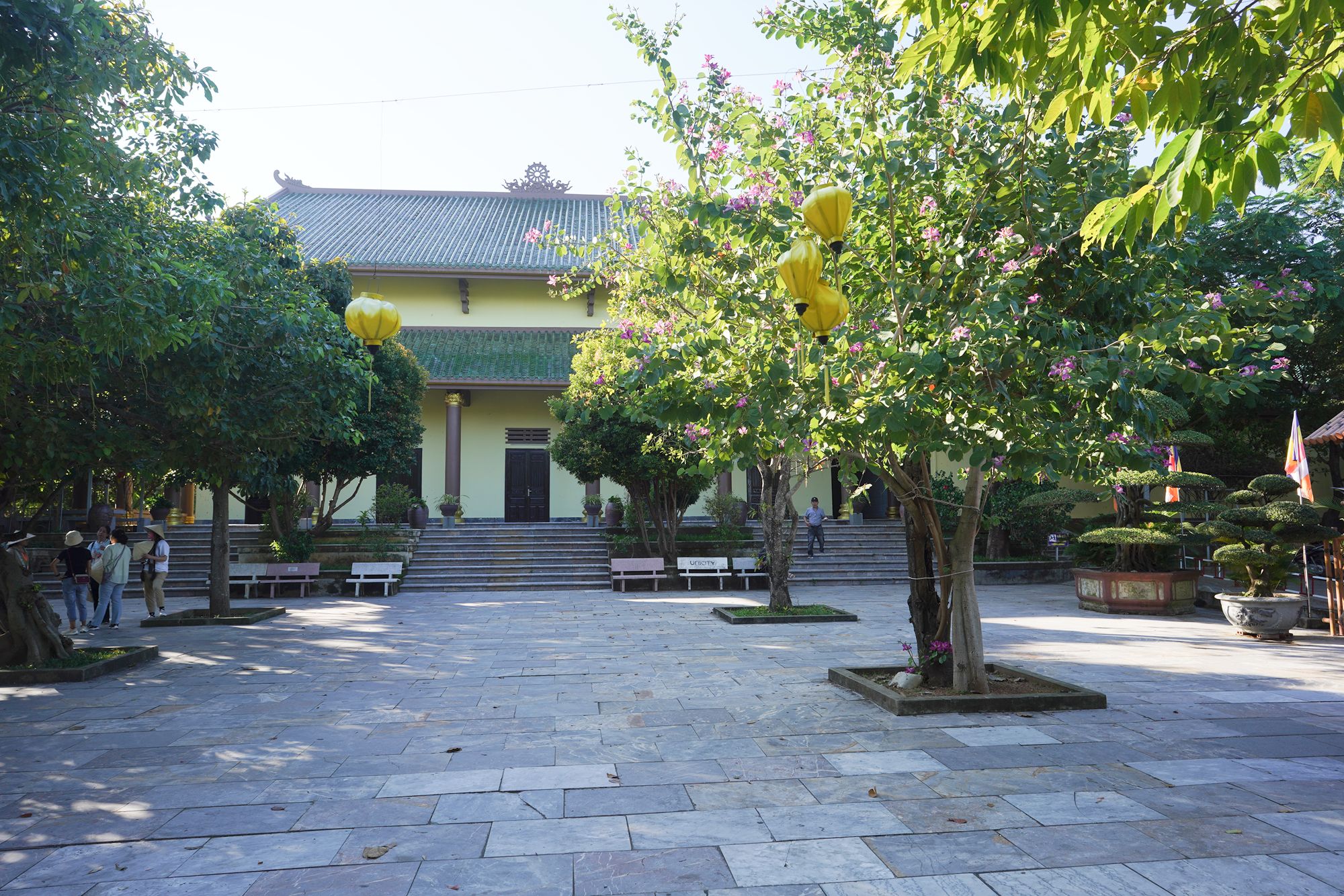
A side courtyard of Chùa Linh Ứng Temple.
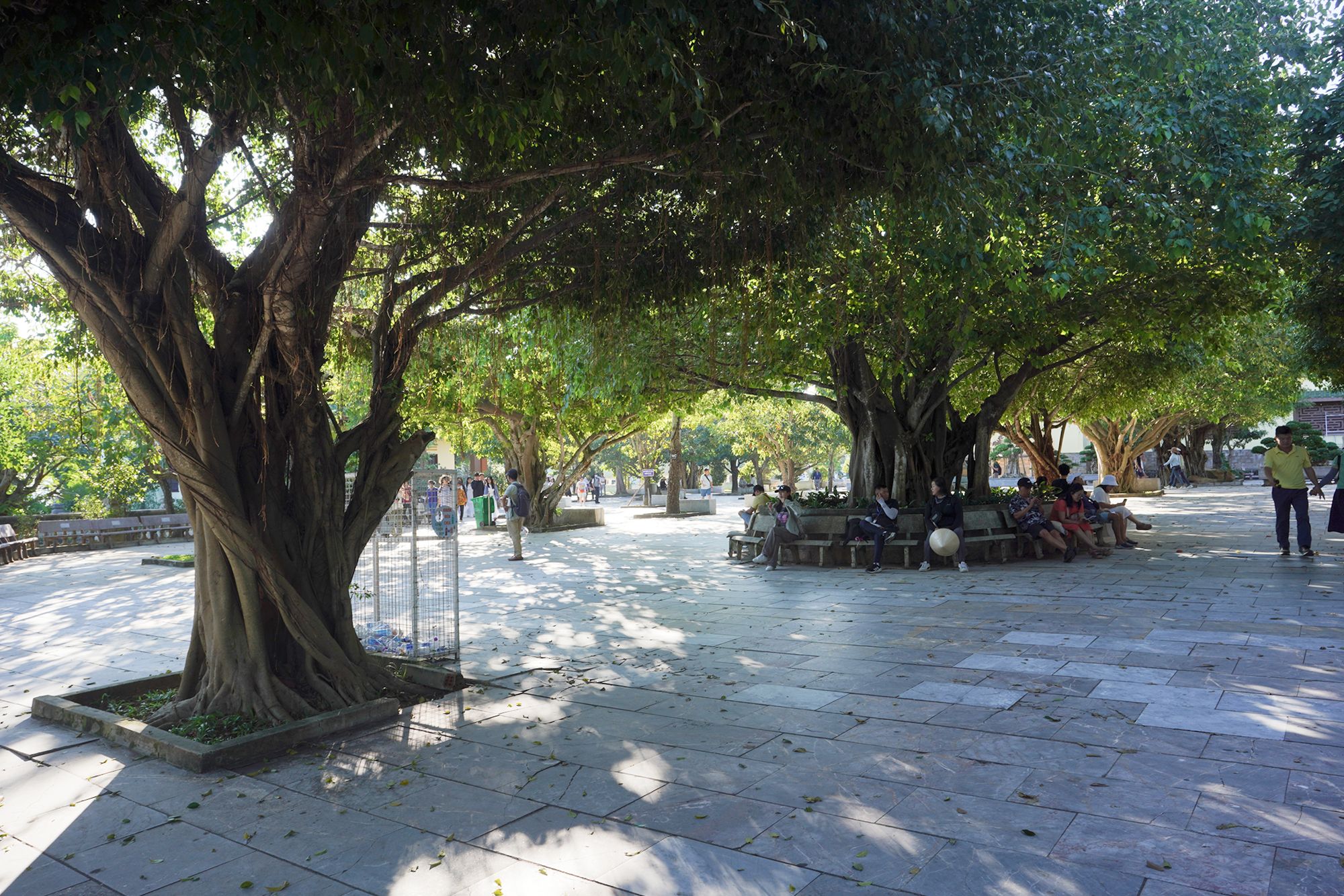
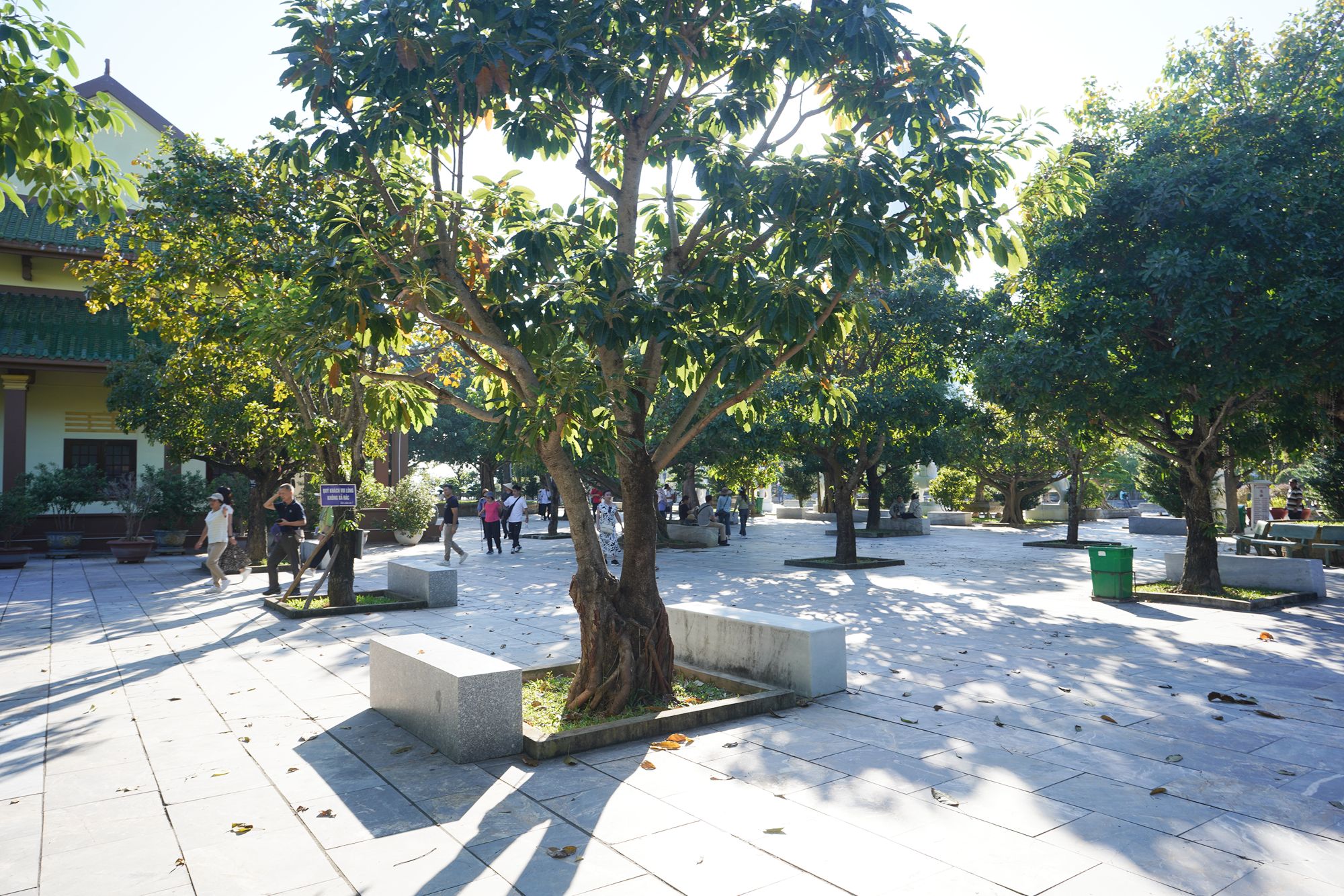
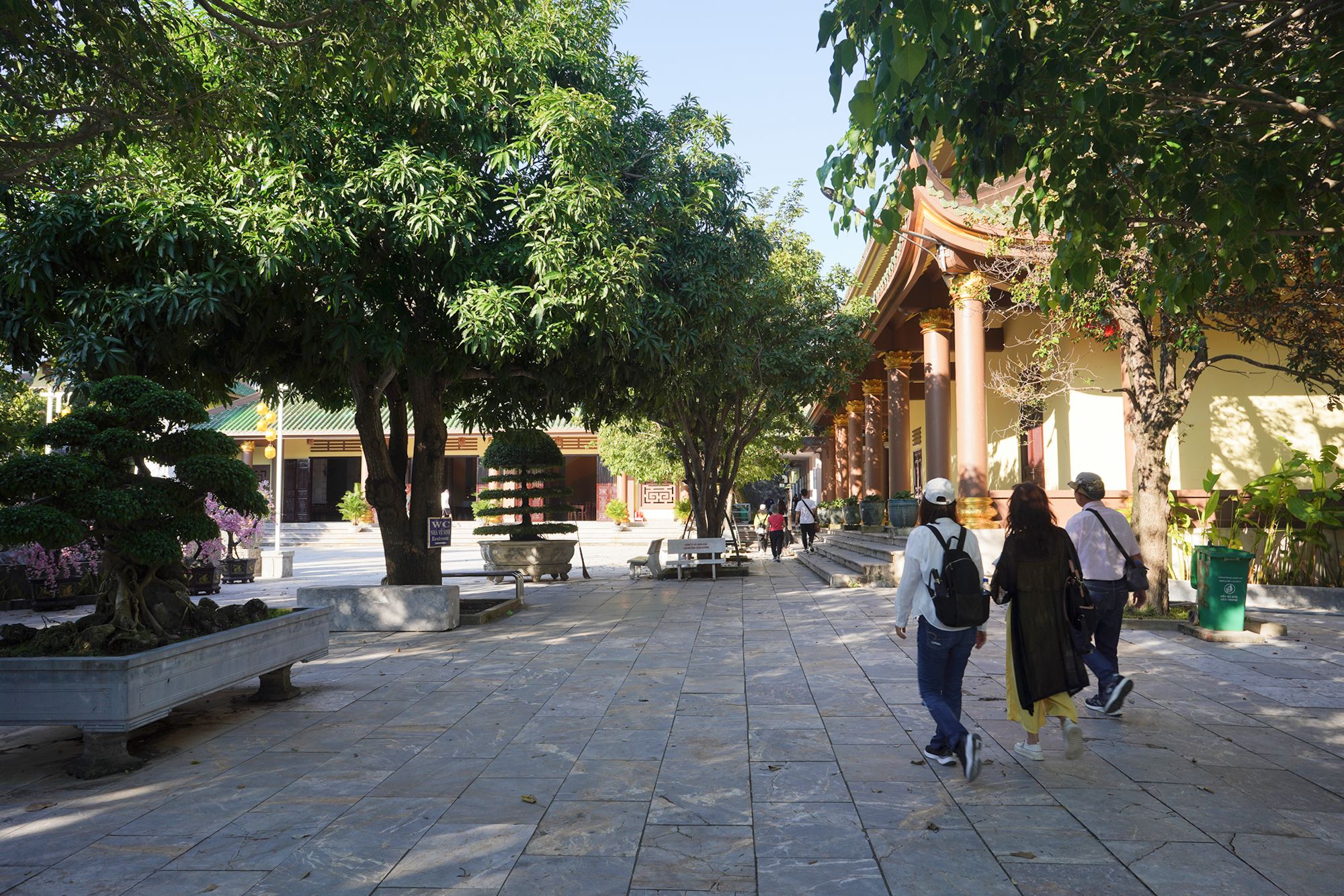
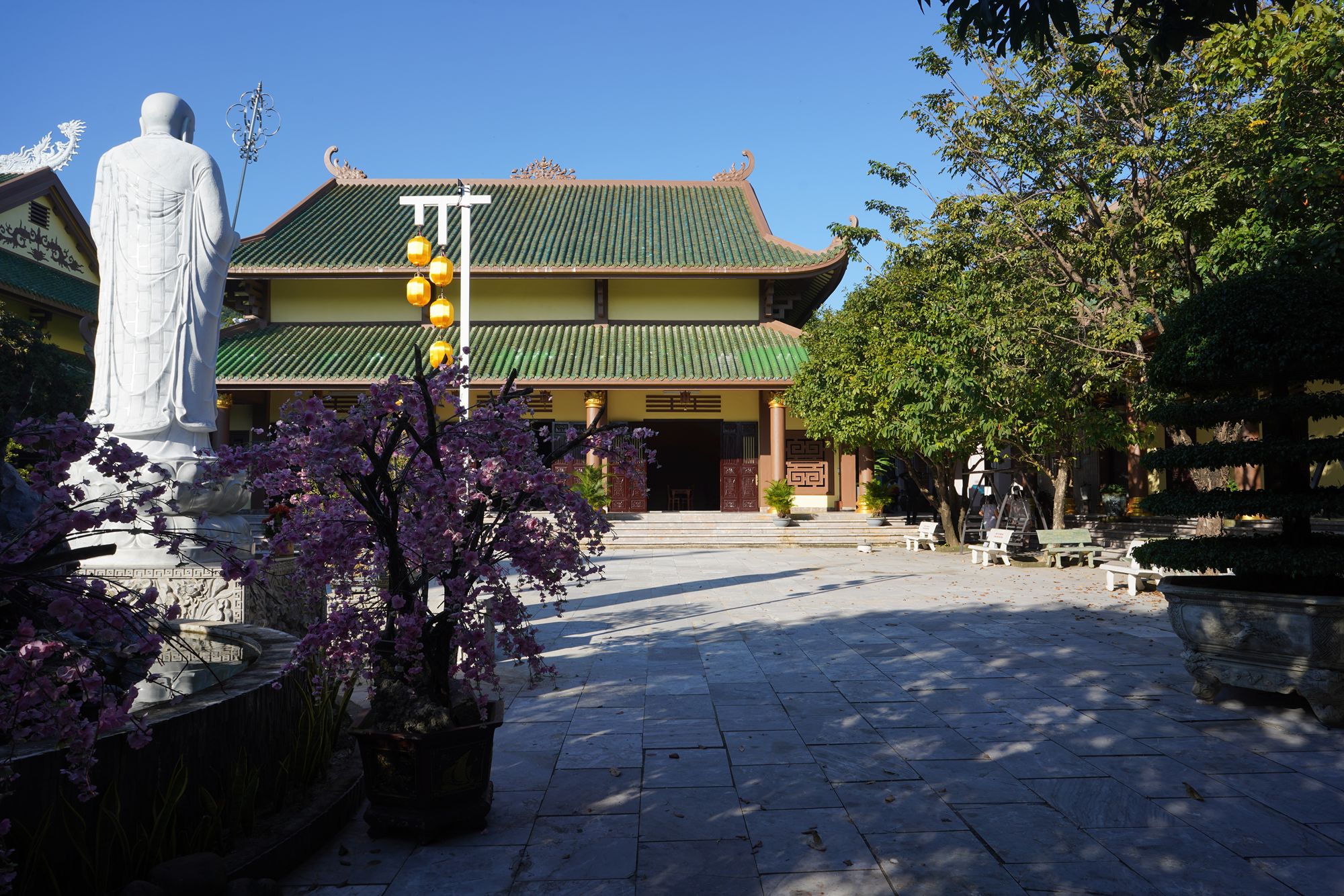
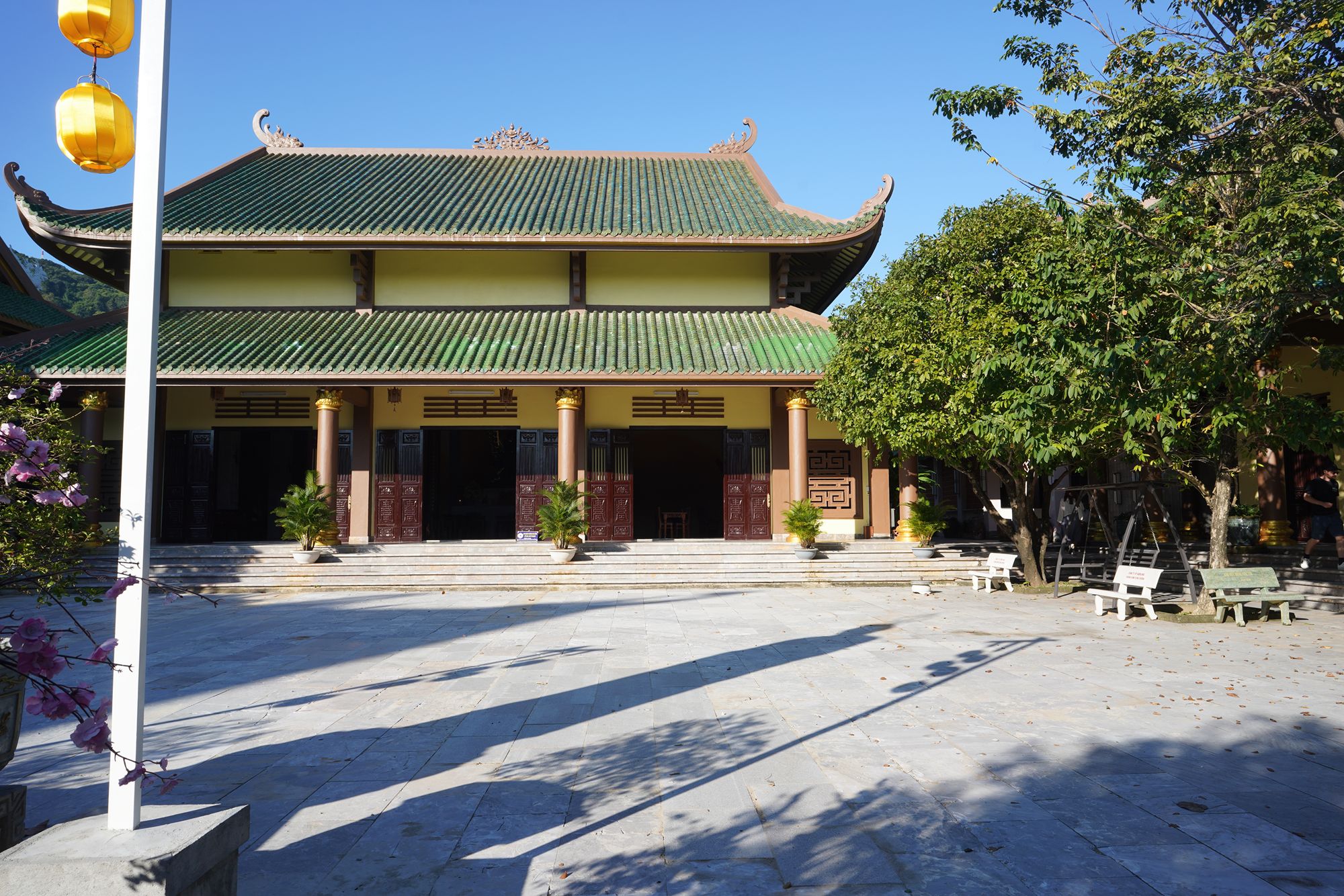
Back side
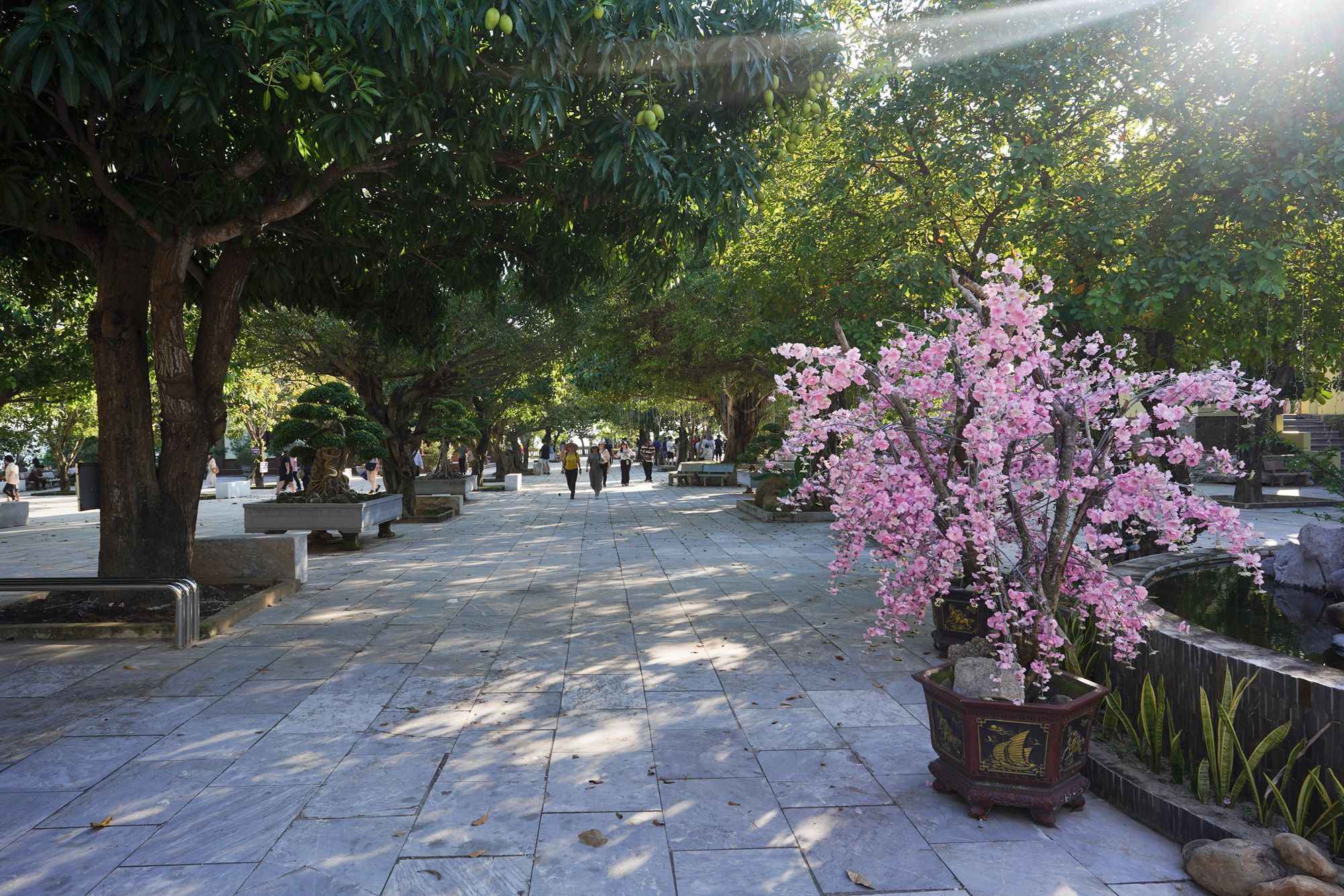
Chùa Linh Ứng, also known as the Linh Ung Pagoda, is one of the most revered Buddhist temples in Da Nang, Vietnam.
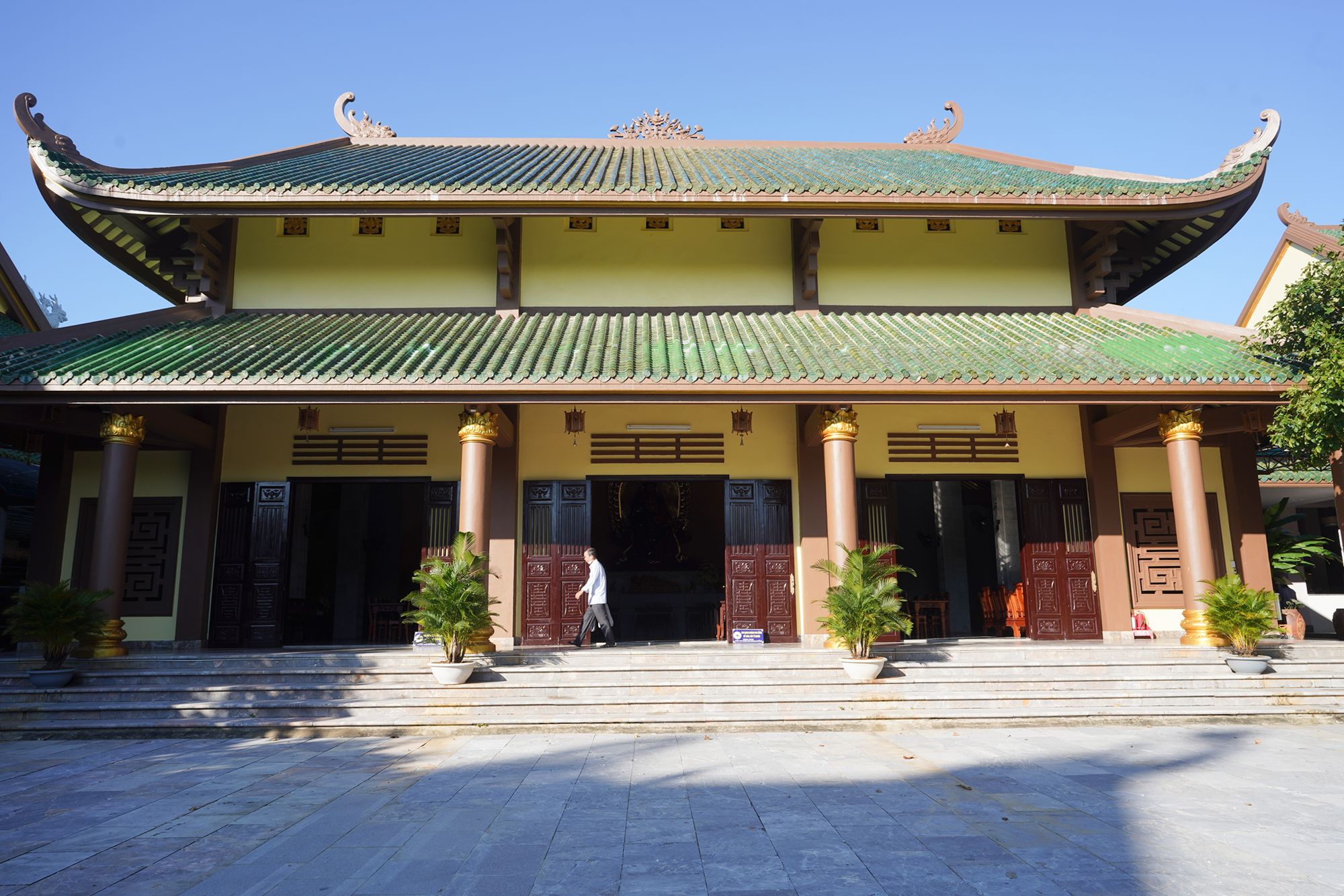
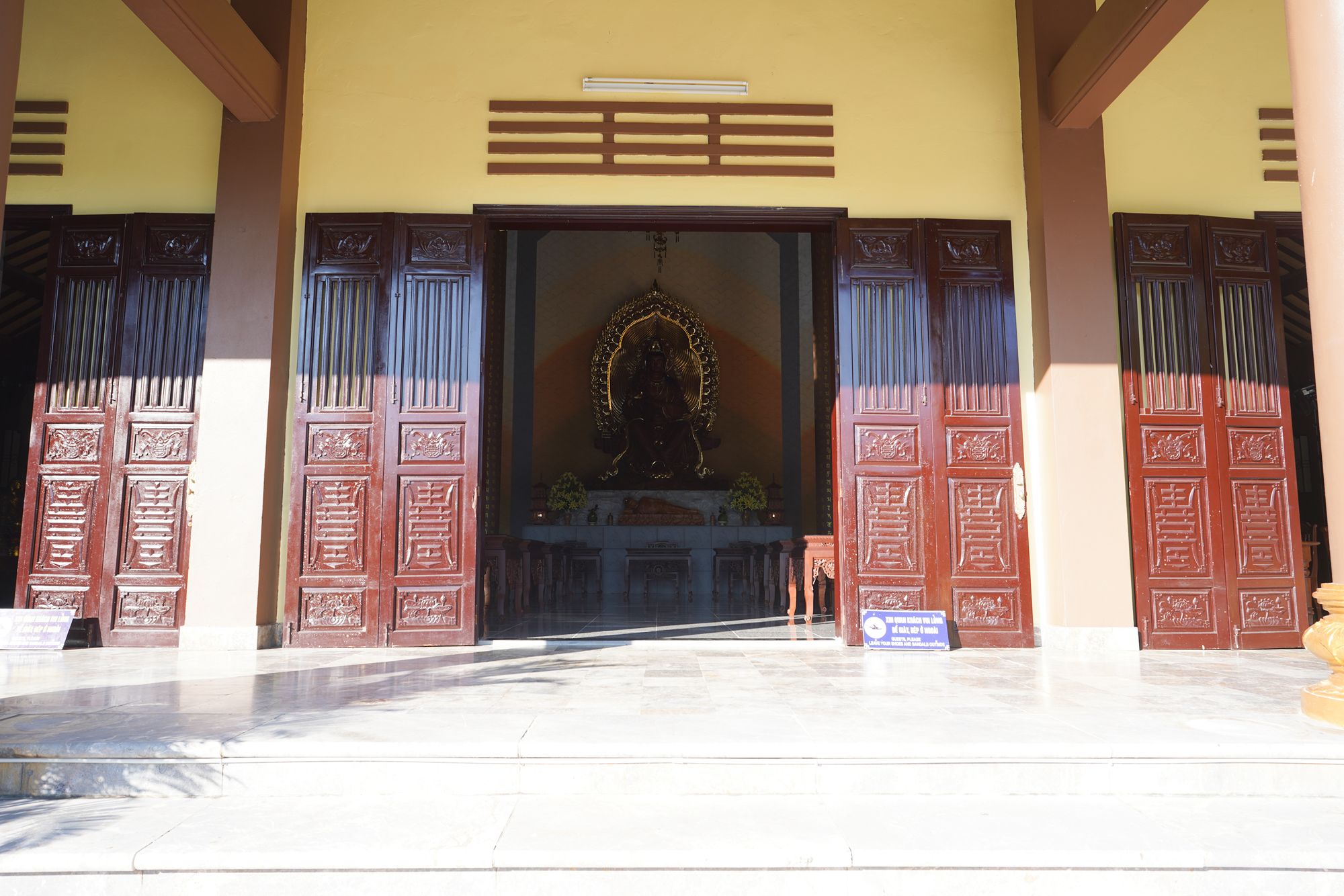
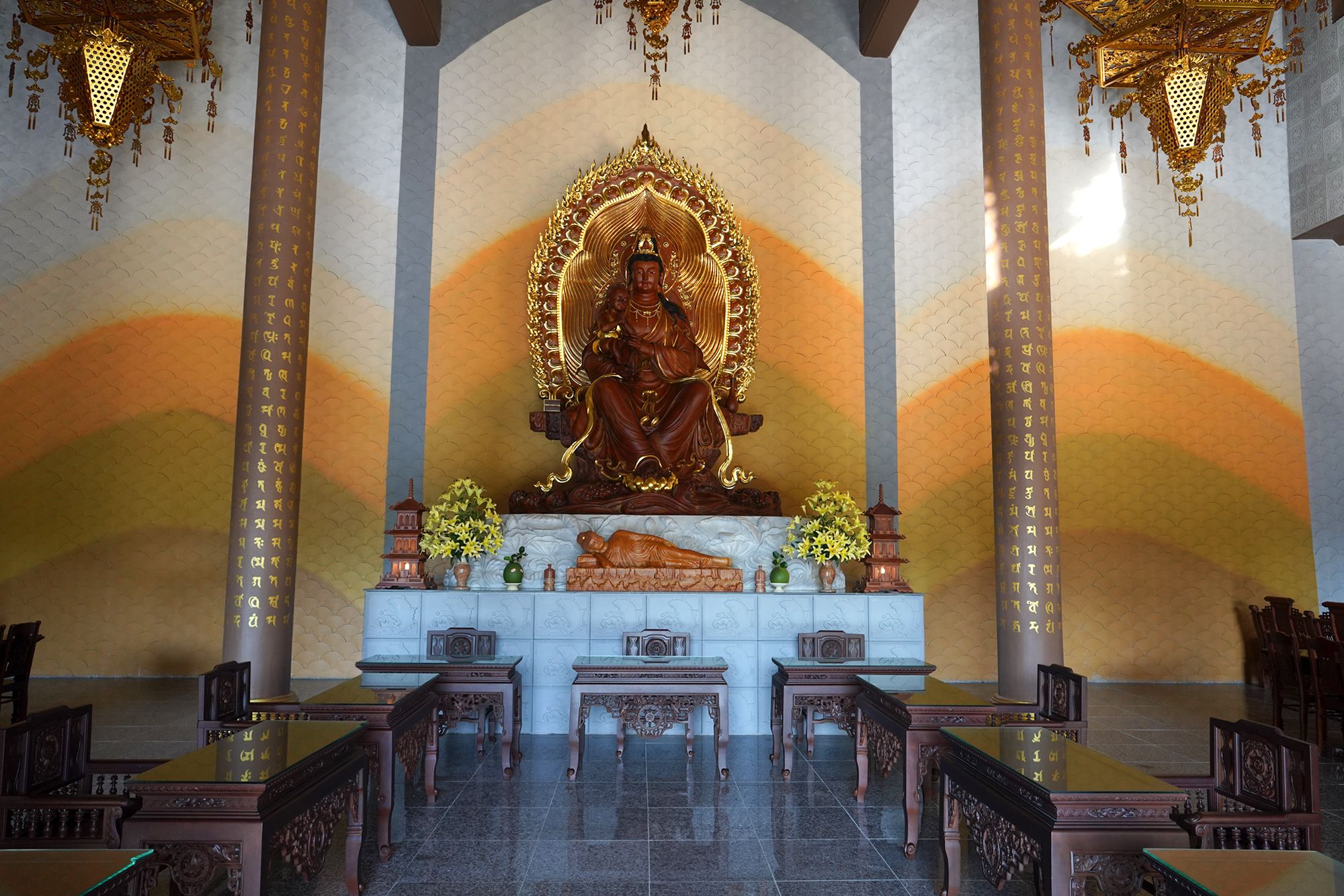
I turned around and looked back.
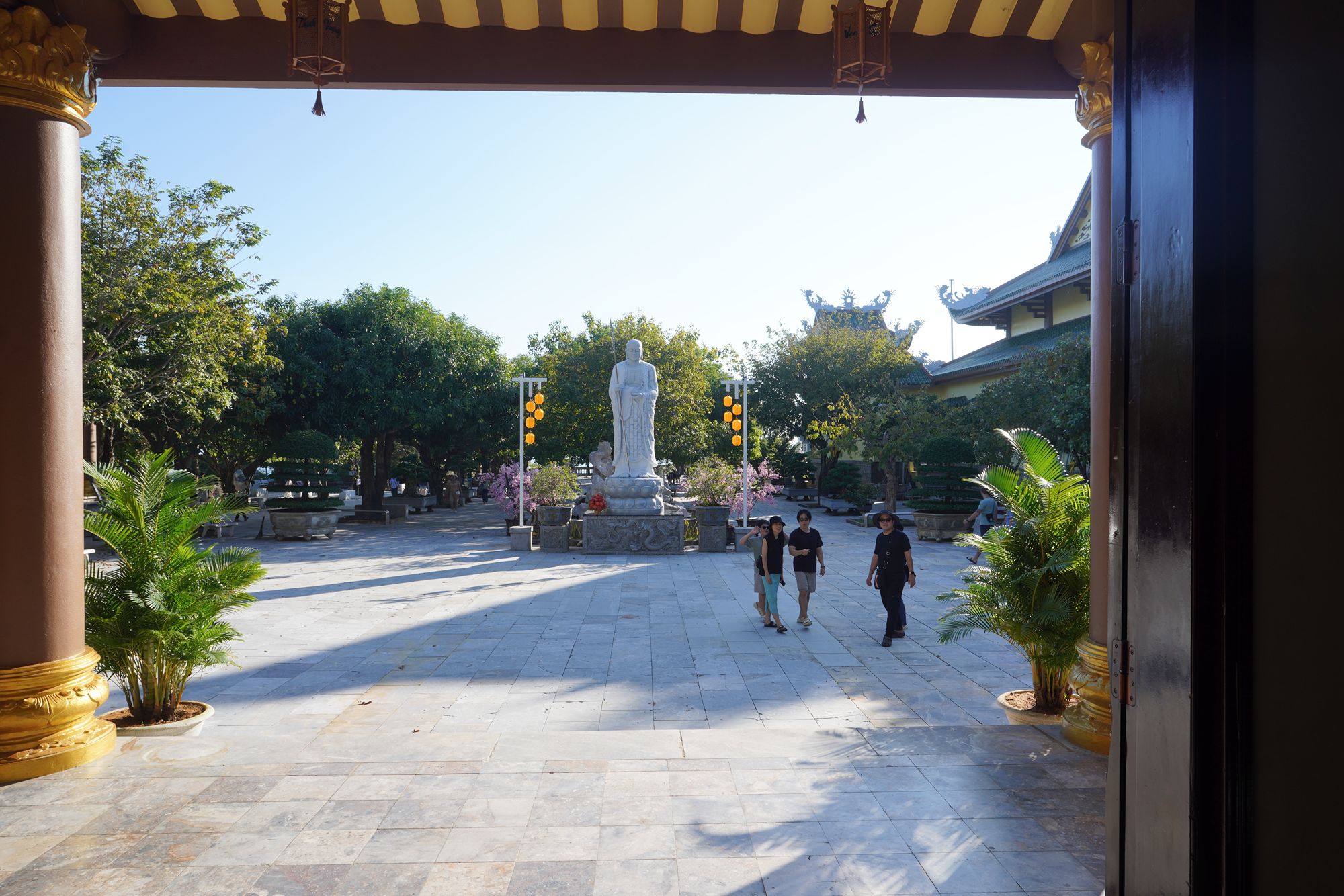
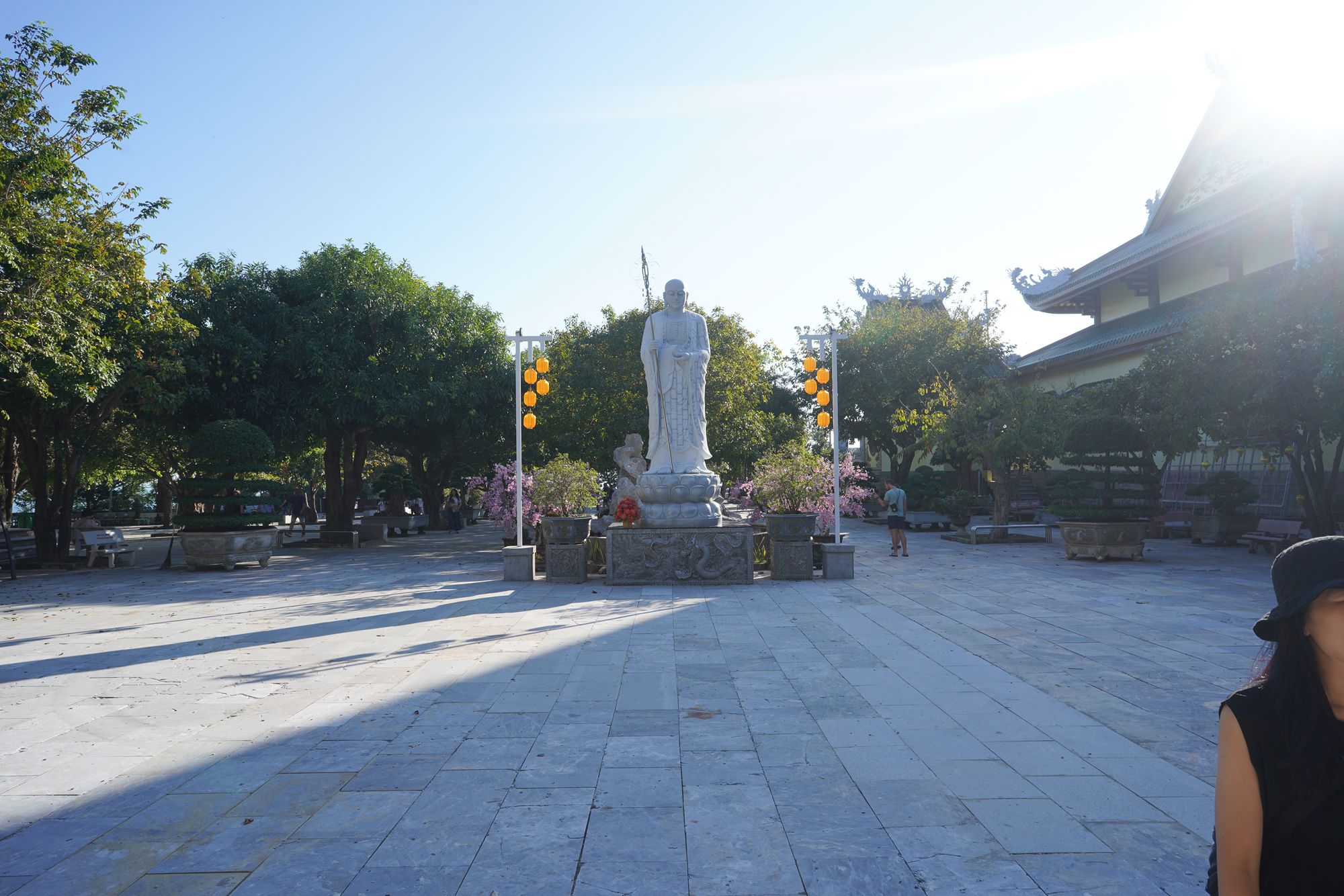
The building on my left
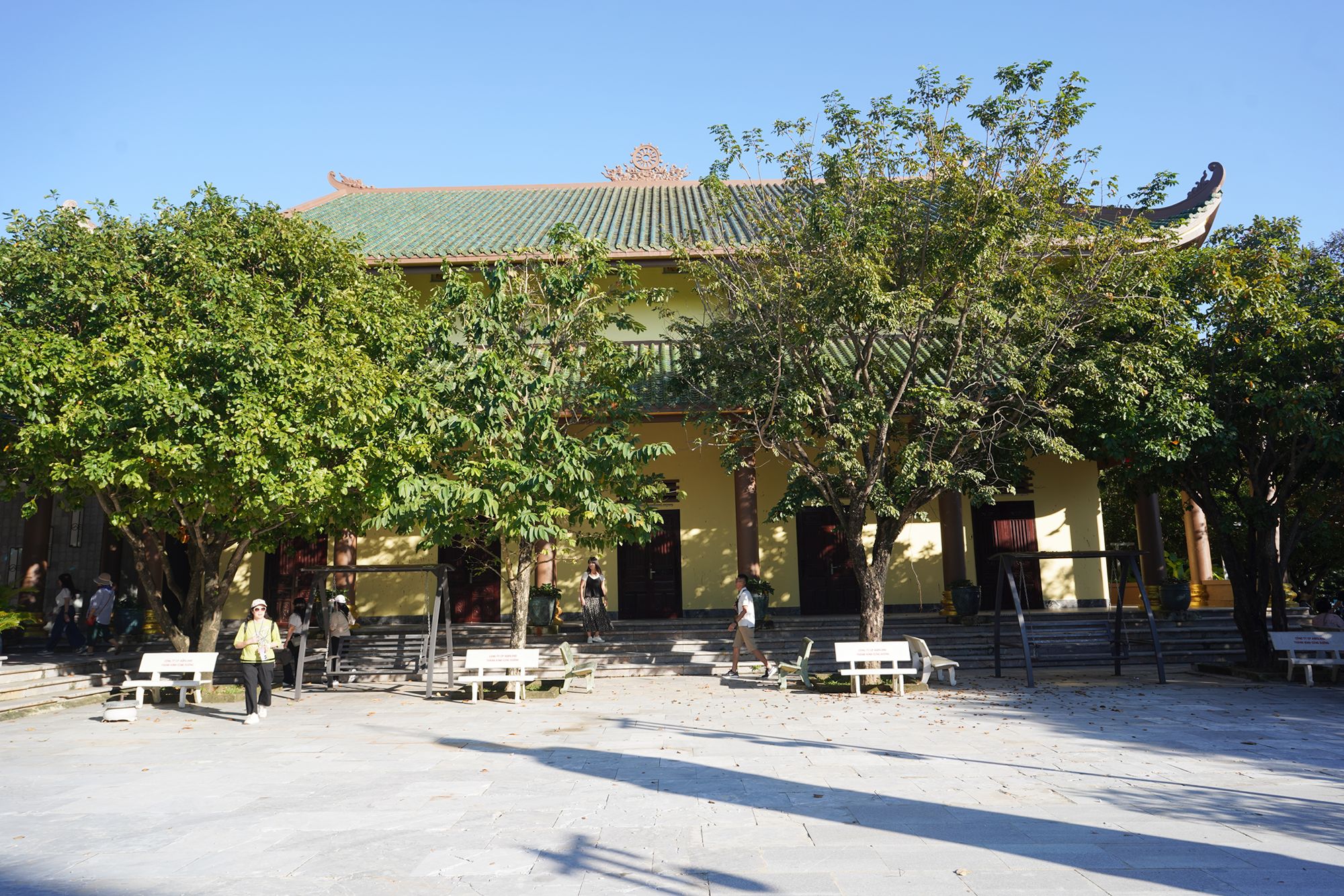
Another building on my right
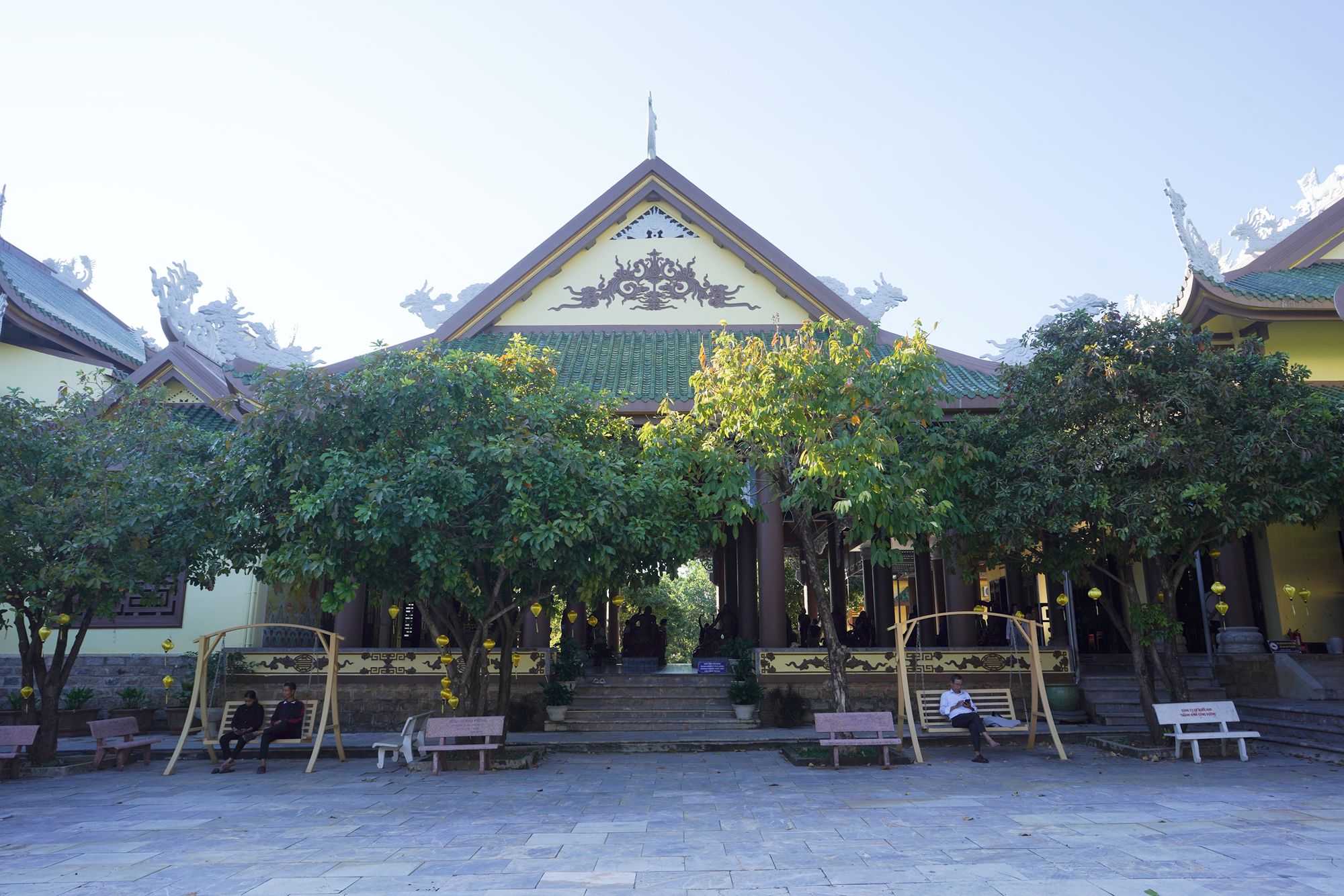
Chùa Linh Ứng, located on Sơn Trà Peninsula in Da Nang, Vietnam, has a relatively recent history compared to many other temples in the region. It was inaugurated in 2010 and is considered a modern masterpiece of Vietnamese Buddhist architecture. Despite its young age, the temple has quickly become one of the most significant spiritual landmarks in the area.
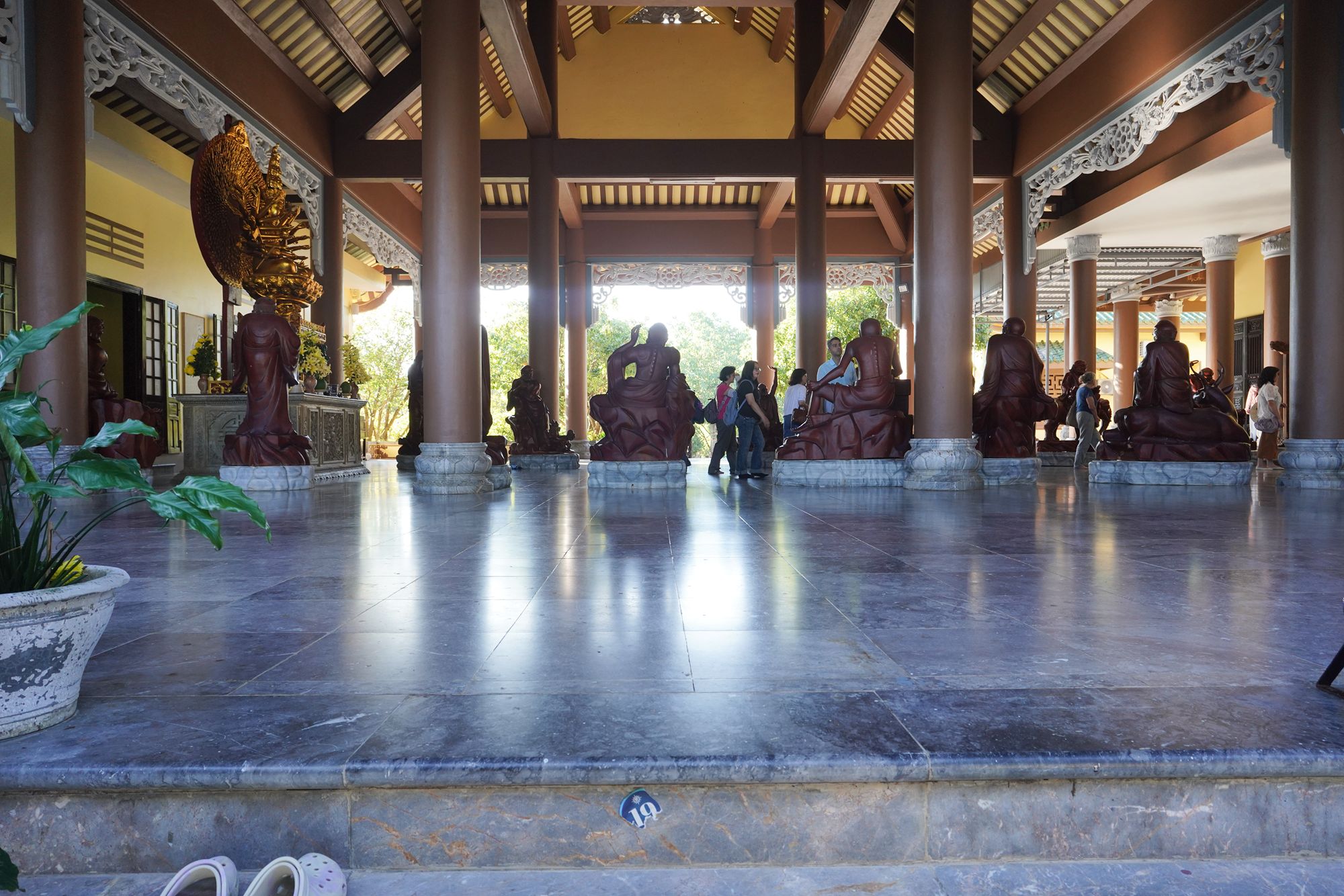
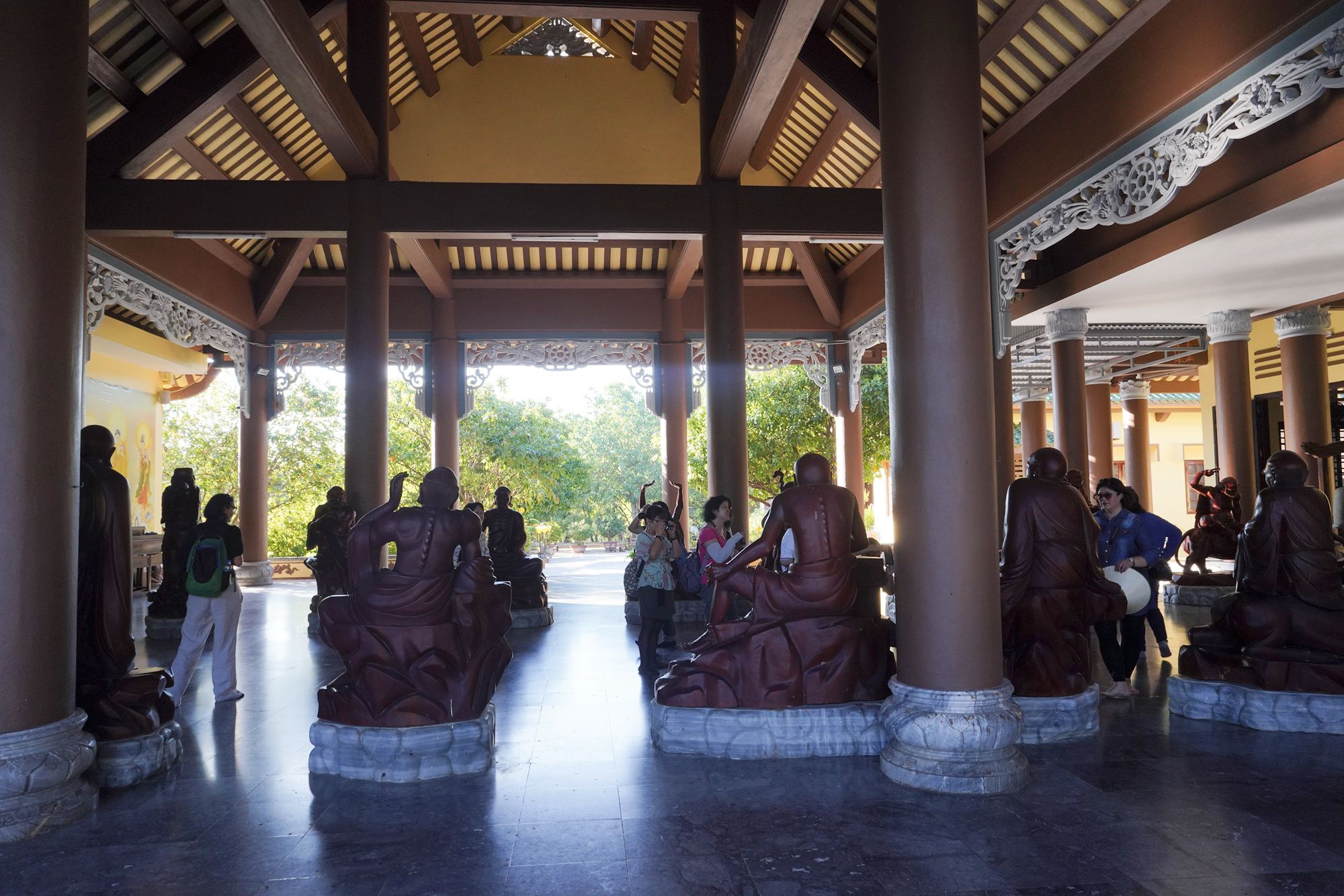
The temple’s creation was inspired by the desire to establish a place of worship and spiritual refuge for both locals and visitors.
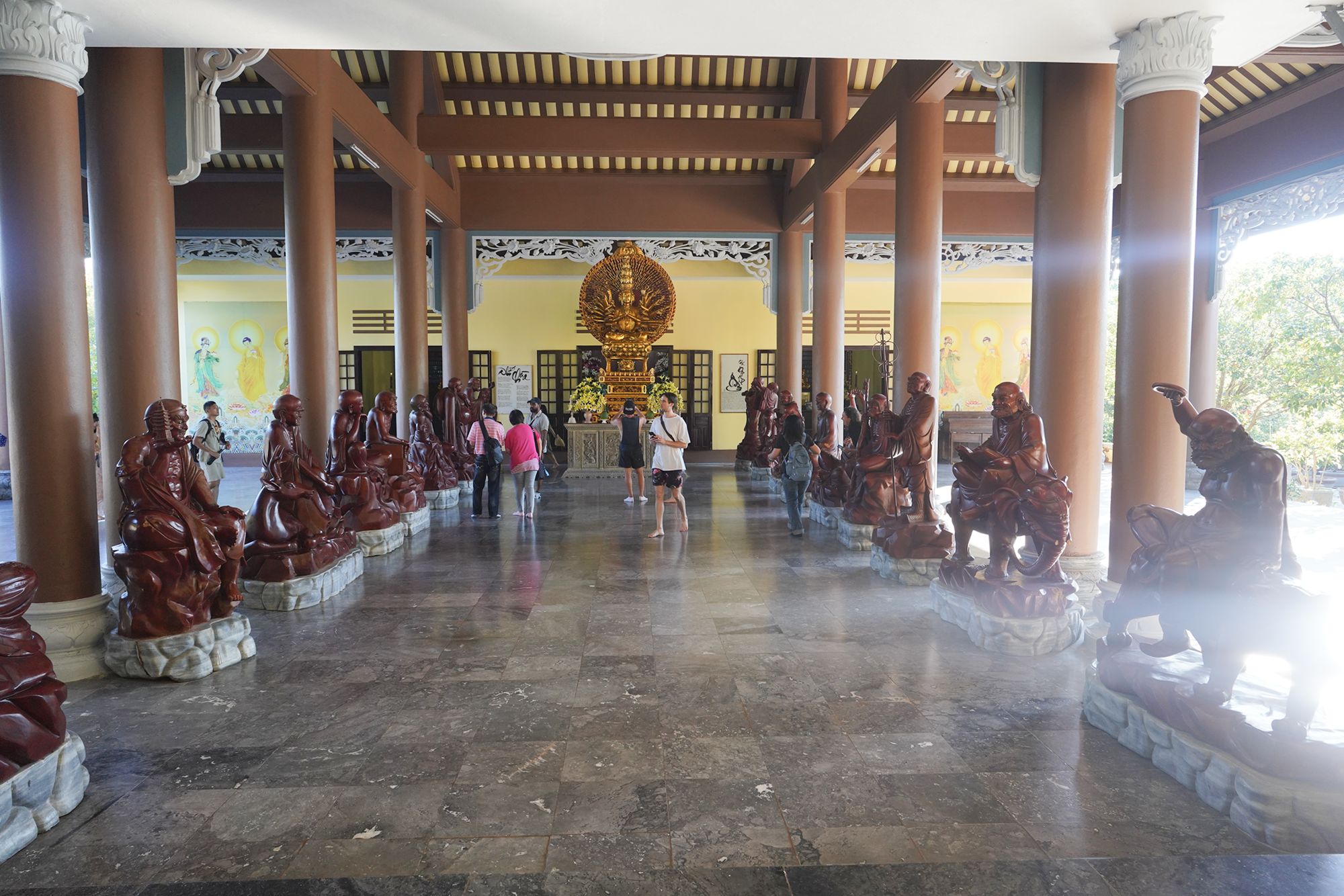
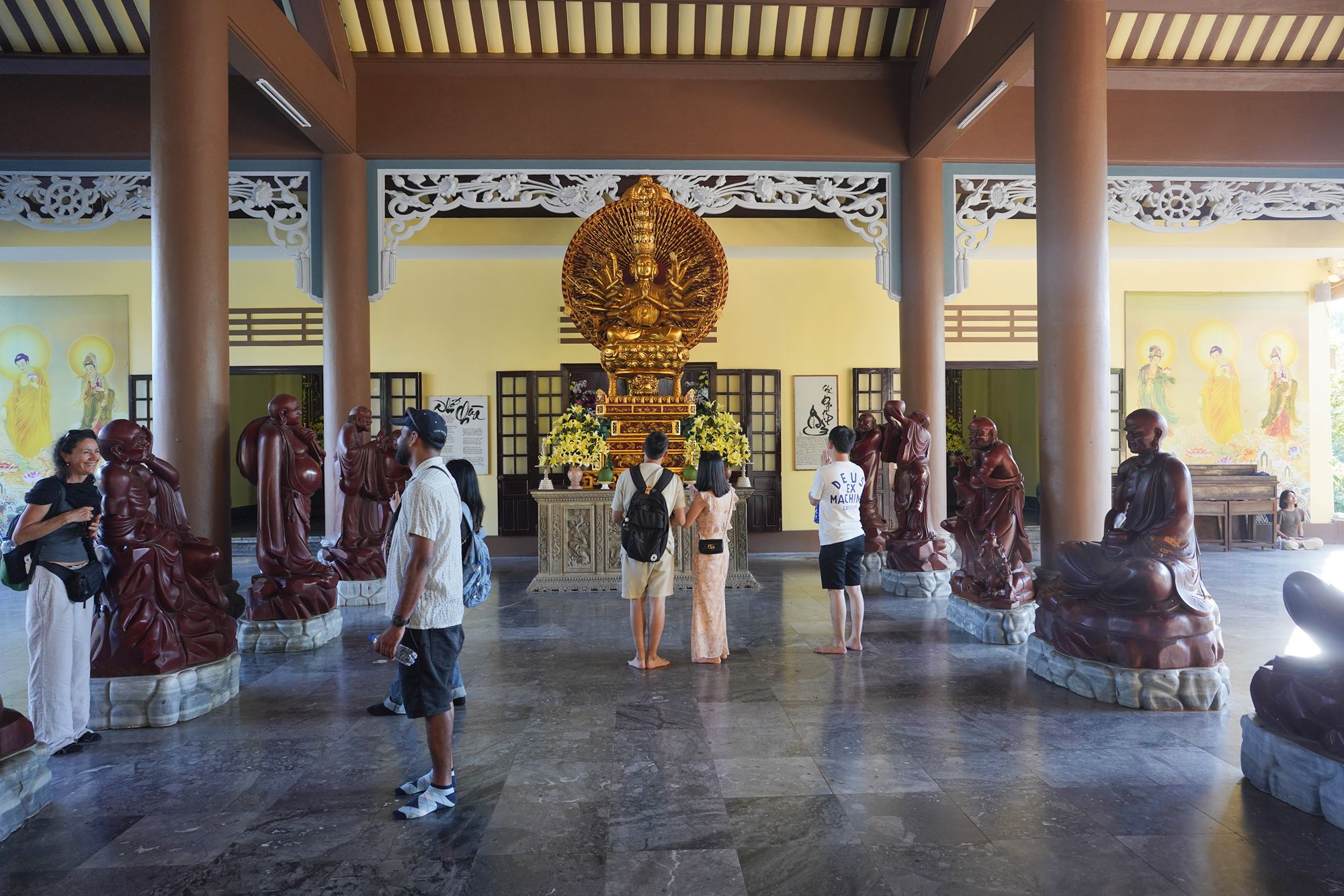
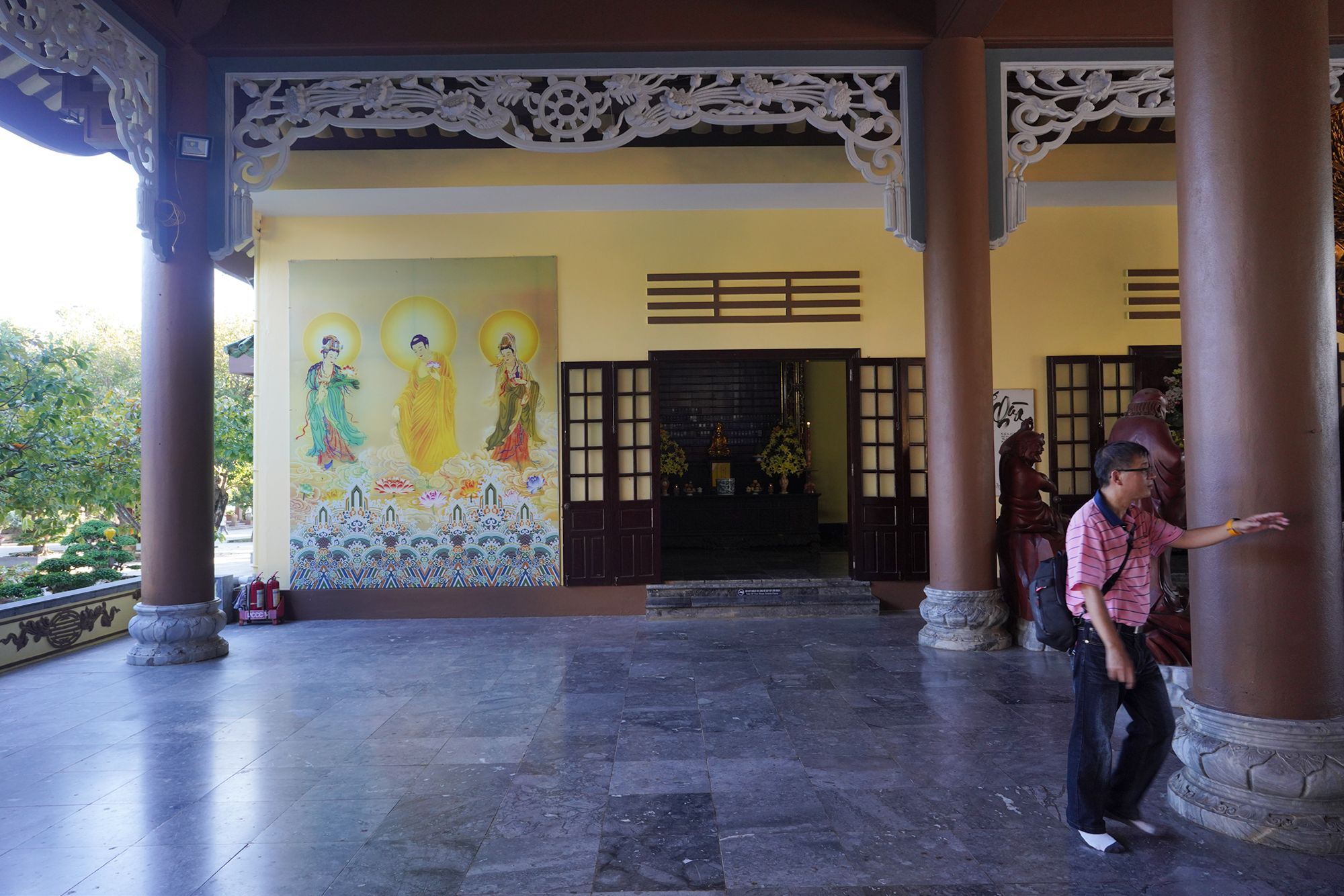
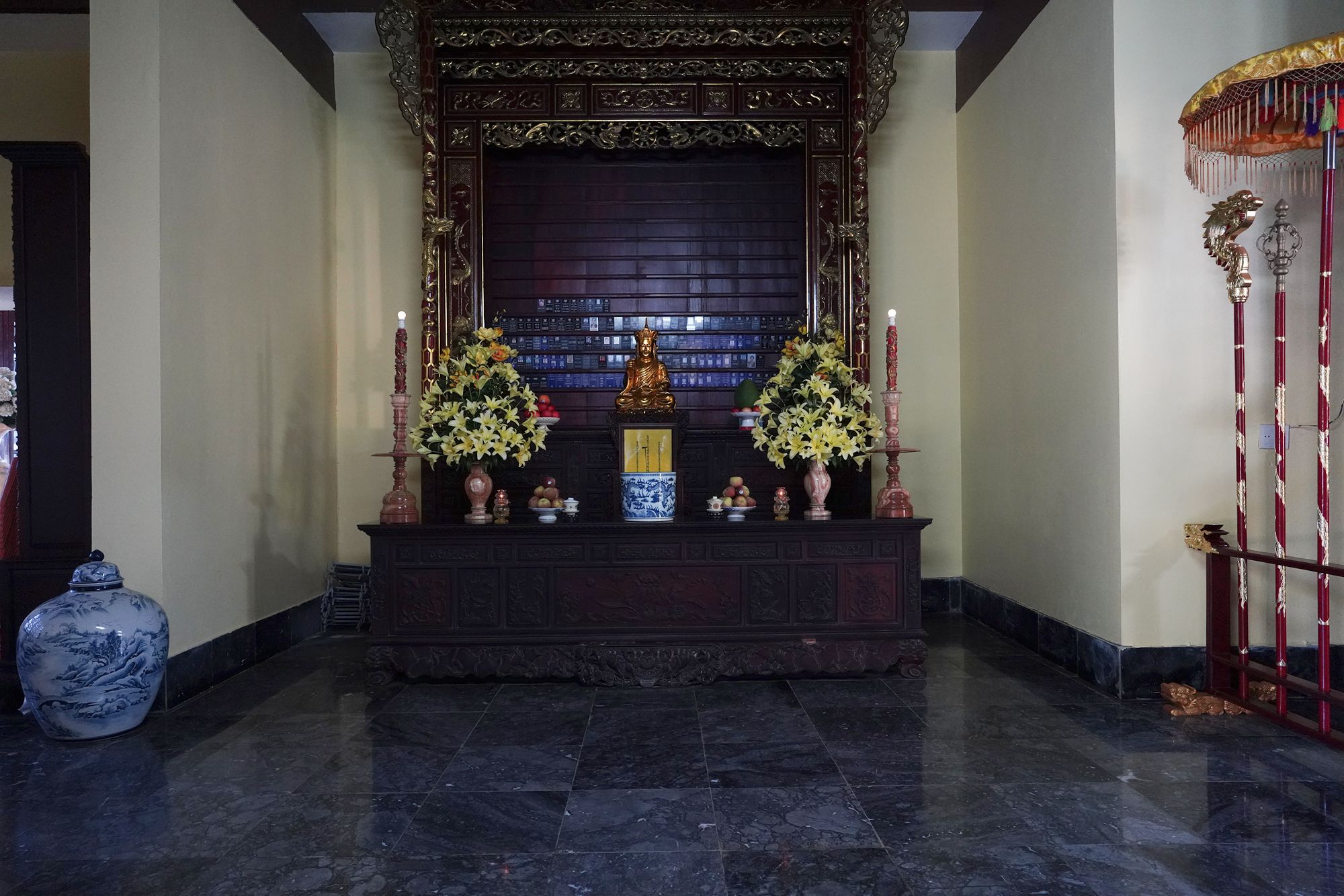
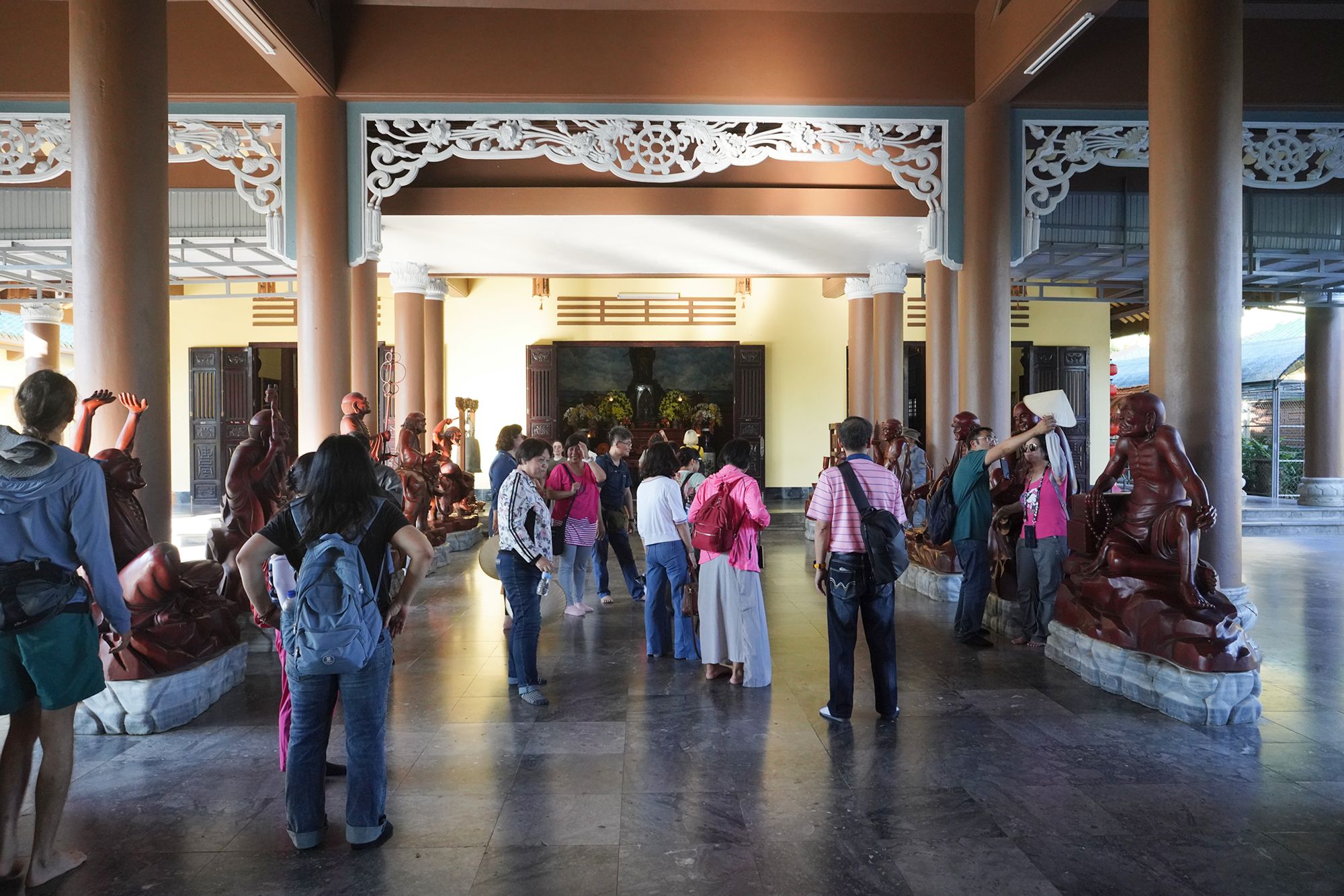
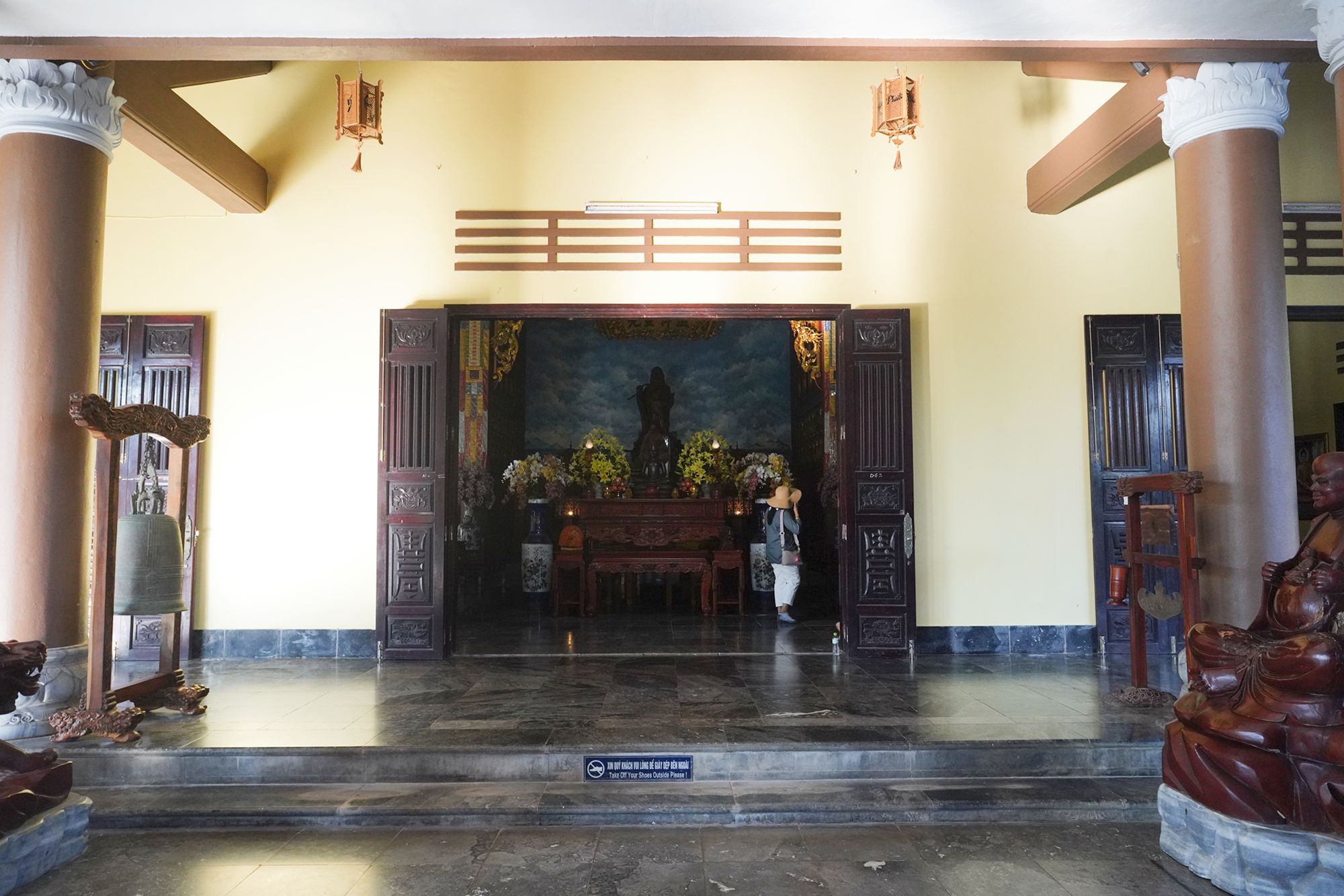
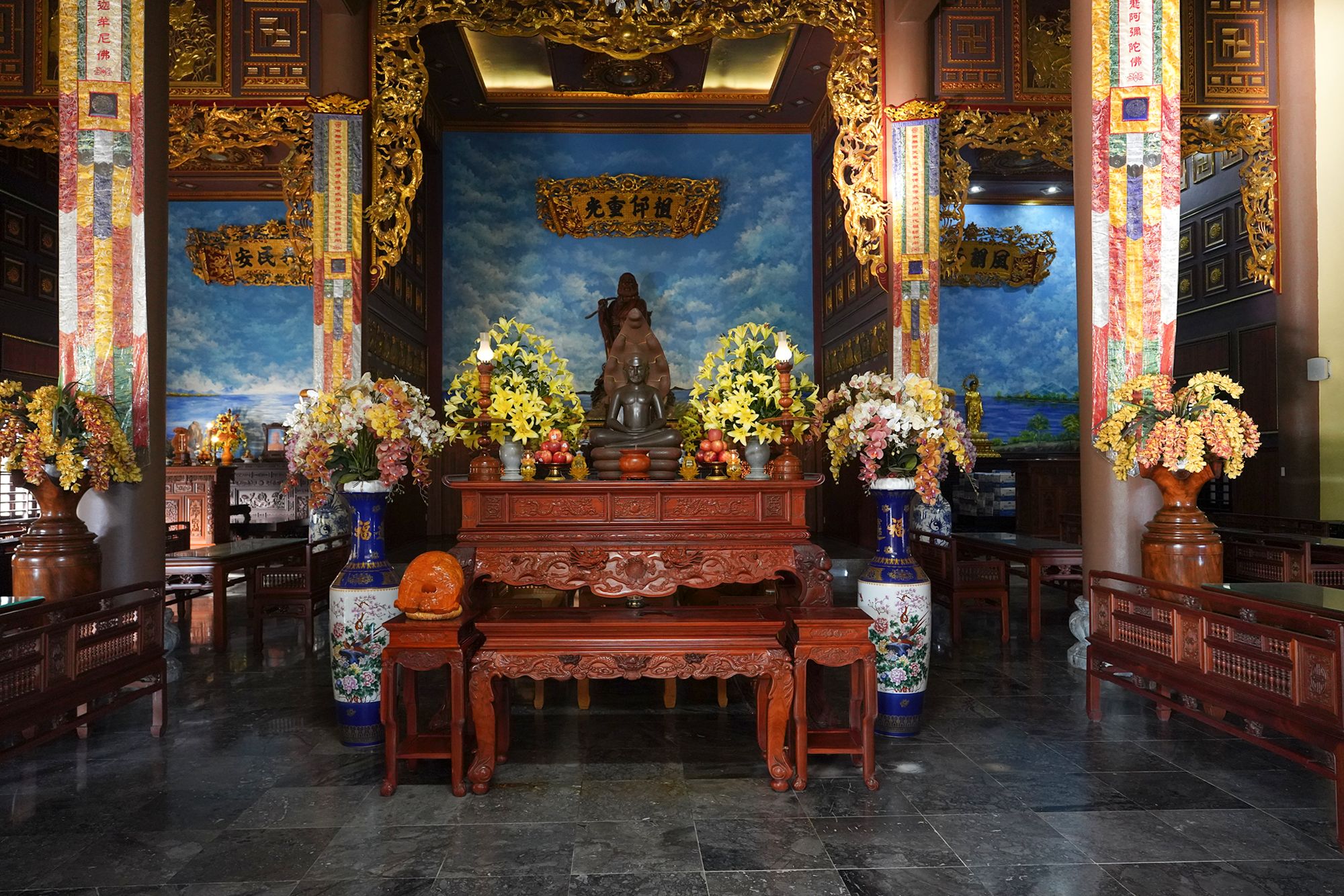
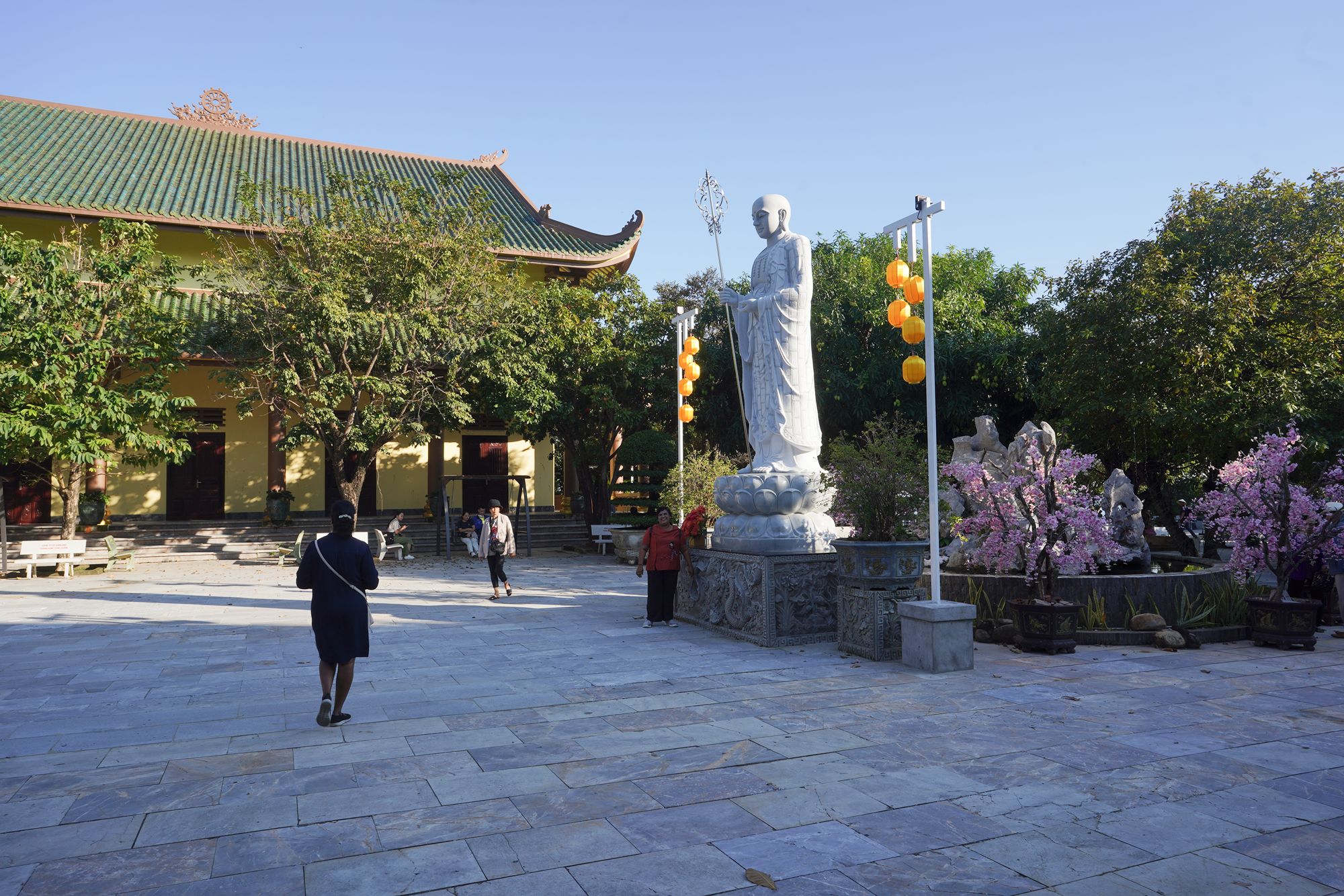
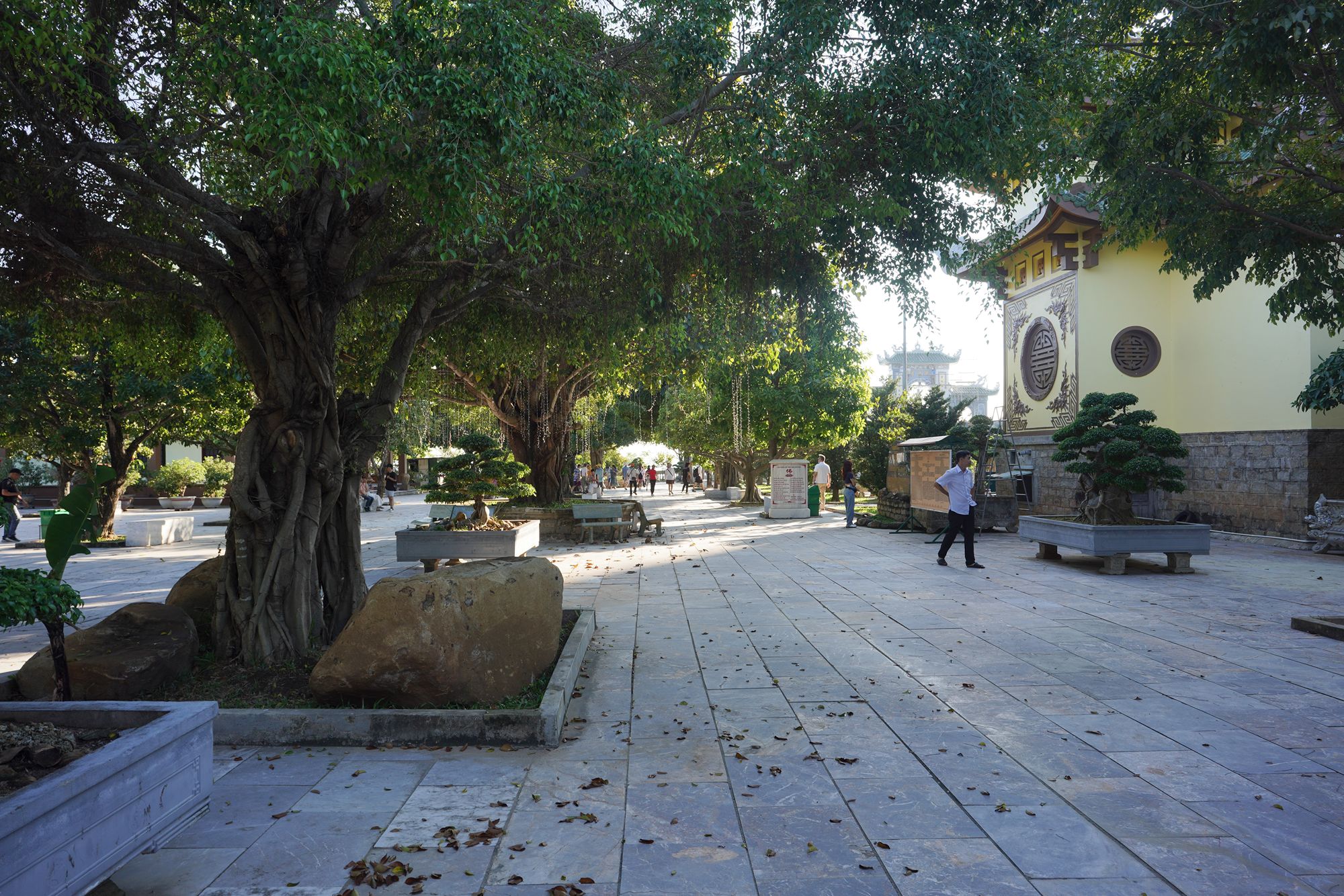
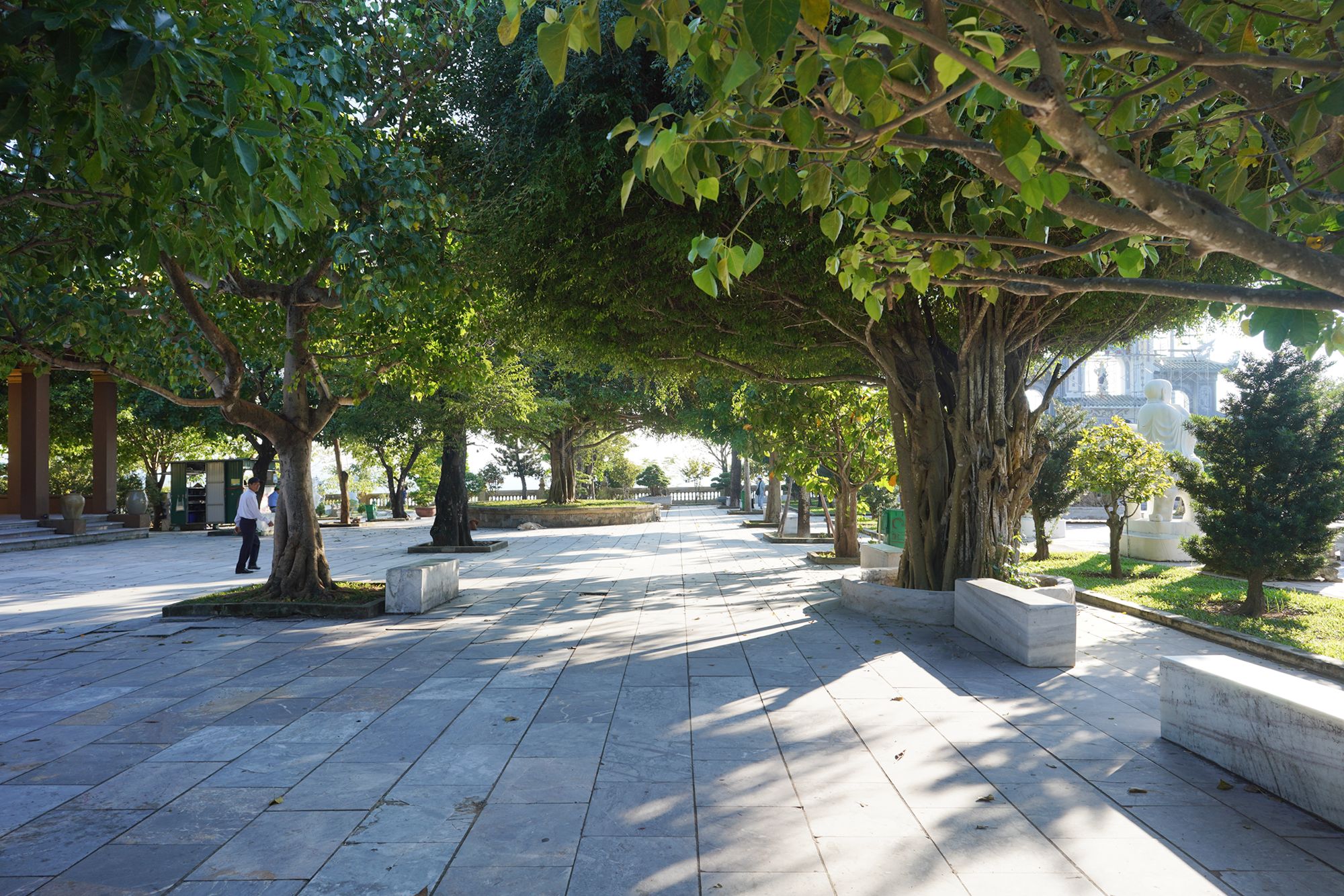
Another building resembling the one I just visited.
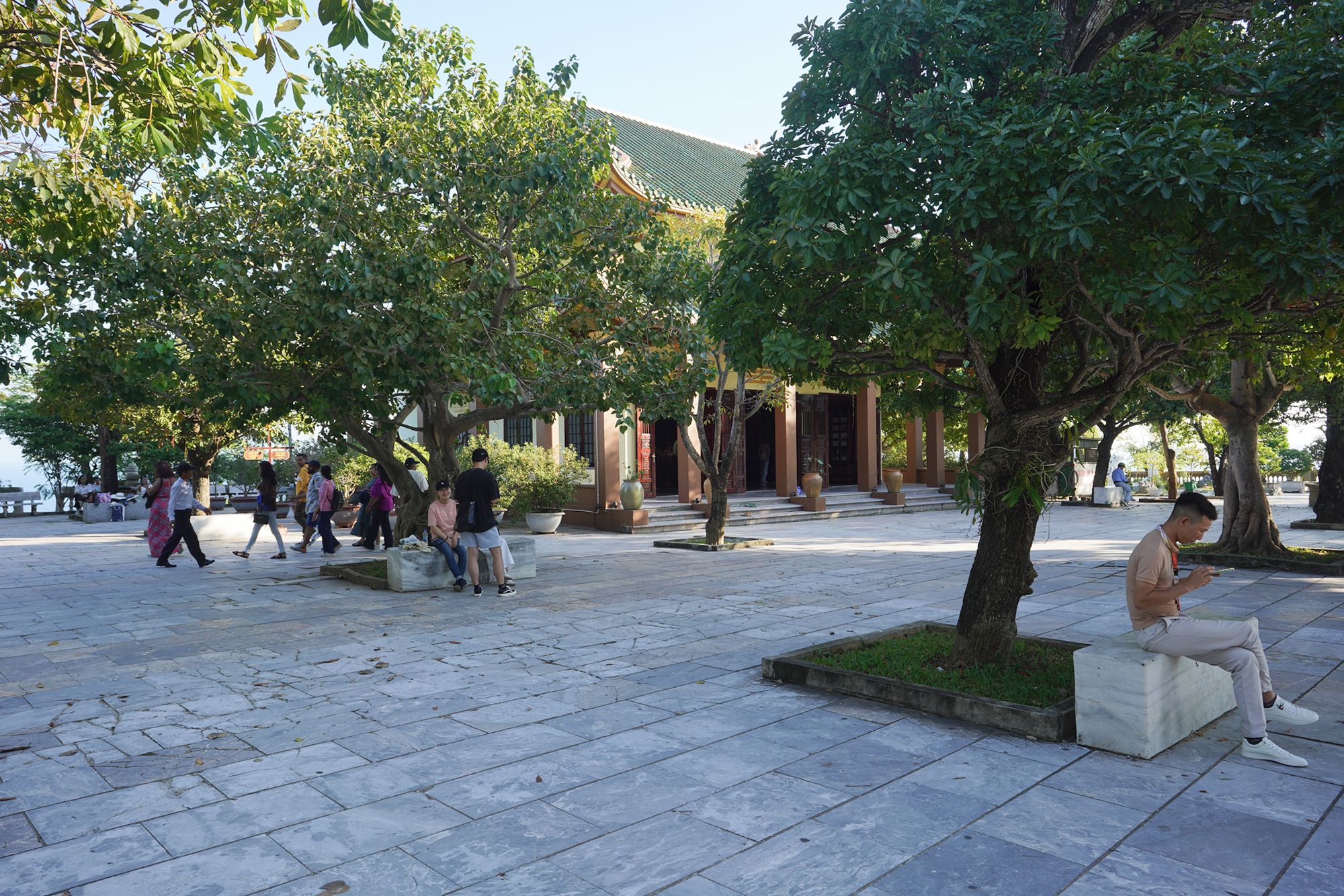
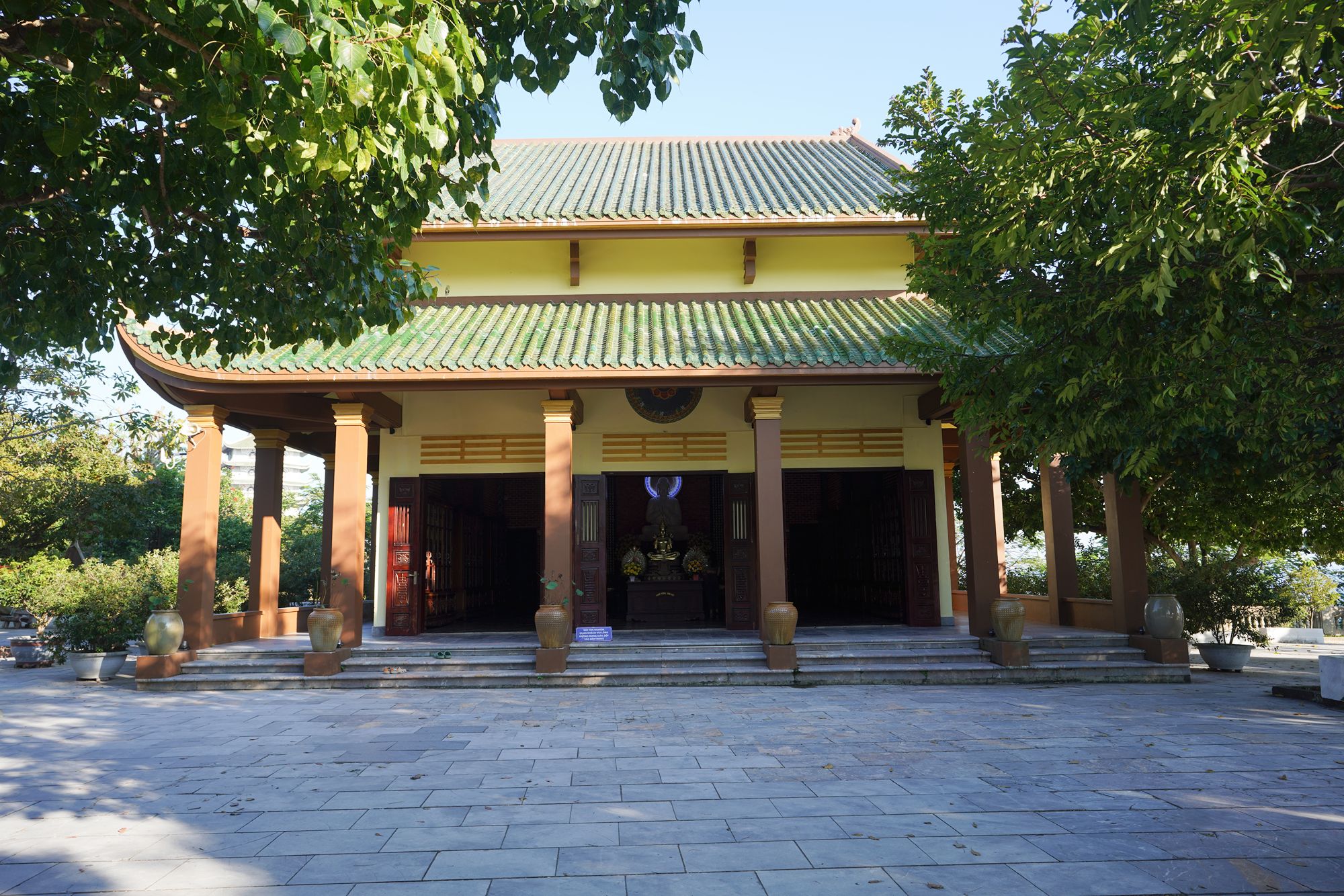
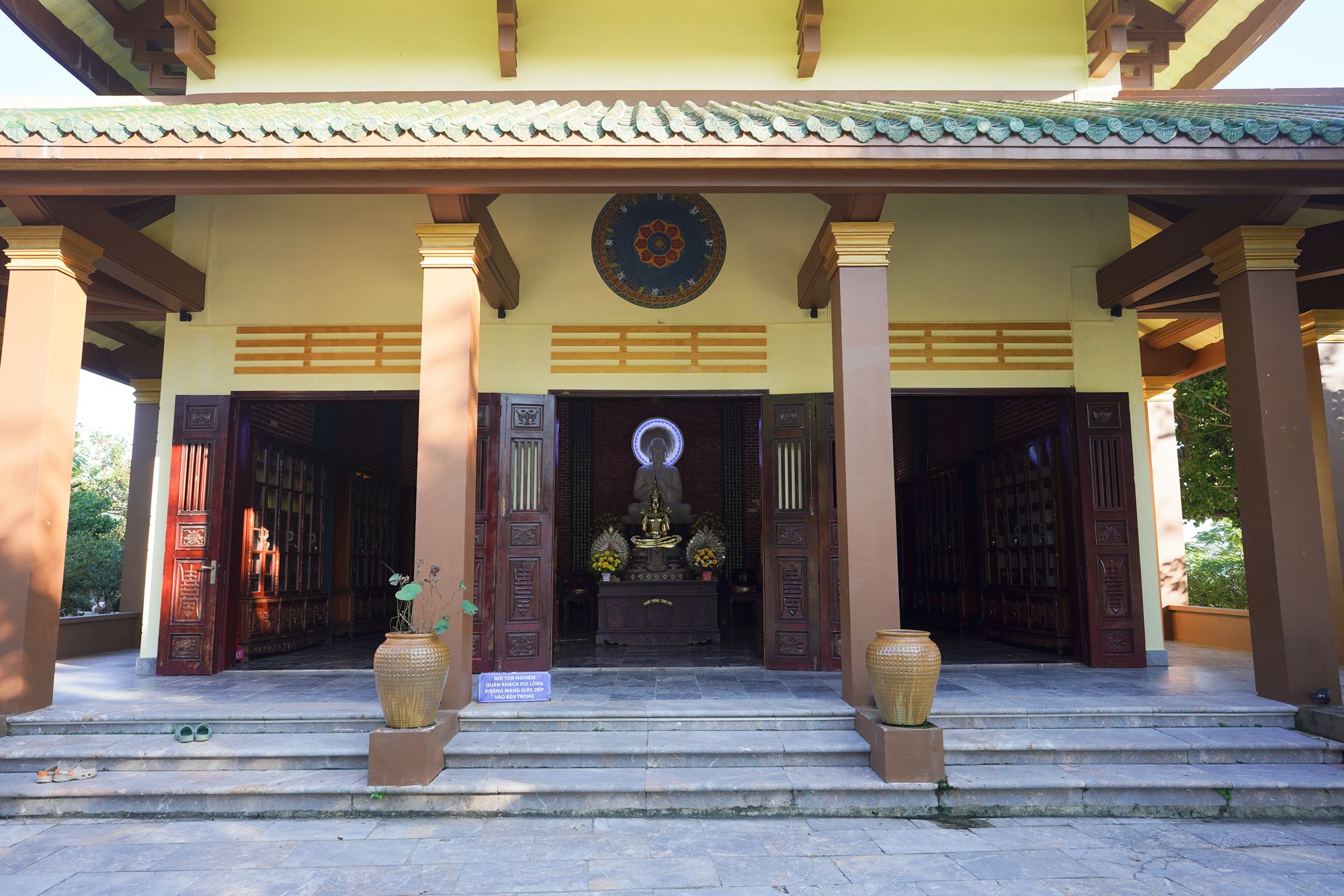
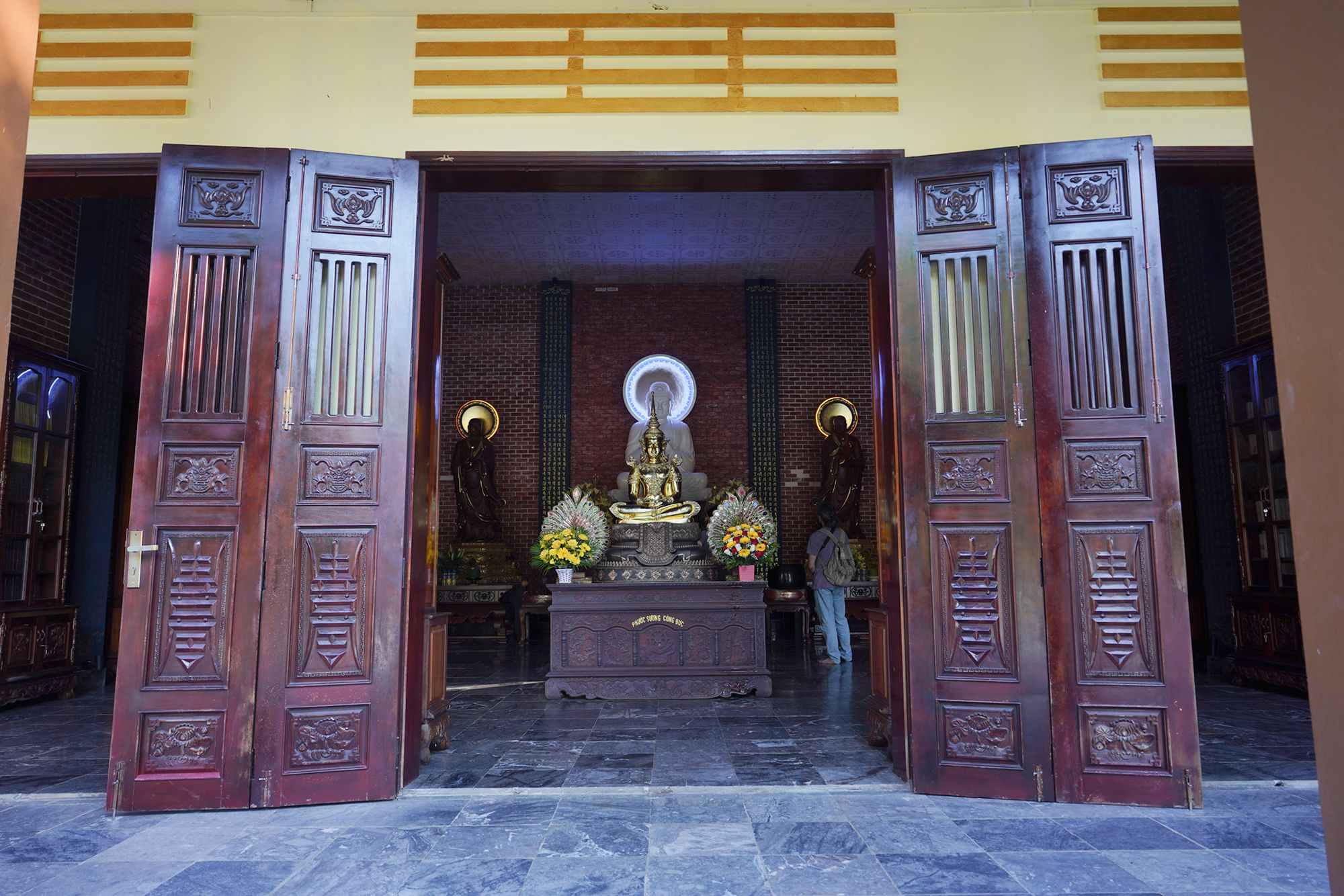
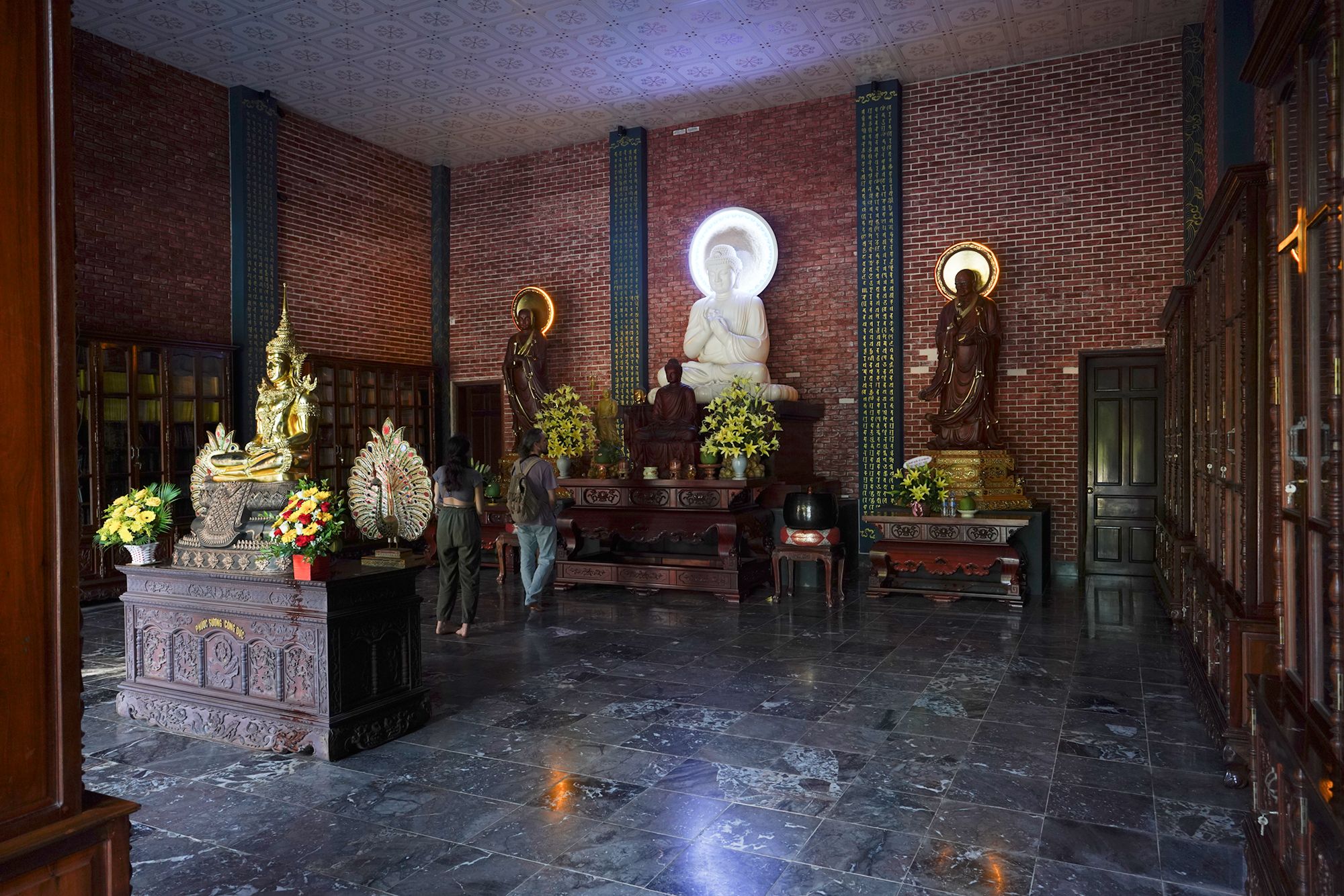
The temple is situated on the picturesque Sơn Trà Peninsula, offering excellent views of the city, lush mountains, and the expansive coastline.
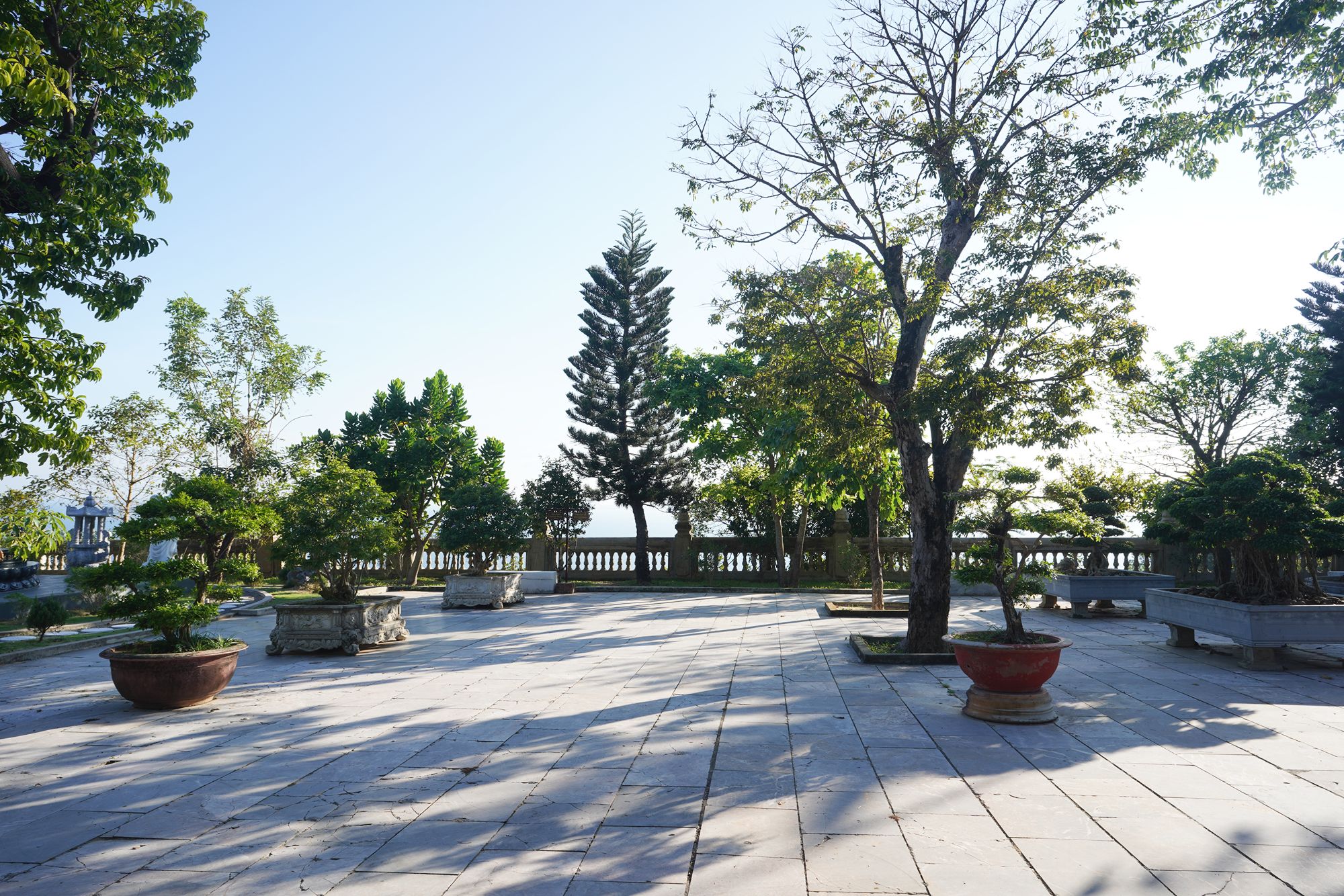
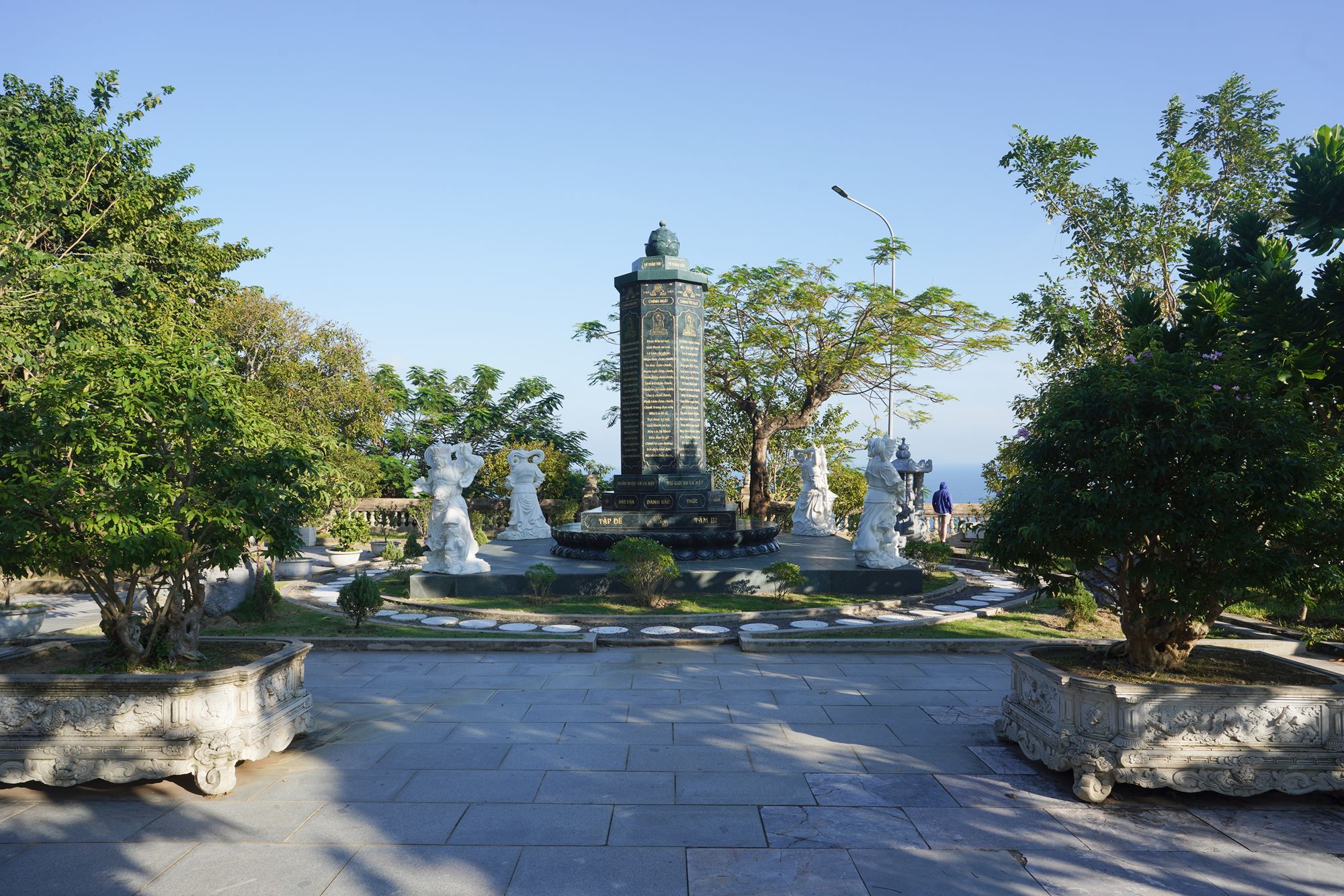
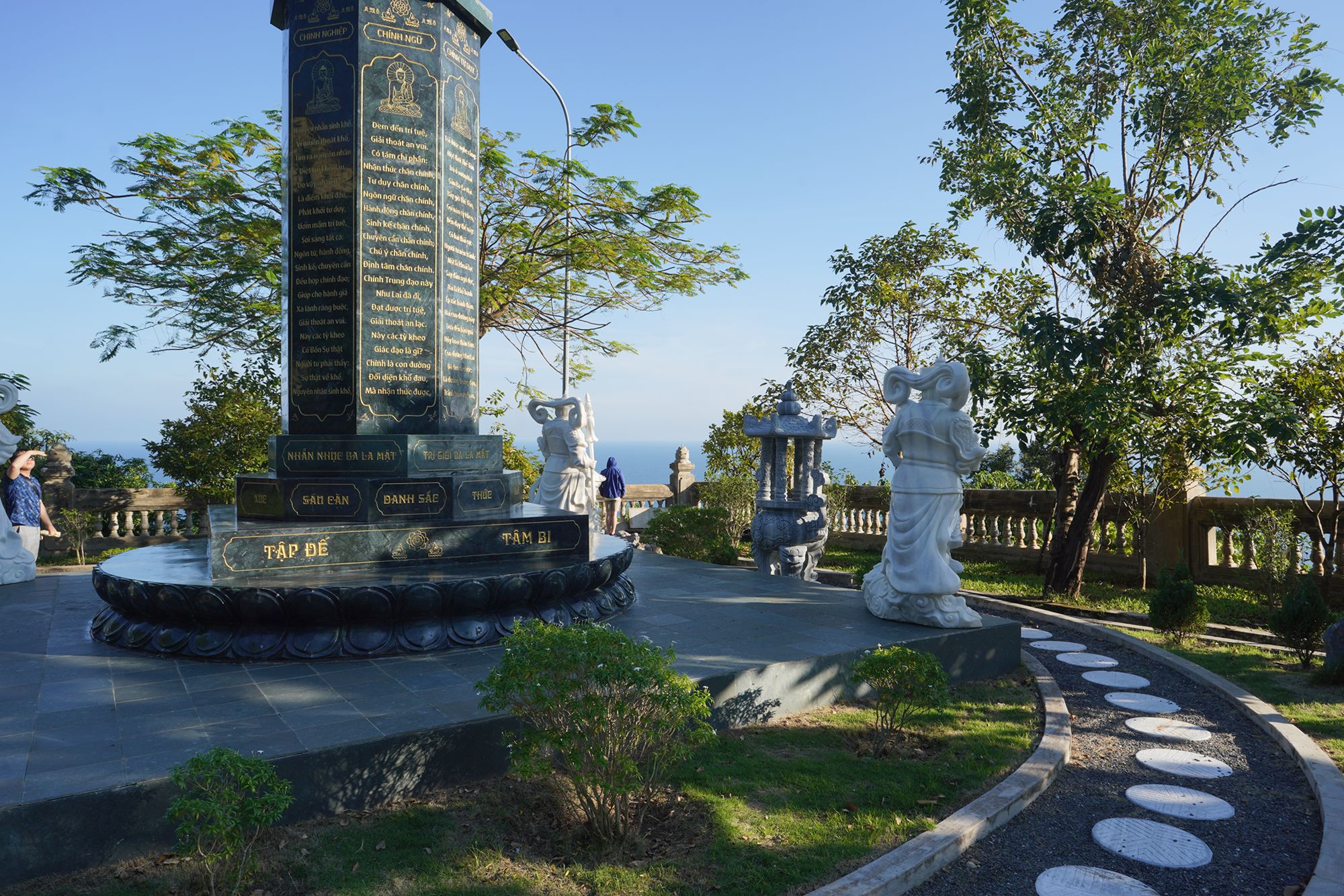
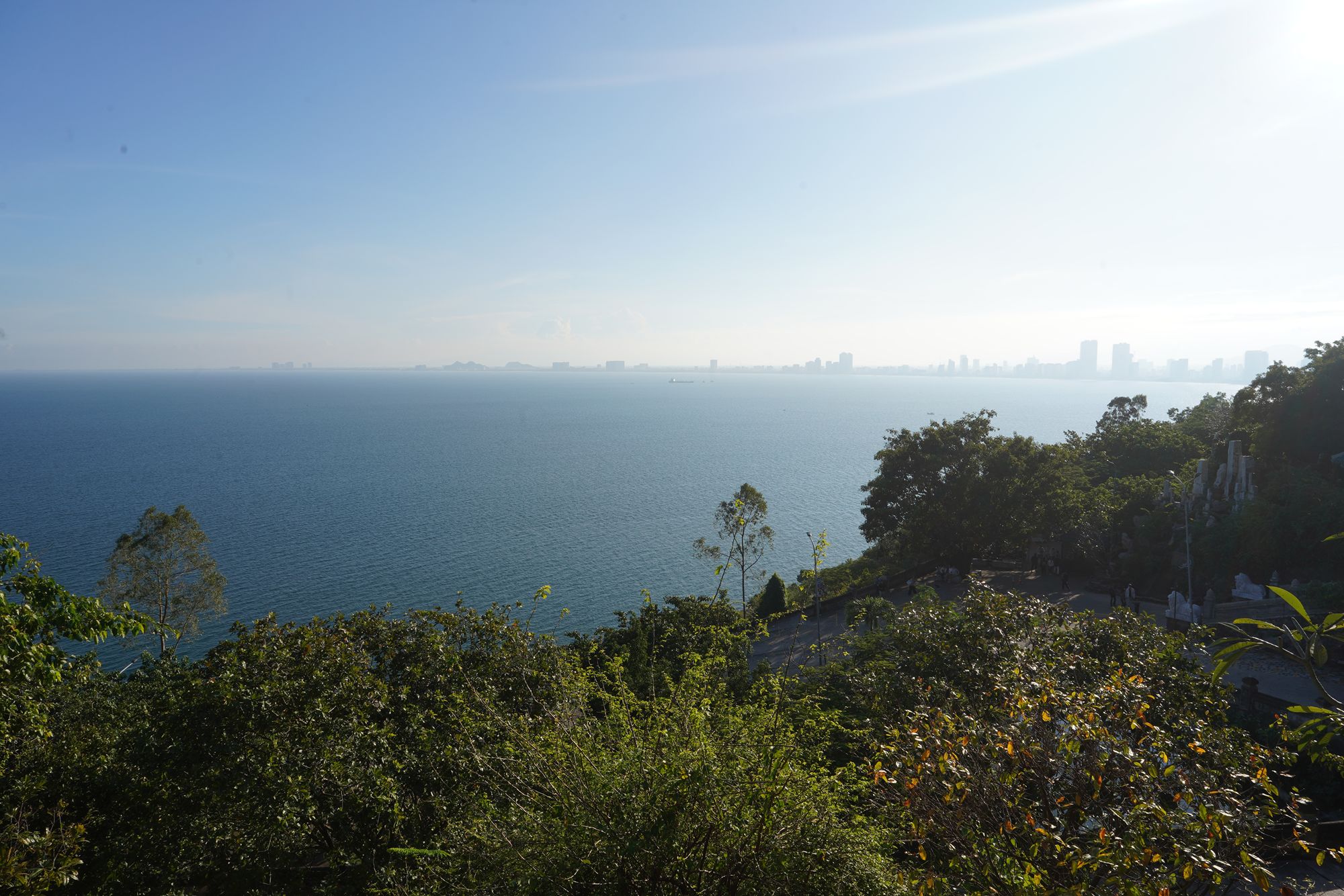
I turned around and looked back
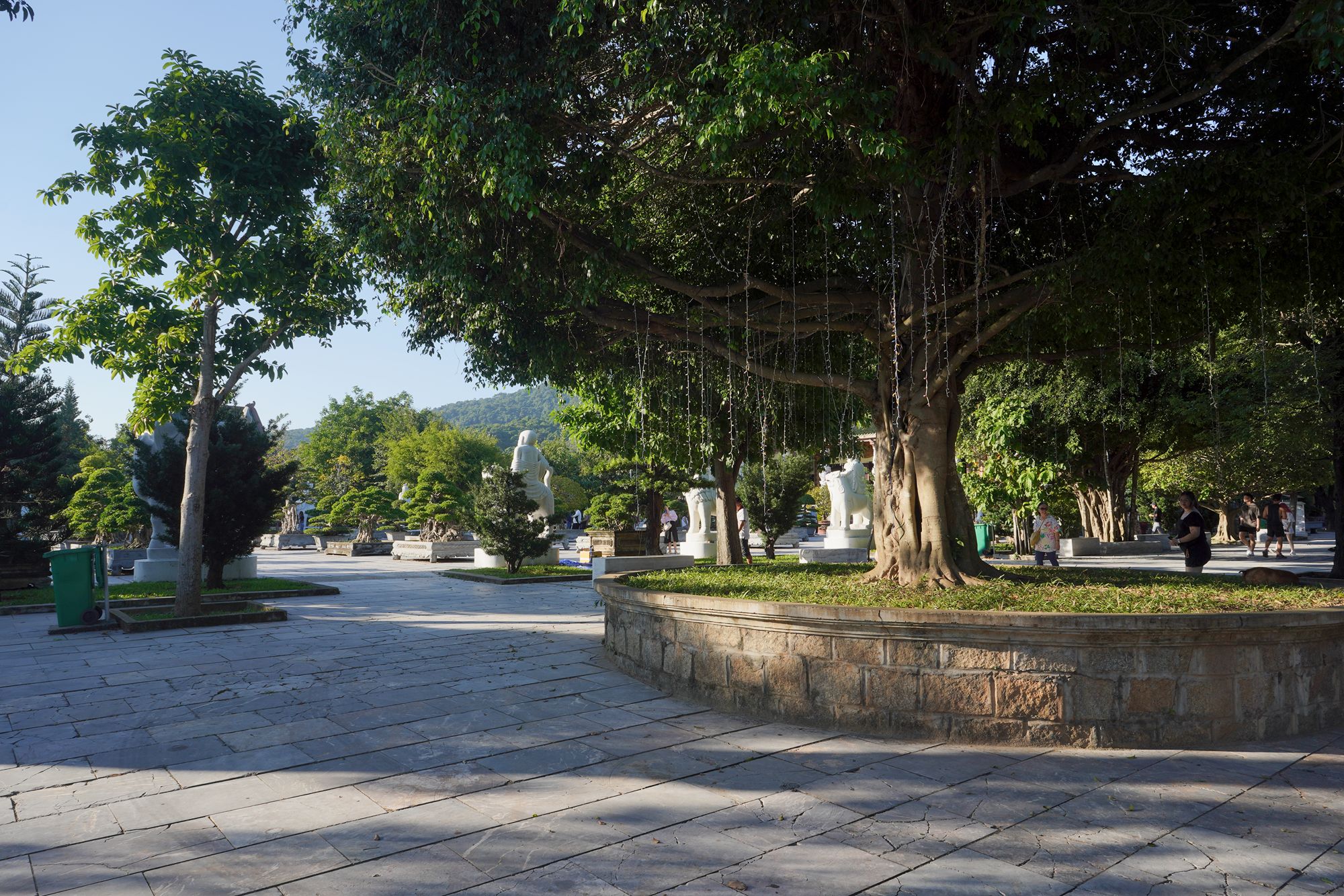
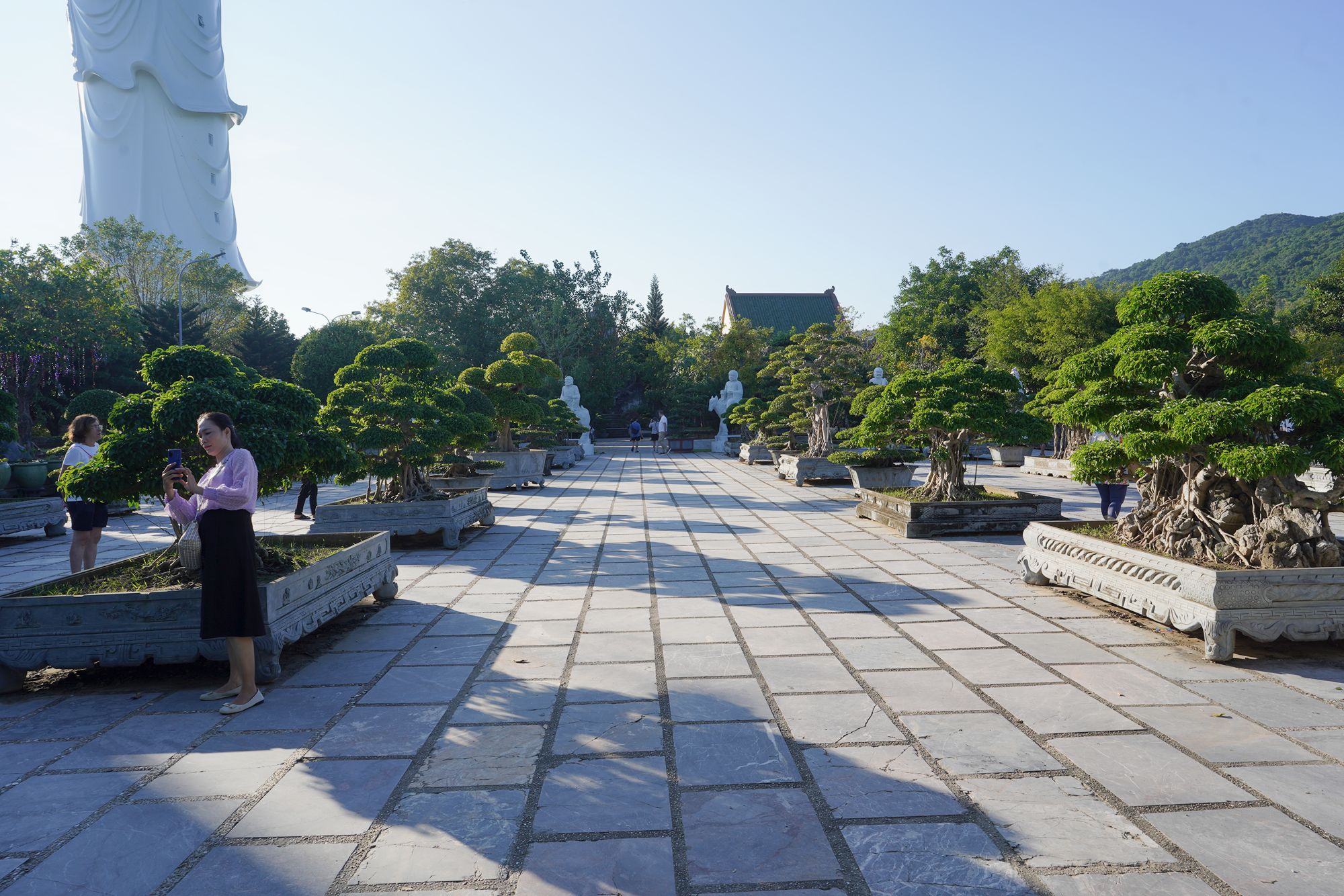
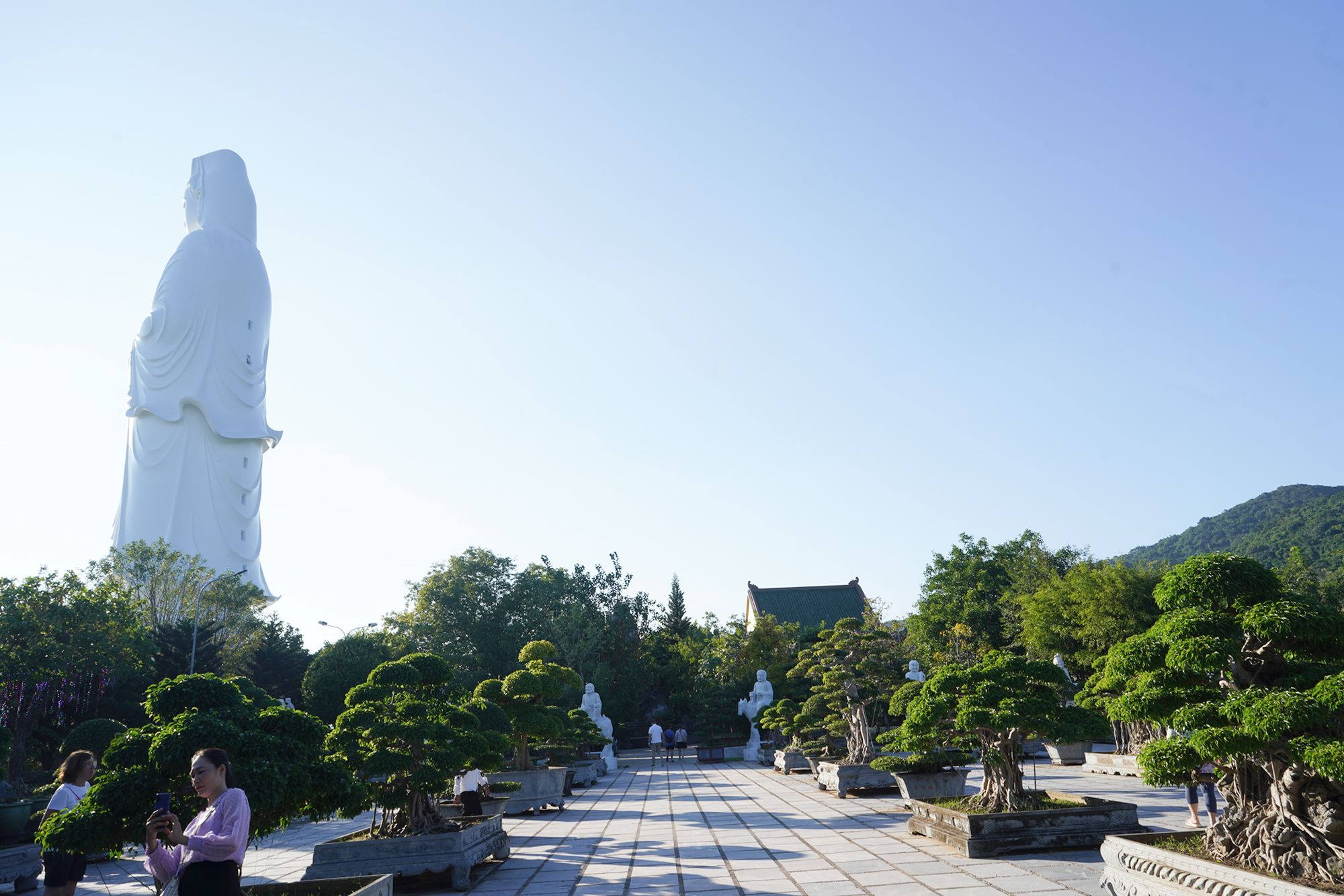
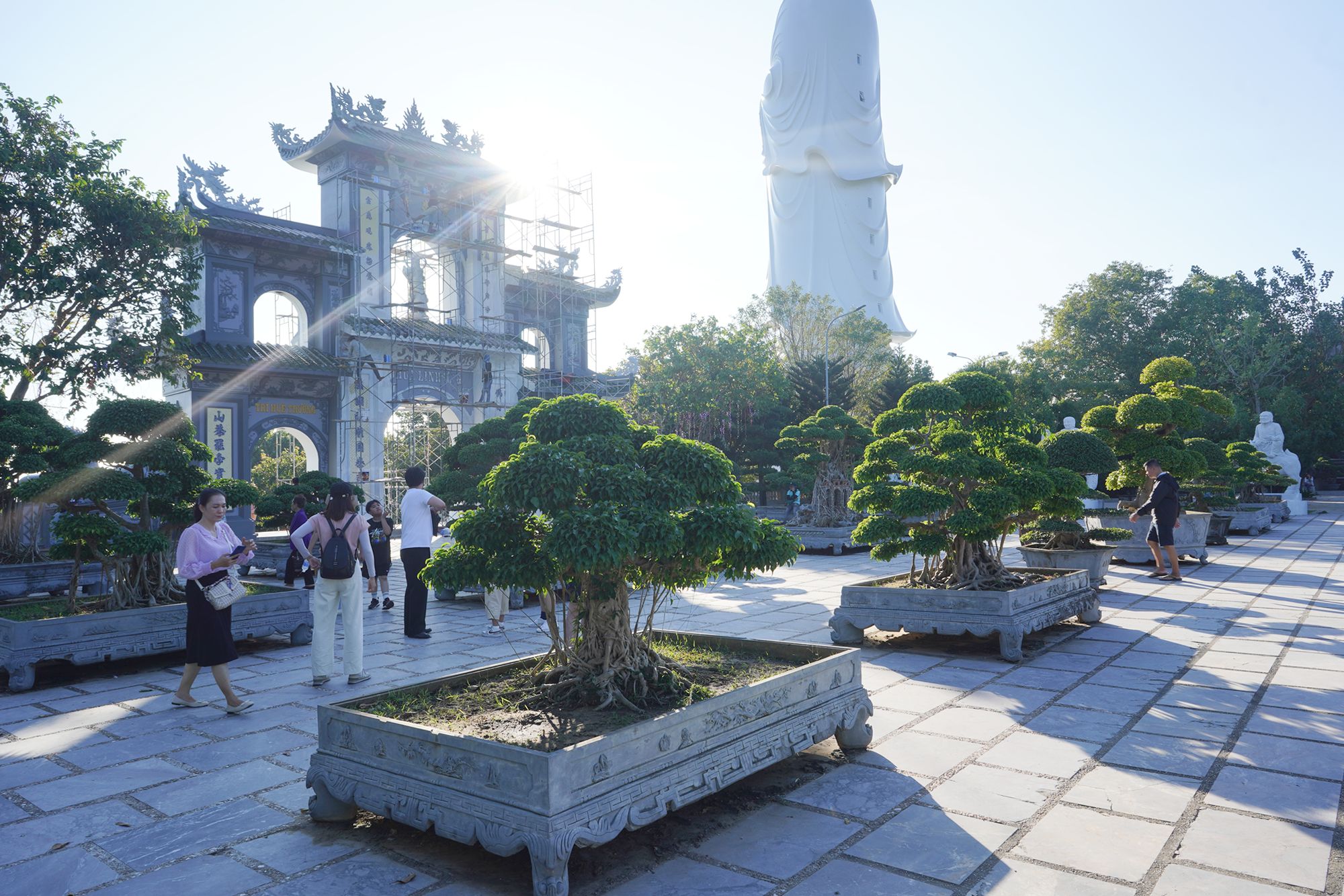
The main courtyard of the temple. The temple complex spans a vast area and features traditional Vietnamese Buddhist architecture. Its intricate pagodas, statues, and meticulously landscaped gardens are harmoniously arranged, creating a serene and spiritual atmosphere.
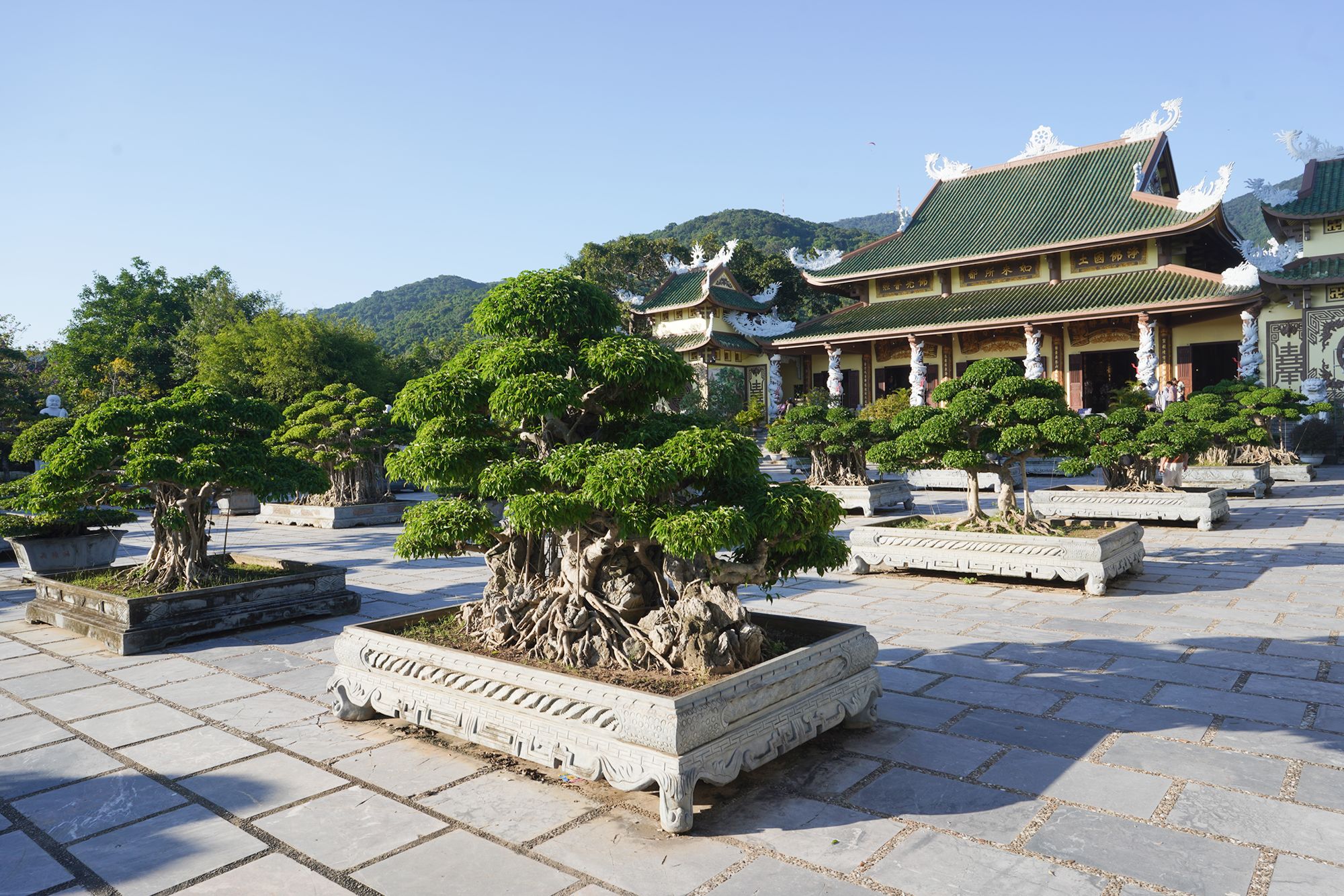
The main entrance gate building of the temple, currently undergoing maintenance work.
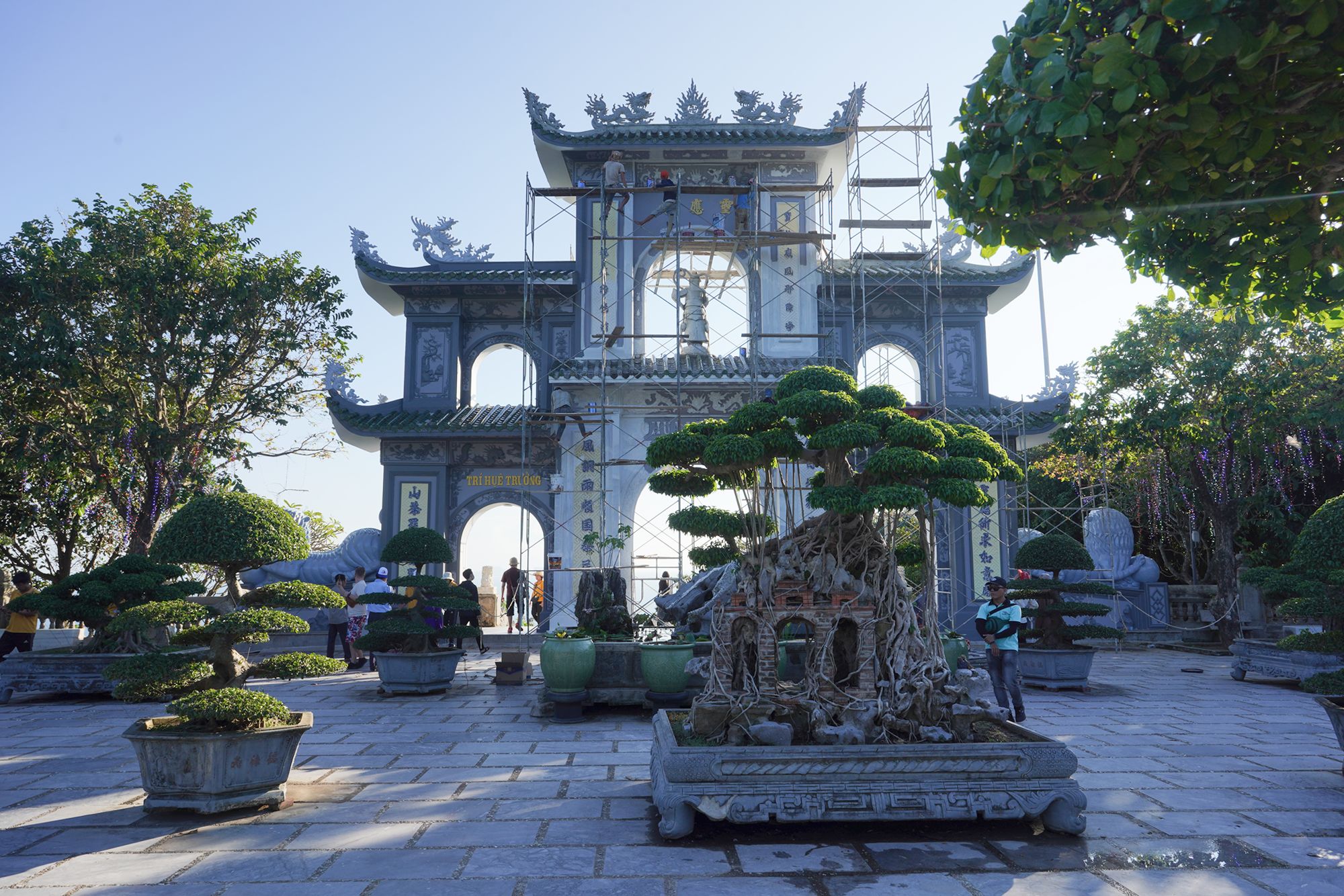
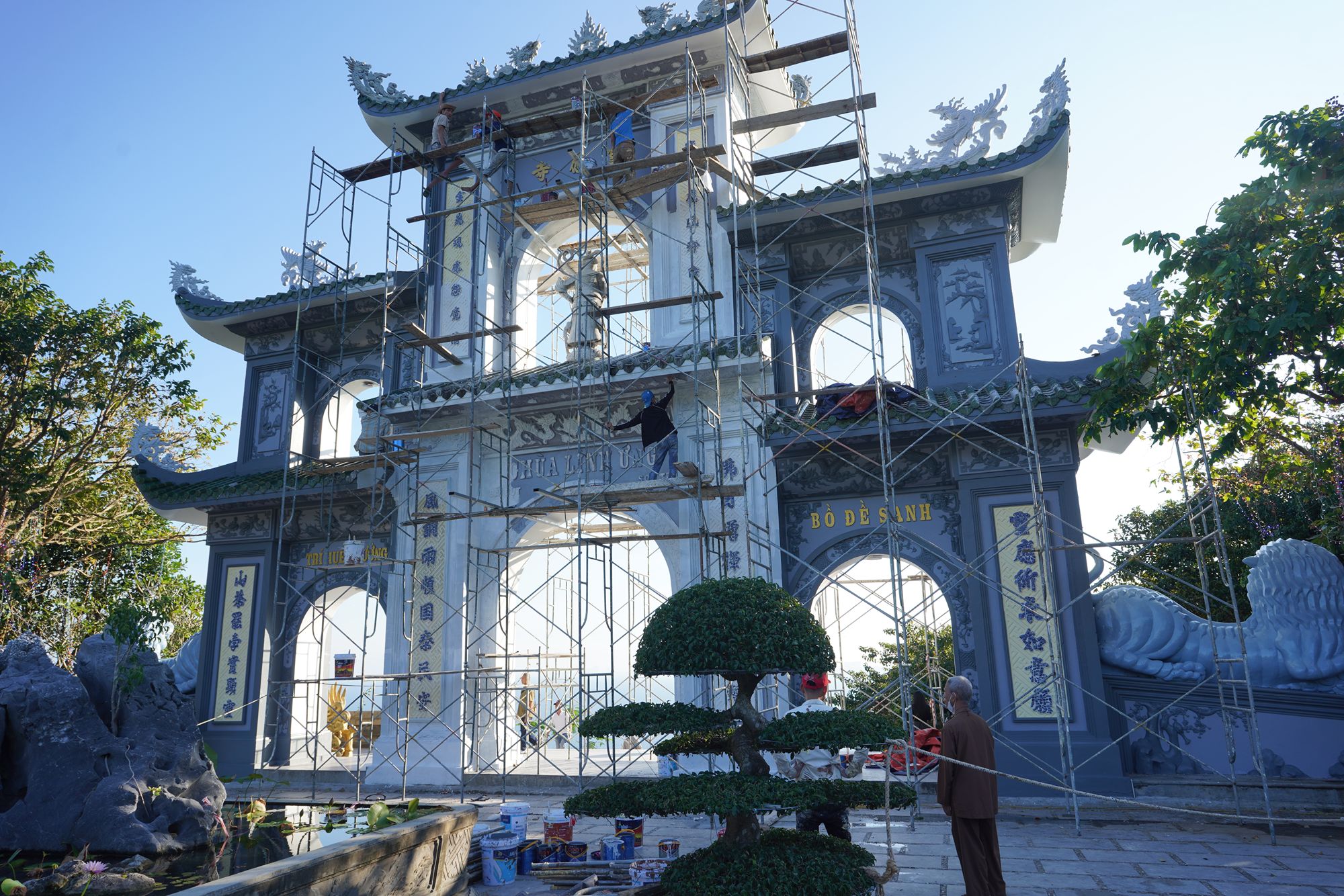
The temple is particularly famous for its 67-meter tall Lady Buddha statue, the tallest in Vietnam, which stands as a symbol of peace and compassion and can be seen from various parts of Da Nang.
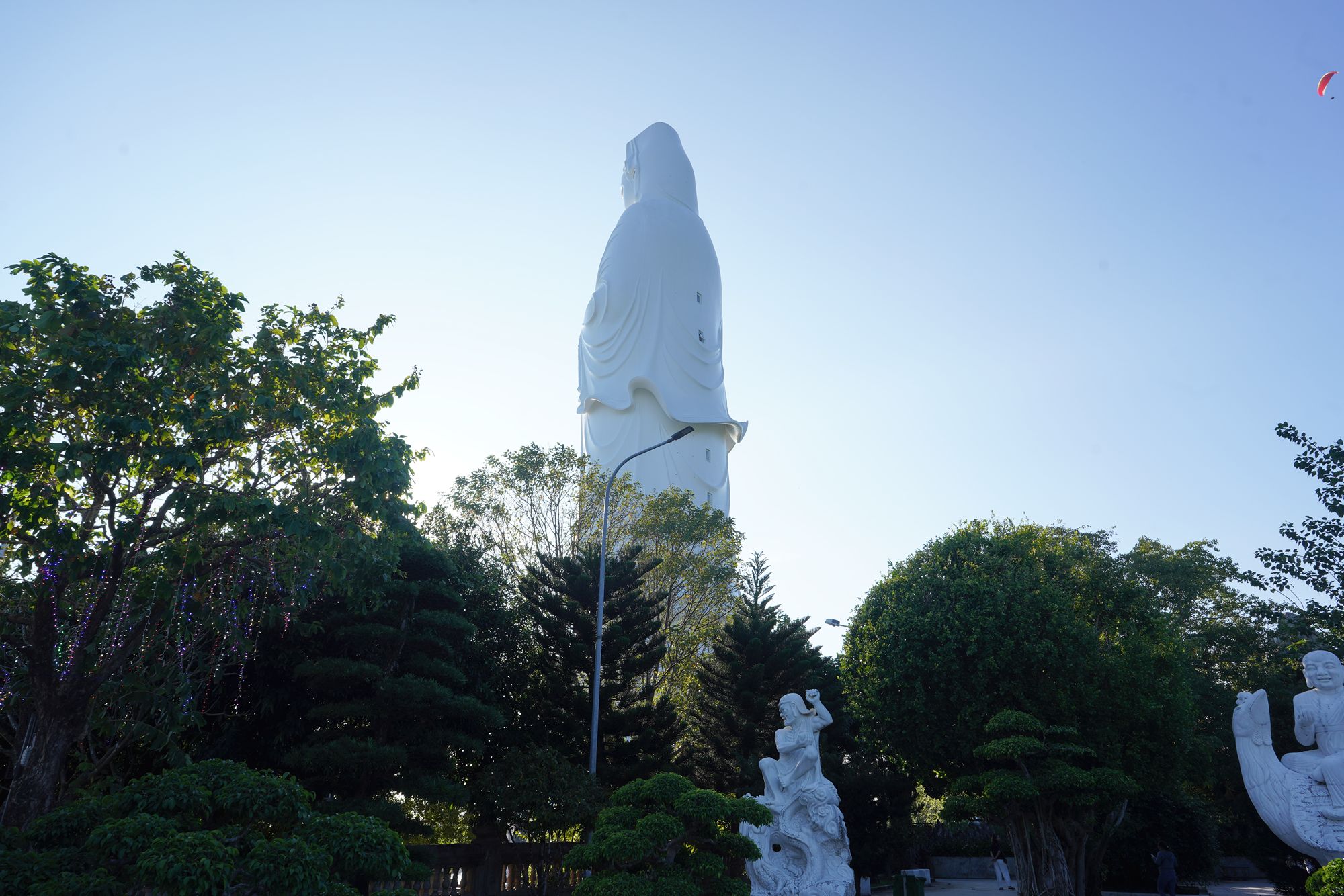
The main hall building in the temple
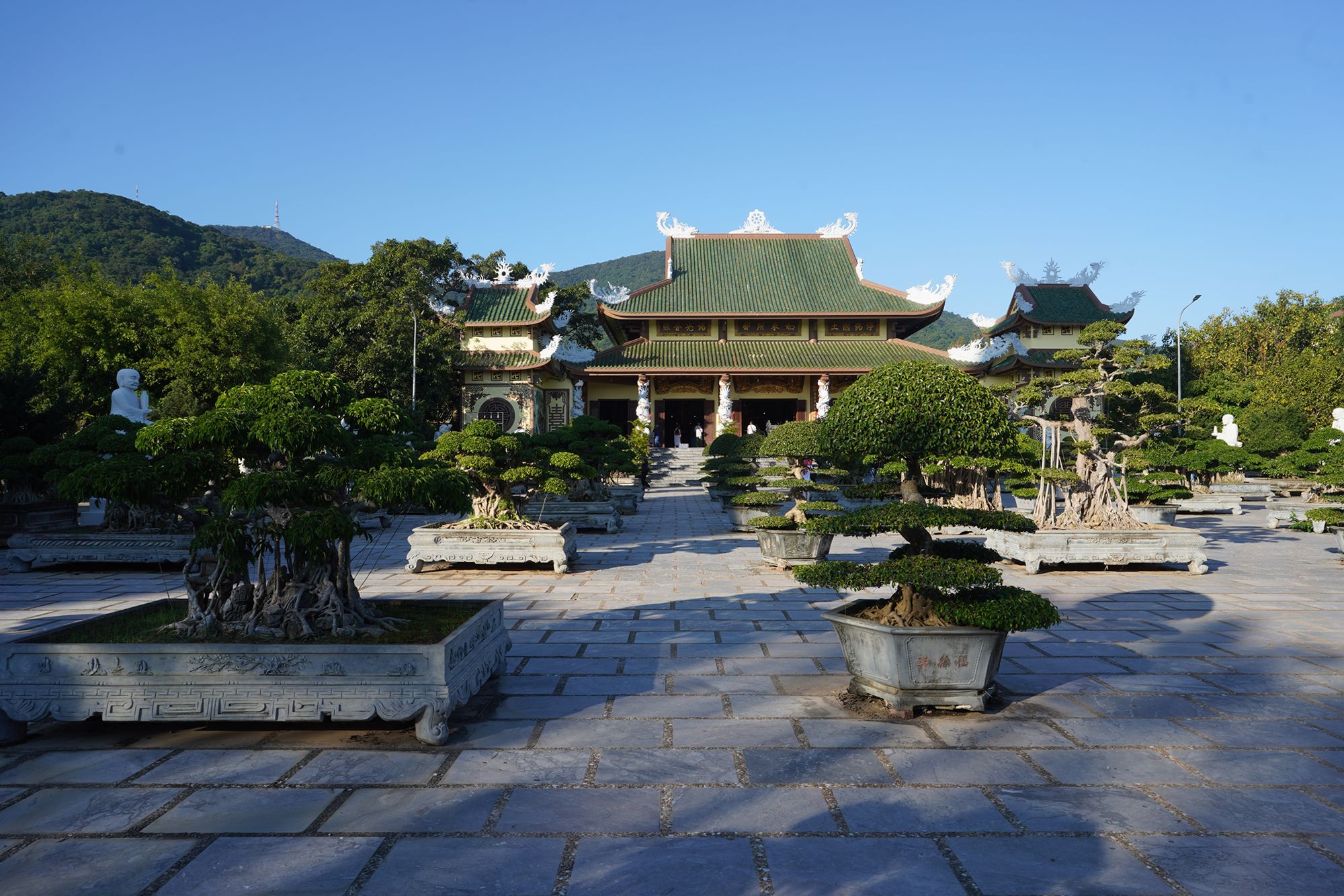
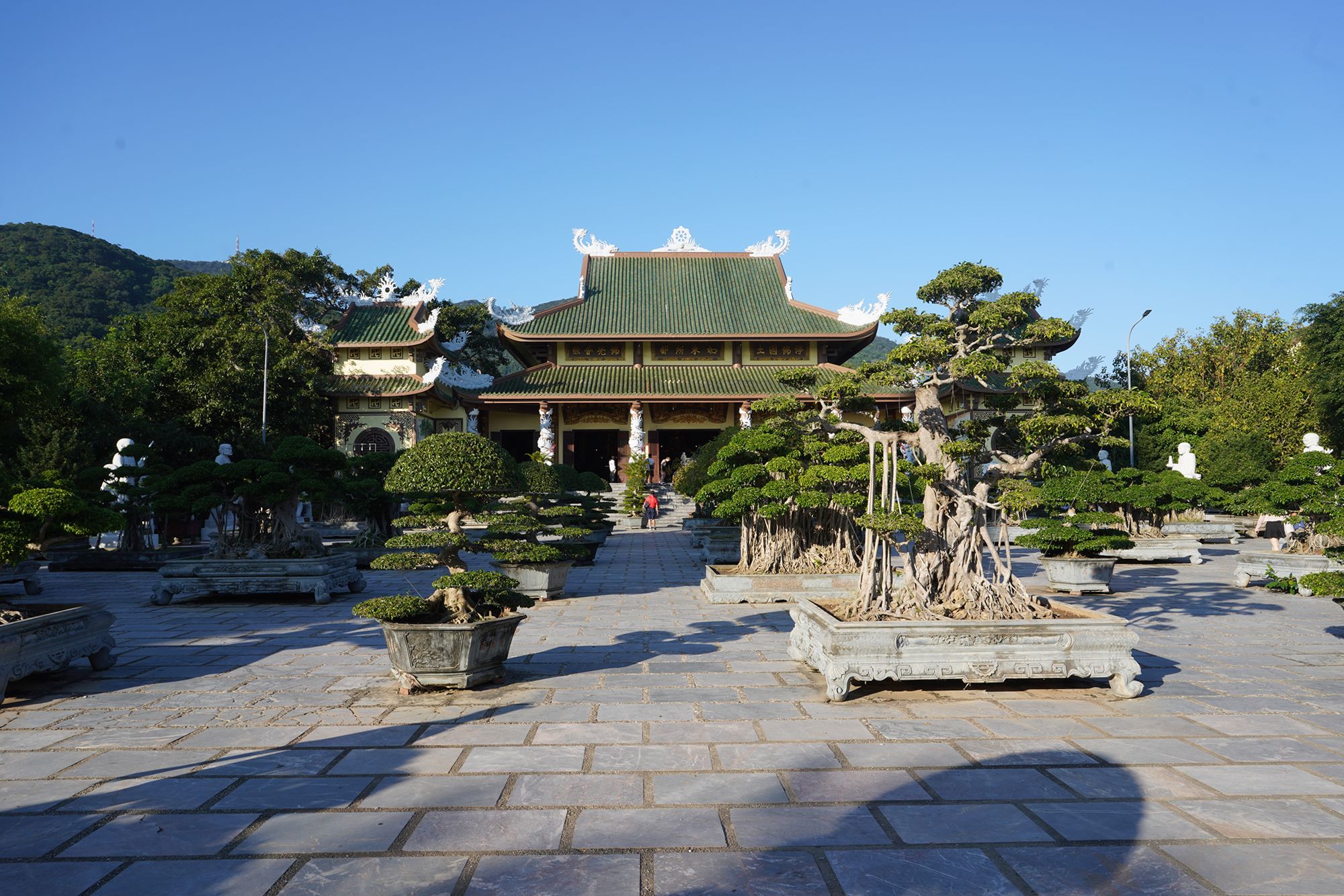
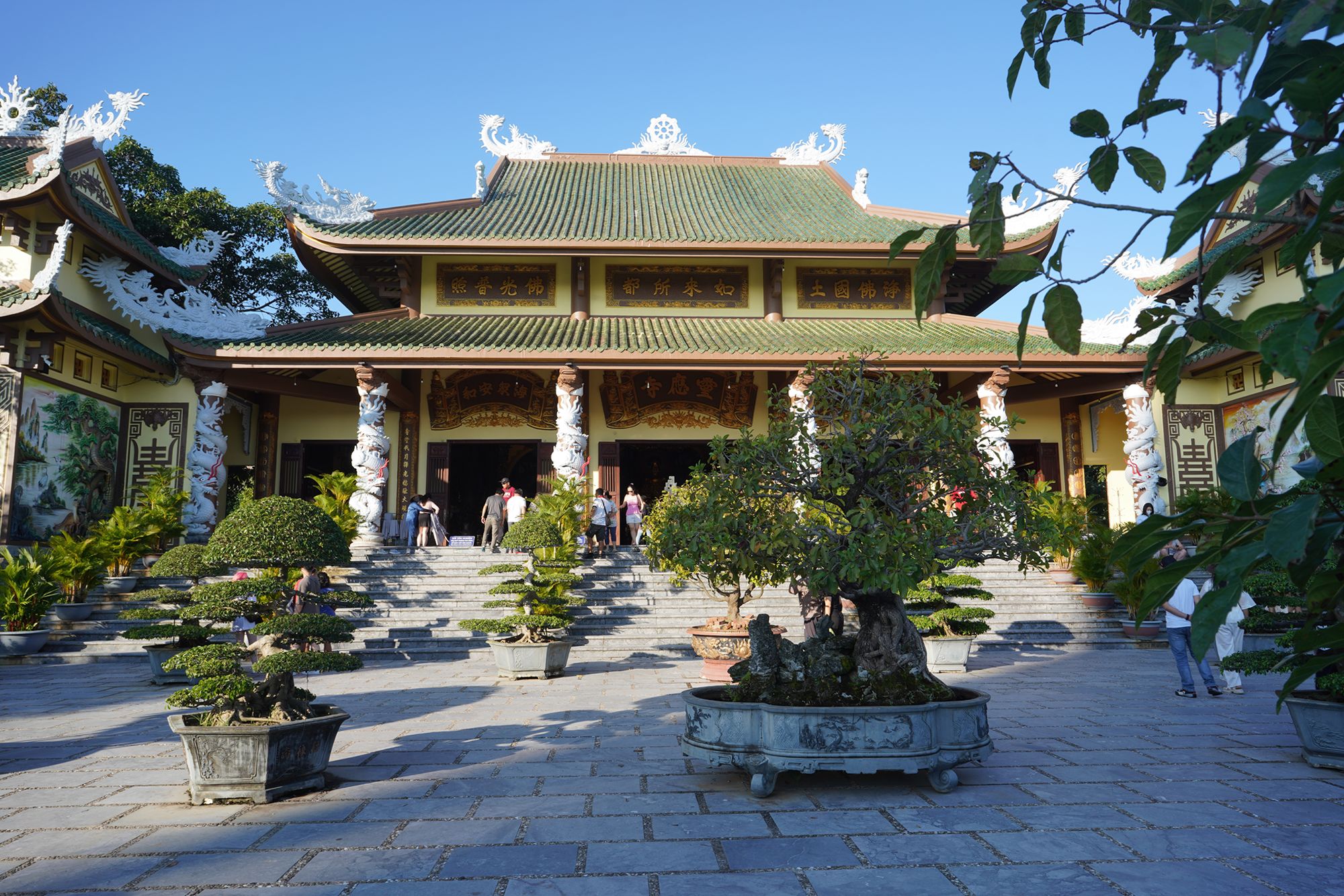
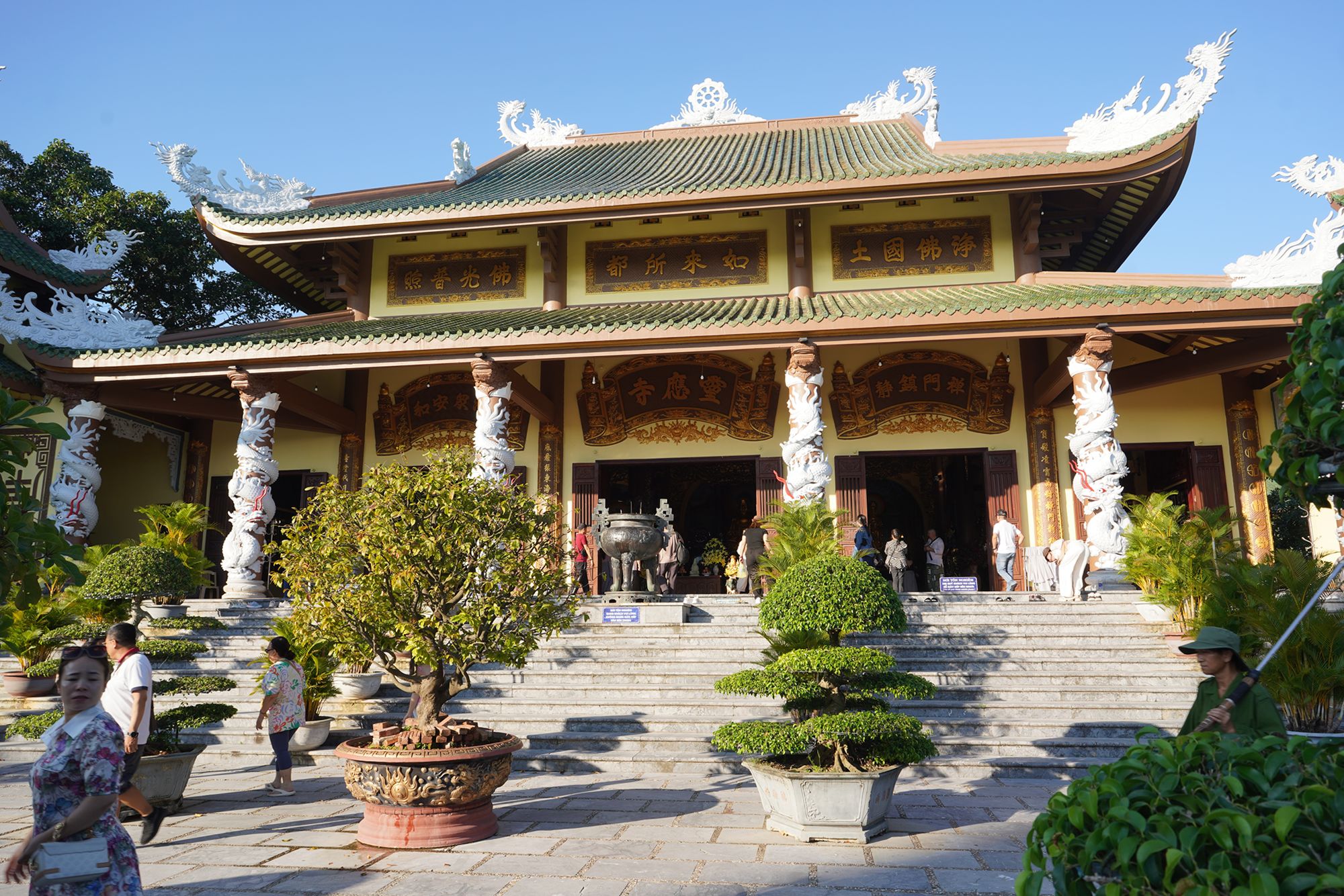
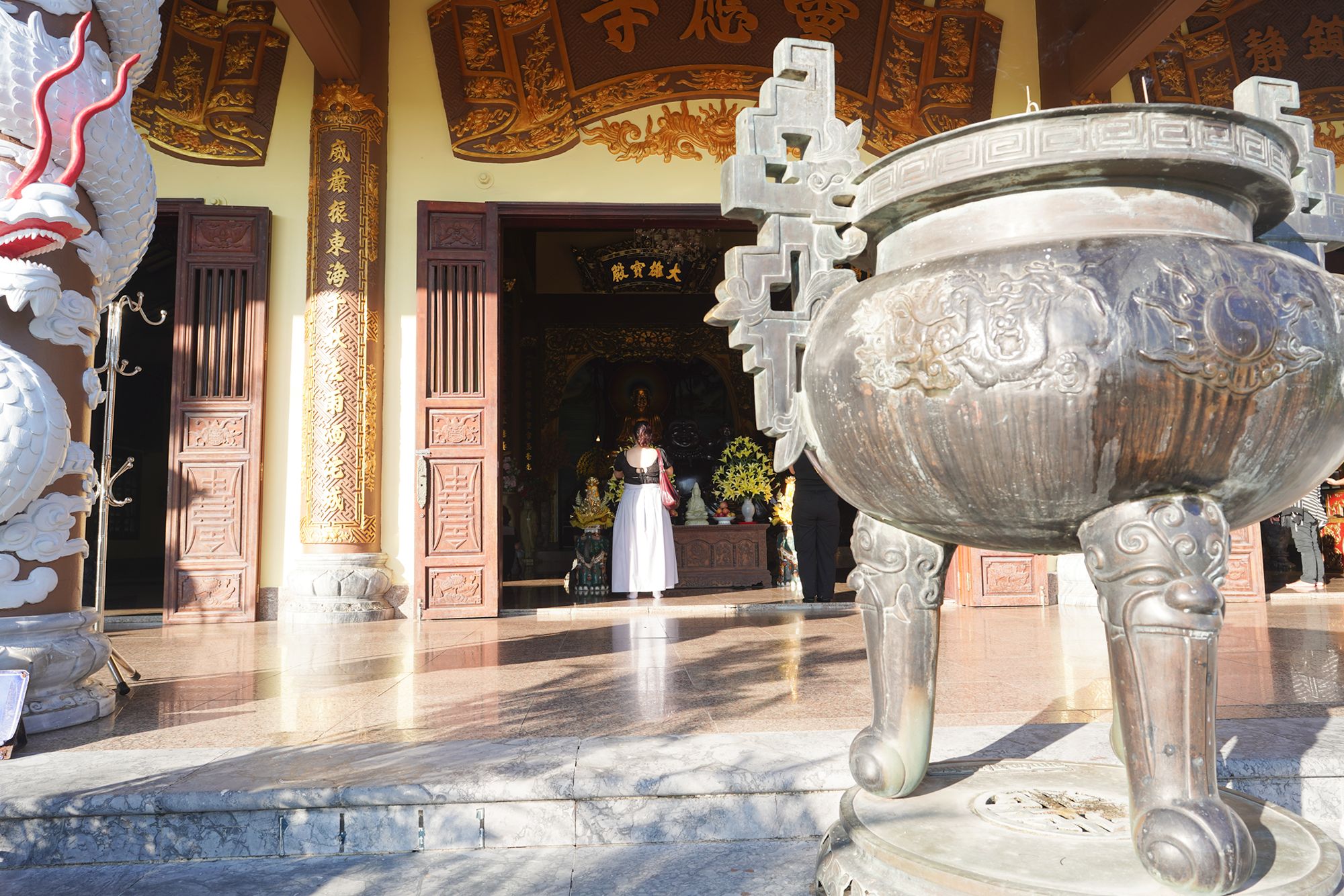
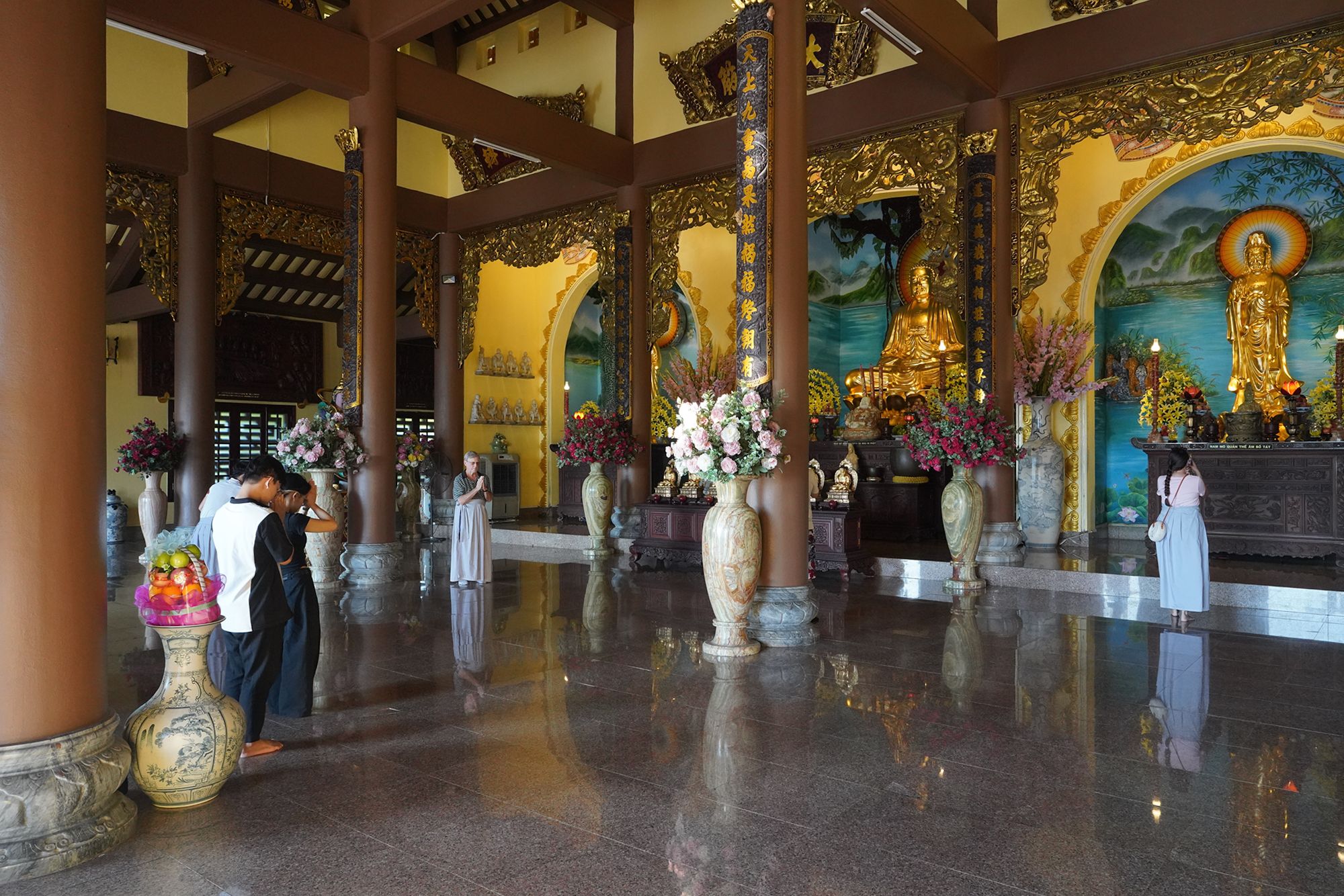
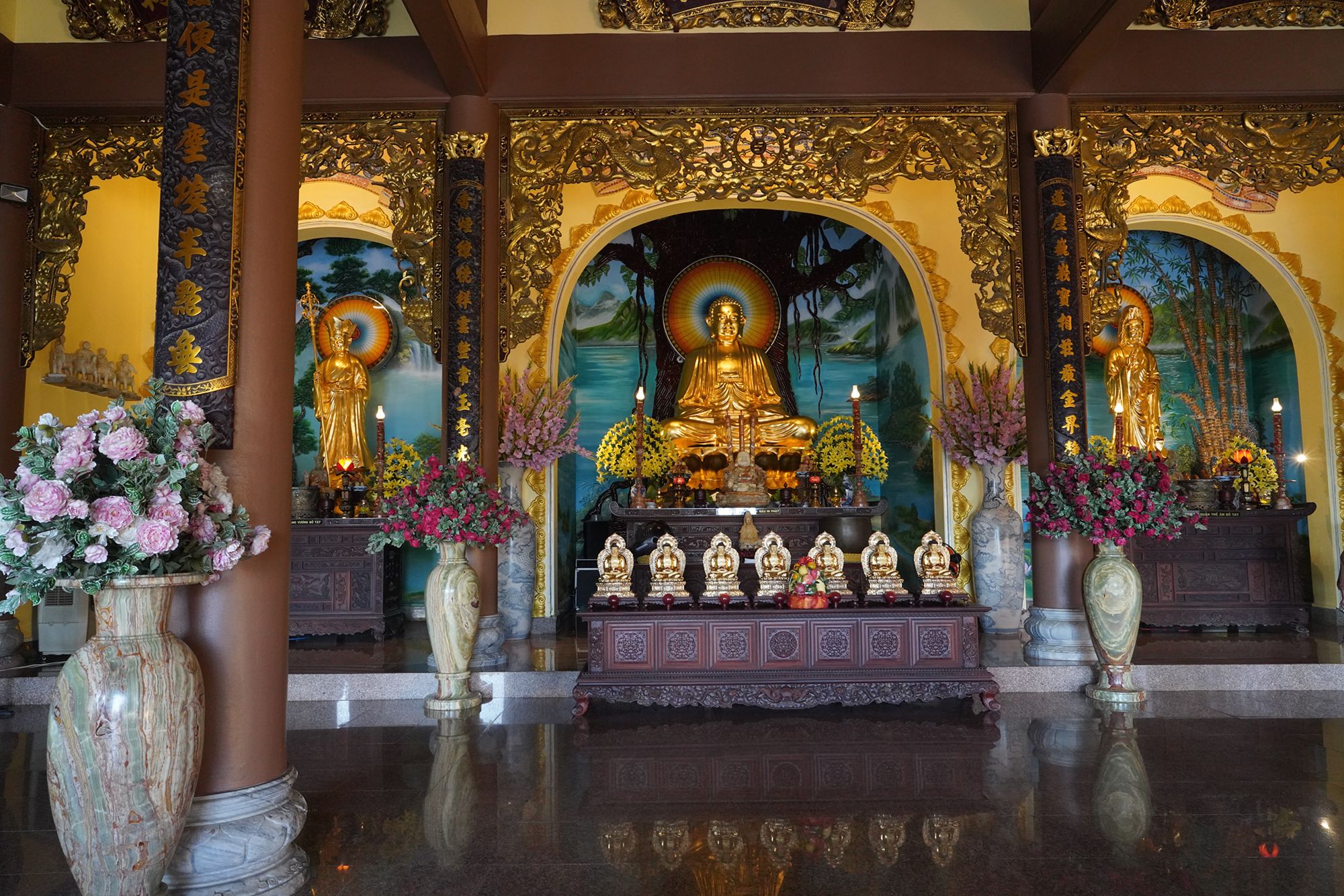
I turned around and looked behind me.
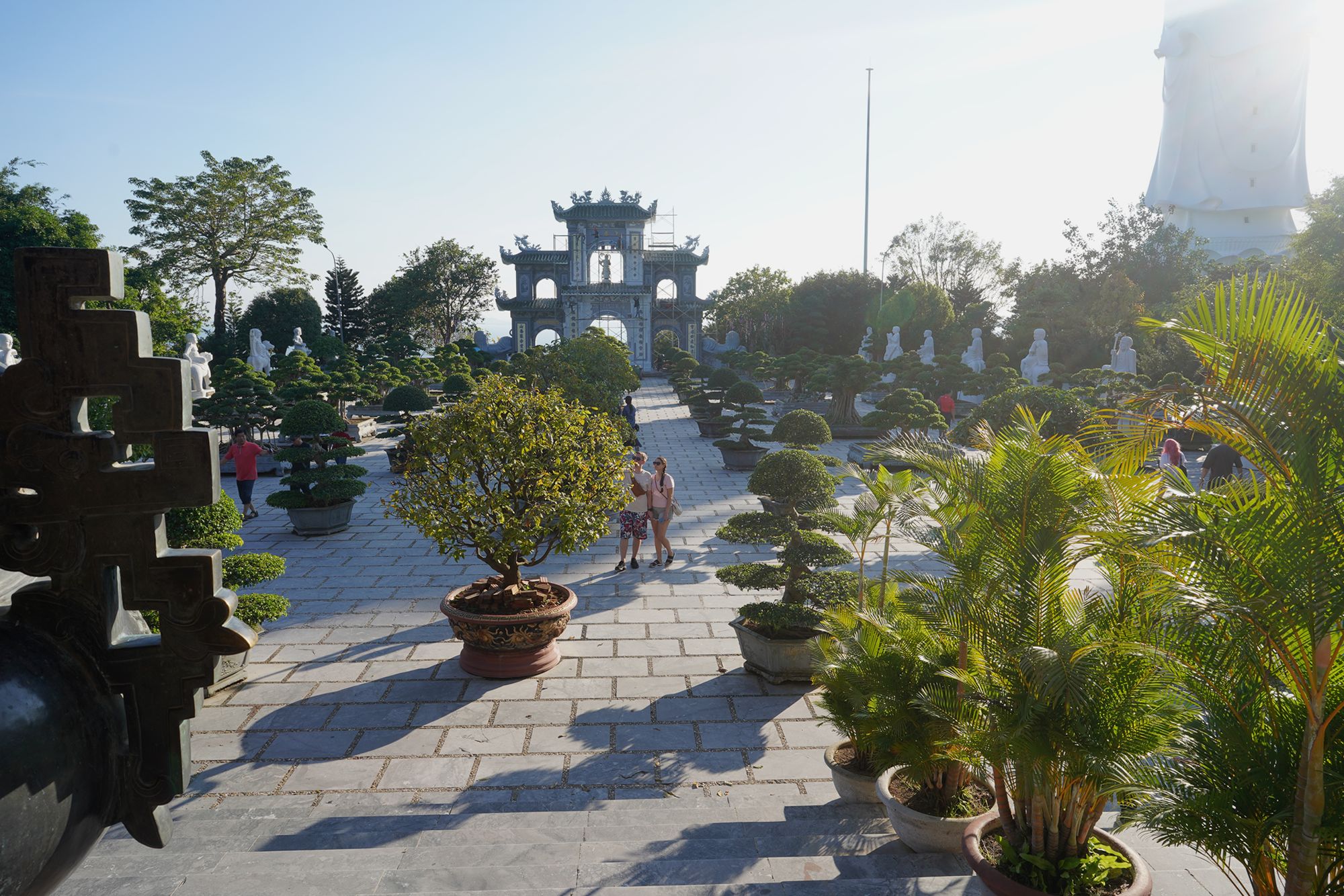
Next, I walked toward the tall Lady Buddha statue, situated on the lower level.
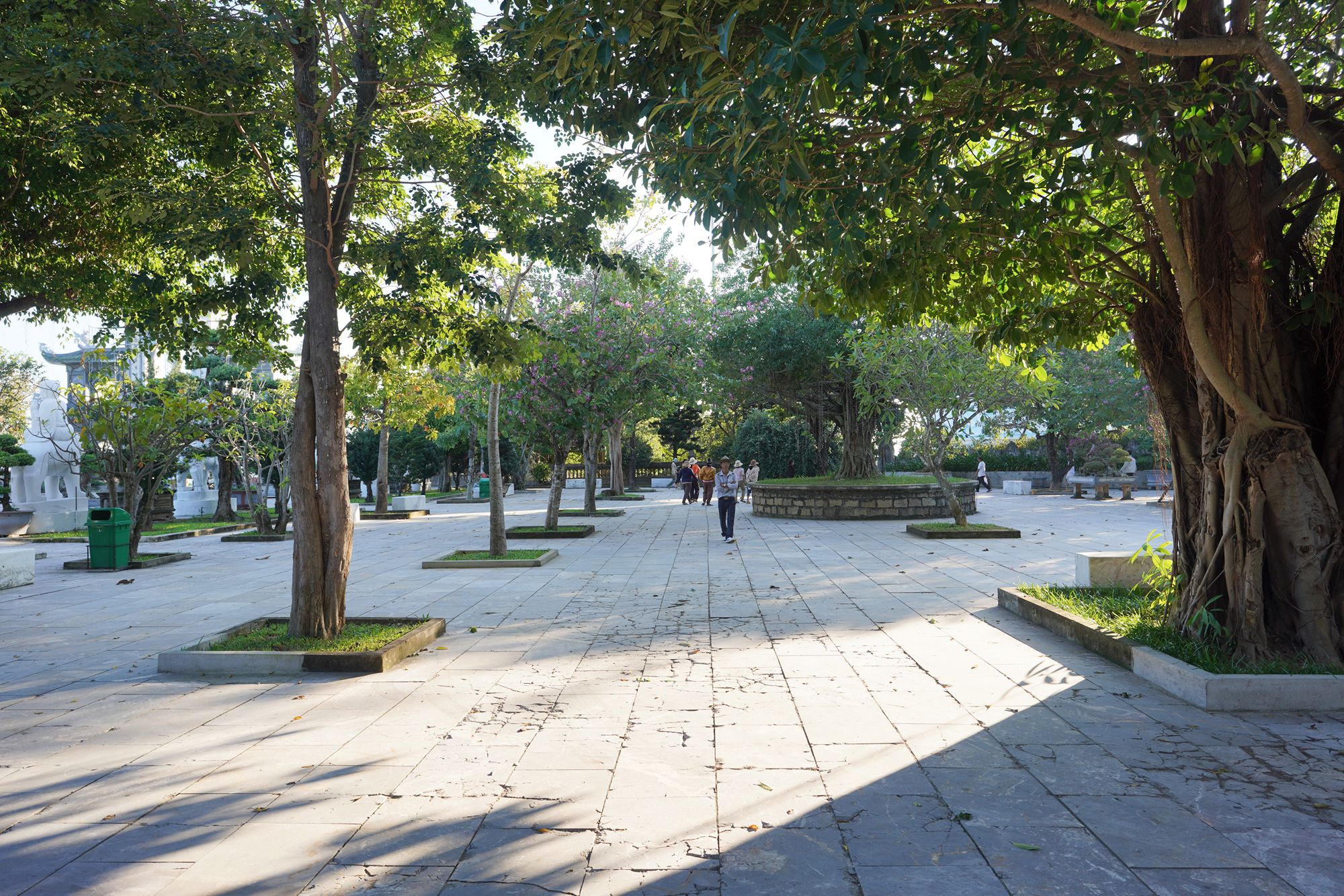
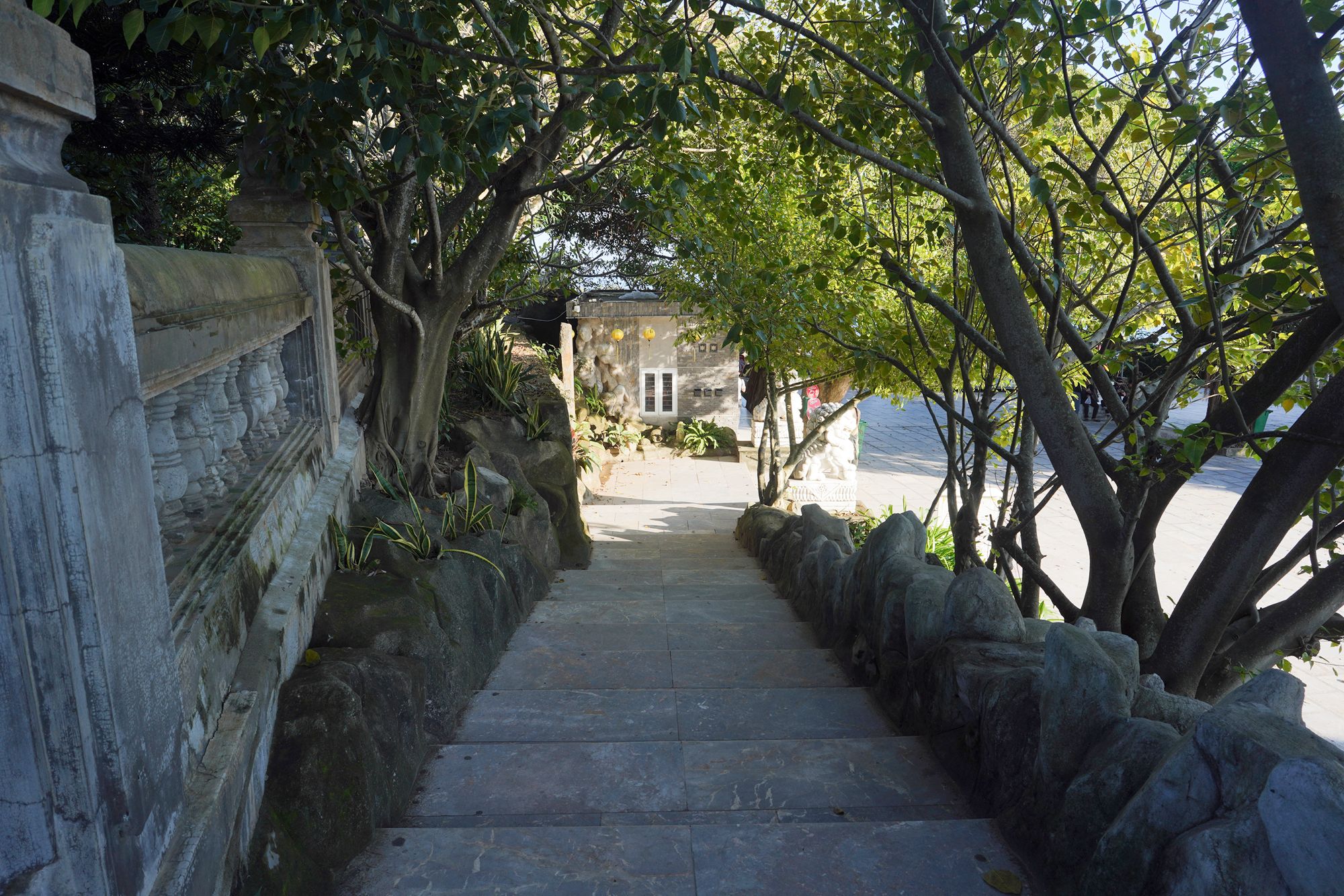
The ground level
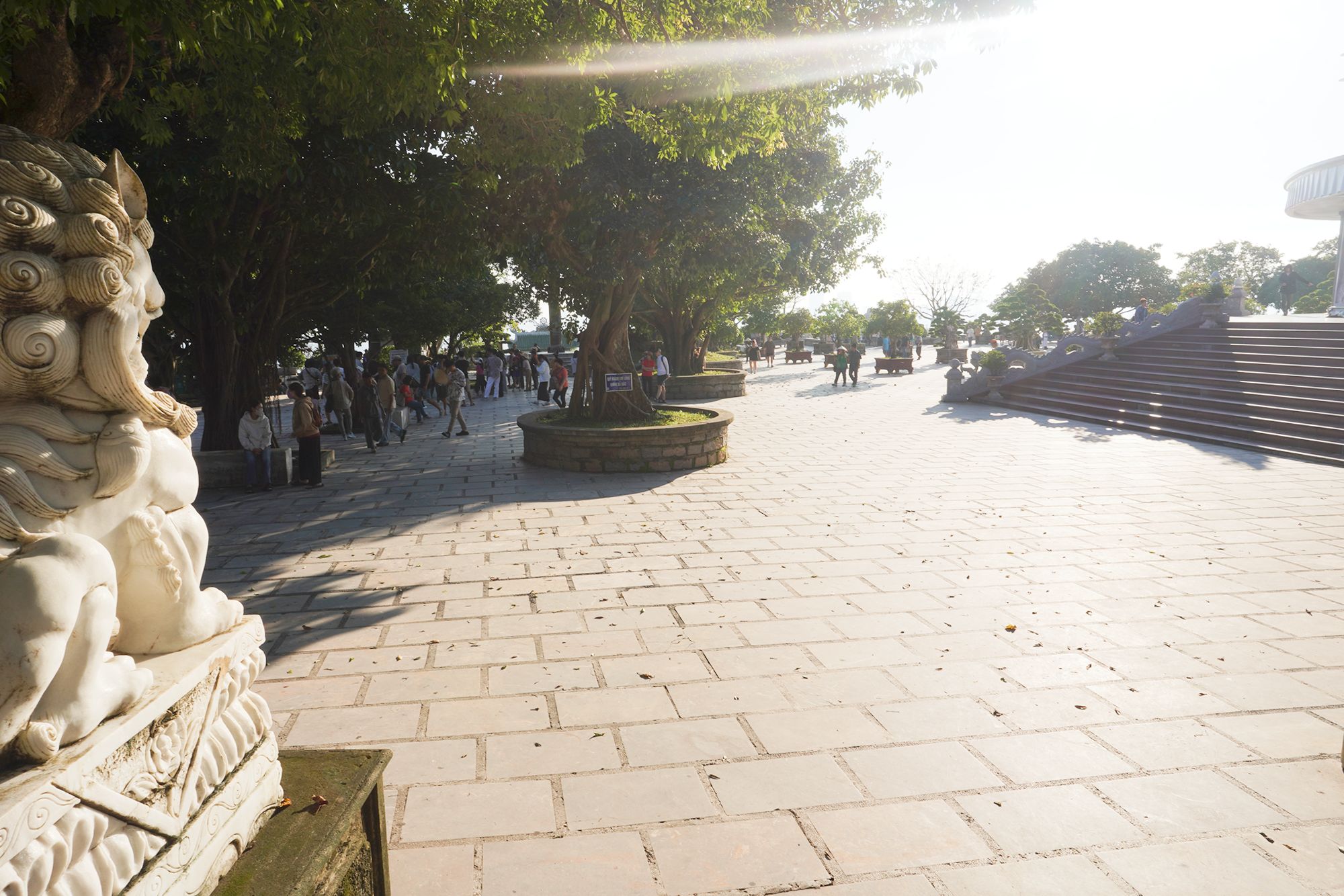
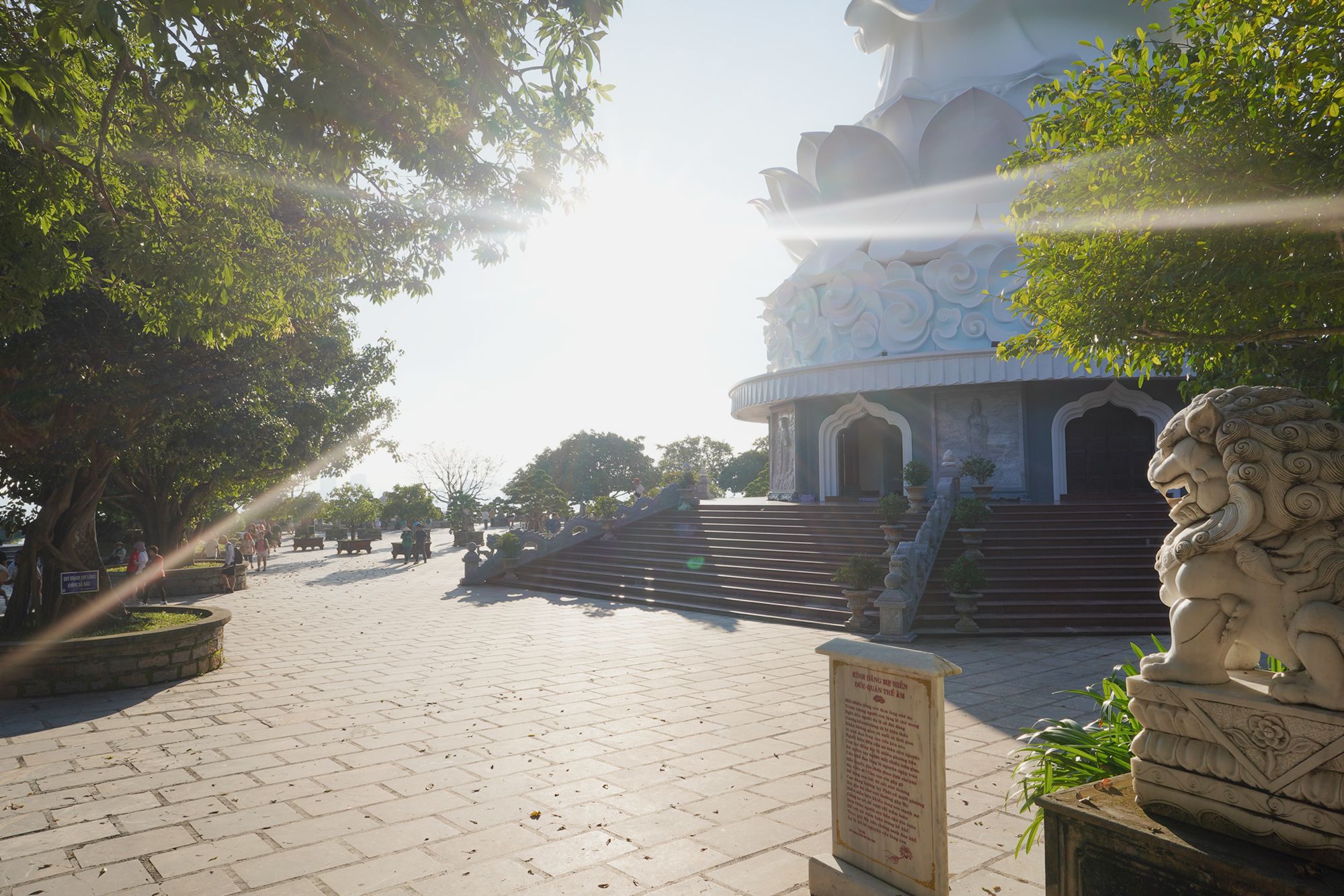
The Lady Buddha statue. The Lady Buddha statue, officially known as the Guan Yin statue, is the highlight of Chùa Linh Ứng on Sơn Trà Peninsula in Da Nang, Vietnam. Standing 67 meters tall, it is the tallest Buddha statue in Vietnam and a significant symbol of peace and protection for the region. The statue depicts Guan Yin, the Buddhist Goddess of Mercy, holding a vase of holy water to bestow blessings and compassion.
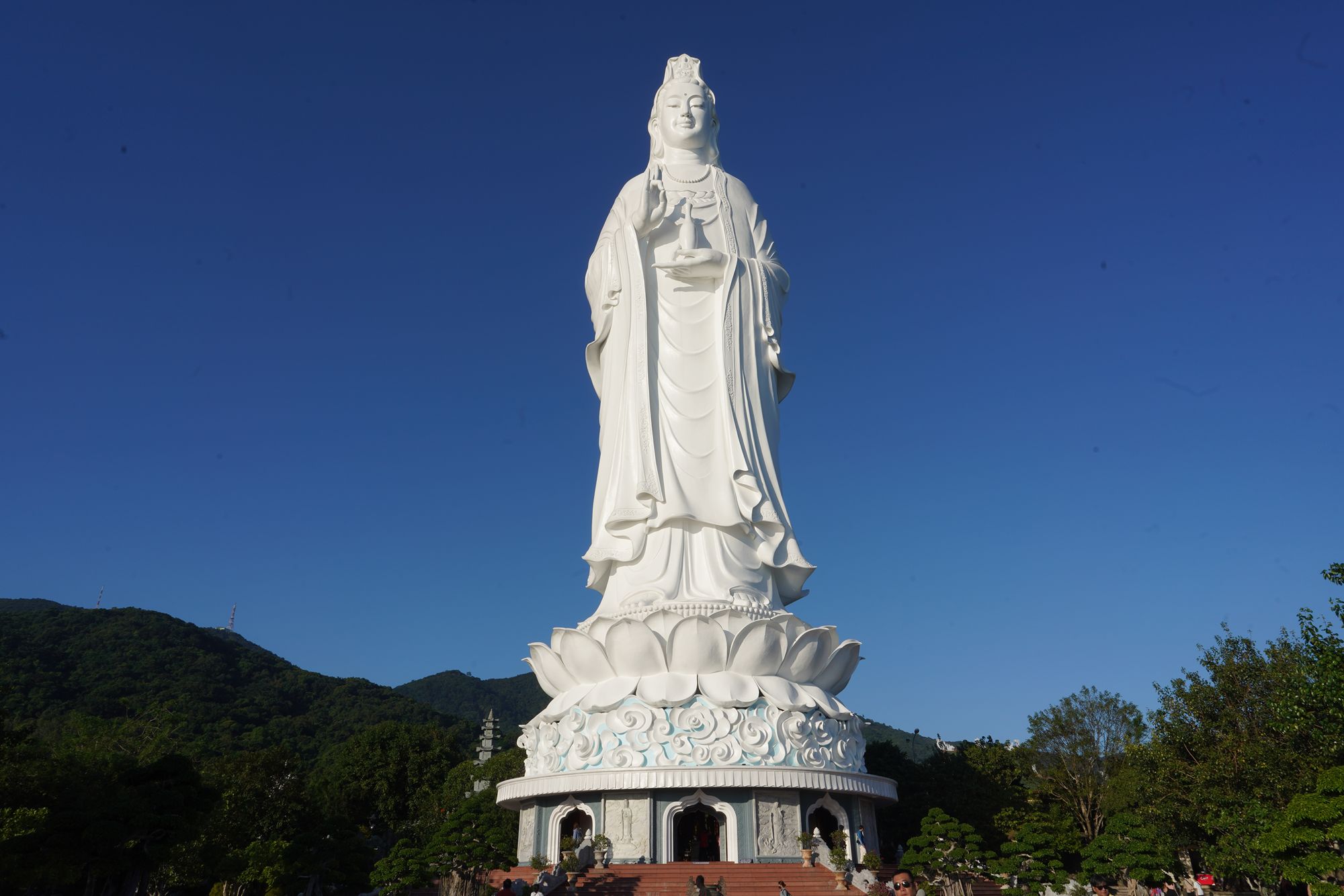
Inside the statue, there are 17 floors, each housing small Buddha statues, representing different aspects of Buddhist teachings.
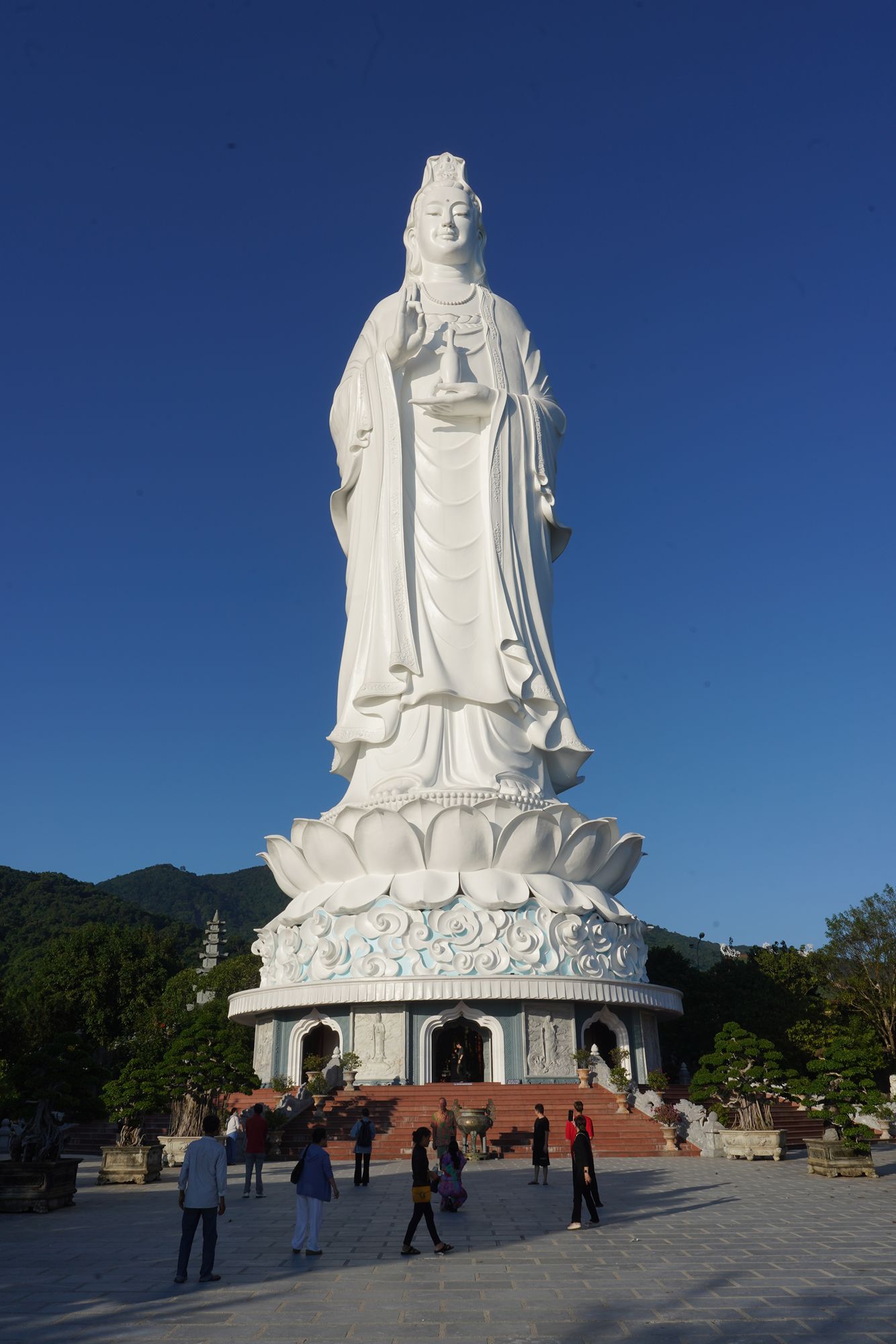
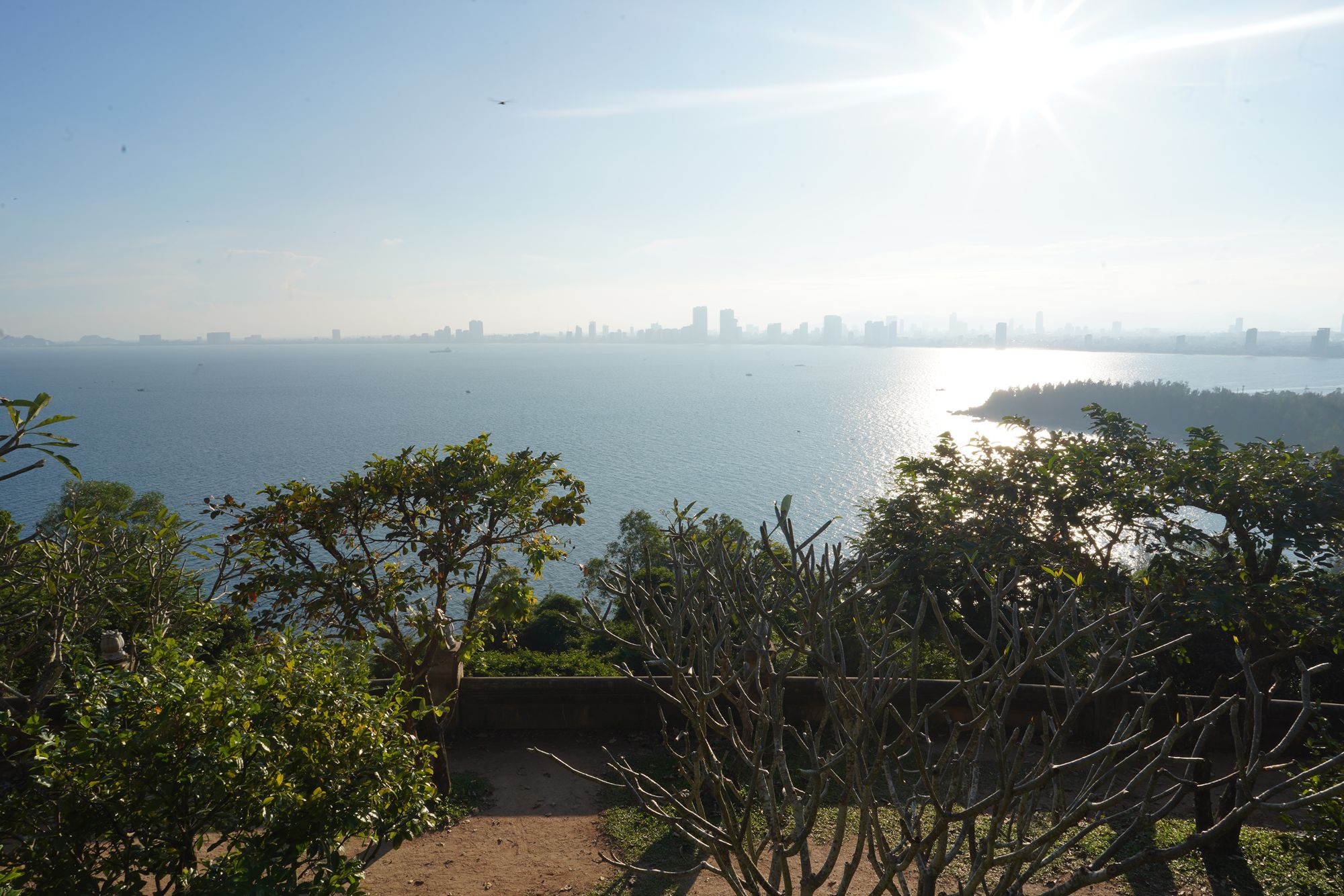
The stairs serve as the primary entrance and exit to the temple.
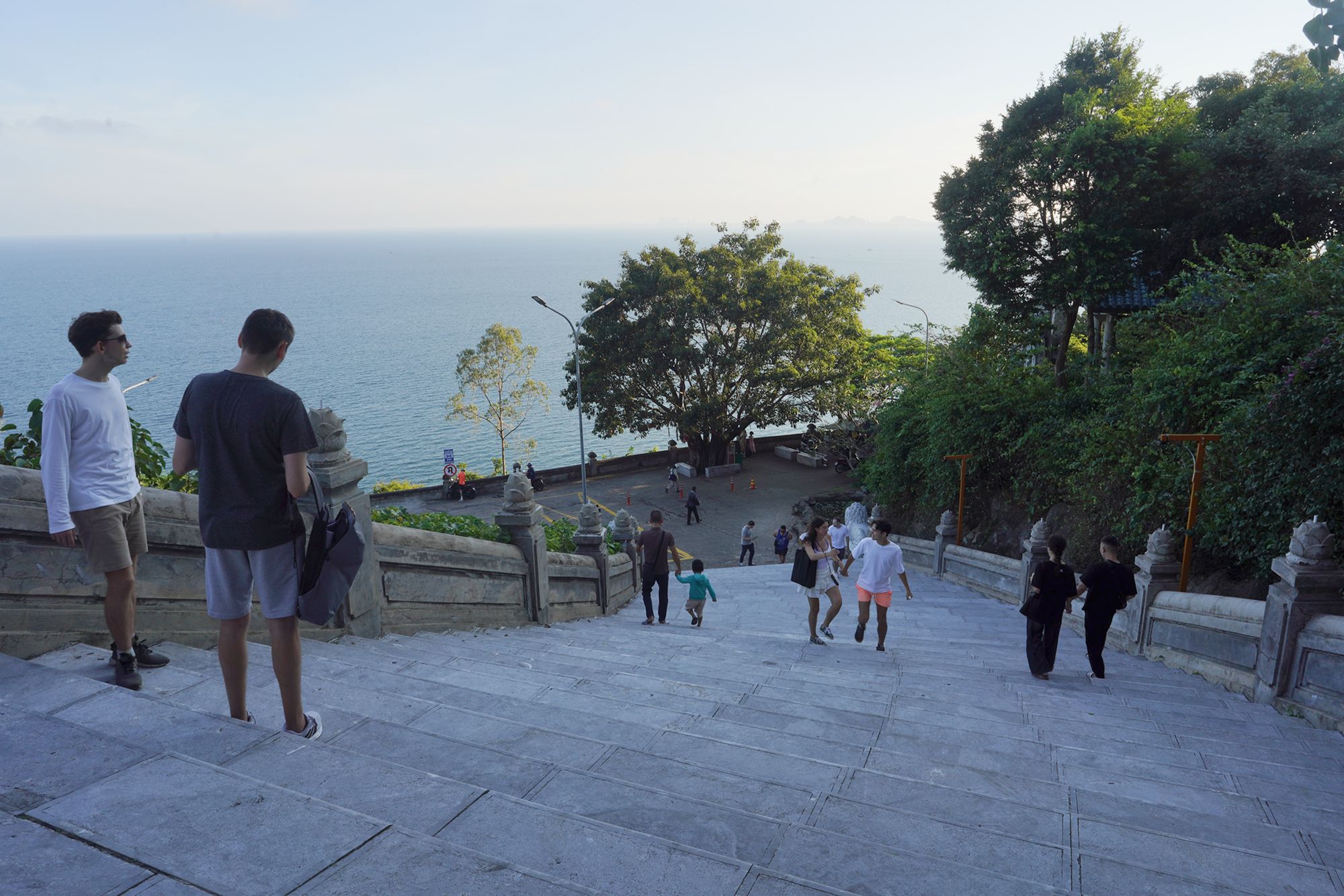
The main entrance gate
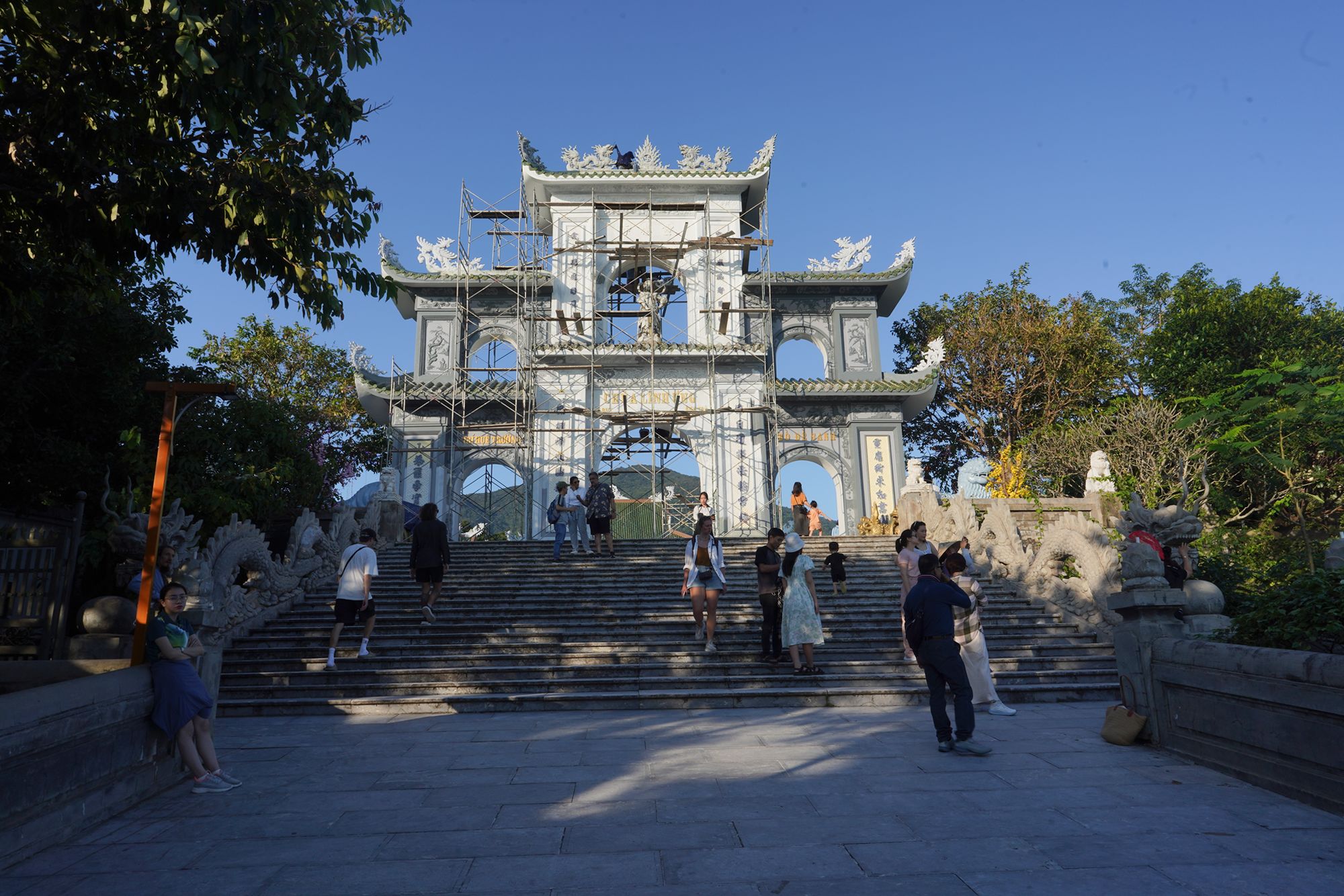
I came back to the side courtyard again
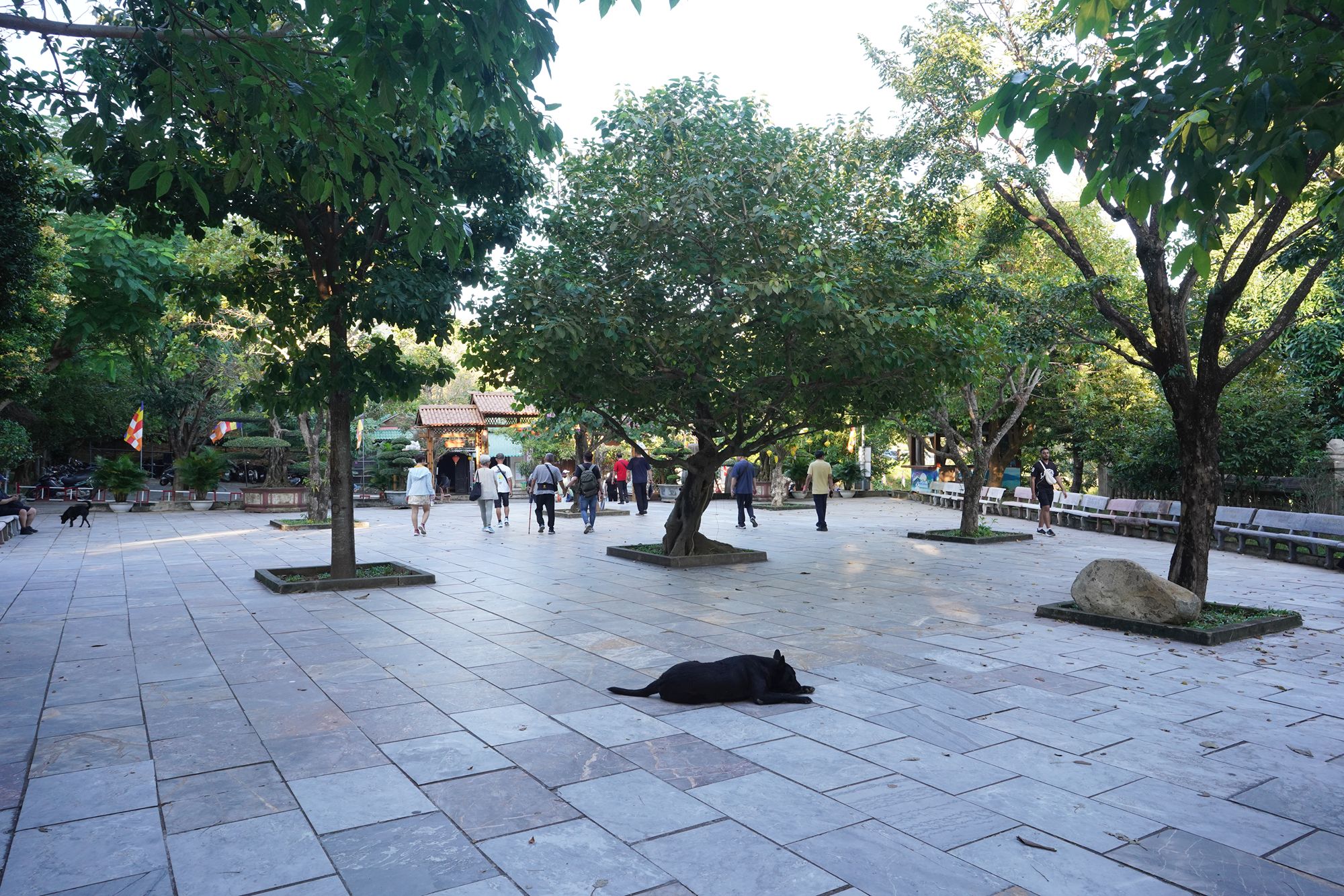
Then came back to the parking lot
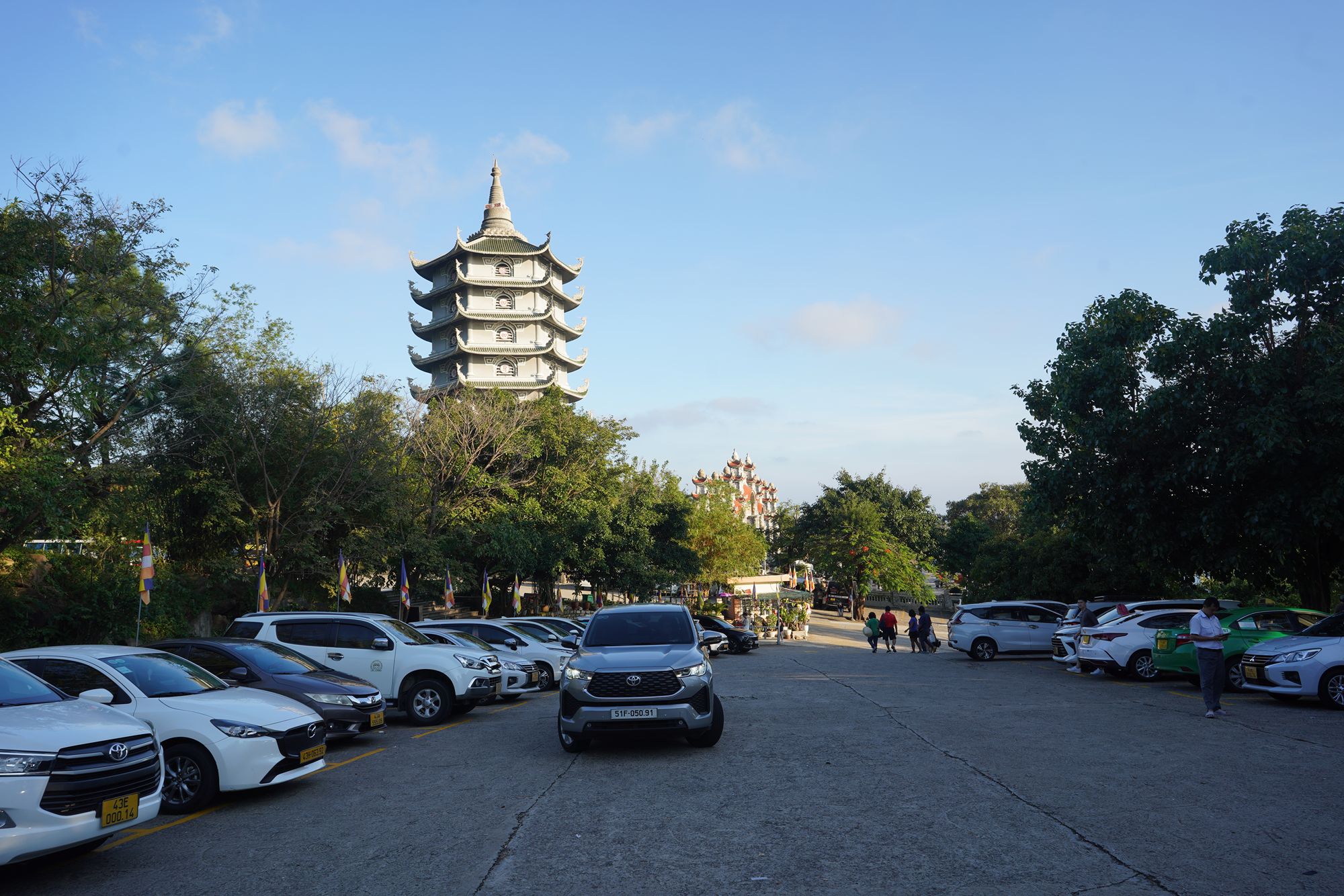
Tháp Xá Lợi Temple was situated beside Chùa Linh Ứng Temple, so I made it my next destination.

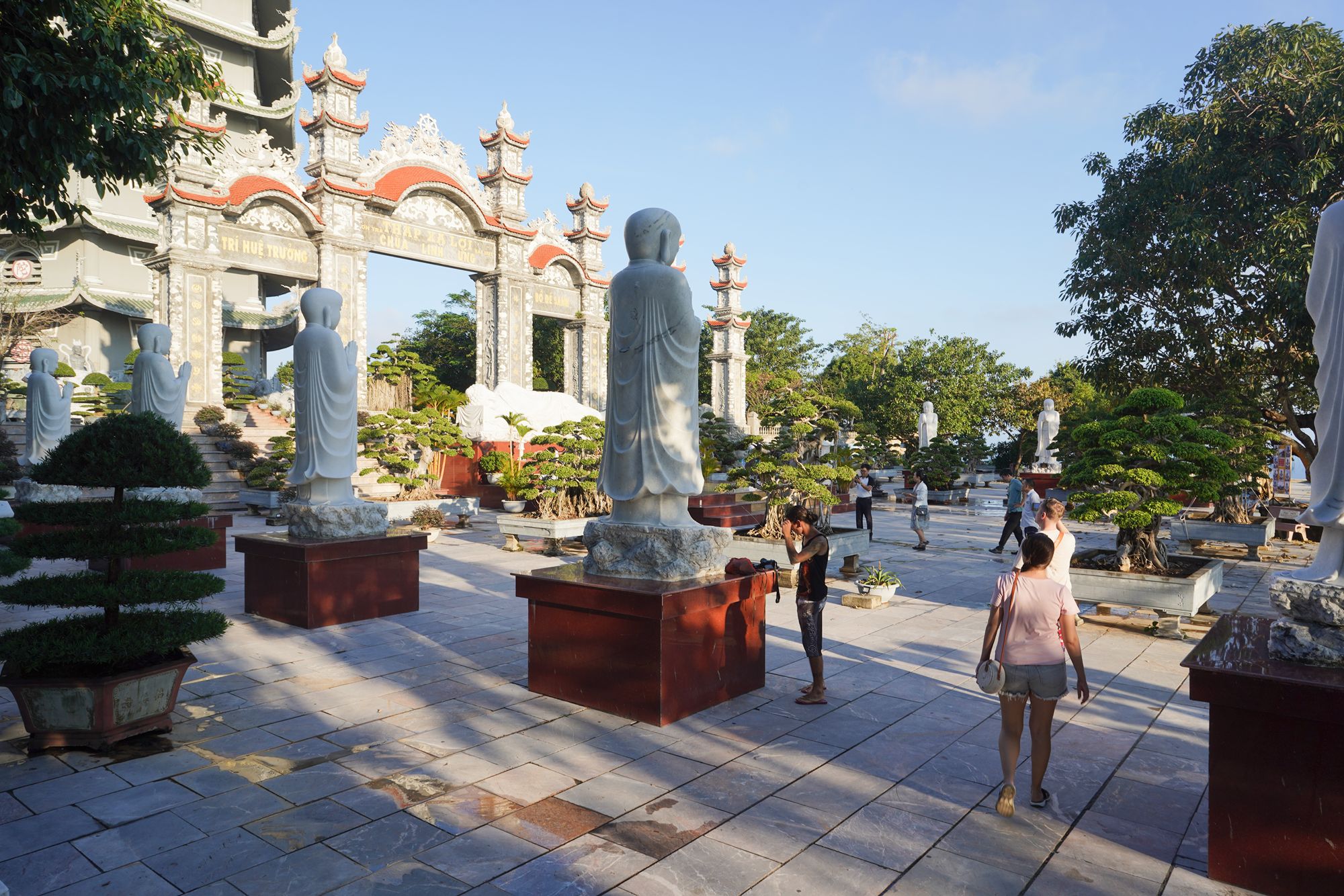
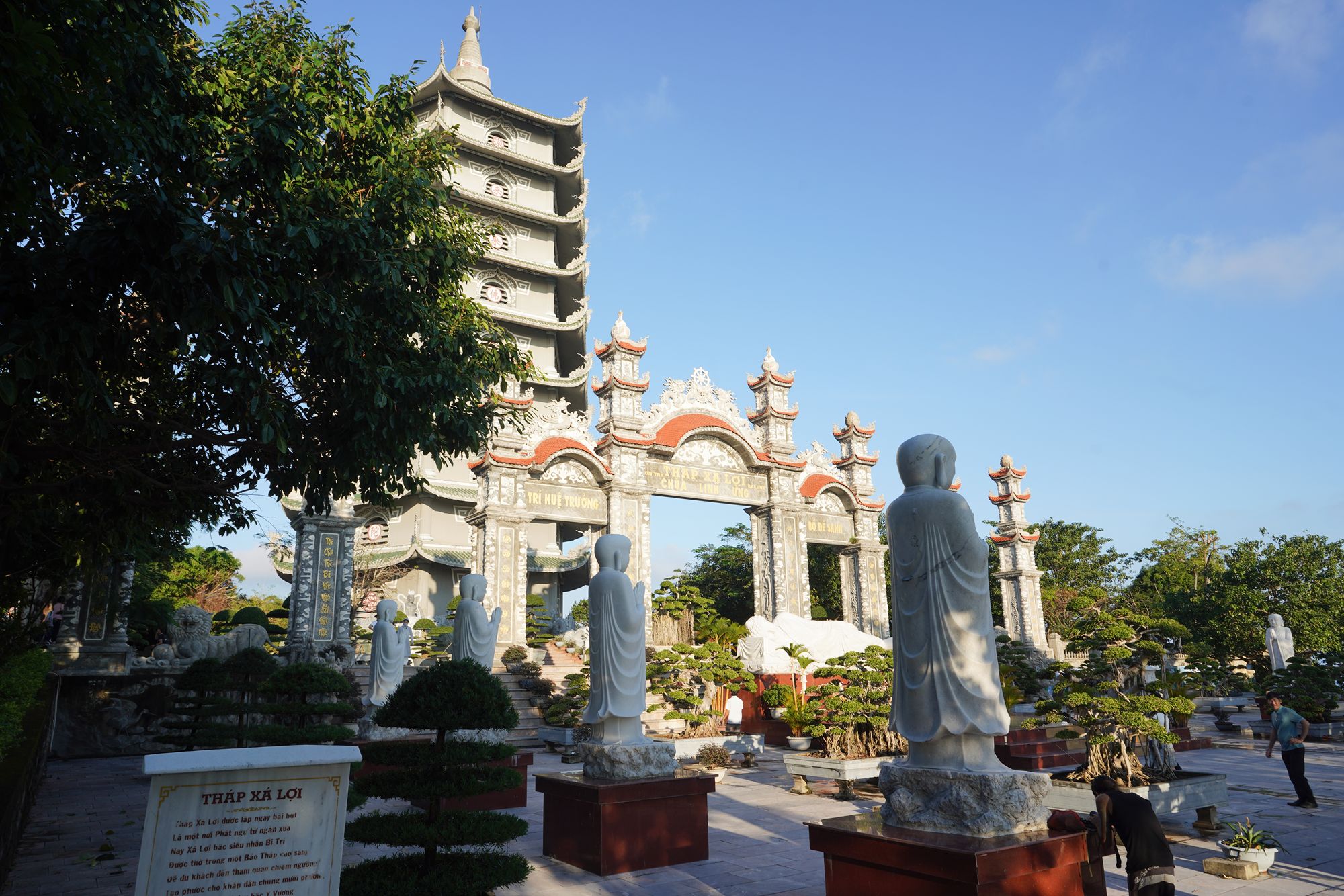
Tháp Xá Lợi Temple, also known as the Relic Tower Temple, is a notable Buddhist site near Chùa Linh Ứng in Da Nang, Vietnam. The temple is known for its serene atmosphere and the iconic stupa that houses sacred relics. Its architecture reflects traditional Vietnamese Buddhist styles, with intricate carvings and vibrant decorations that symbolize spiritual teachings.
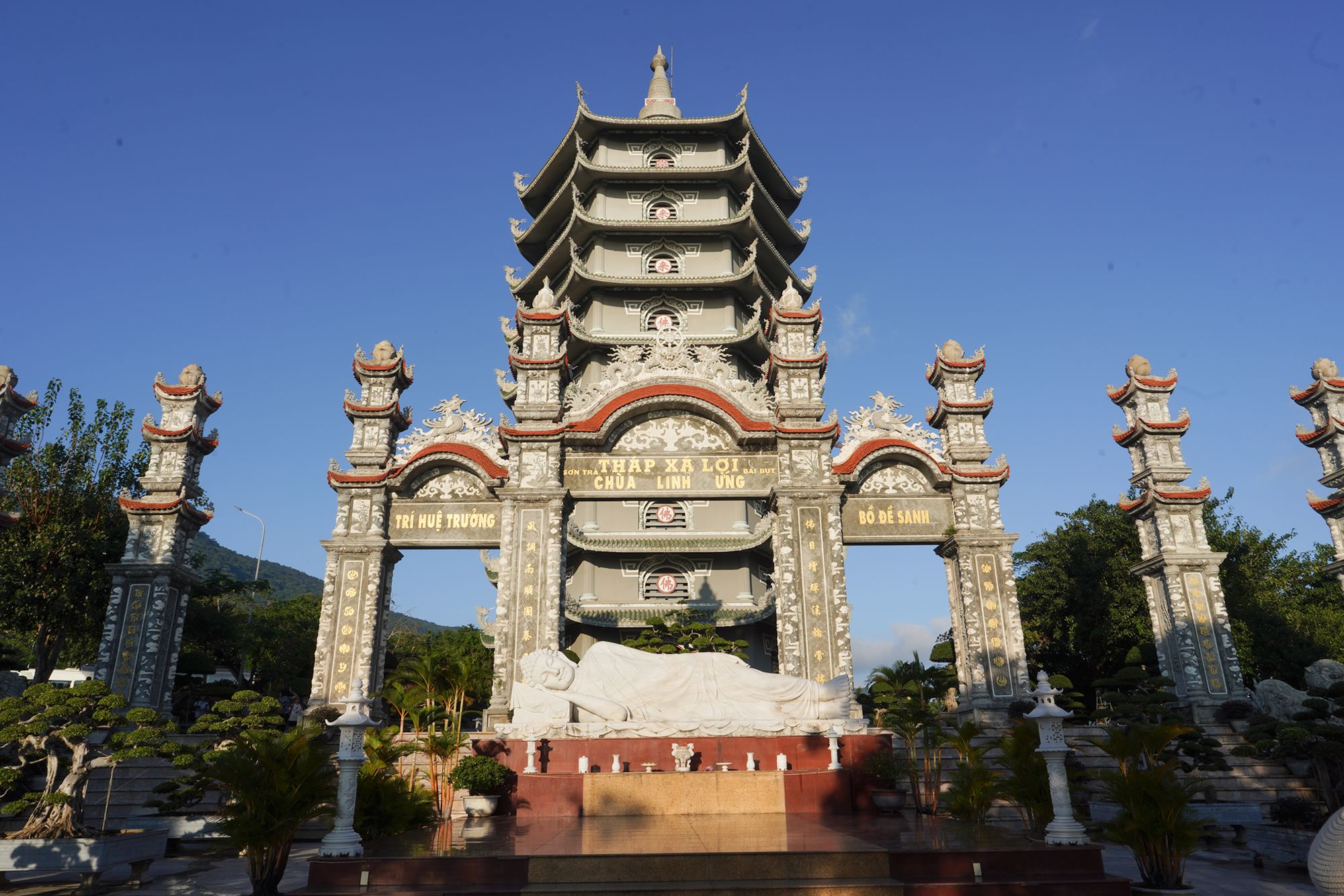
While it is not as ancient as some other temples in the country, it plays a vital role in preserving and showcasing Buddhist culture and relics.
The term “Tháp Xá Lợi” refers to a stupa or tower built to enshrine sacred relics, typically those associated with the Buddha or revered monks. These relics often include ashes, bones, or other sacred objects believed to carry spiritual power and blessings.
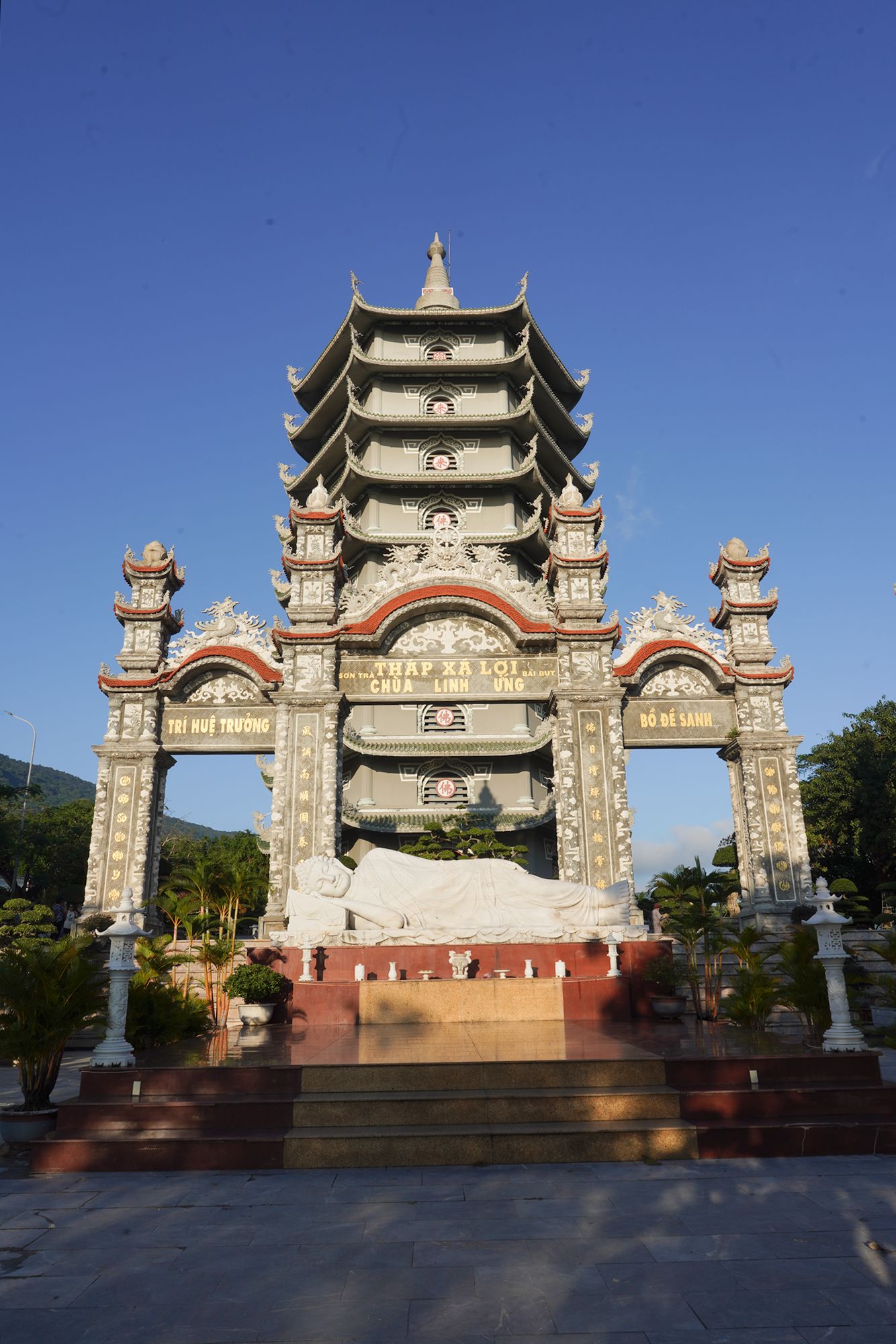
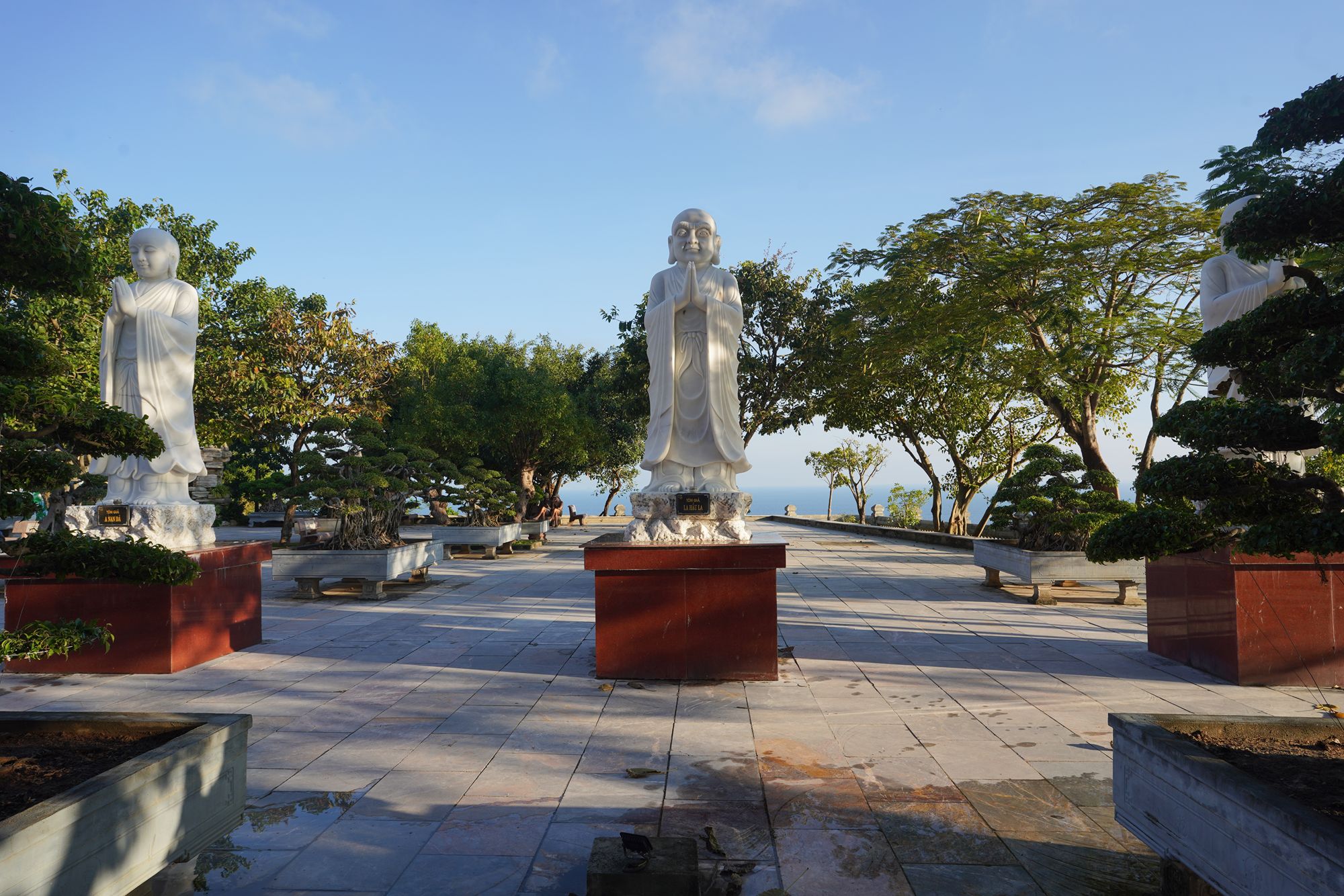
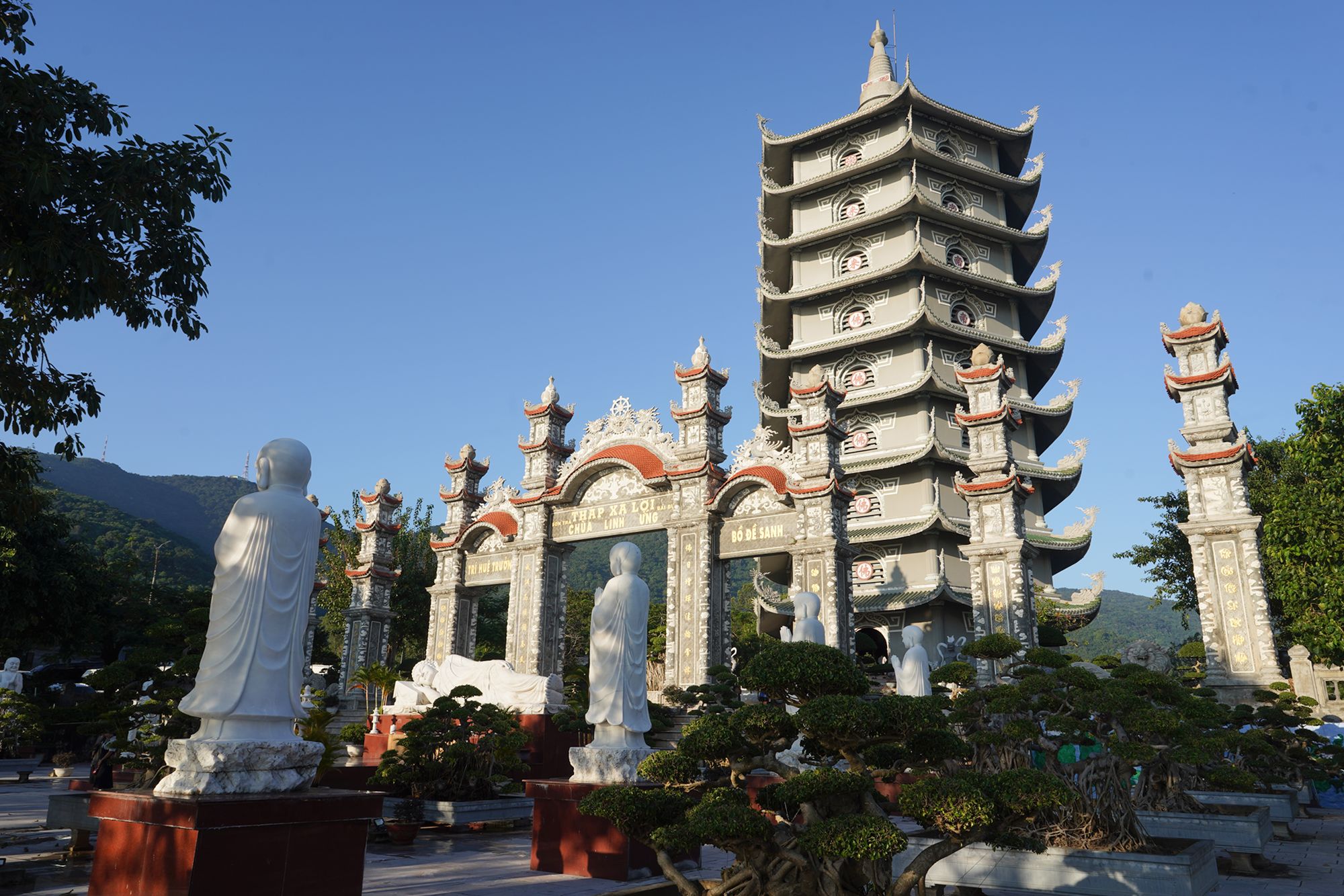
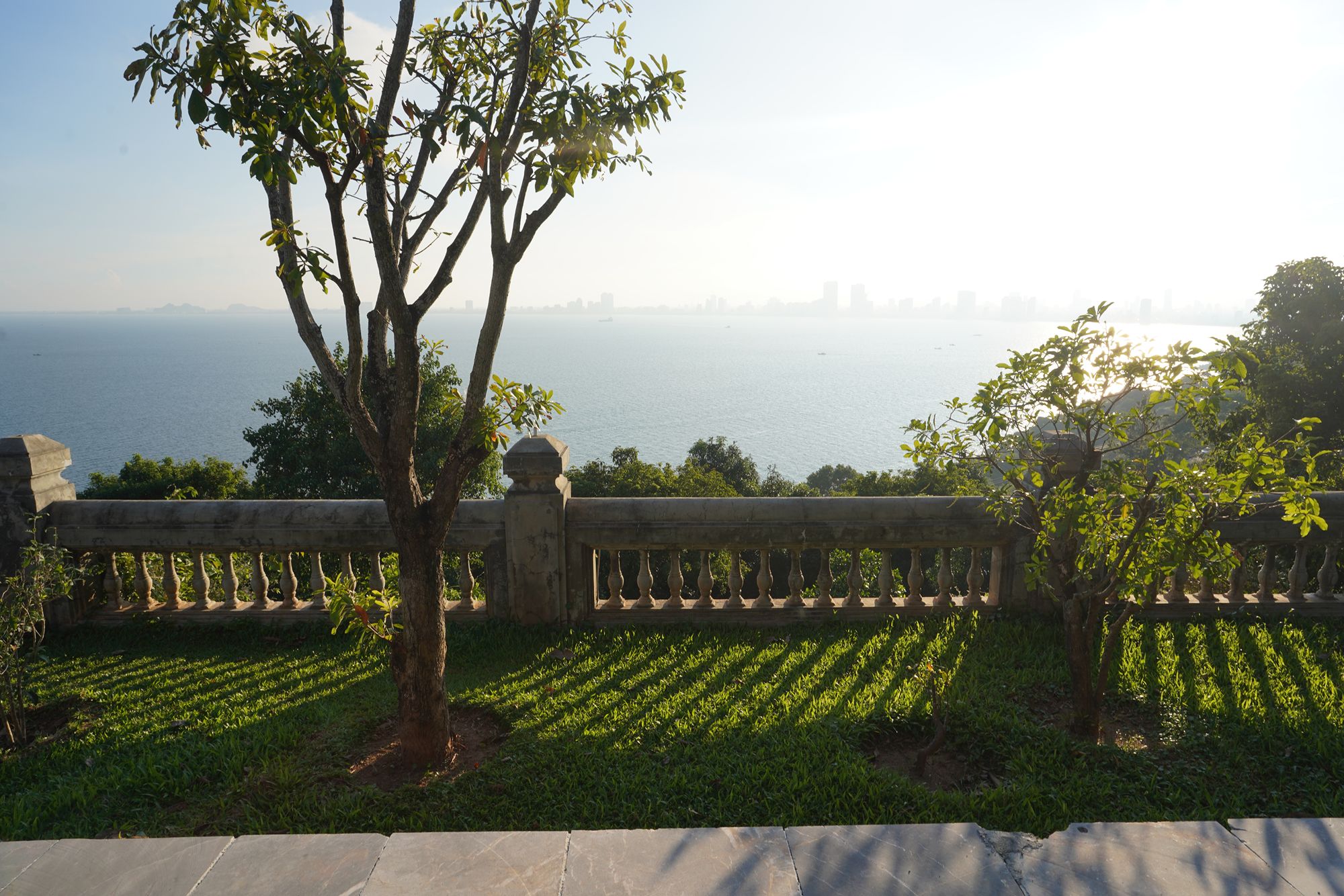
Afterward, I took a Grab to visit Tháp Xá Lợi Temple, situated in the vicinity of Da Nang.
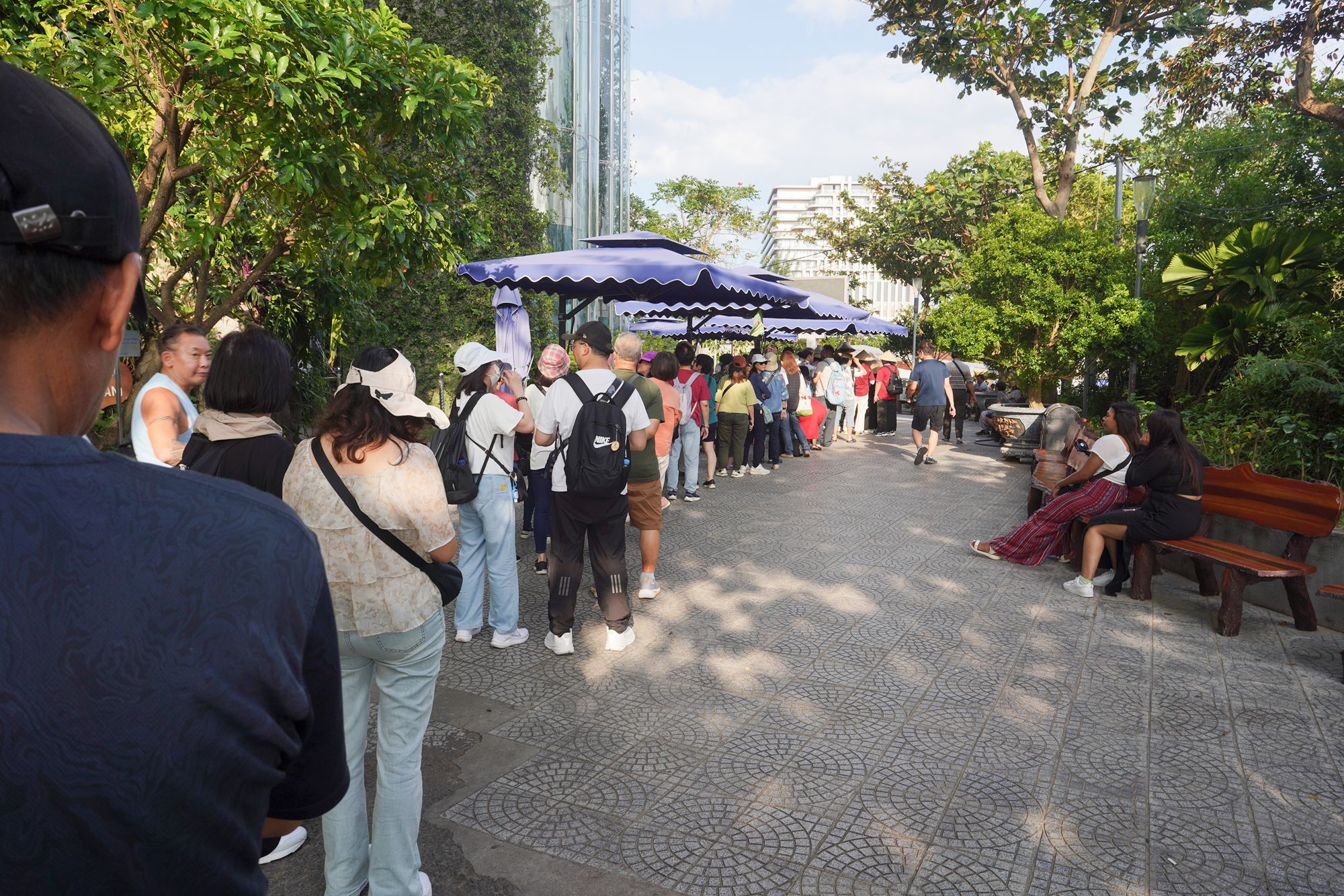
The temple is located on a high mountain, and the most convenient way to reach it is by taking the elevator.
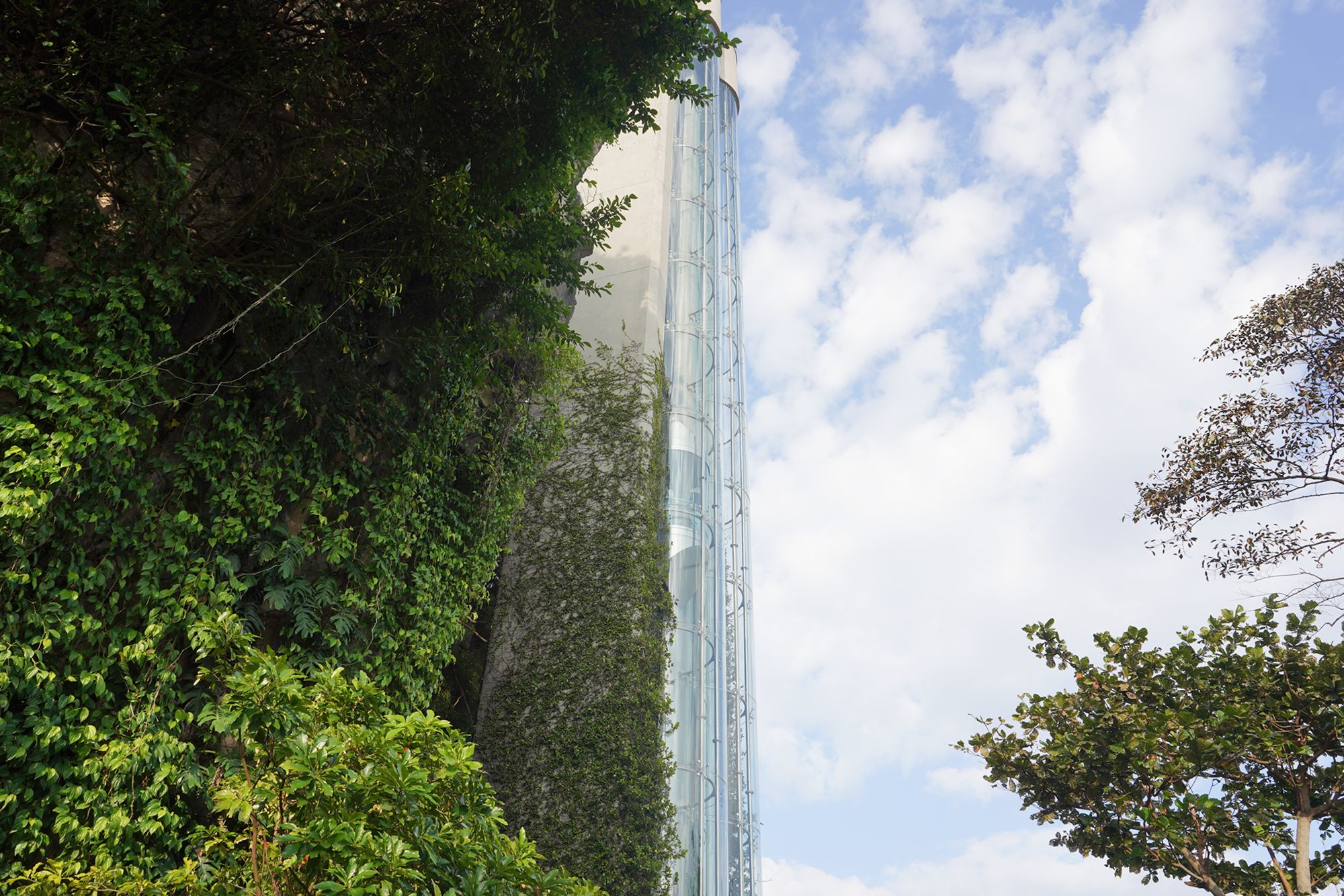
Xa Loi Tower, located within the Chùa Linh Ứng Ngũ Hành Sơn complex at the Marble Mountains in Da Nang, Vietnam, is a seven-story Buddhist stupa that serves as both a spiritual and architectural highlight of the temple.
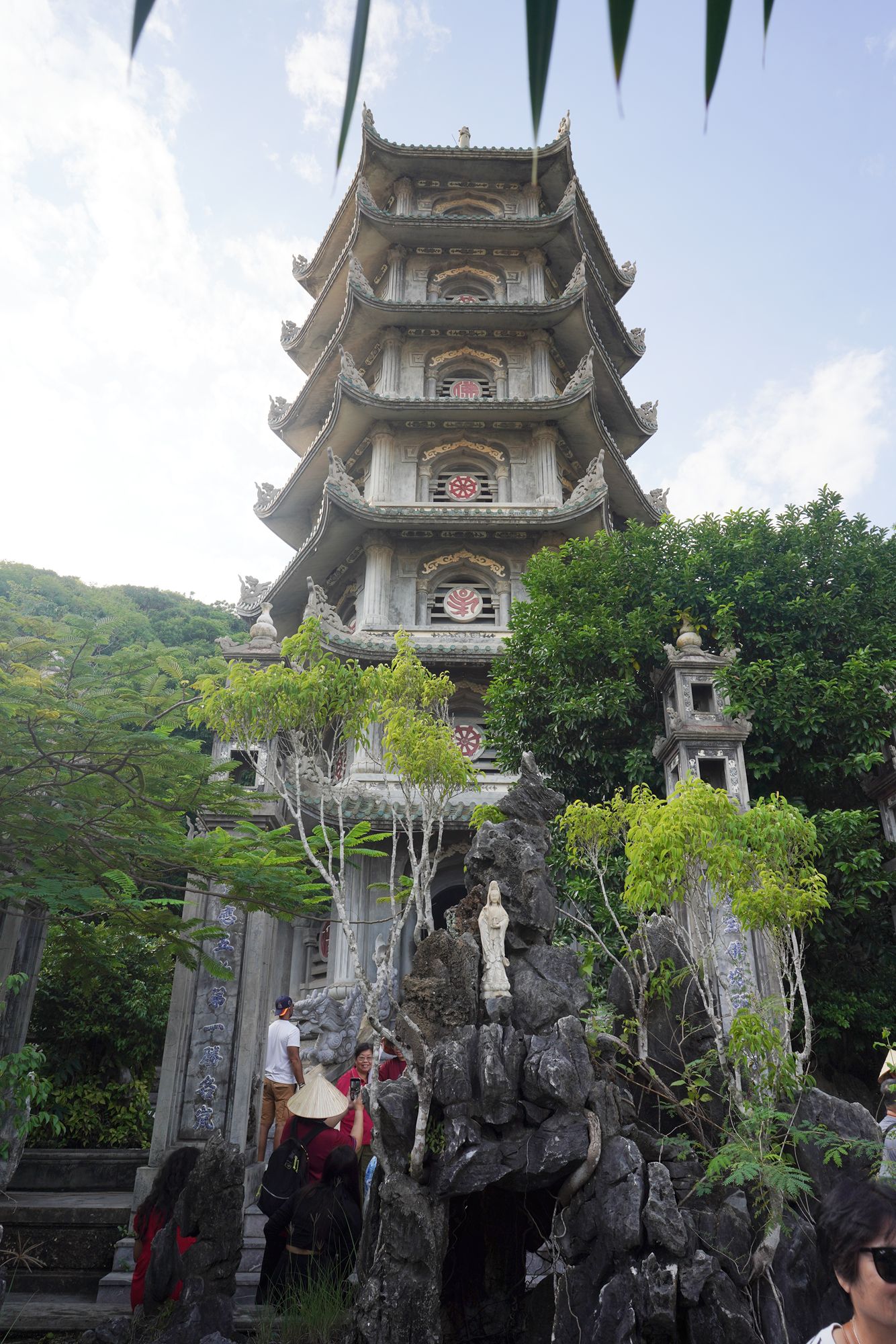
The tower stands seven stories tall, symbolizing the seven heavens of Buddhist cosmology.
Each level of the tower houses intricate statues of Buddha and revered Bodhisattvas, representing various aspects of Buddhist teachings.
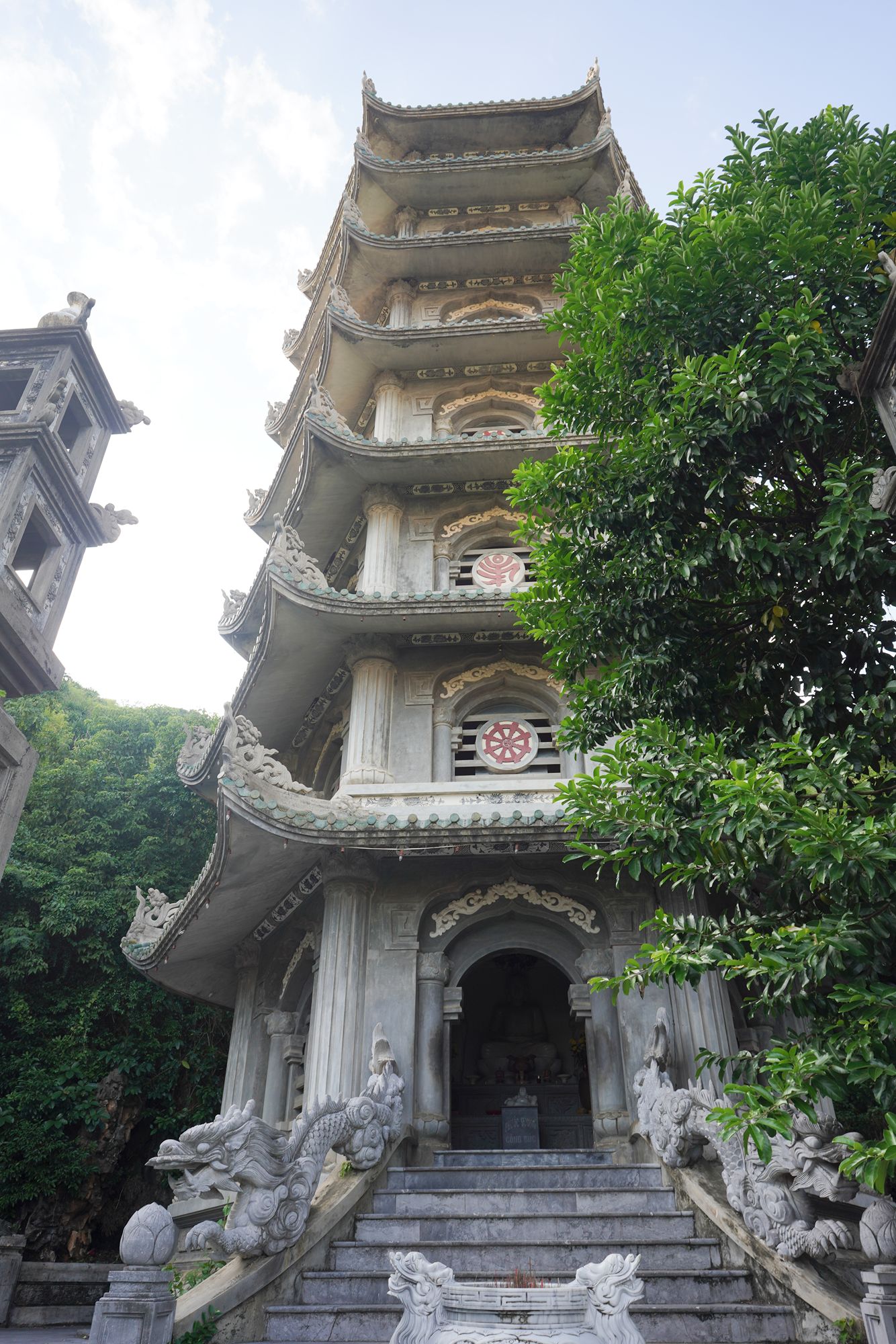
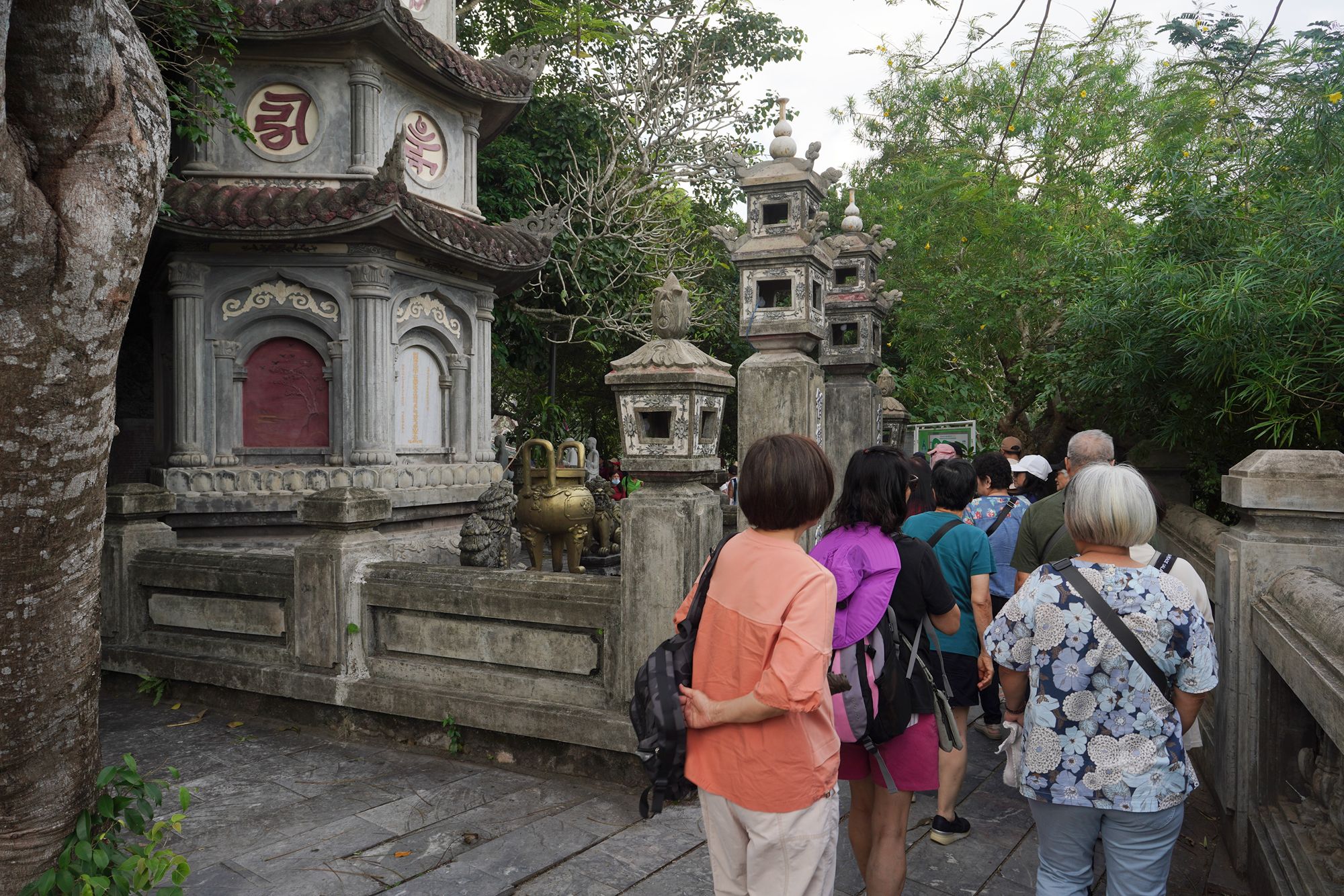
A map of temples and caves in the area
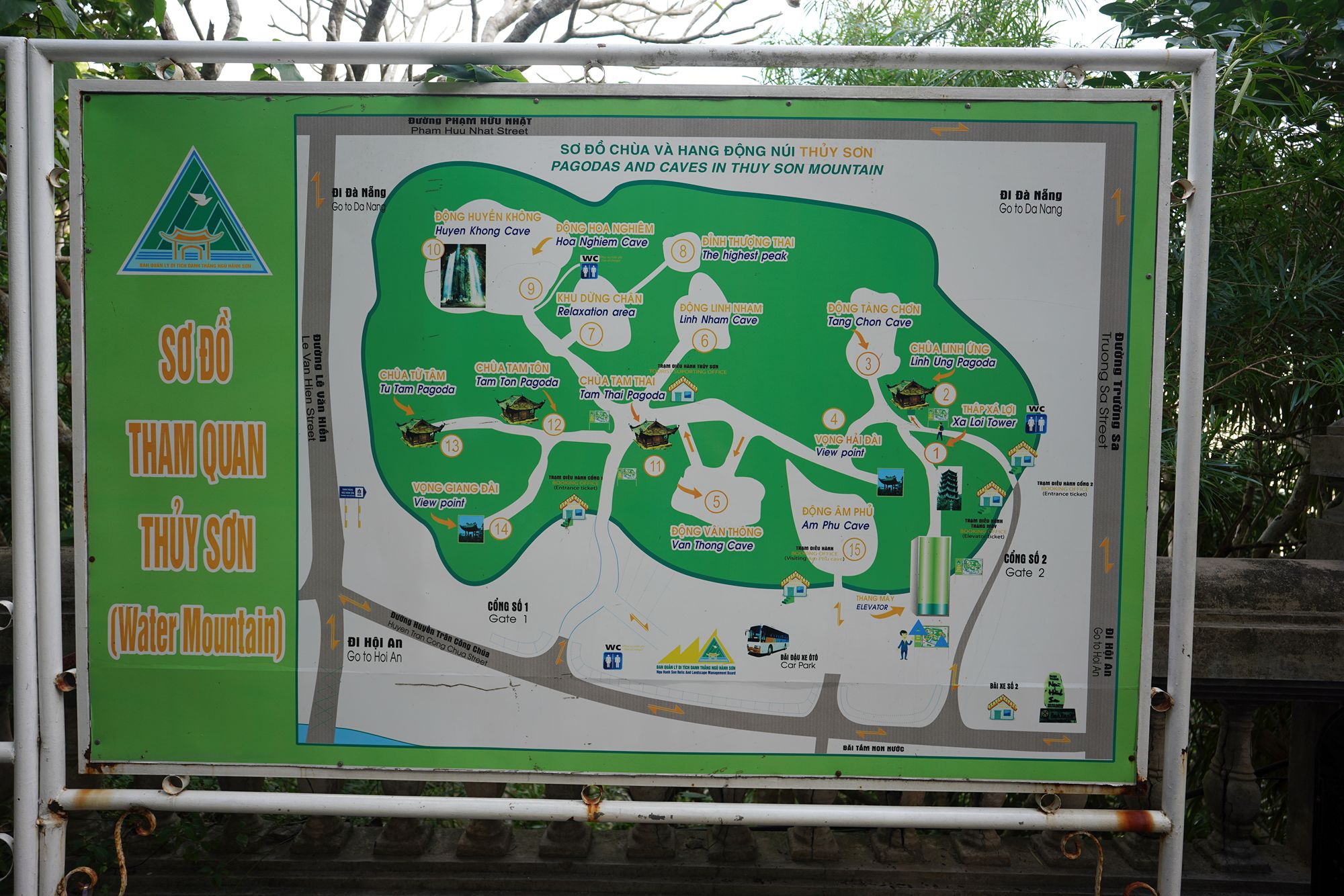
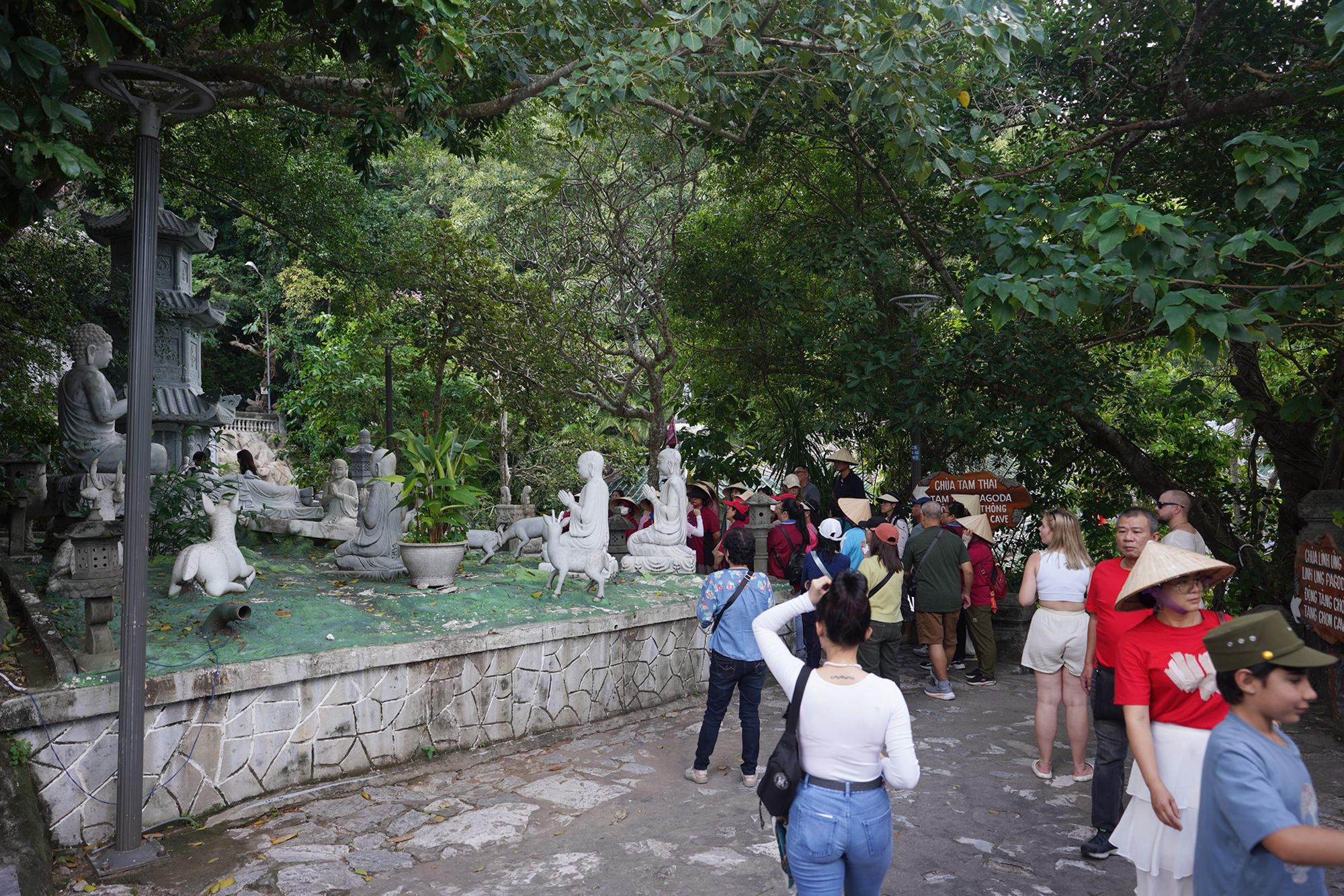
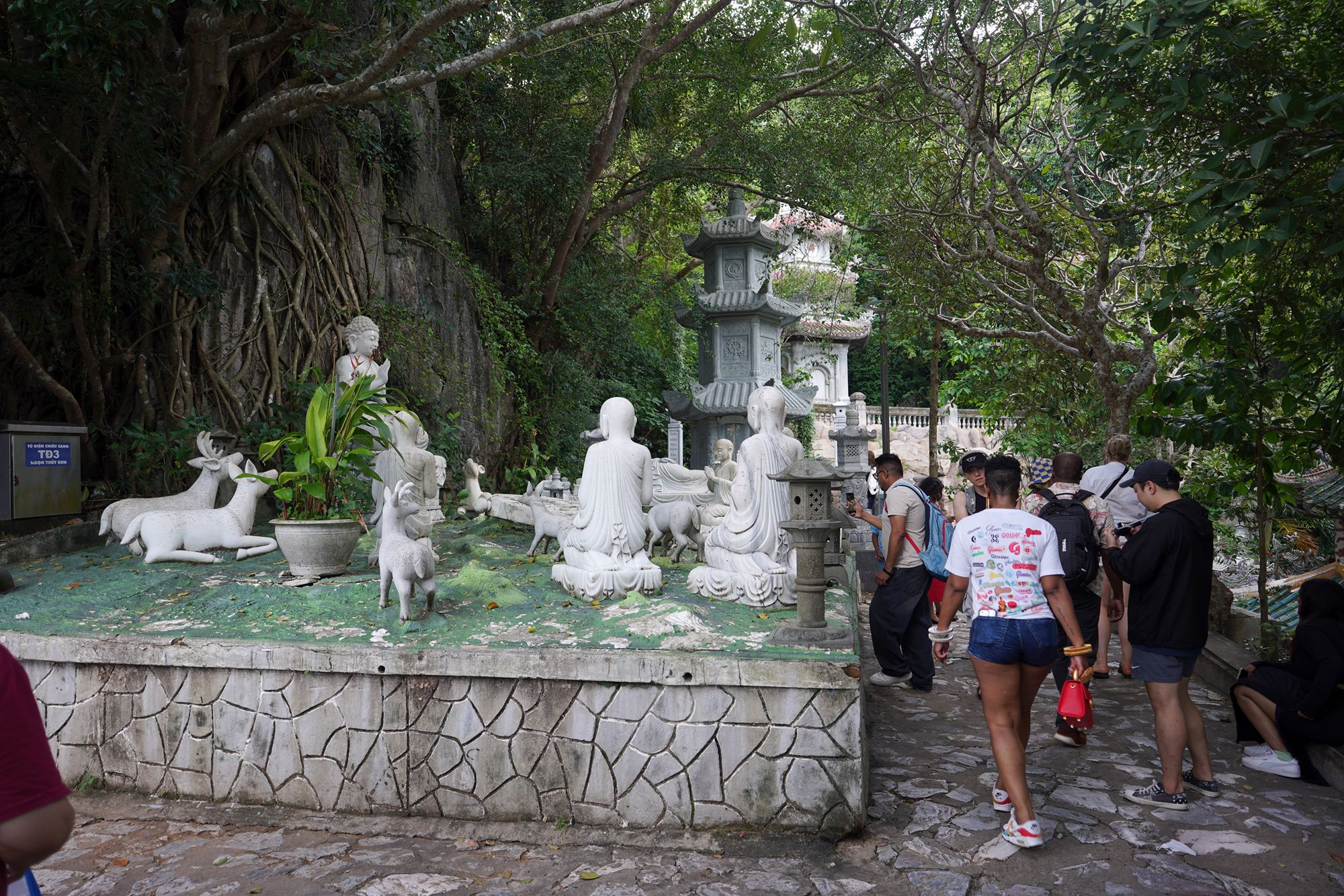
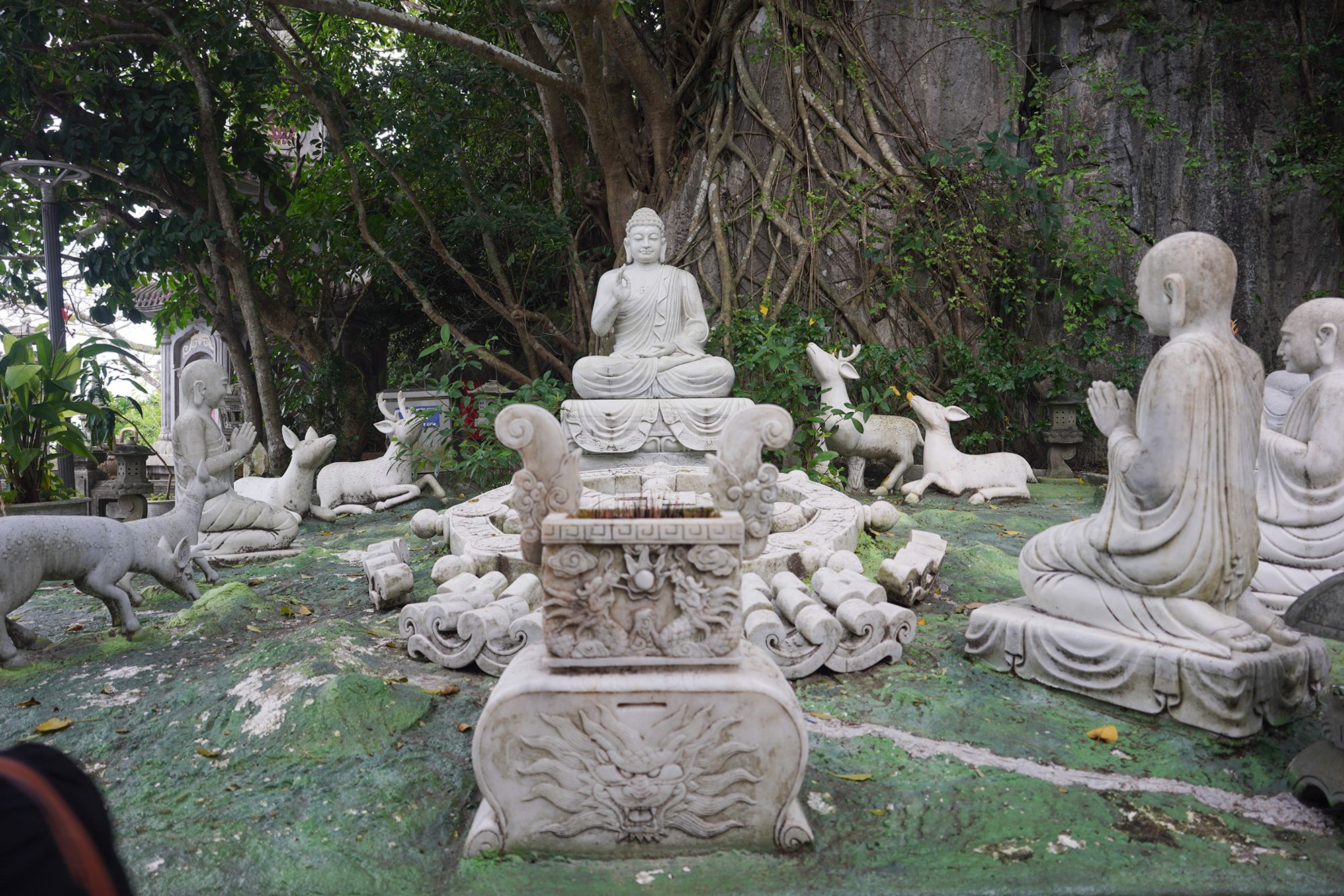
There was a path leading to the other side of the mountain, while to my right were the temples on the lower ground.
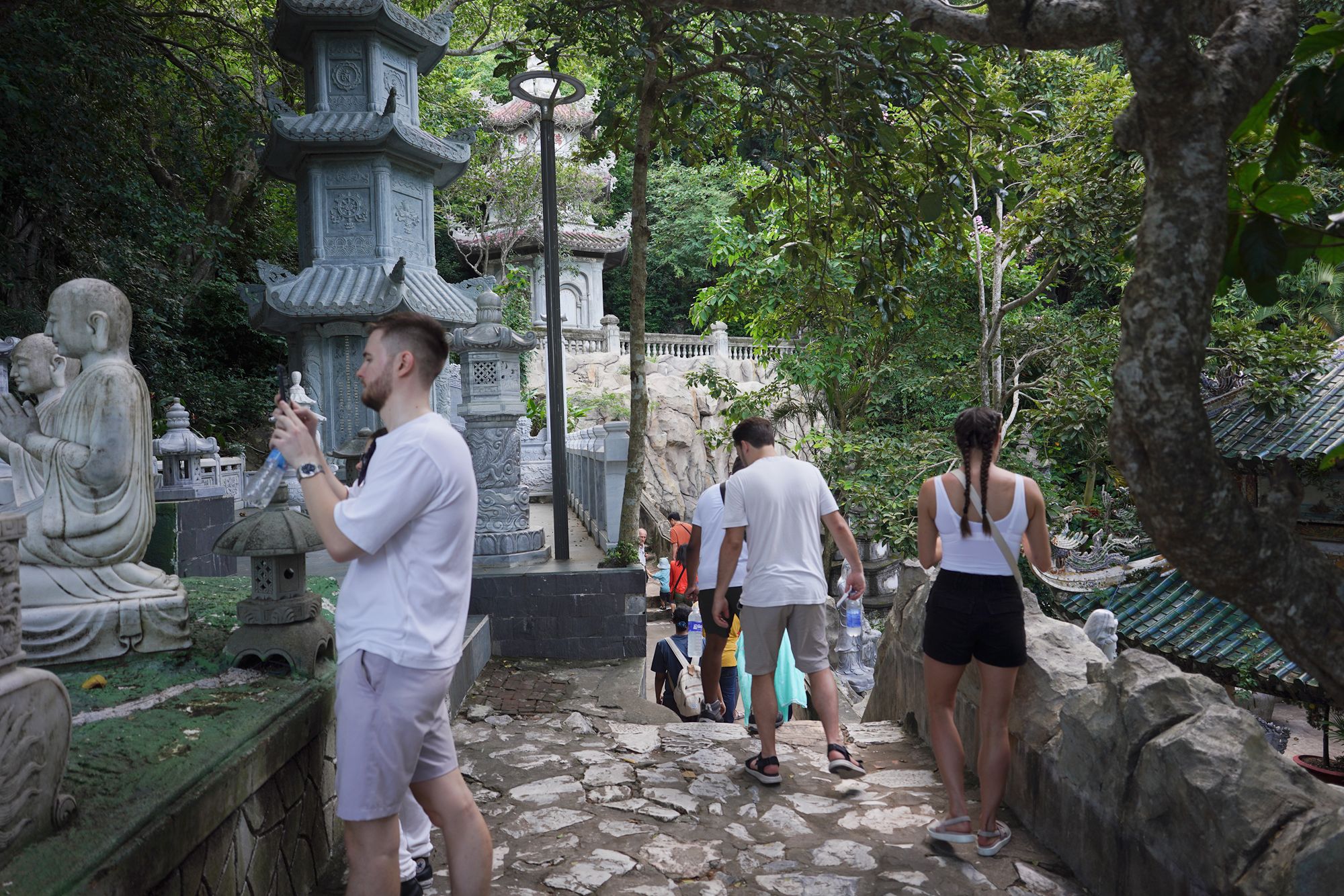
The temples located on the lower level.
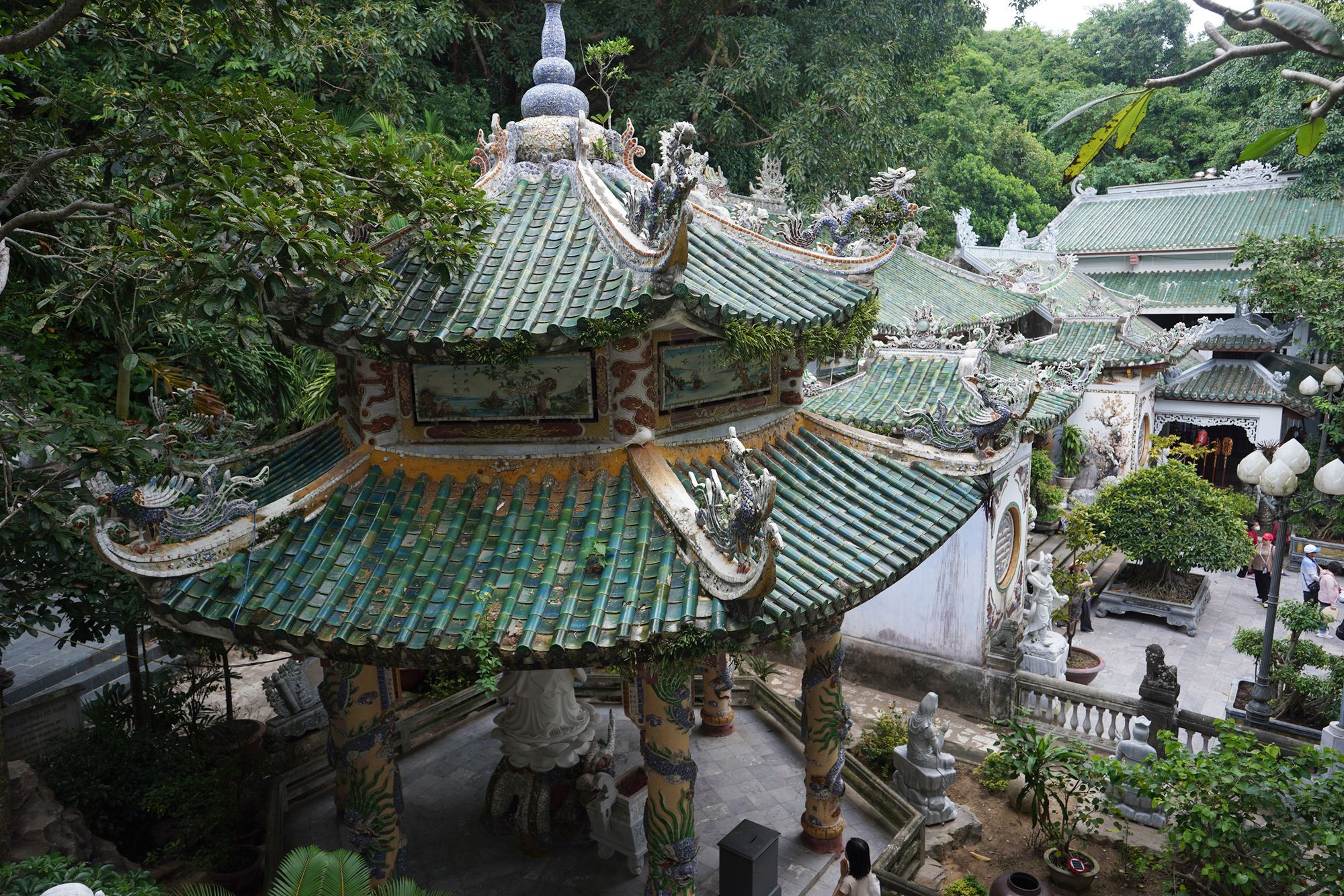
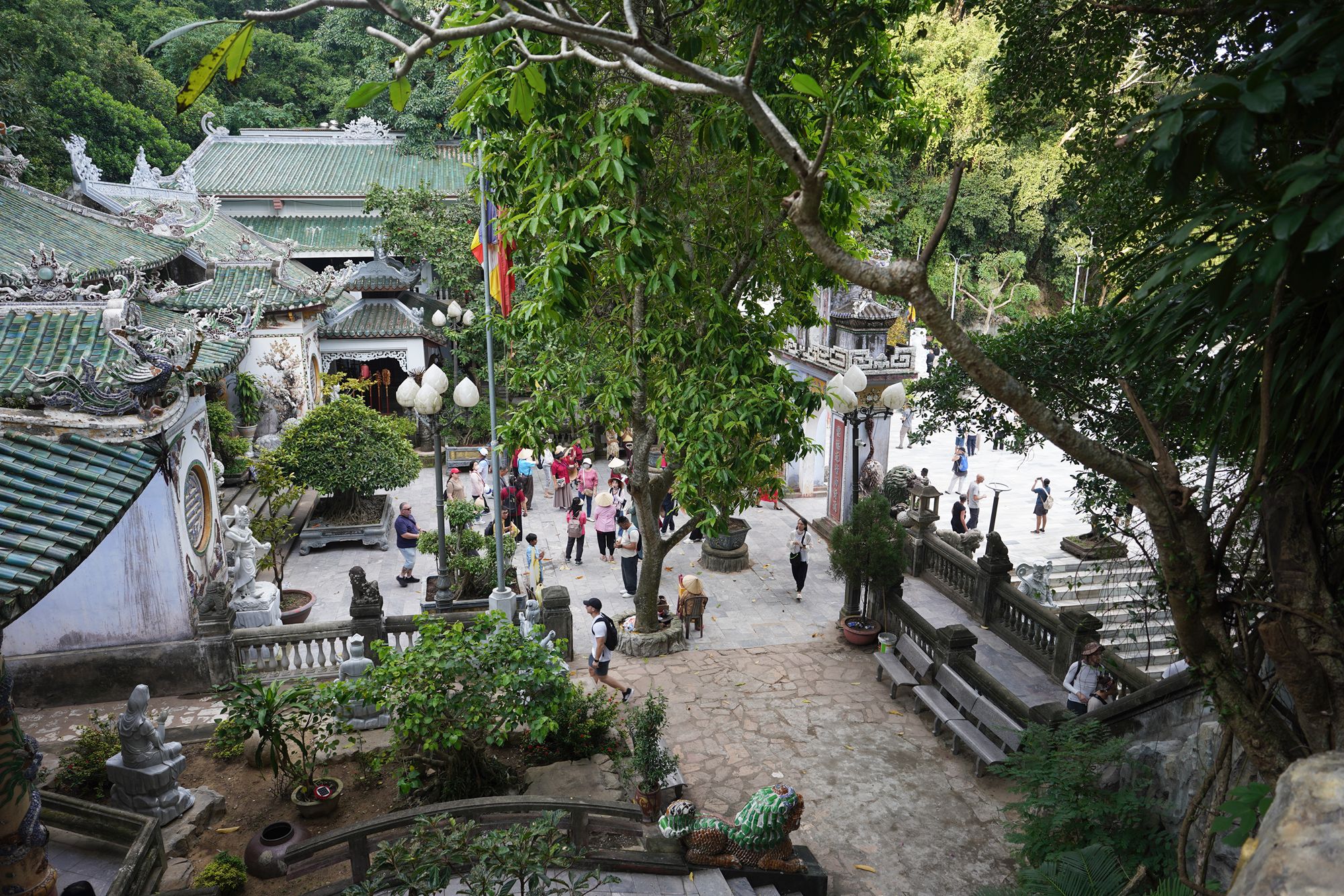
I walked down to the lower side
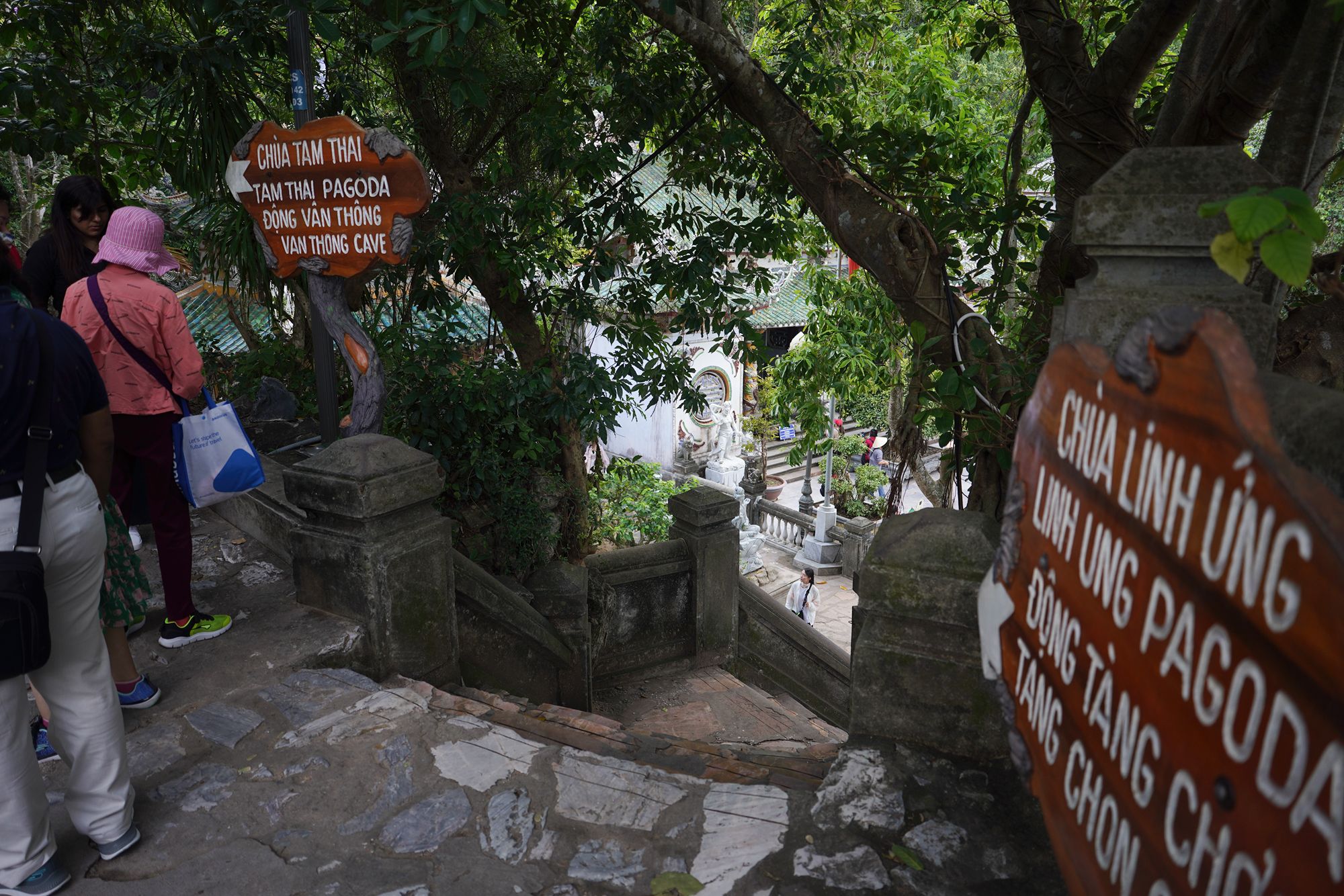
Chùa Linh Ứng Ngũ Hành Sơn Temple.
Chùa Linh Ứng Ngũ Hành Sơn, also known as Linh Ung Pagoda at Marble Mountains, is one of three Linh Ung Pagodas in Da Nang, Vietnam. It is situated on Thủy Sơn, the most prominent of the Marble Mountains, a cluster of five limestone and marble hills named after the five elements in Vietnamese philosophy: metal, wood, water, fire, and earth.
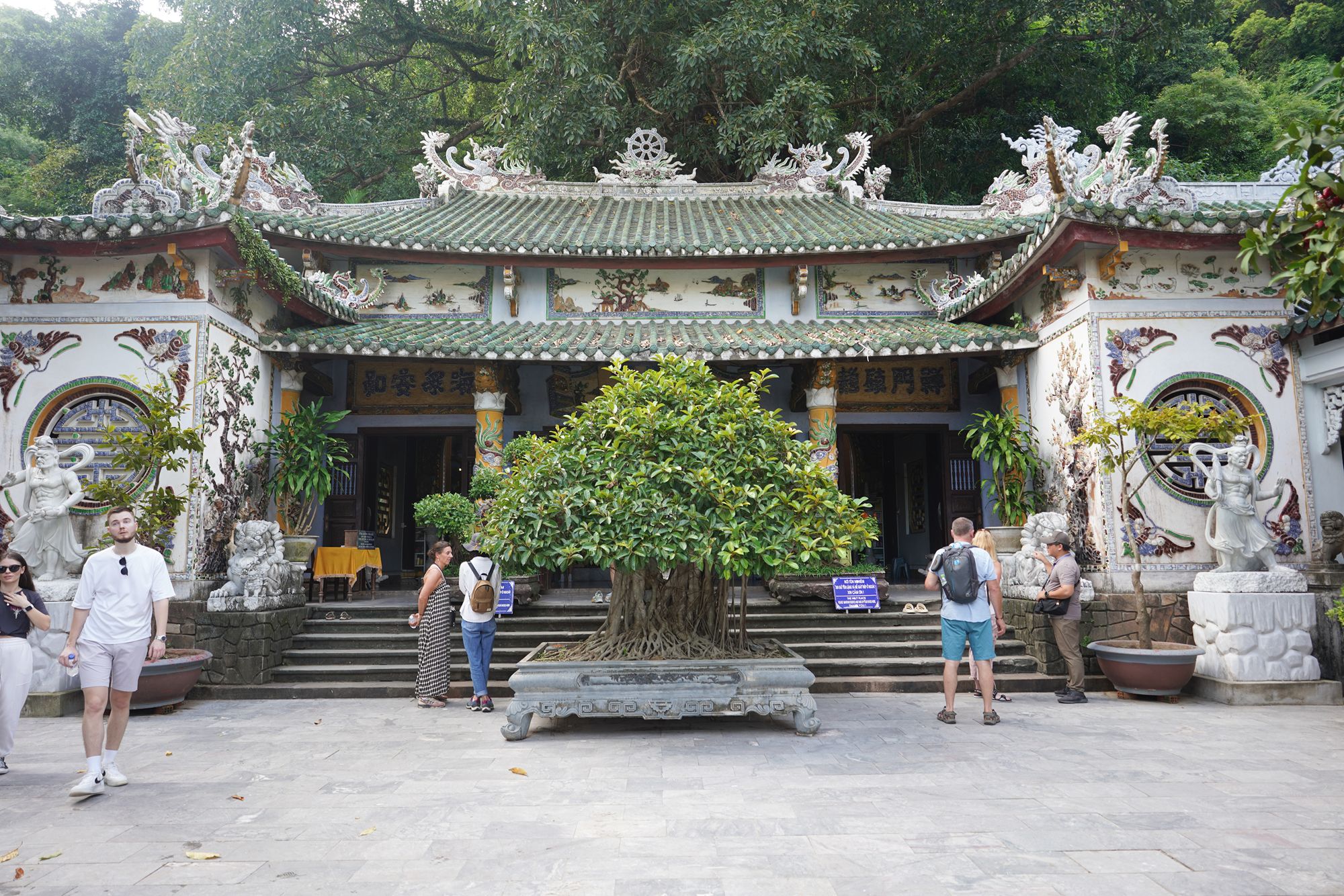
Chùa Linh Ứng Ngũ Hành Sơn has roots in ancient Vietnamese culture and Buddhism. While it was renovated in recent years, its spiritual significance dates back centuries as the Marble Mountains have been a pilgrimage site for devotees and monks.
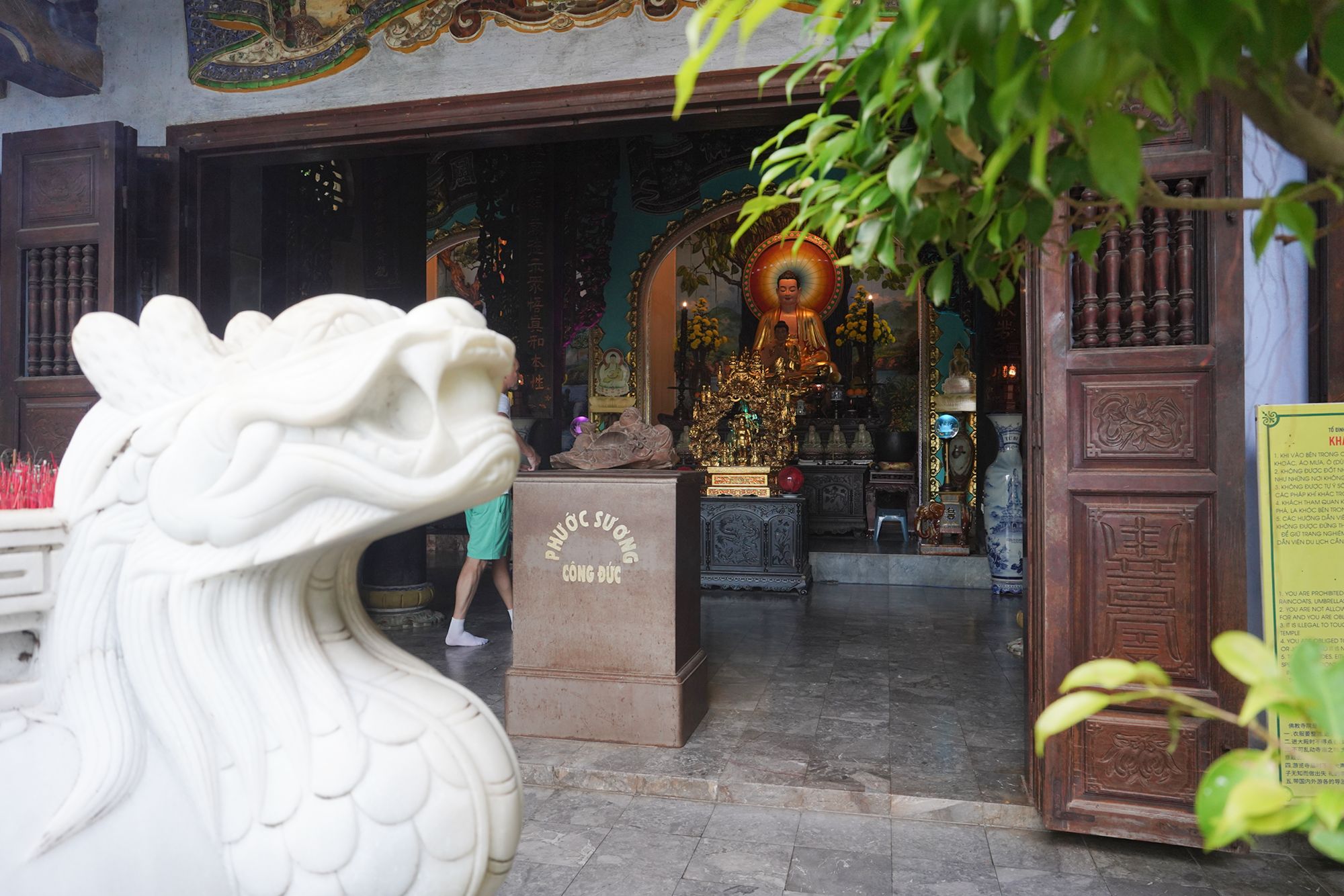
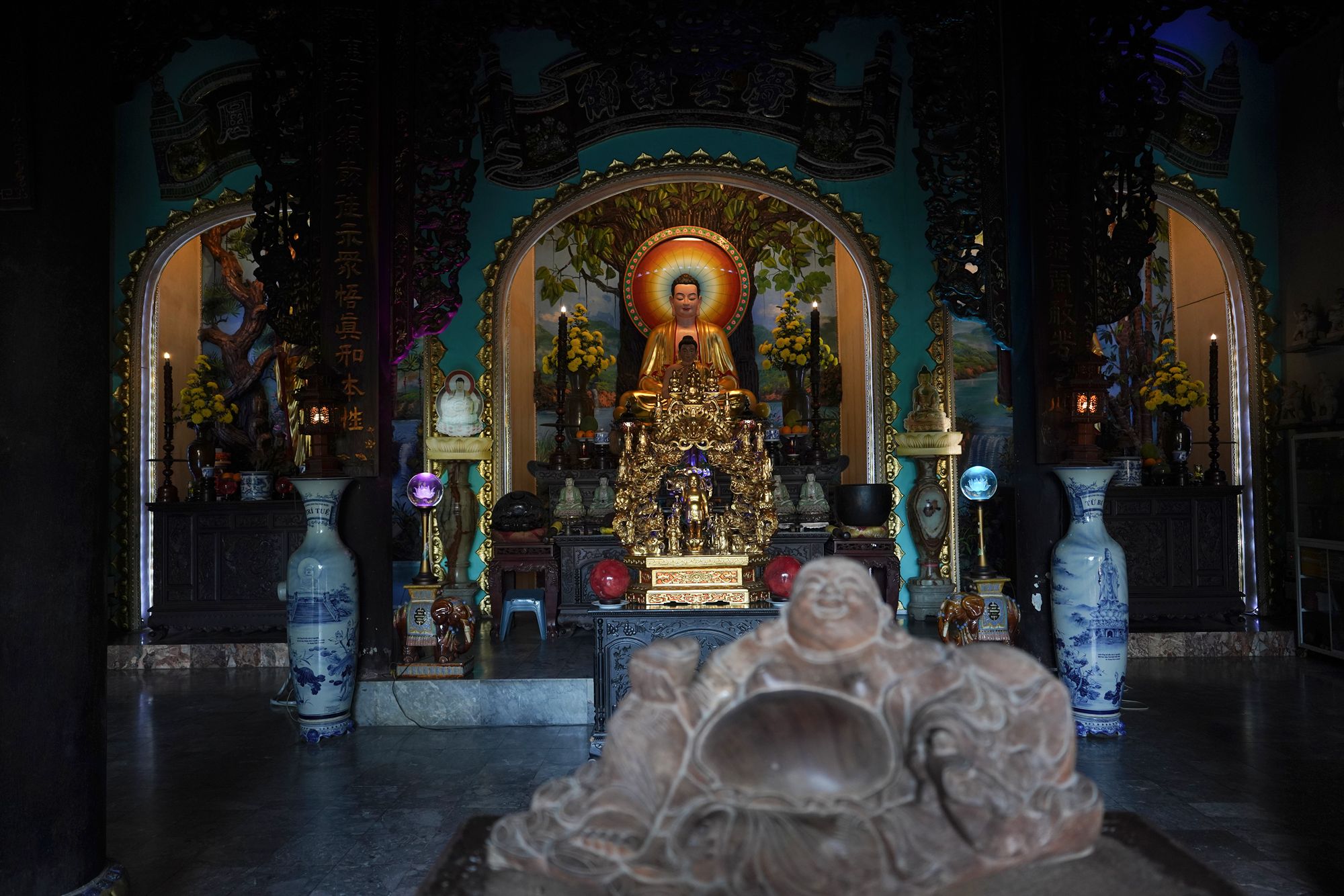
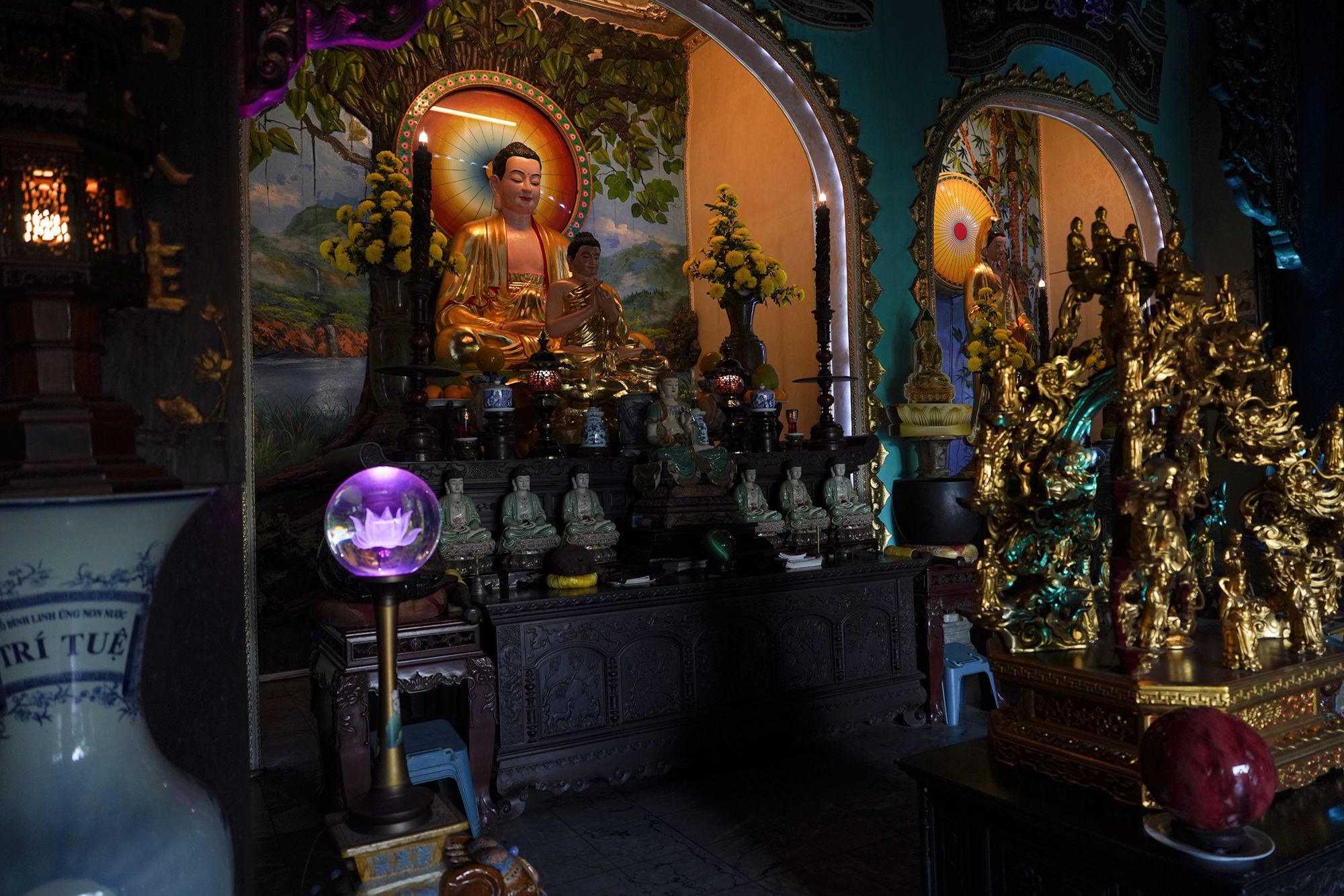
In the courtyard, there is a gate leading to an even lower level.
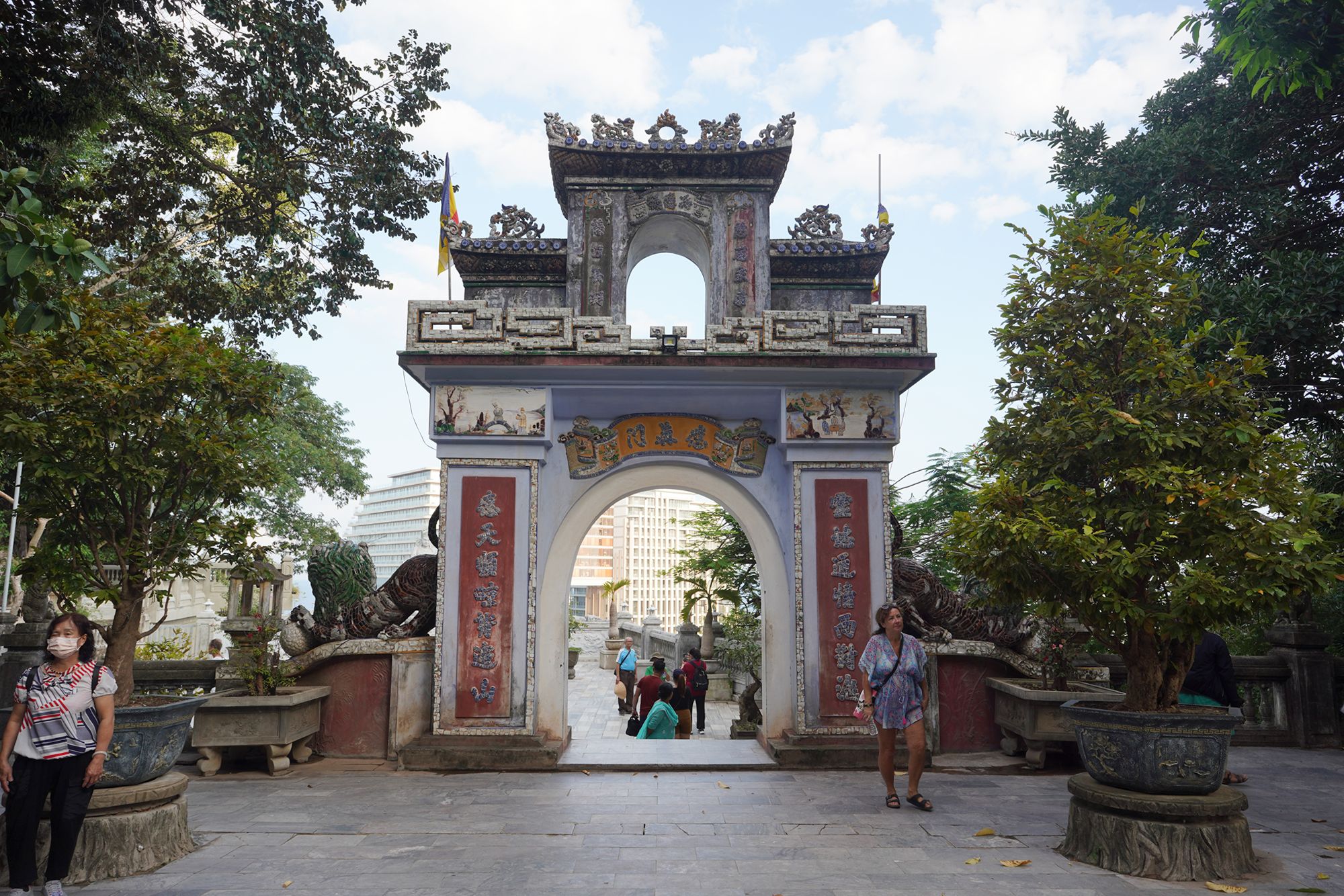
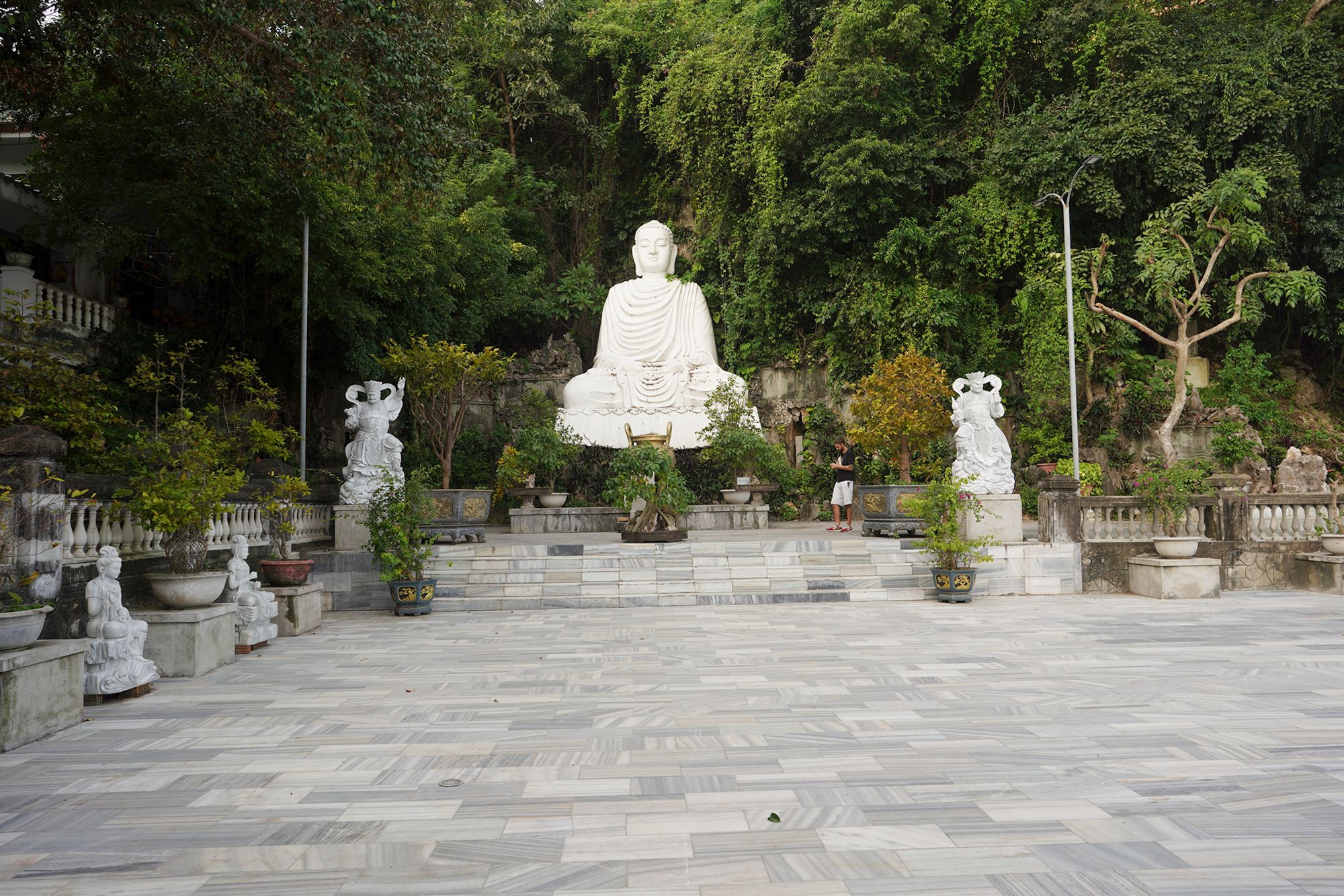
From the lower courtyard, I had a view of the surrounding buildings in the area.
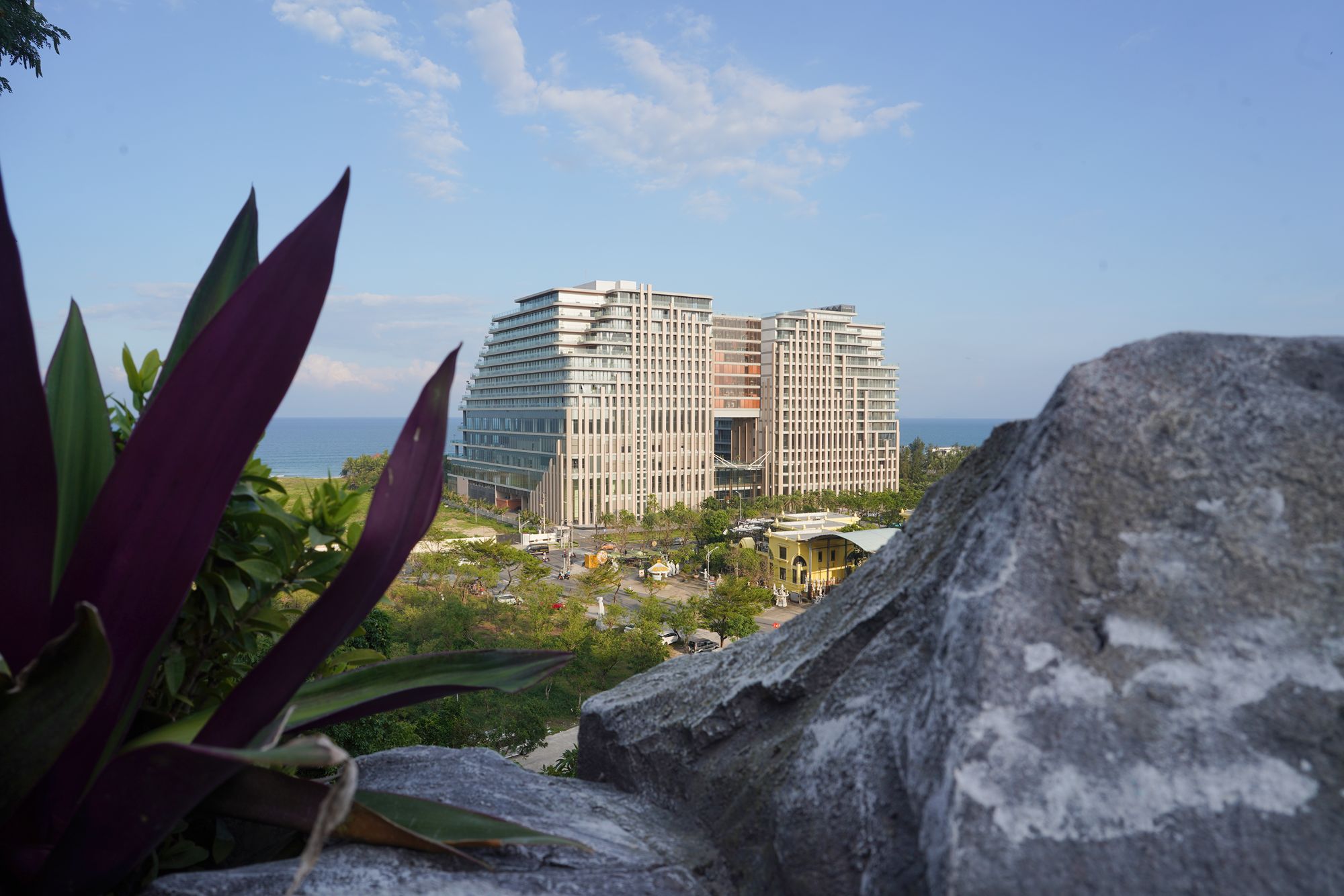
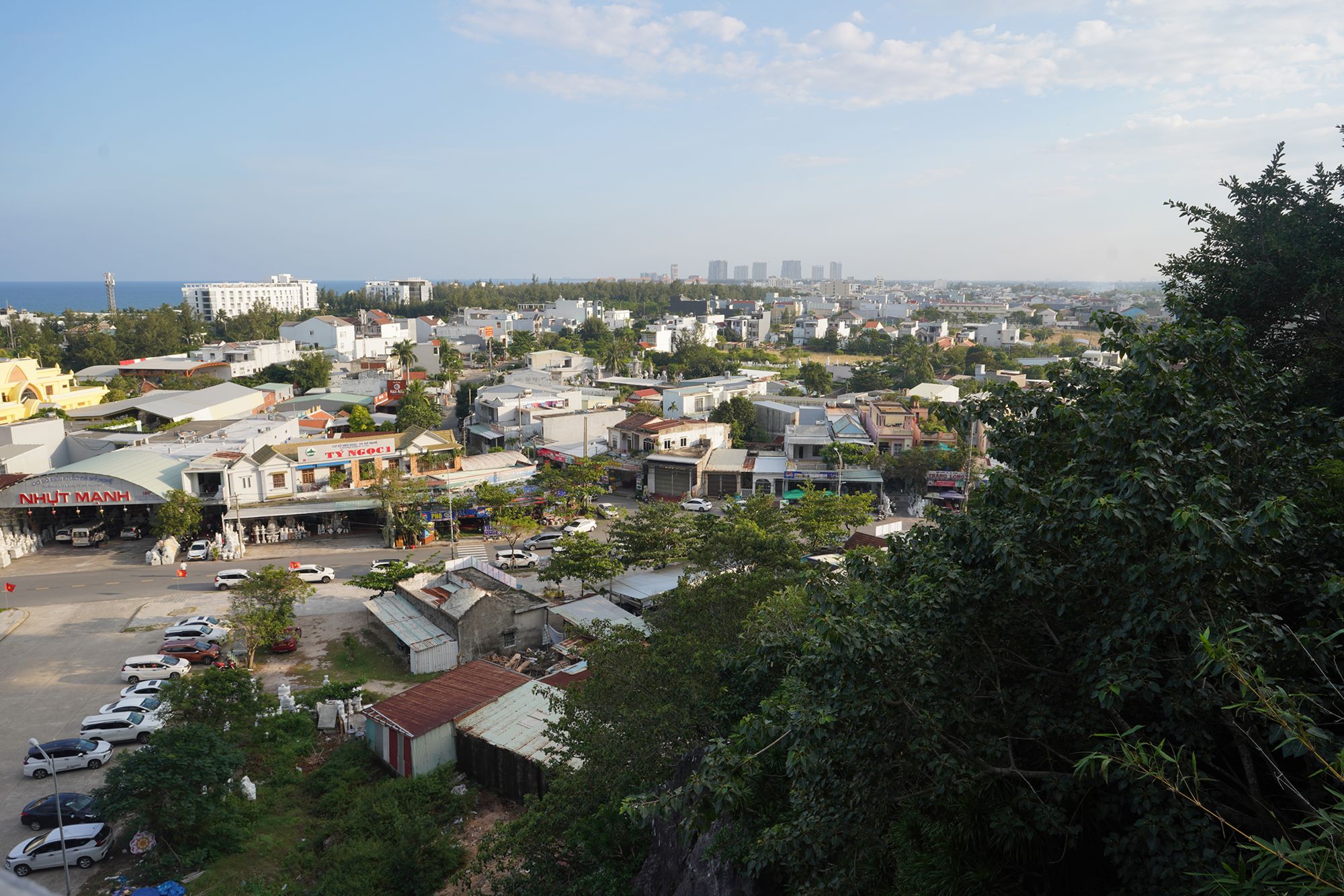
I walked back to the upper courtyard and continued toward the higher level.
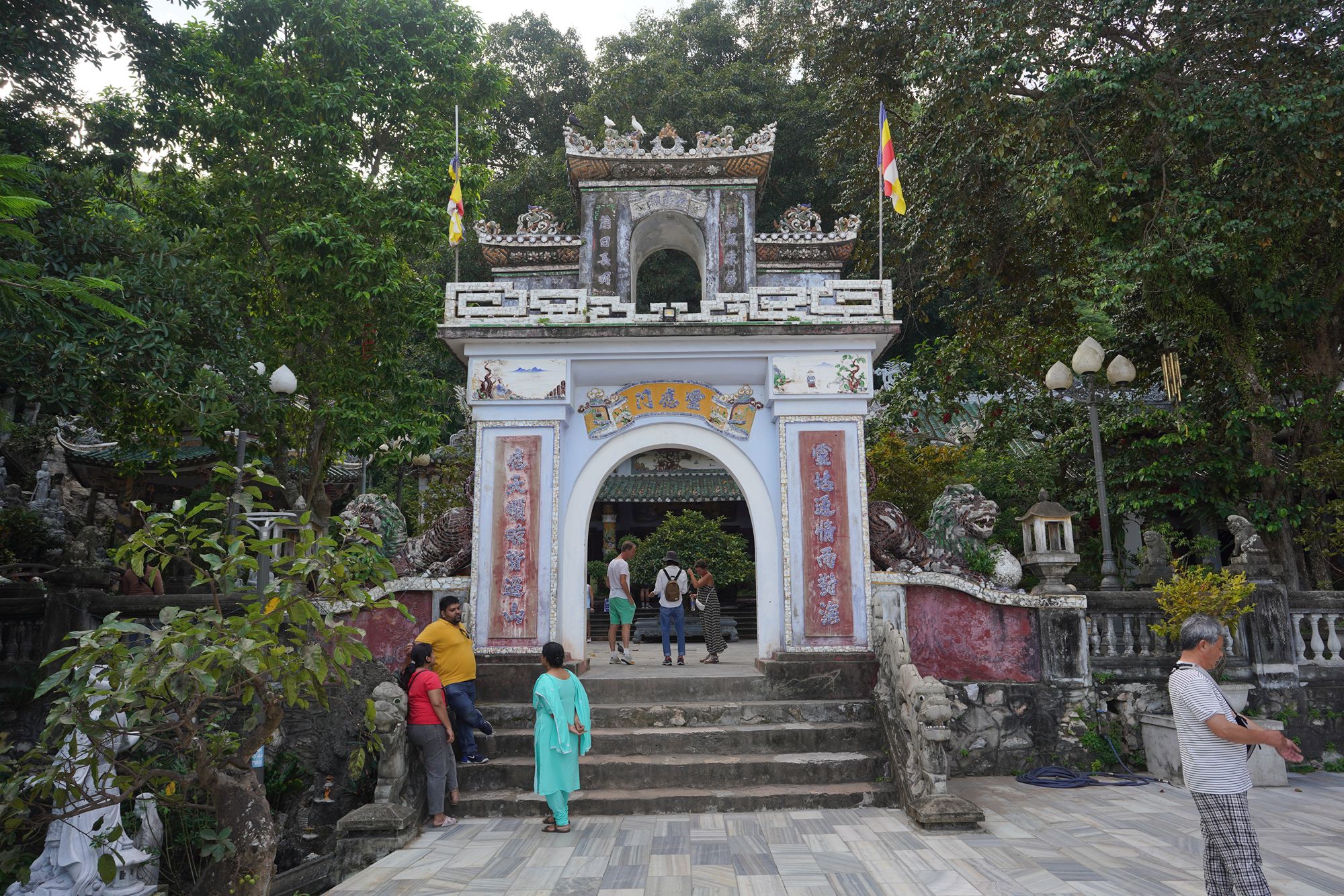
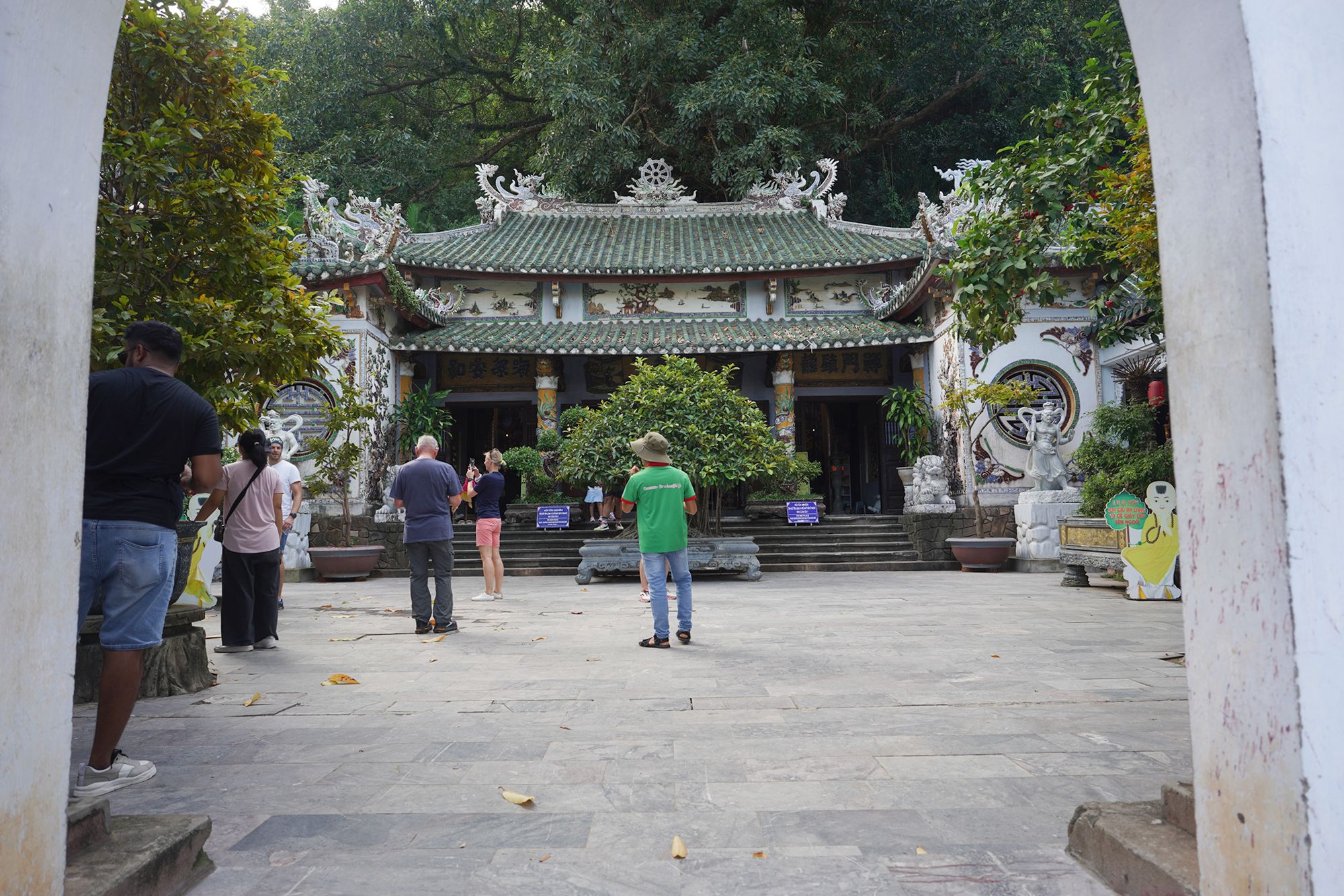
I returned to the sitting Buddha statue.
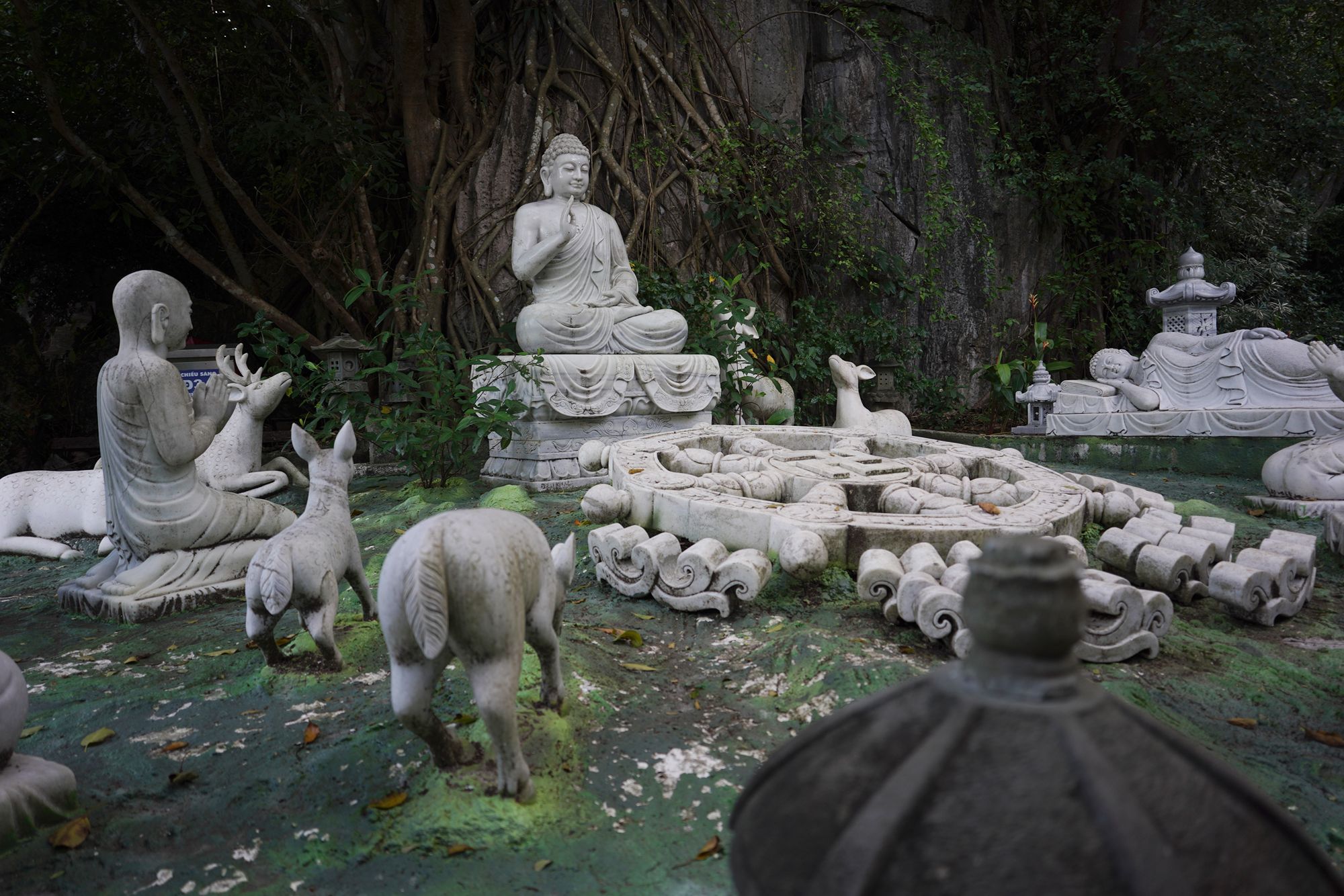
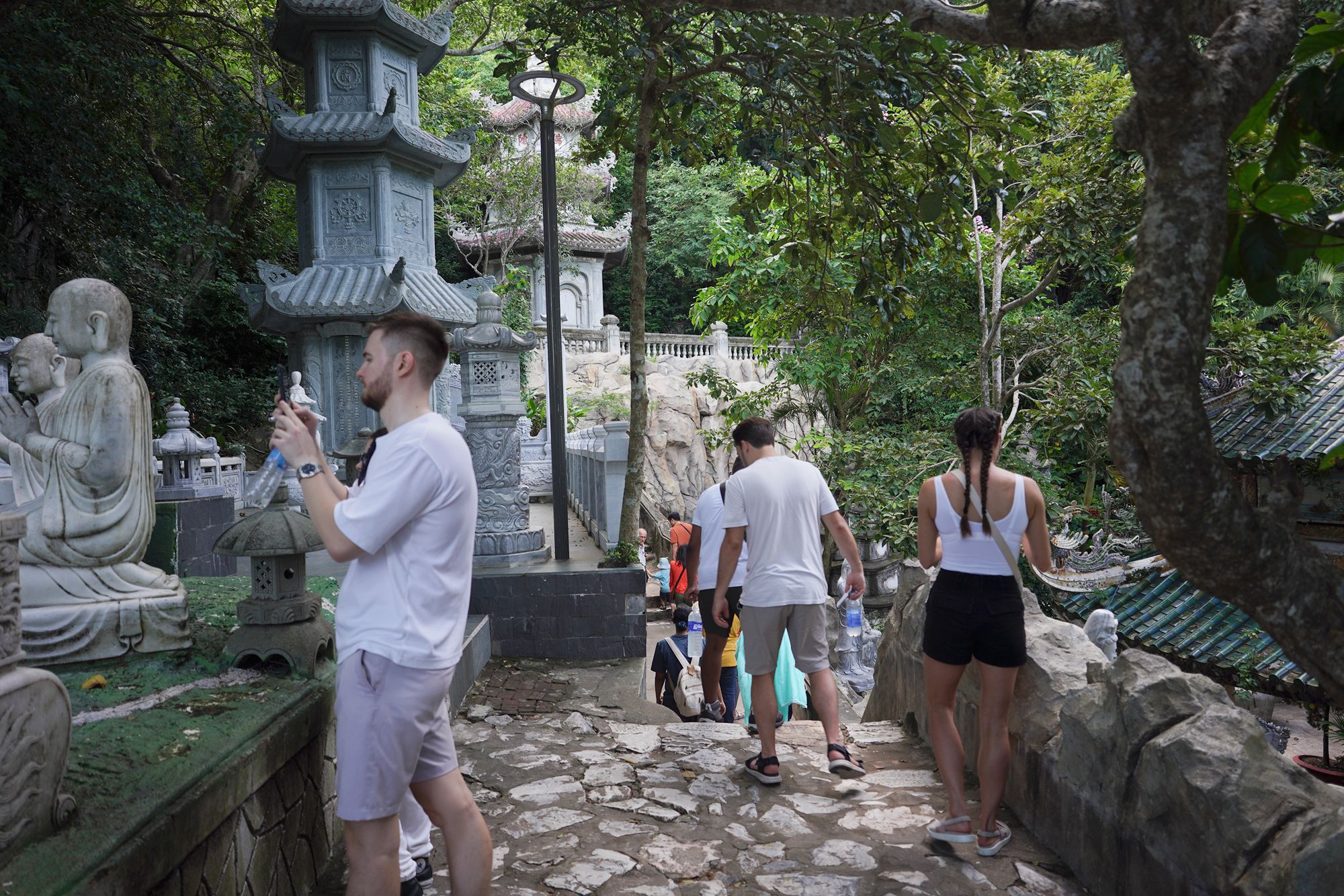
Next, I moved on to explore the other side of the area.
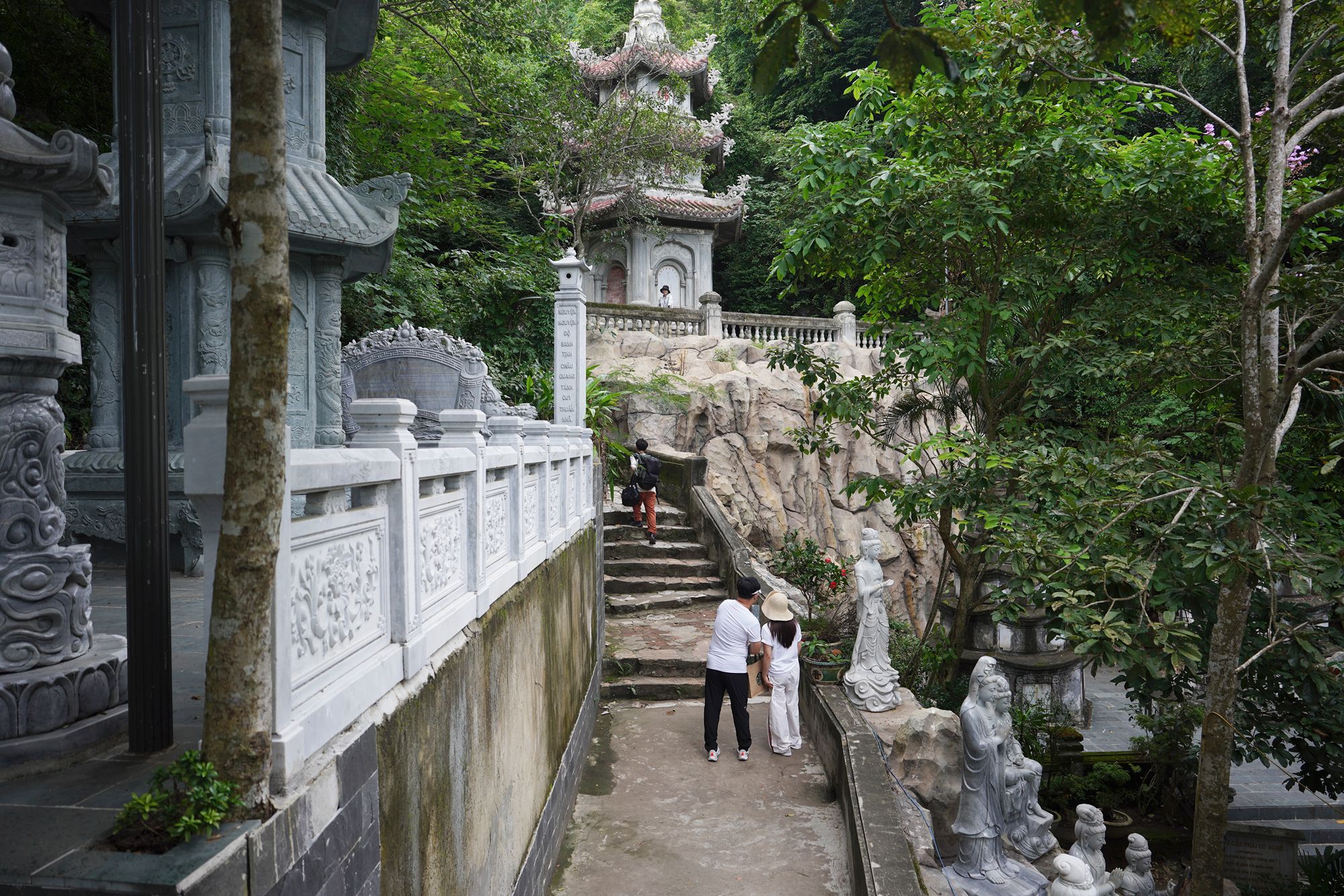
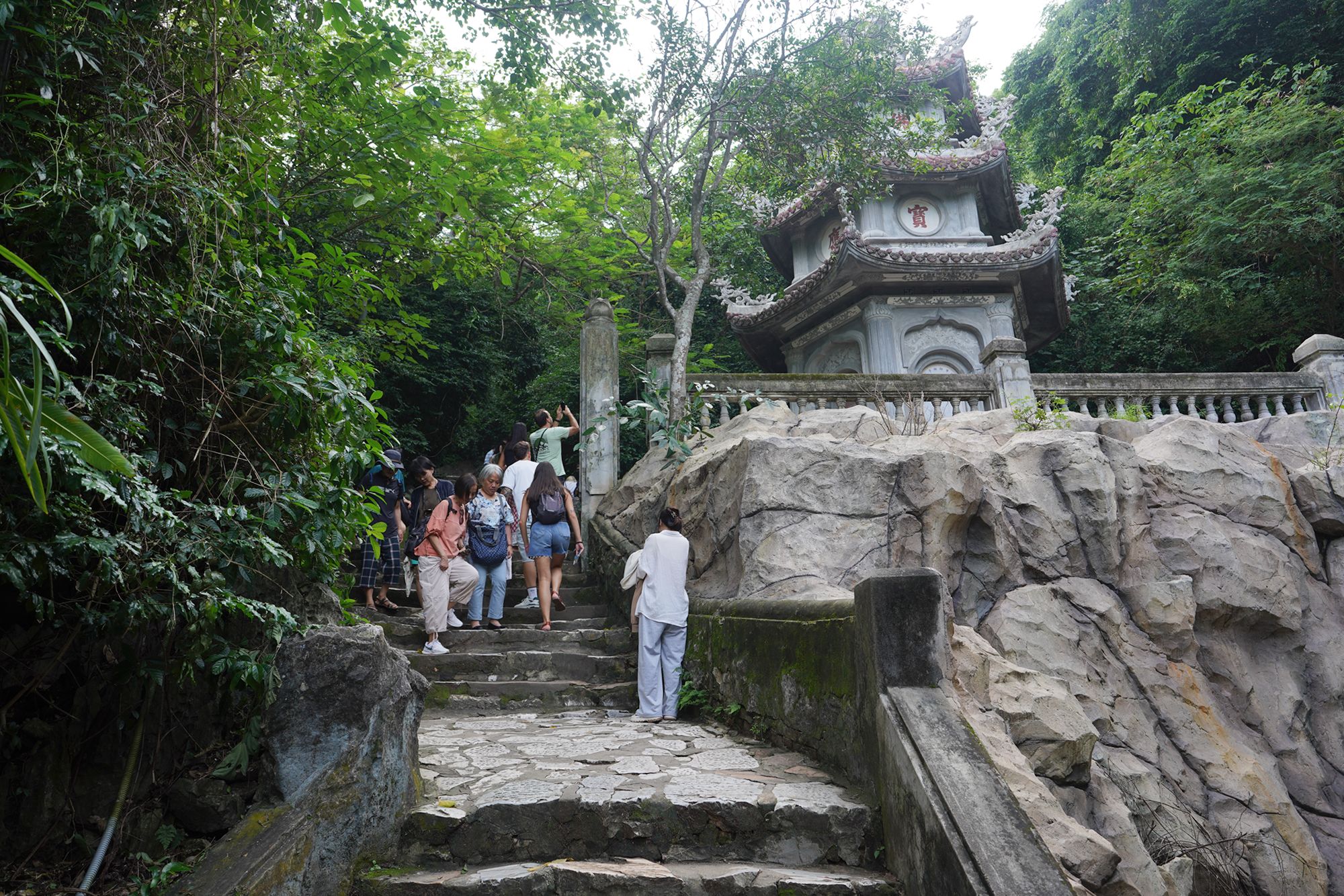
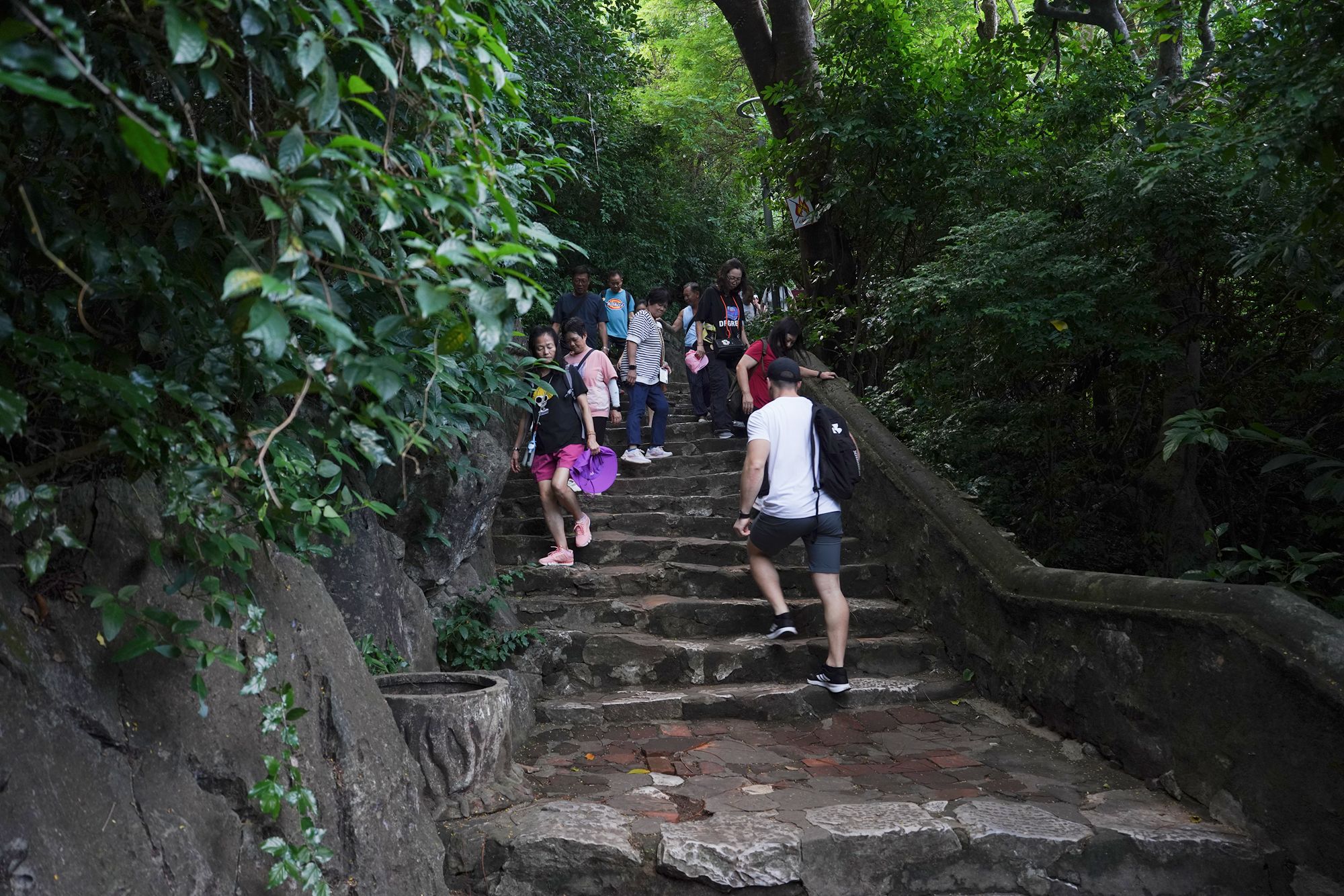
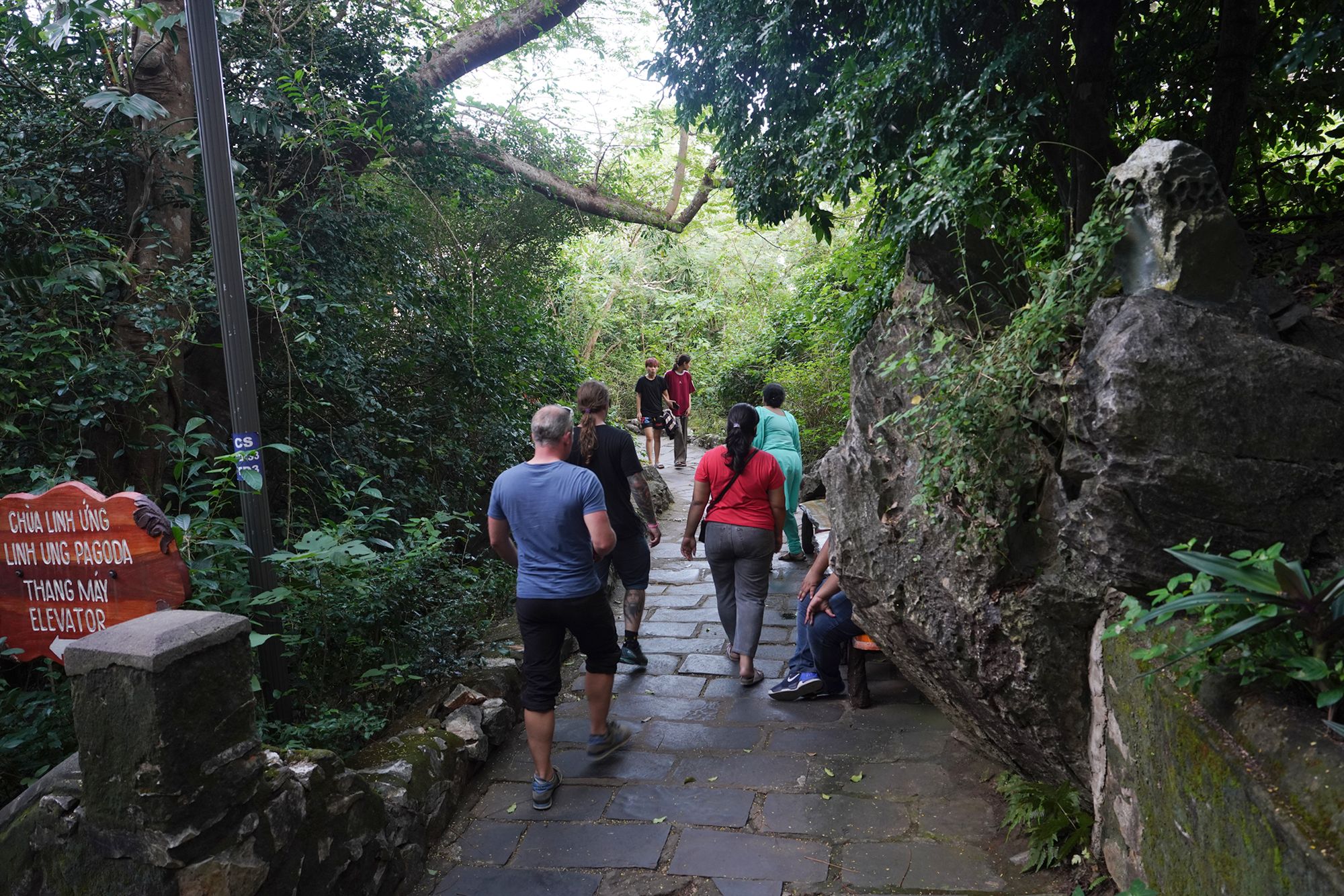
There was a spot offering a view of the ocean.
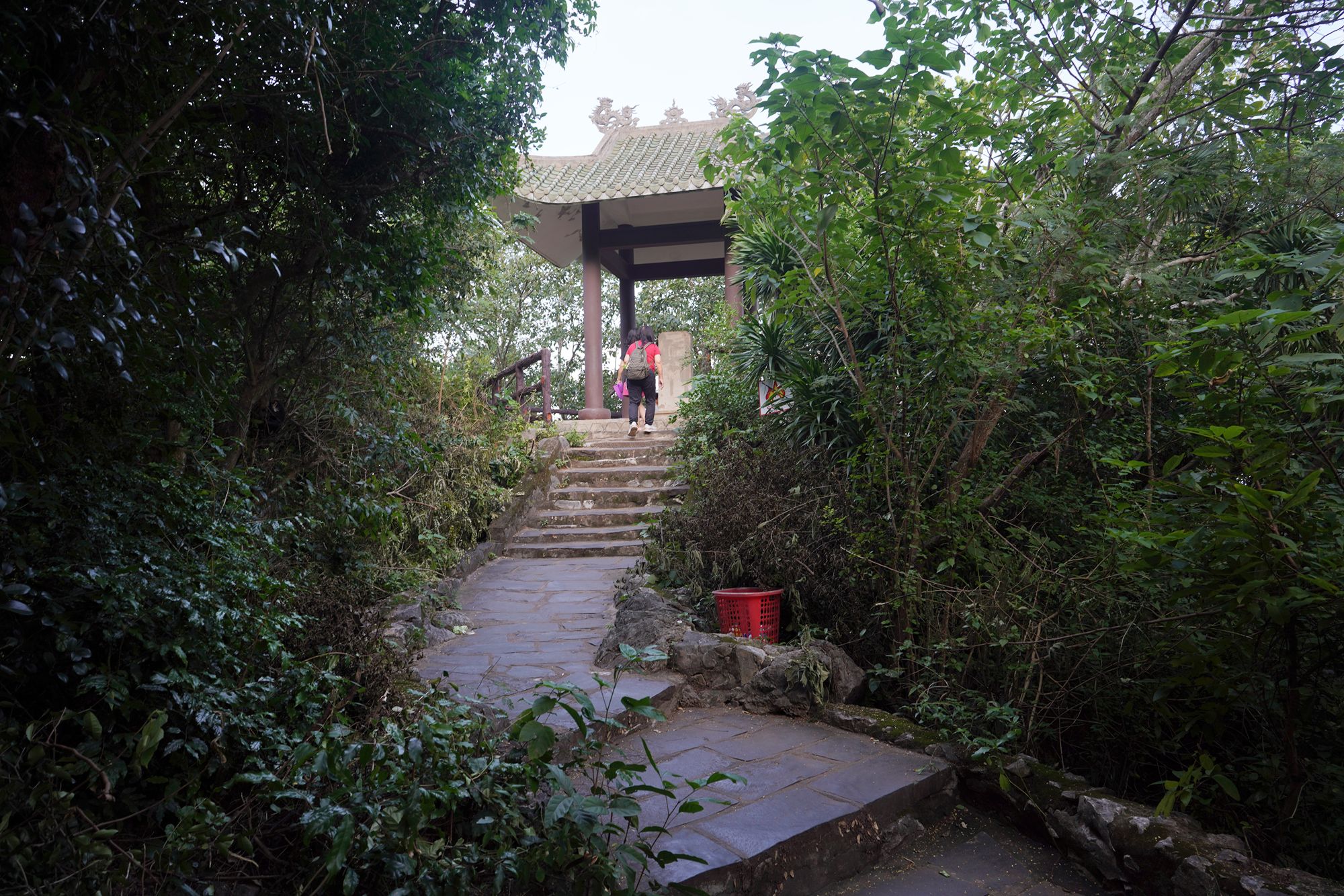
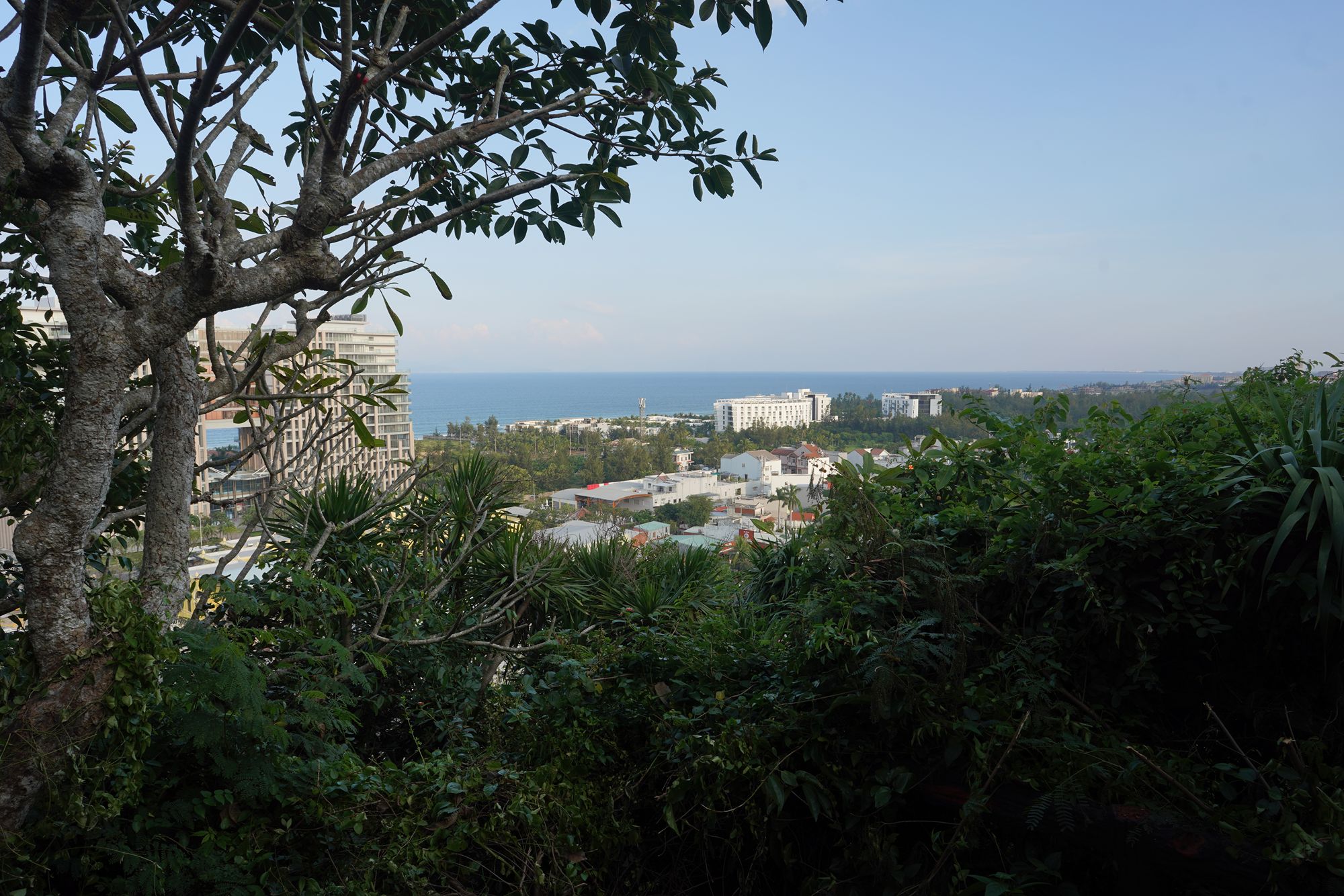
I continued to the other side of the mountain.
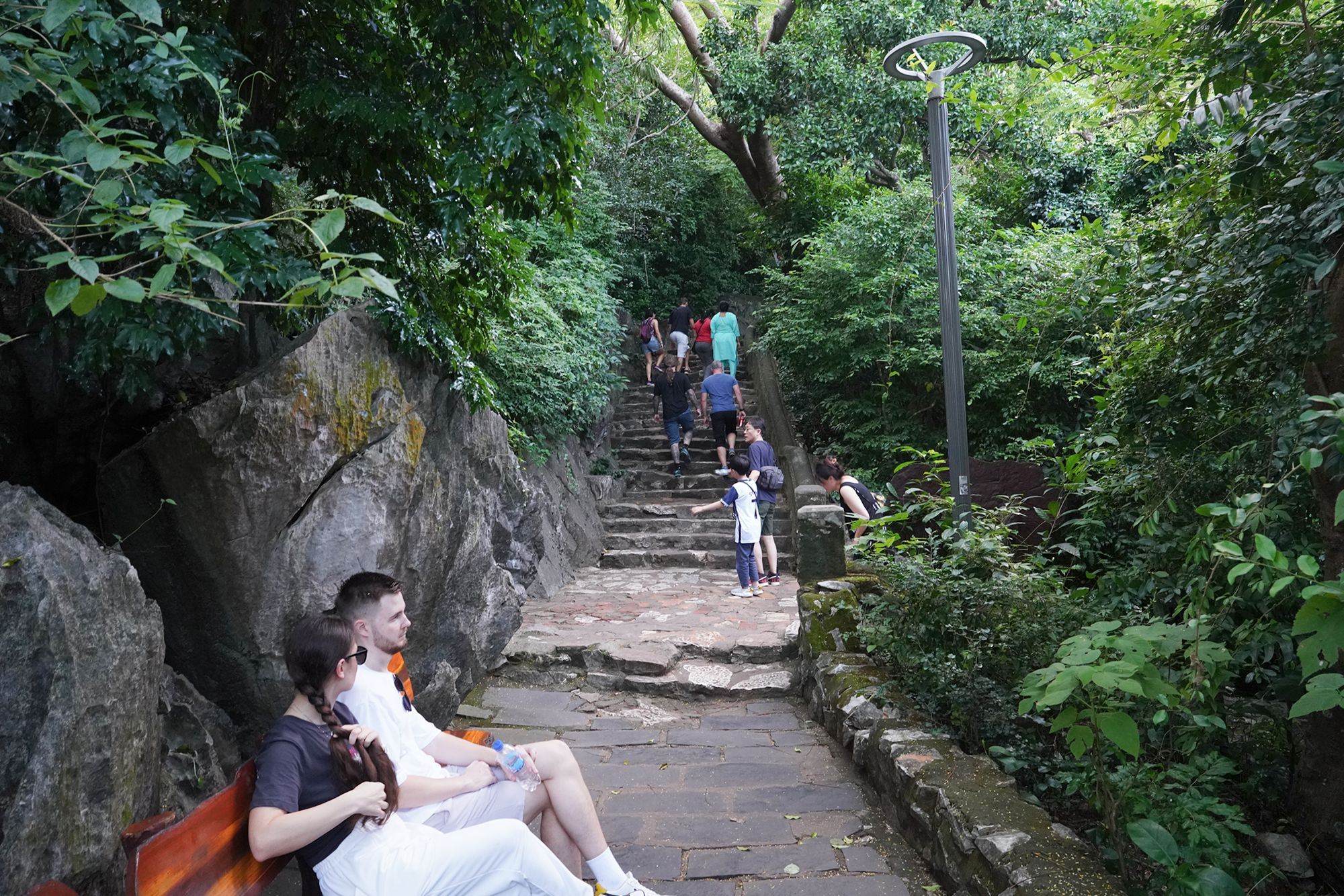
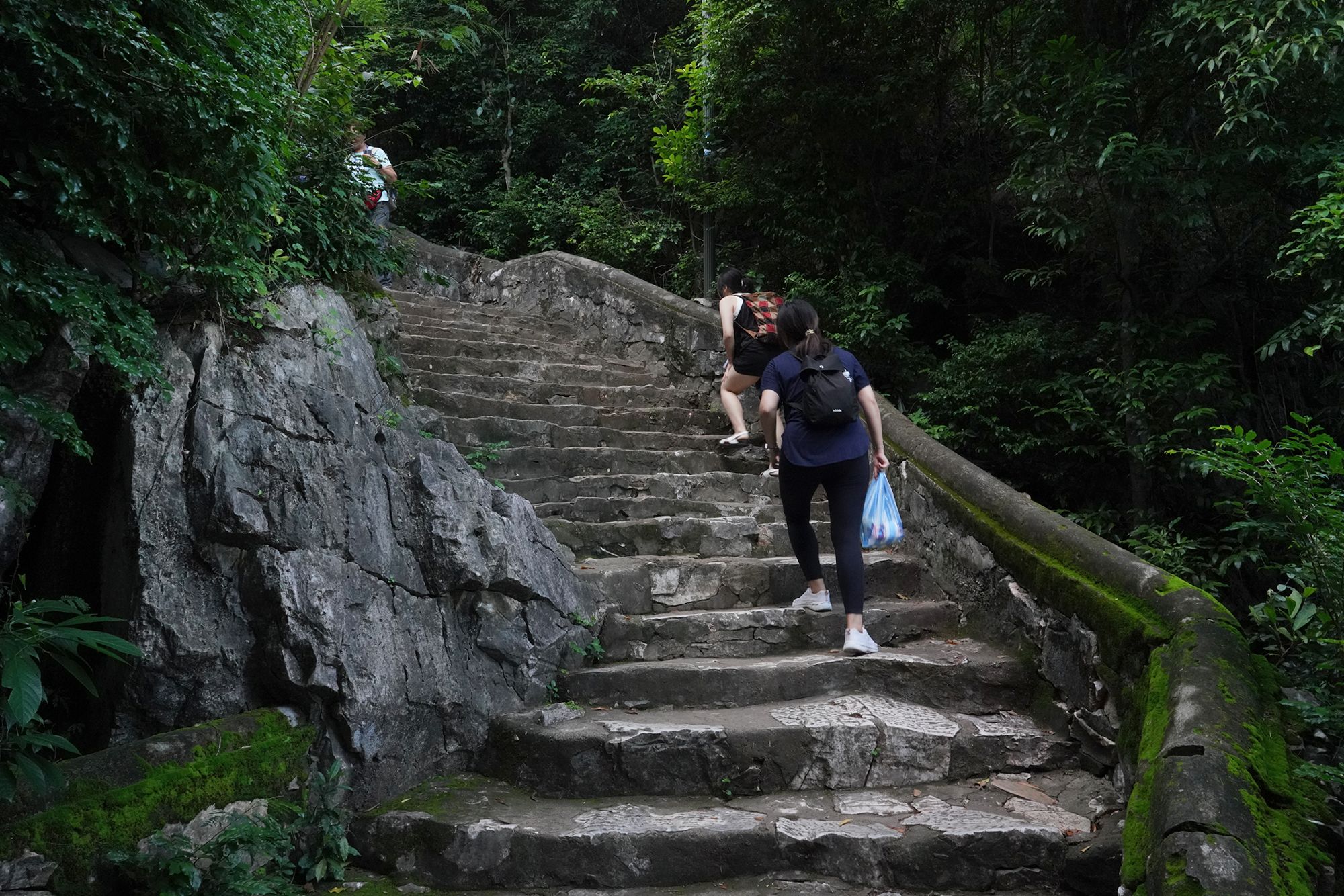
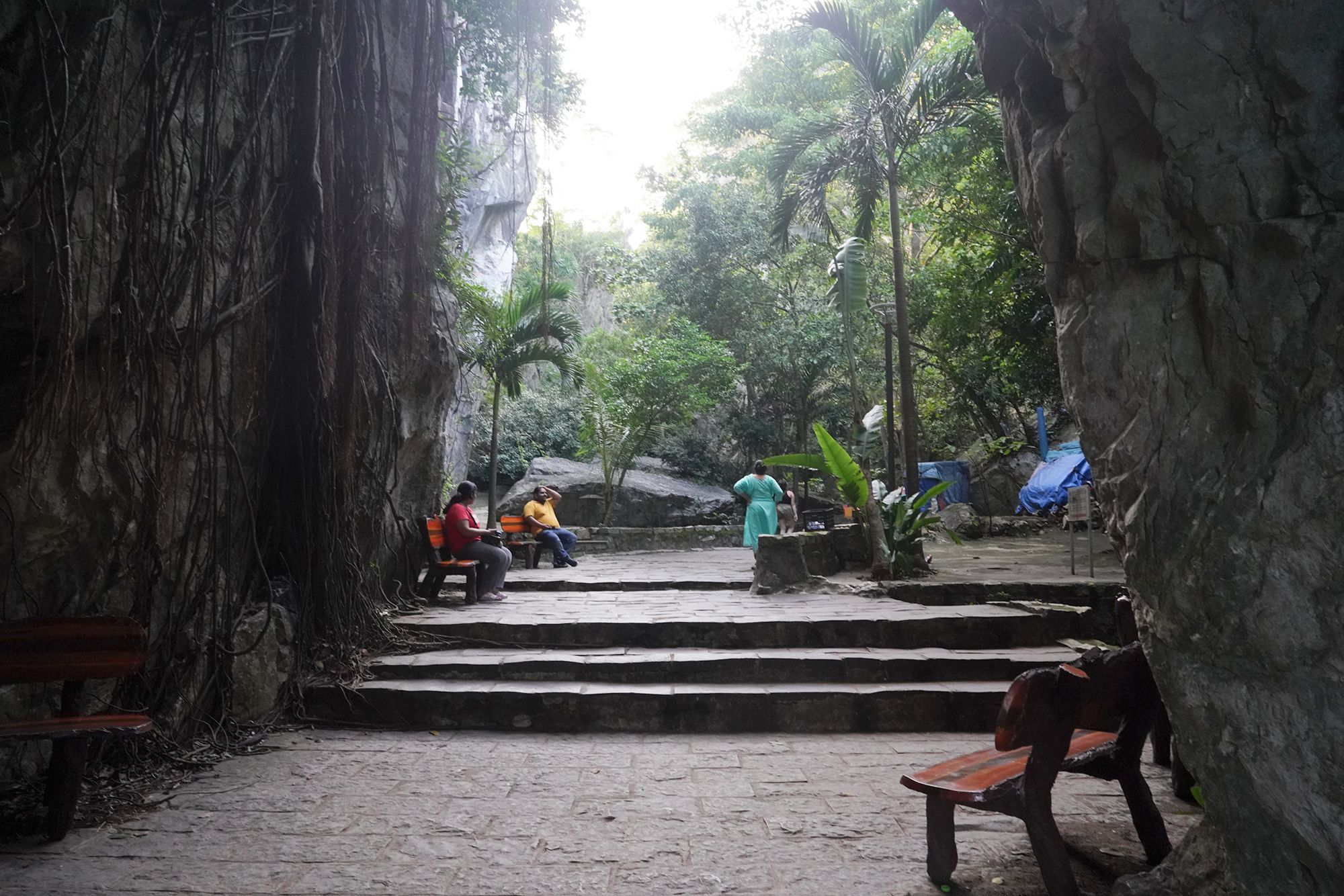
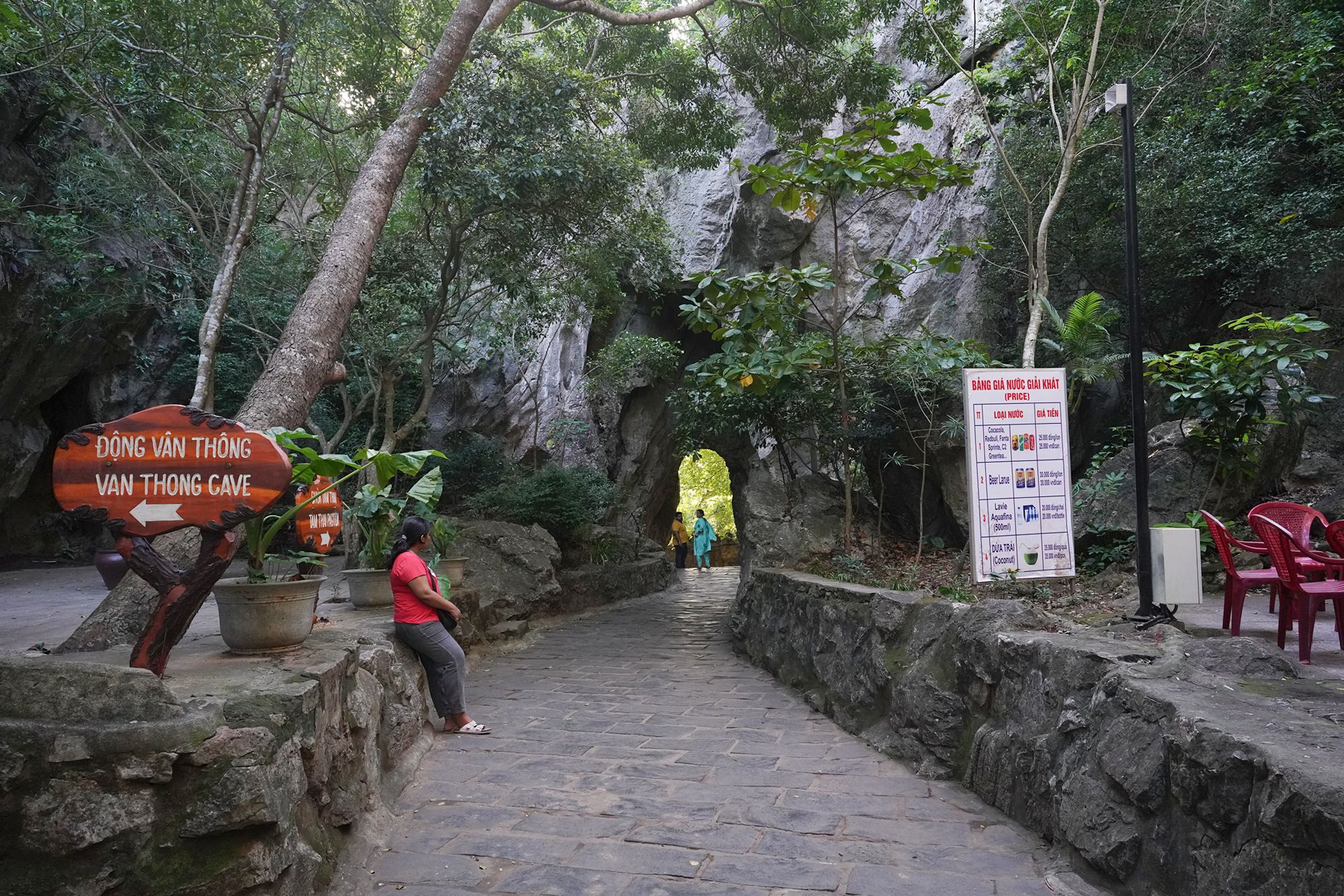
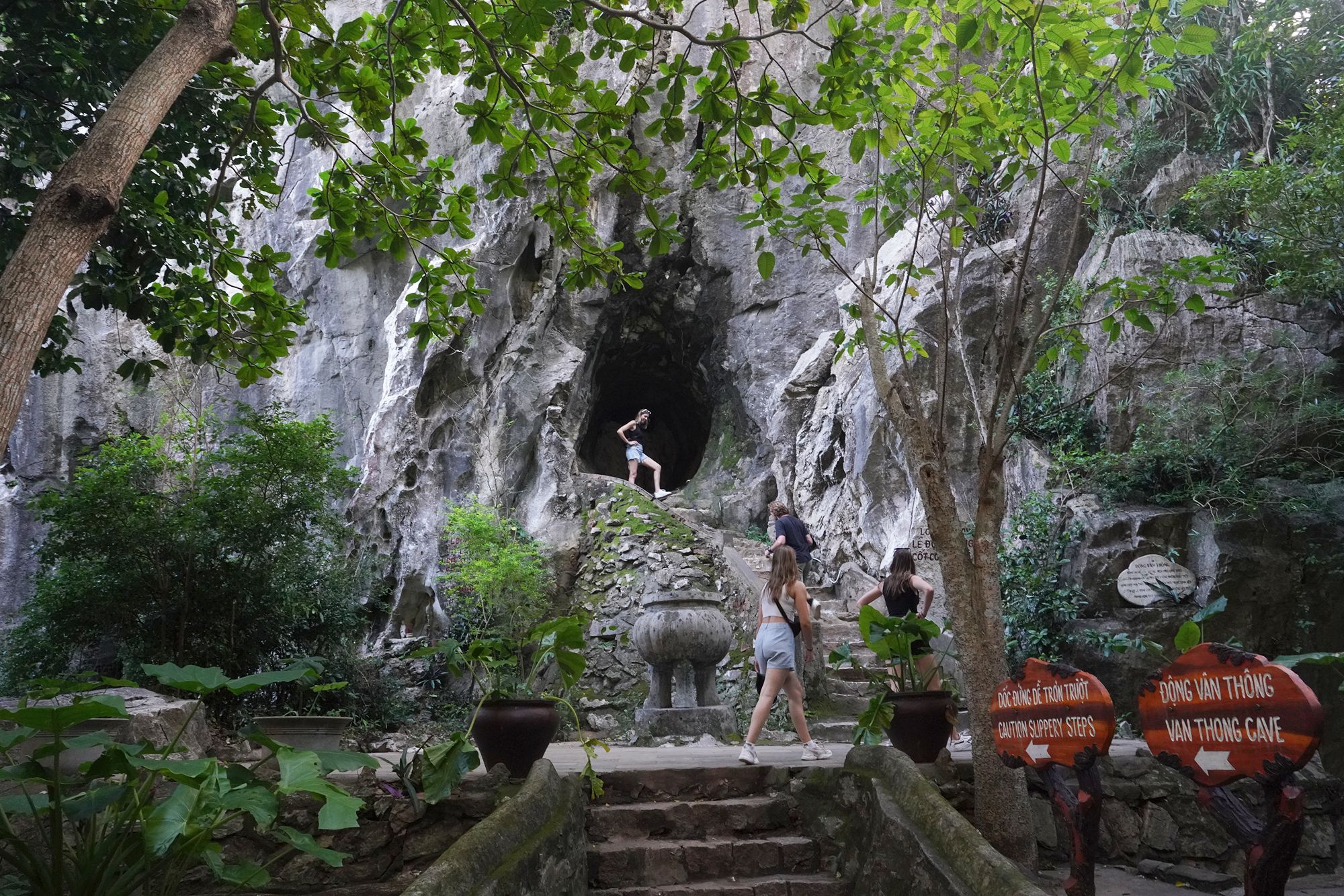
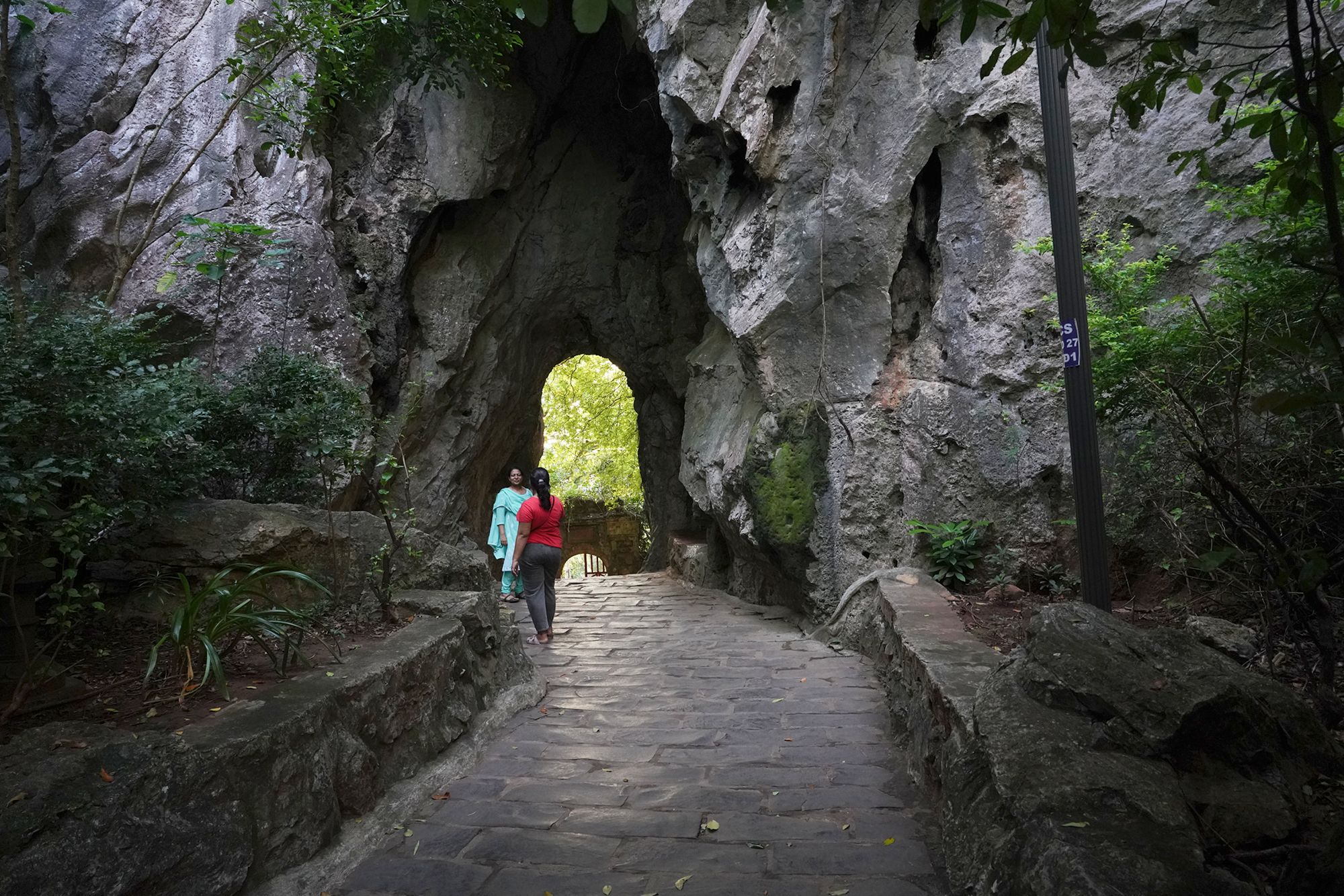
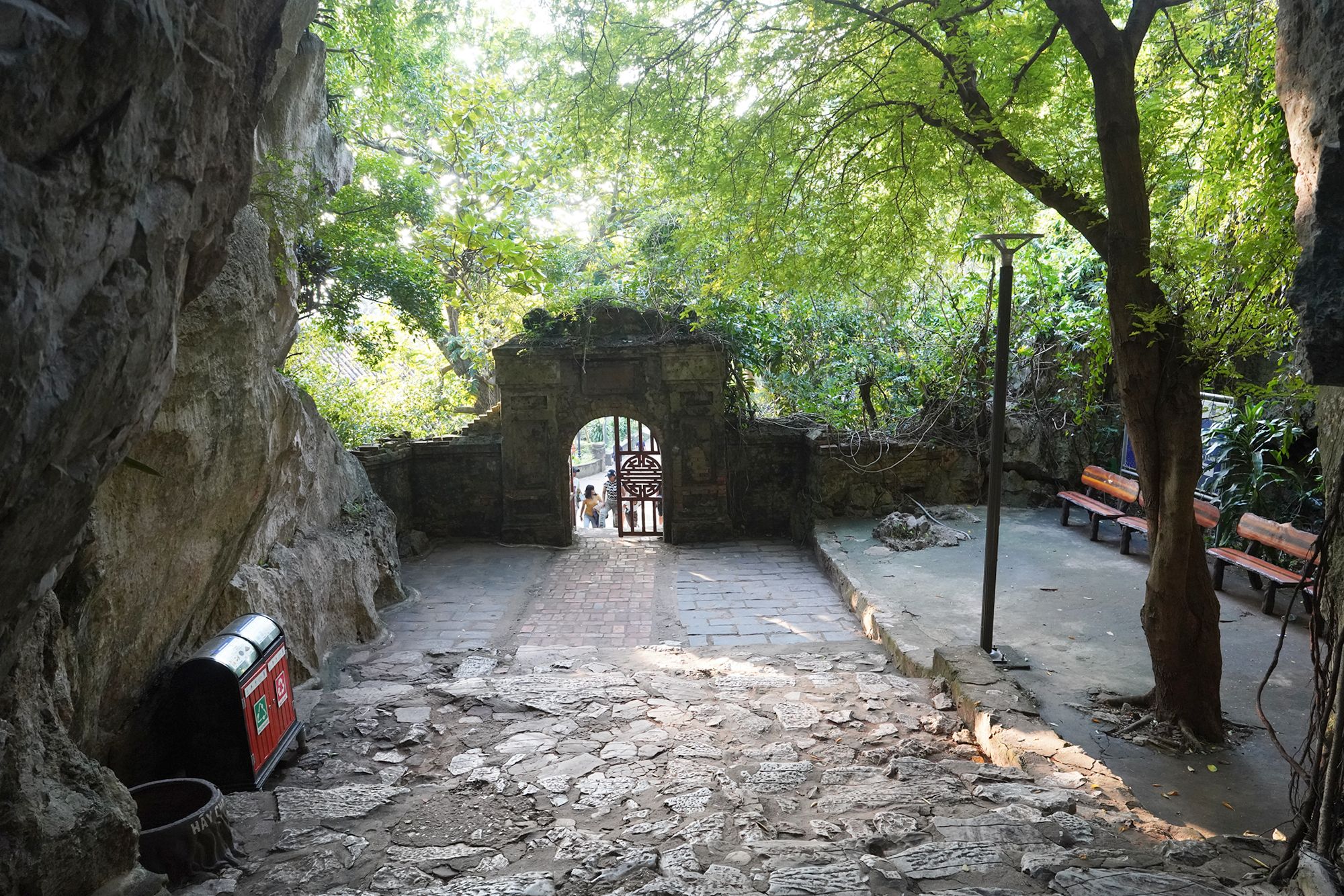
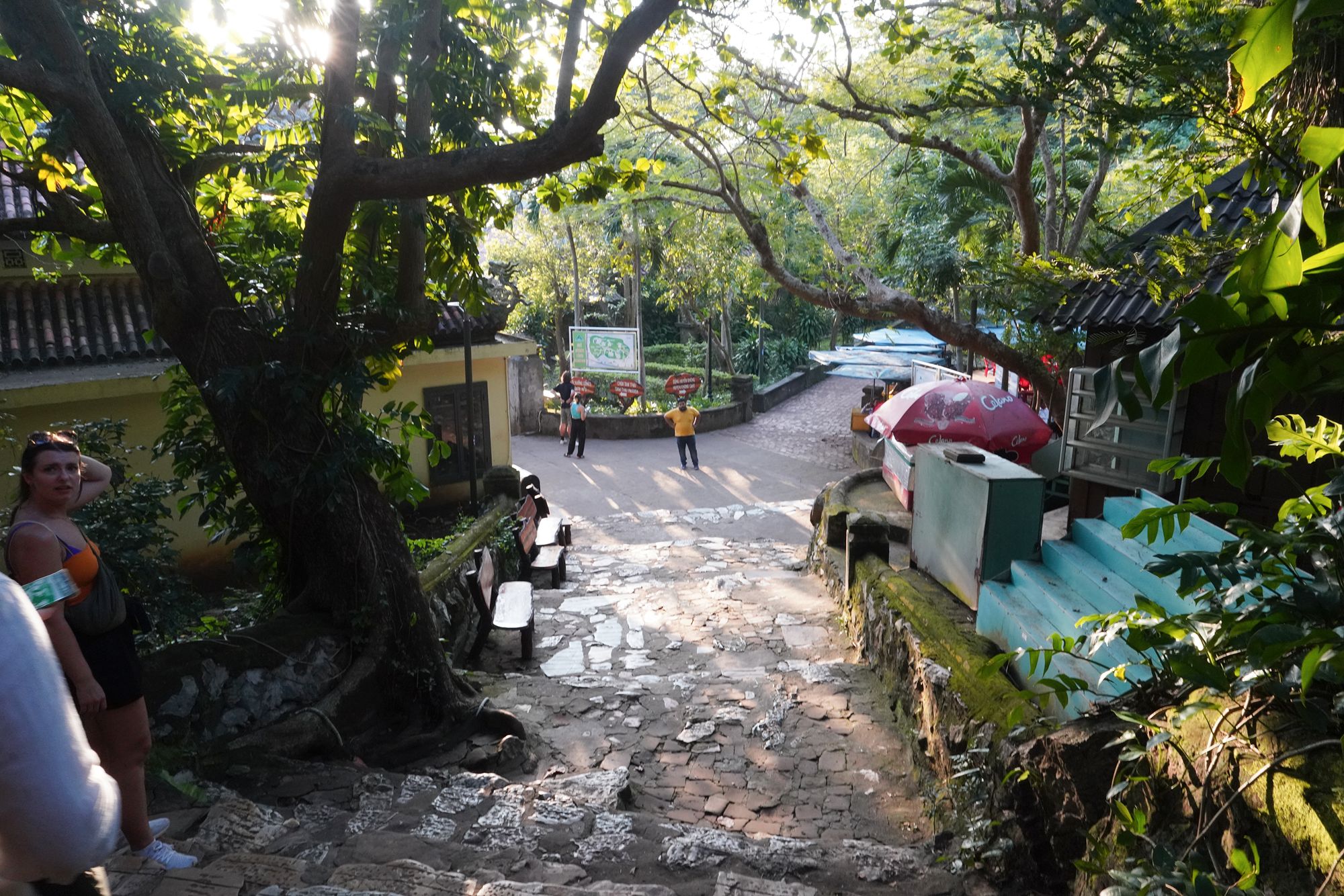
Toward Huyen Khong Cave,
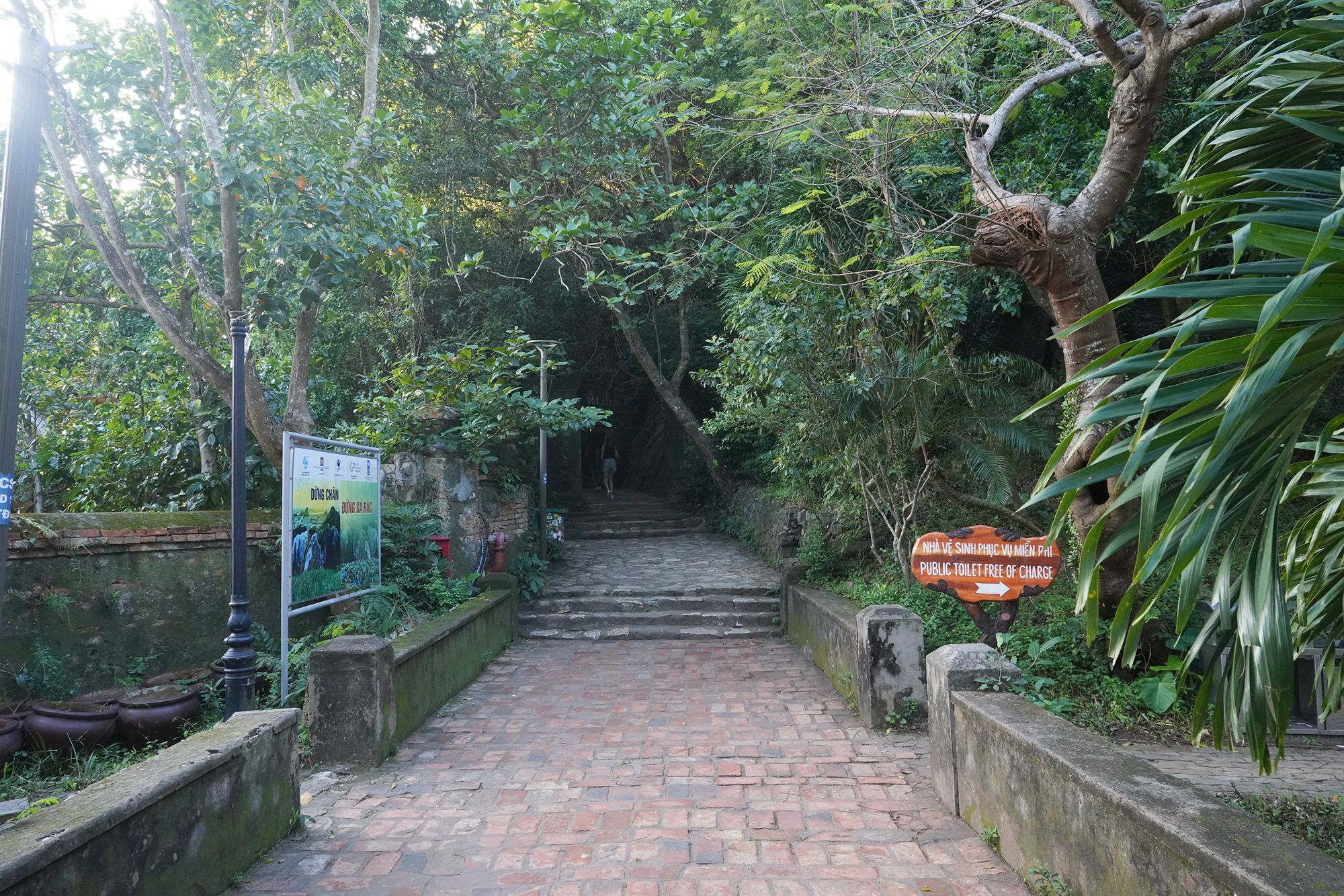
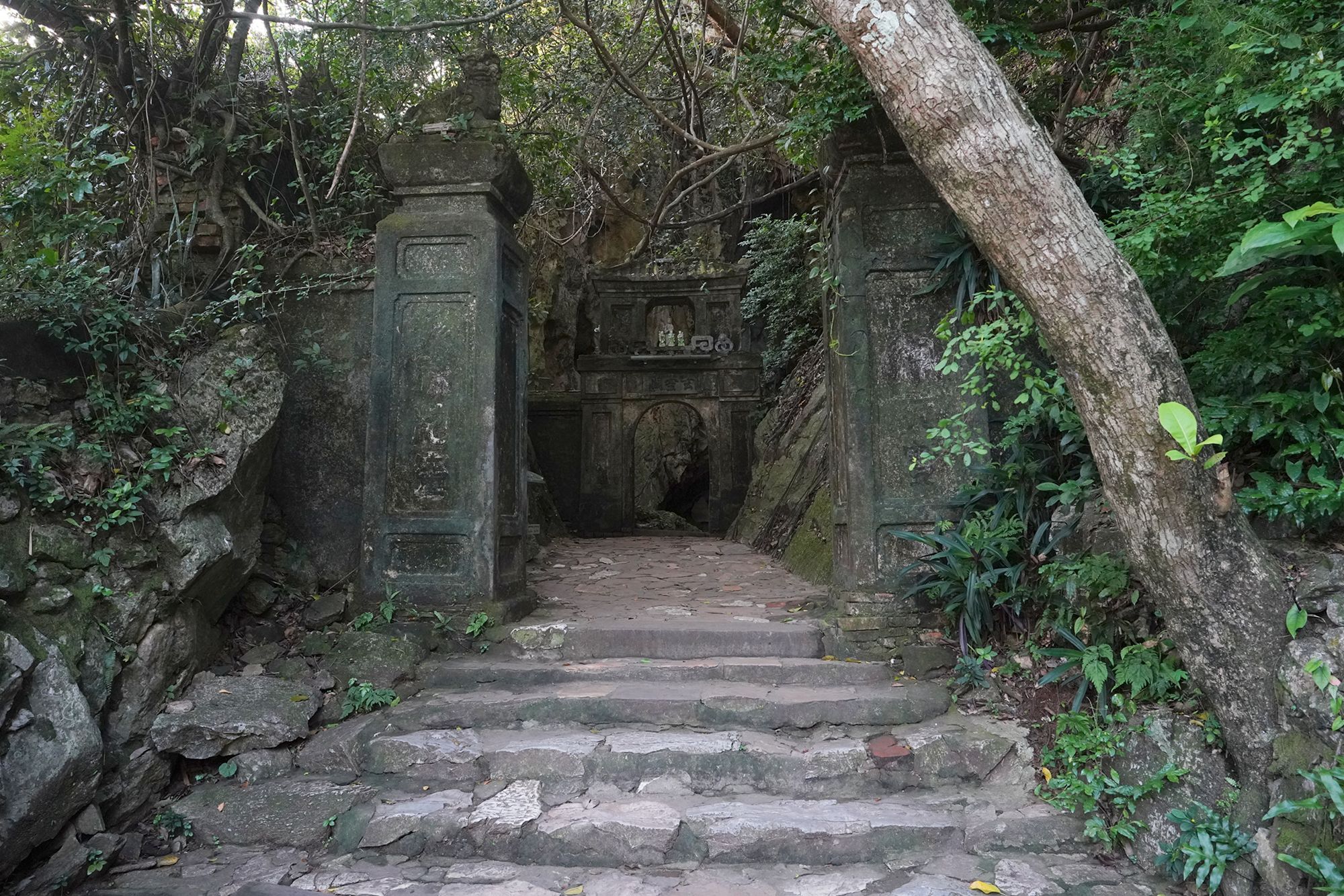
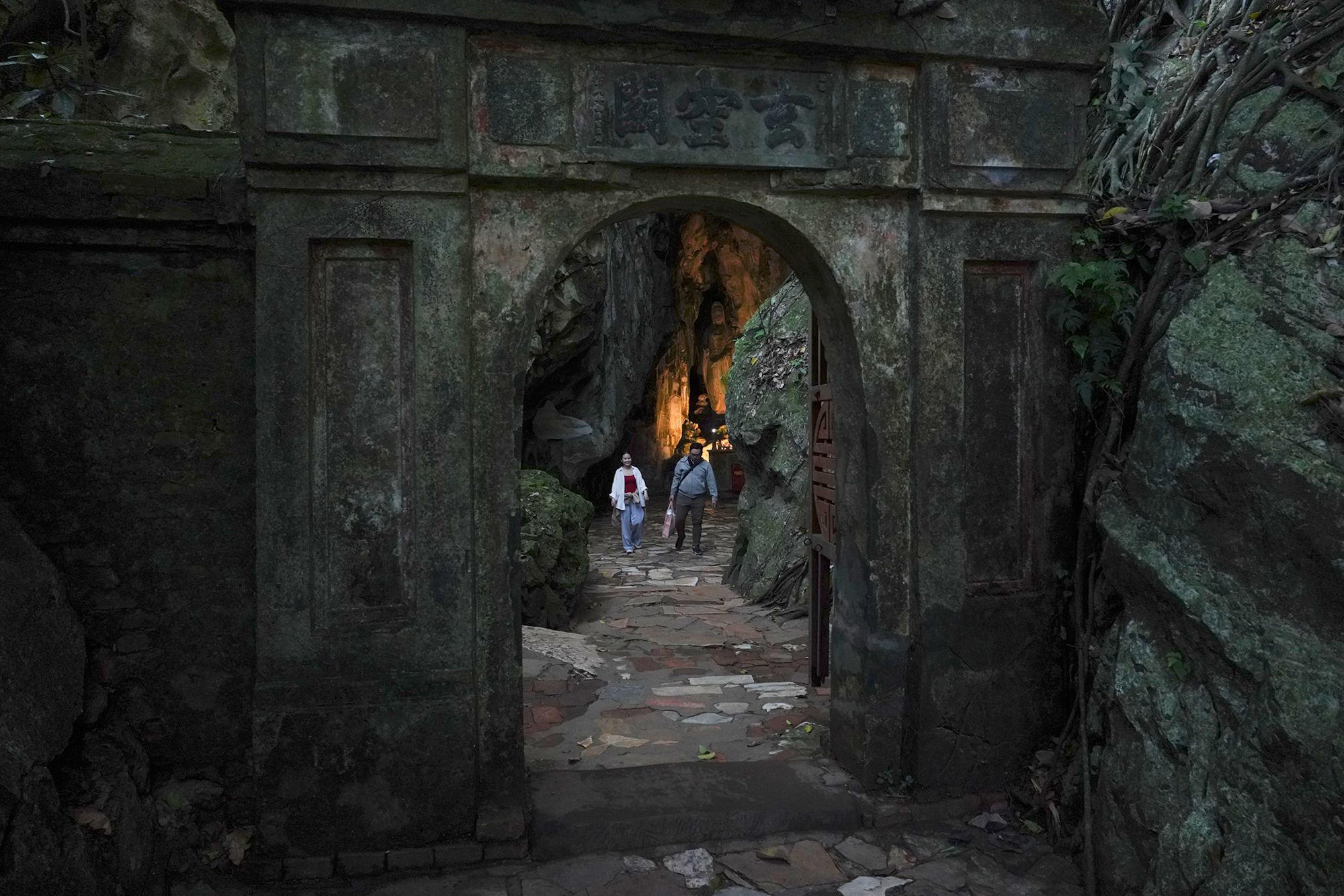
Huyen Khong Cave is home to several Buddhist shrines and altars.
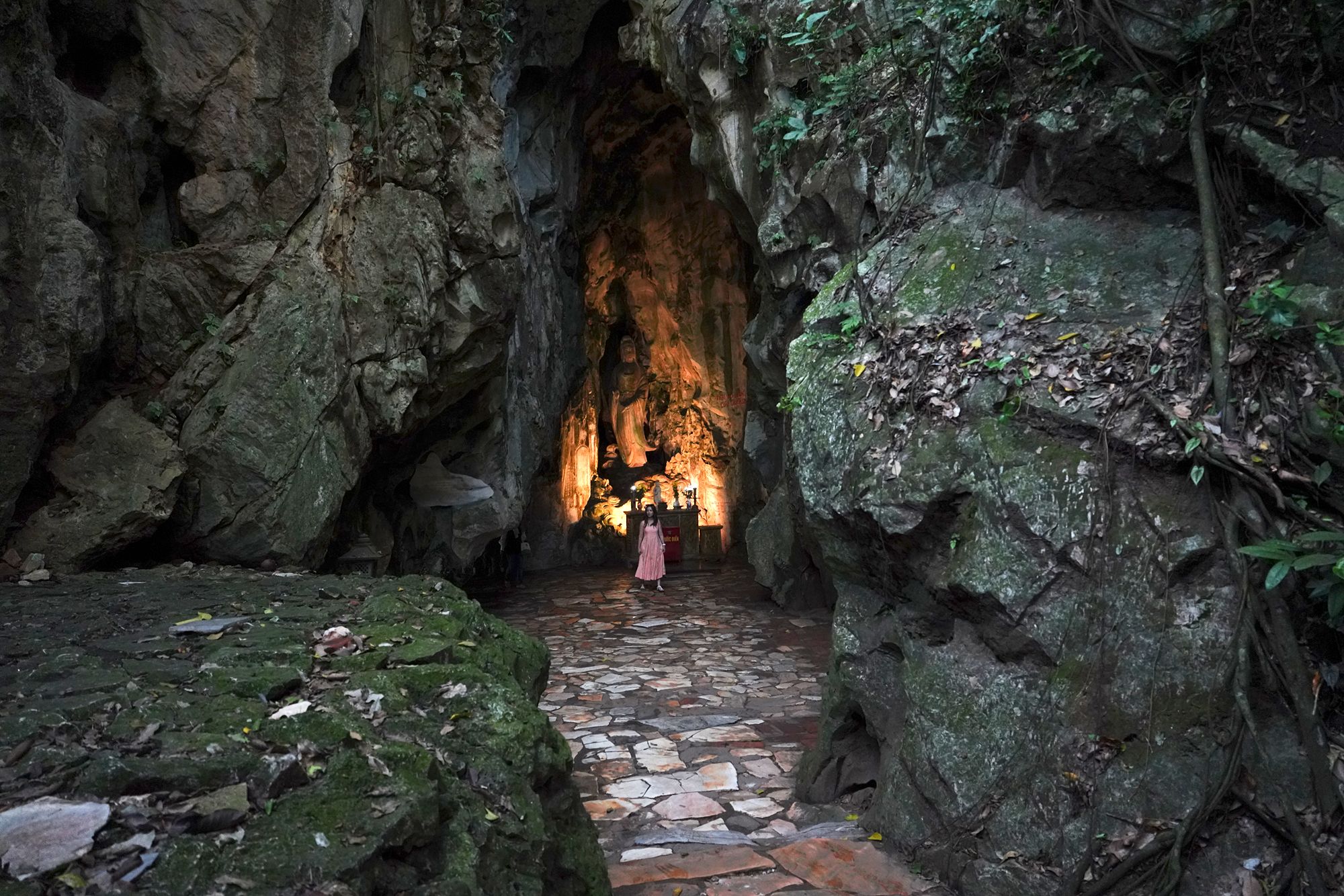
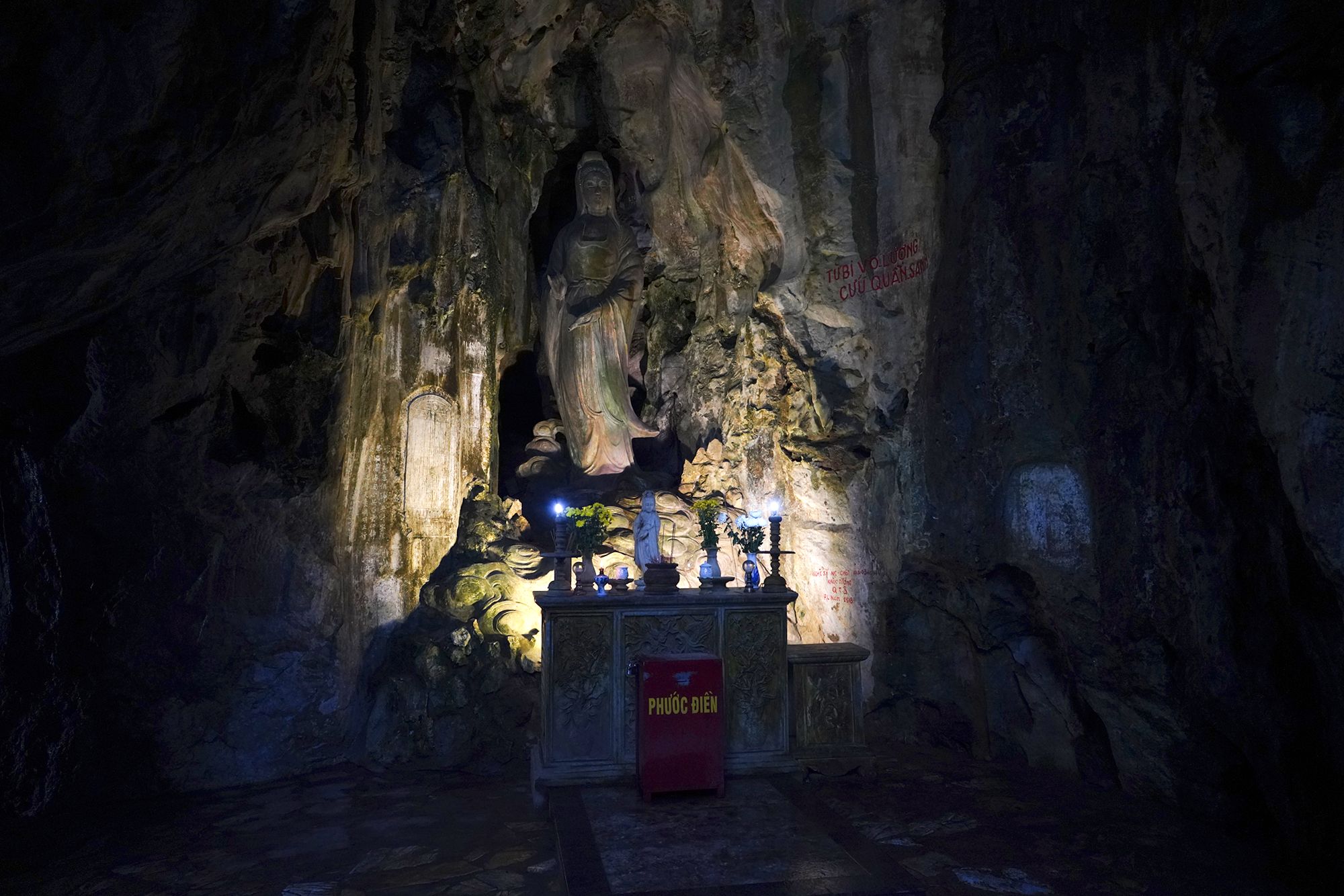
To the next cave
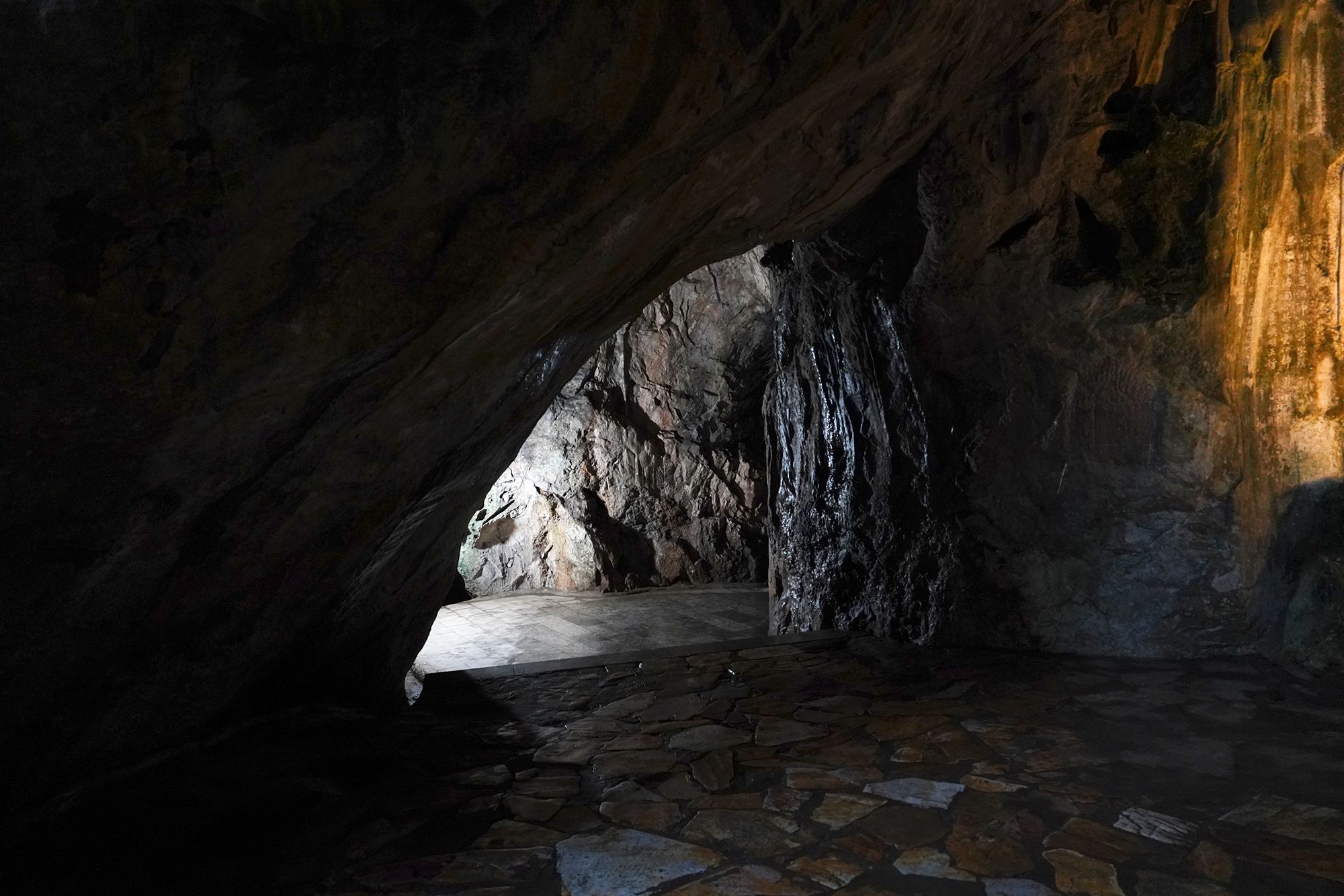
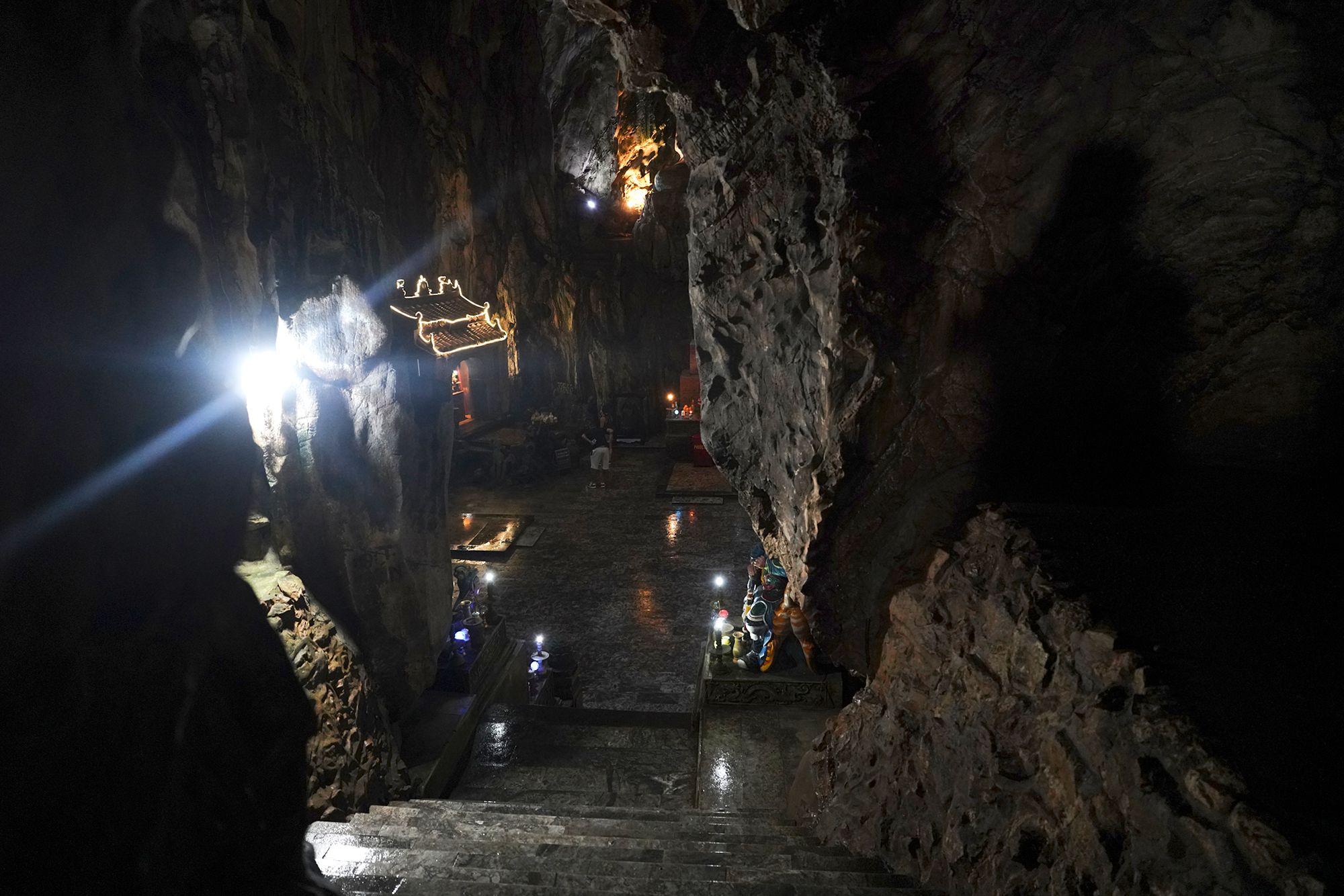
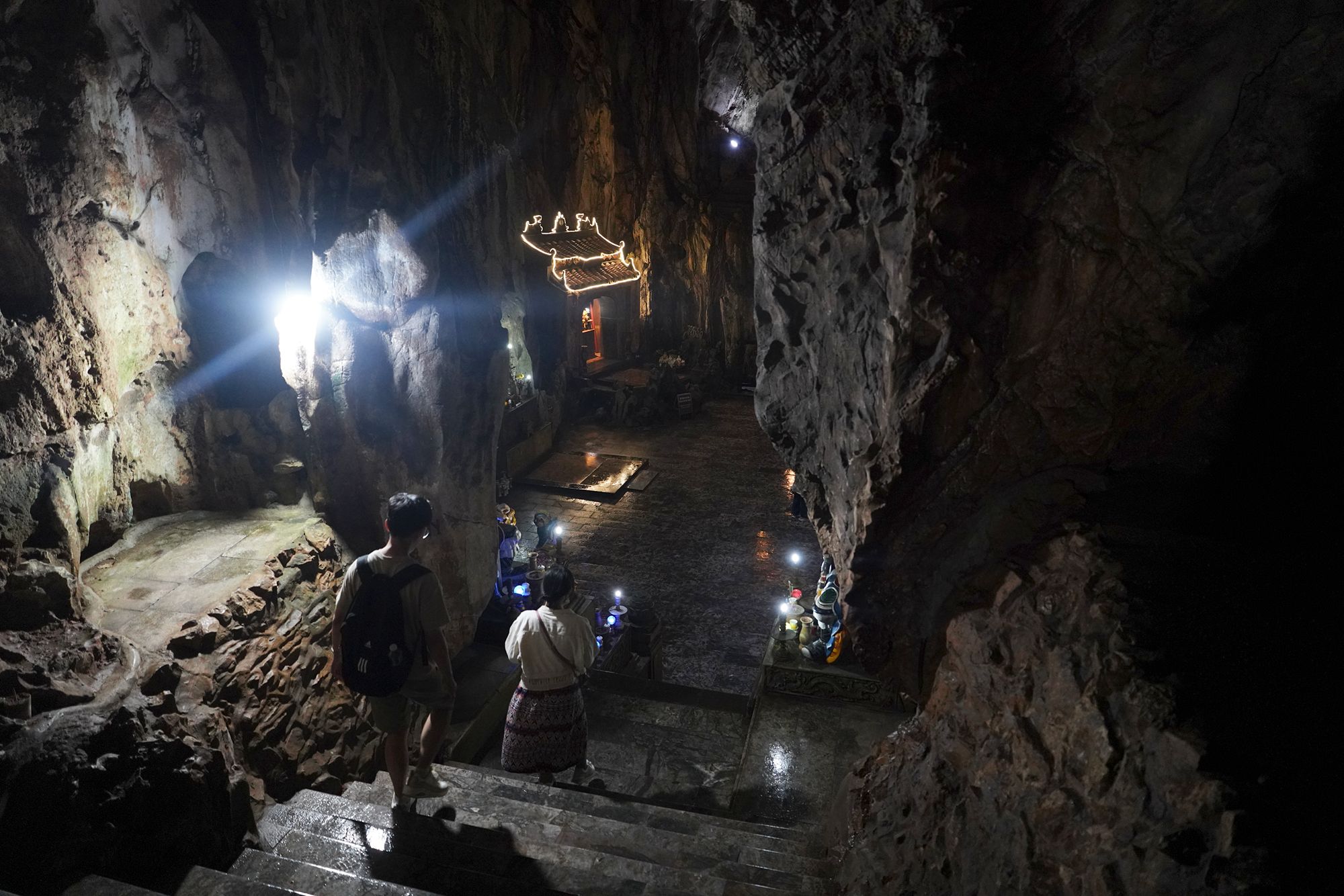
This cave had a large seated Buddha statue carved directly into the rock and smaller altars adorned with incense and offerings.
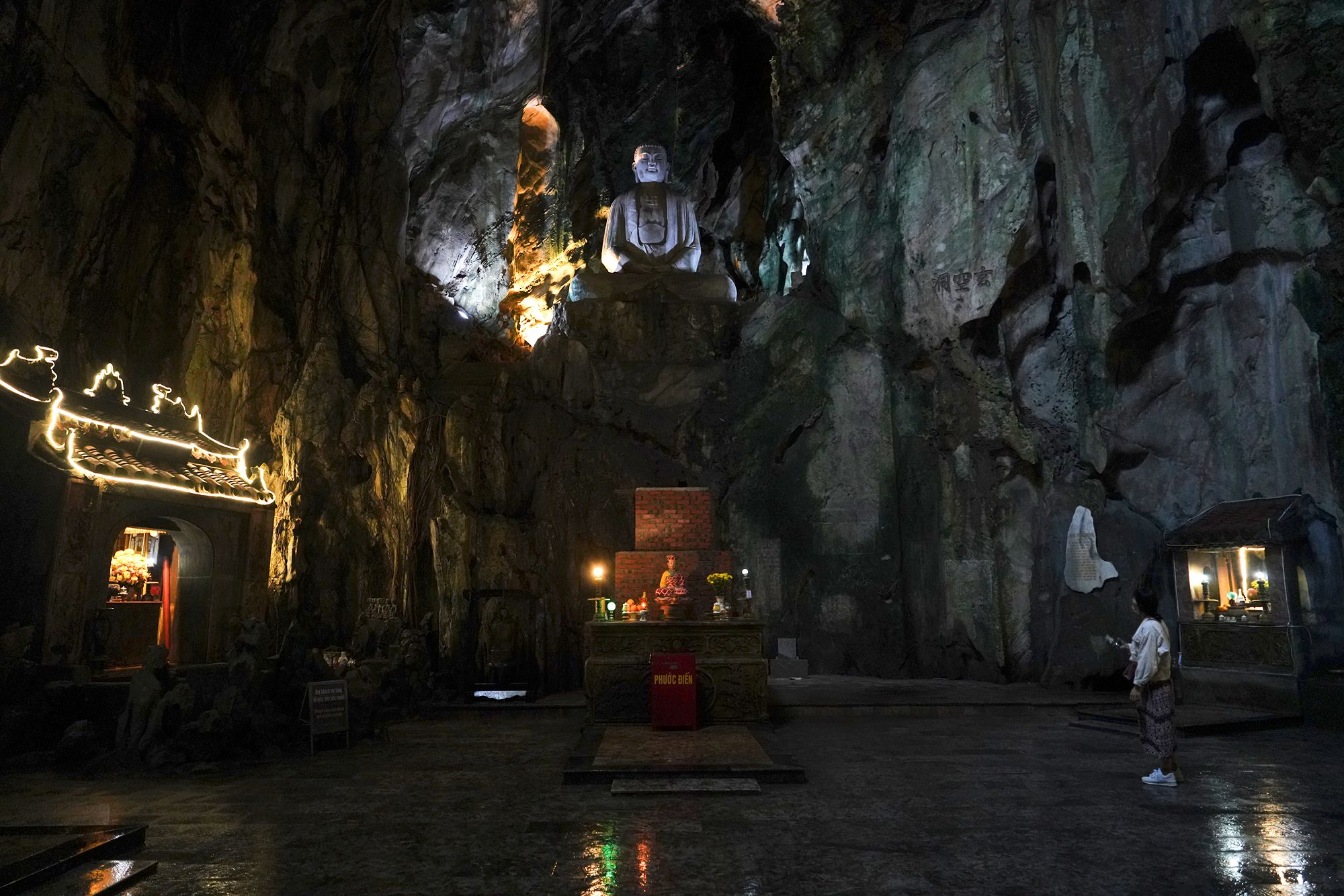
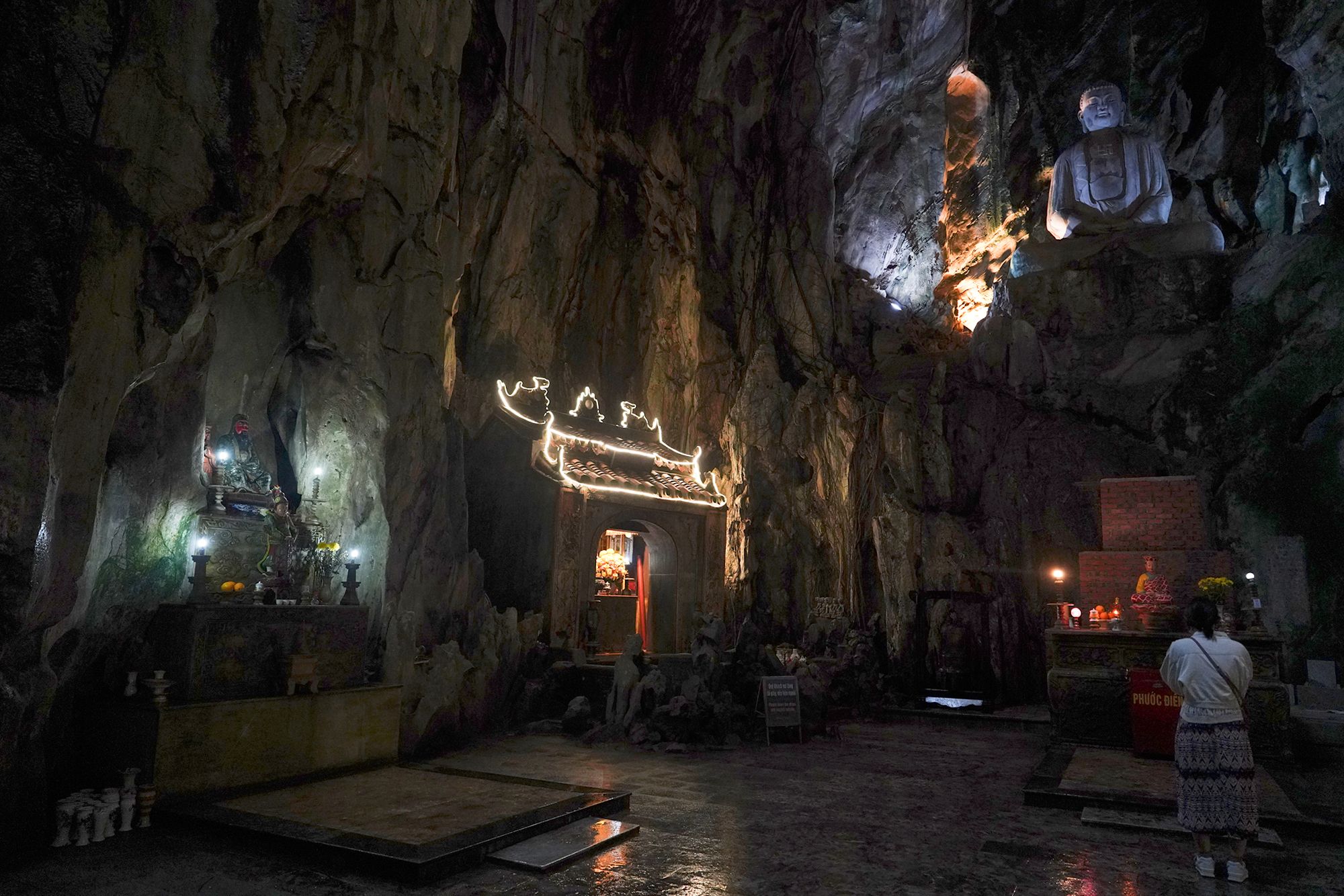
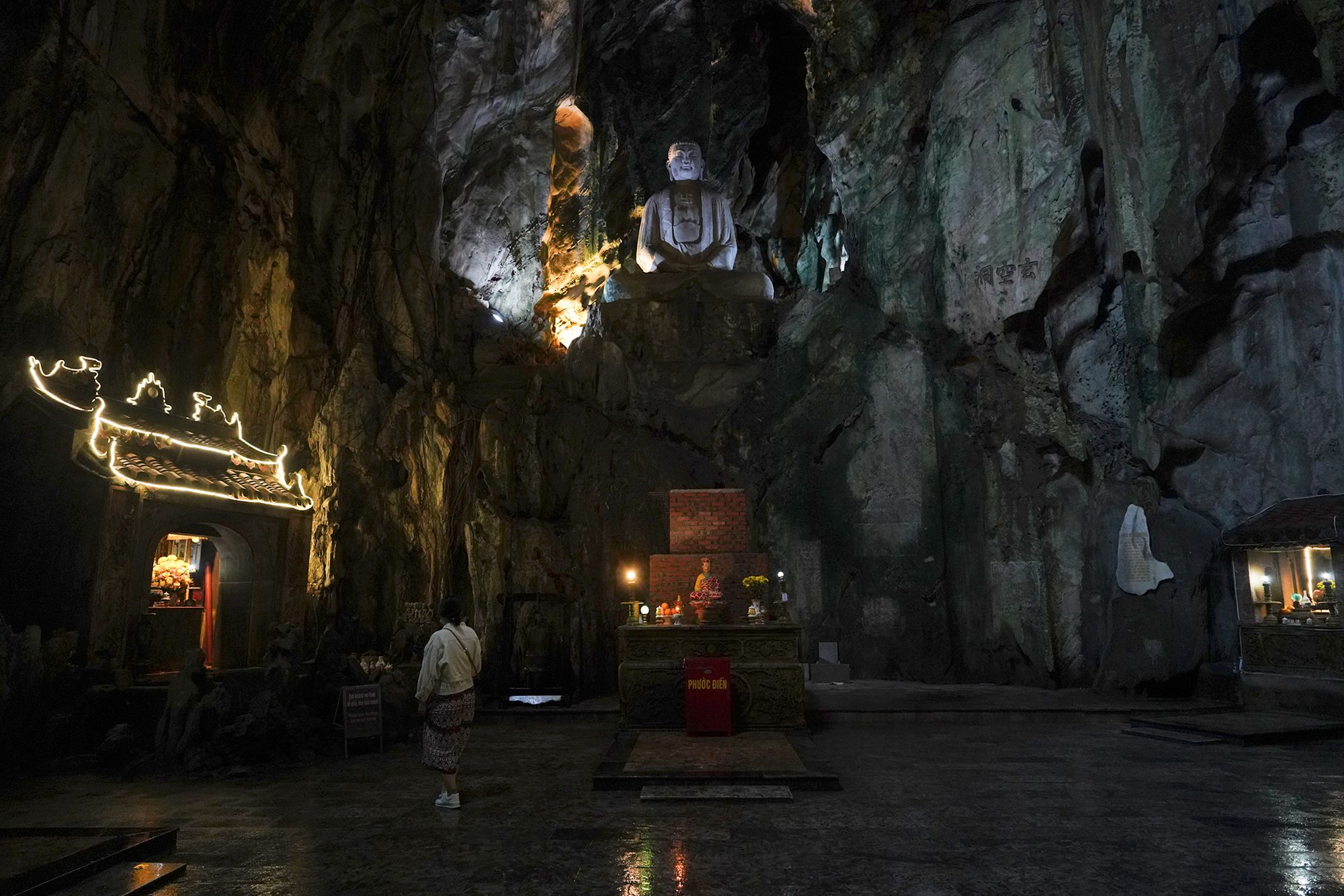
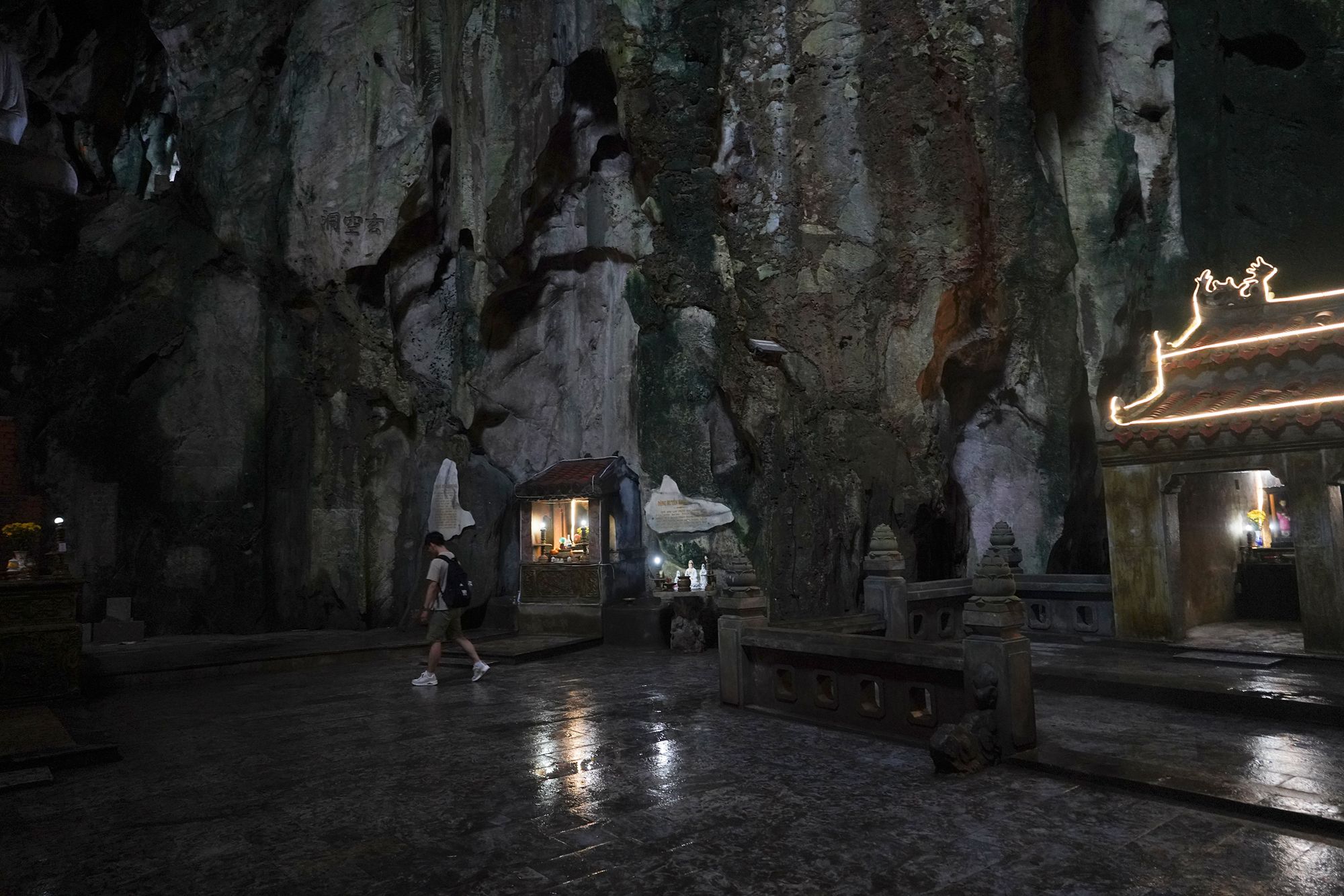
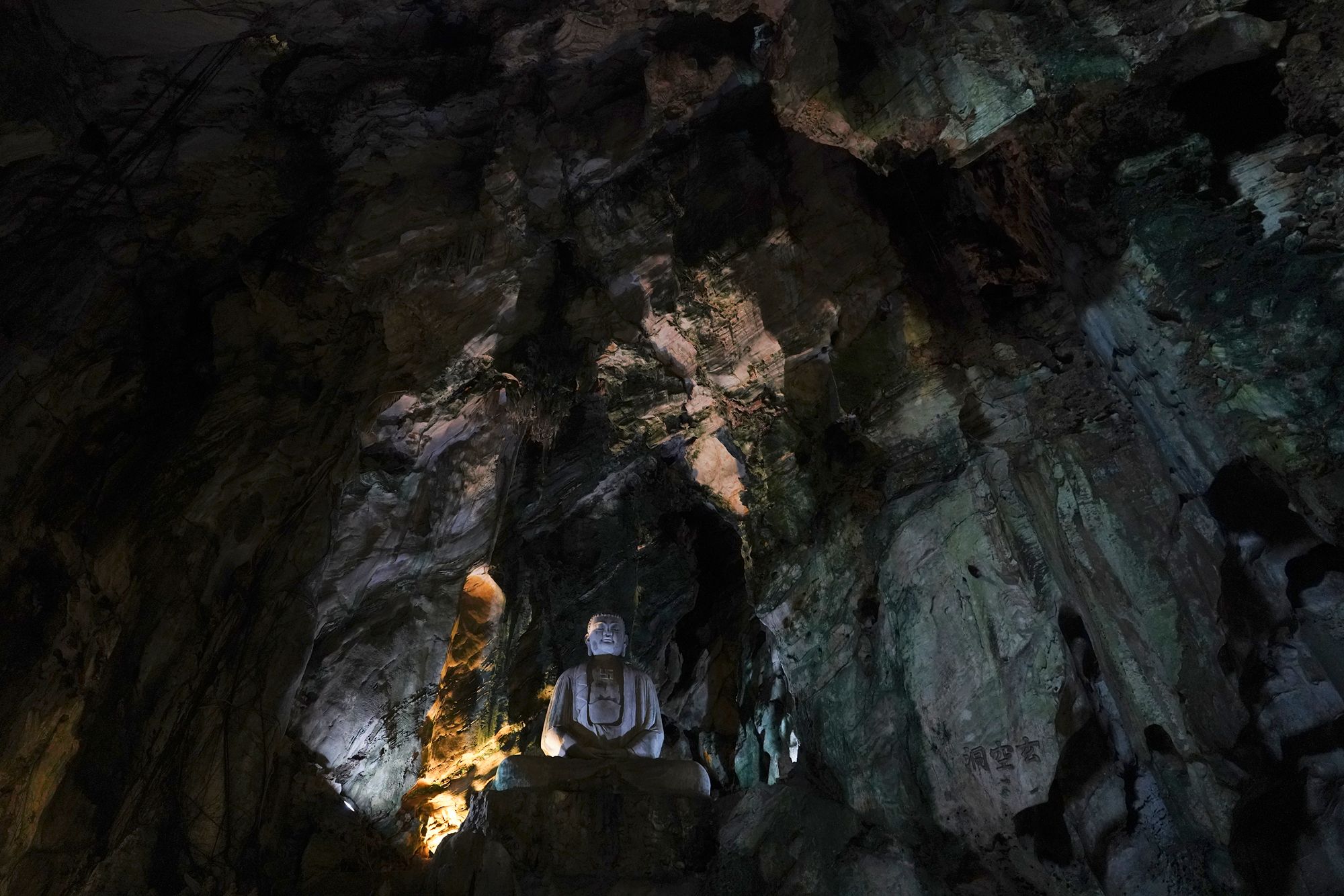
Its unique feature is the natural openings in the ceiling, which allow sunlight to stream in, creating beams of light that enhance the ethereal ambiance.
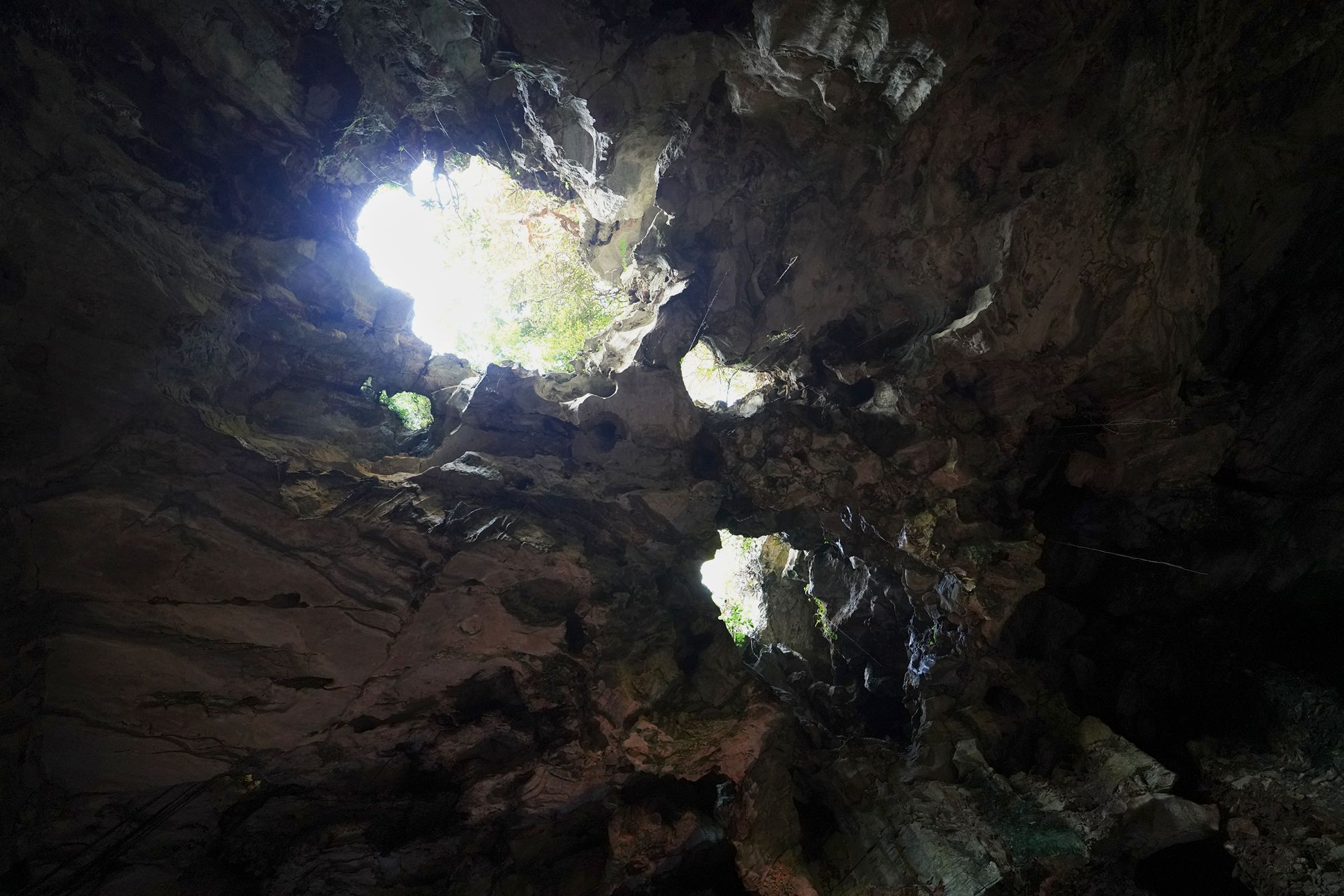
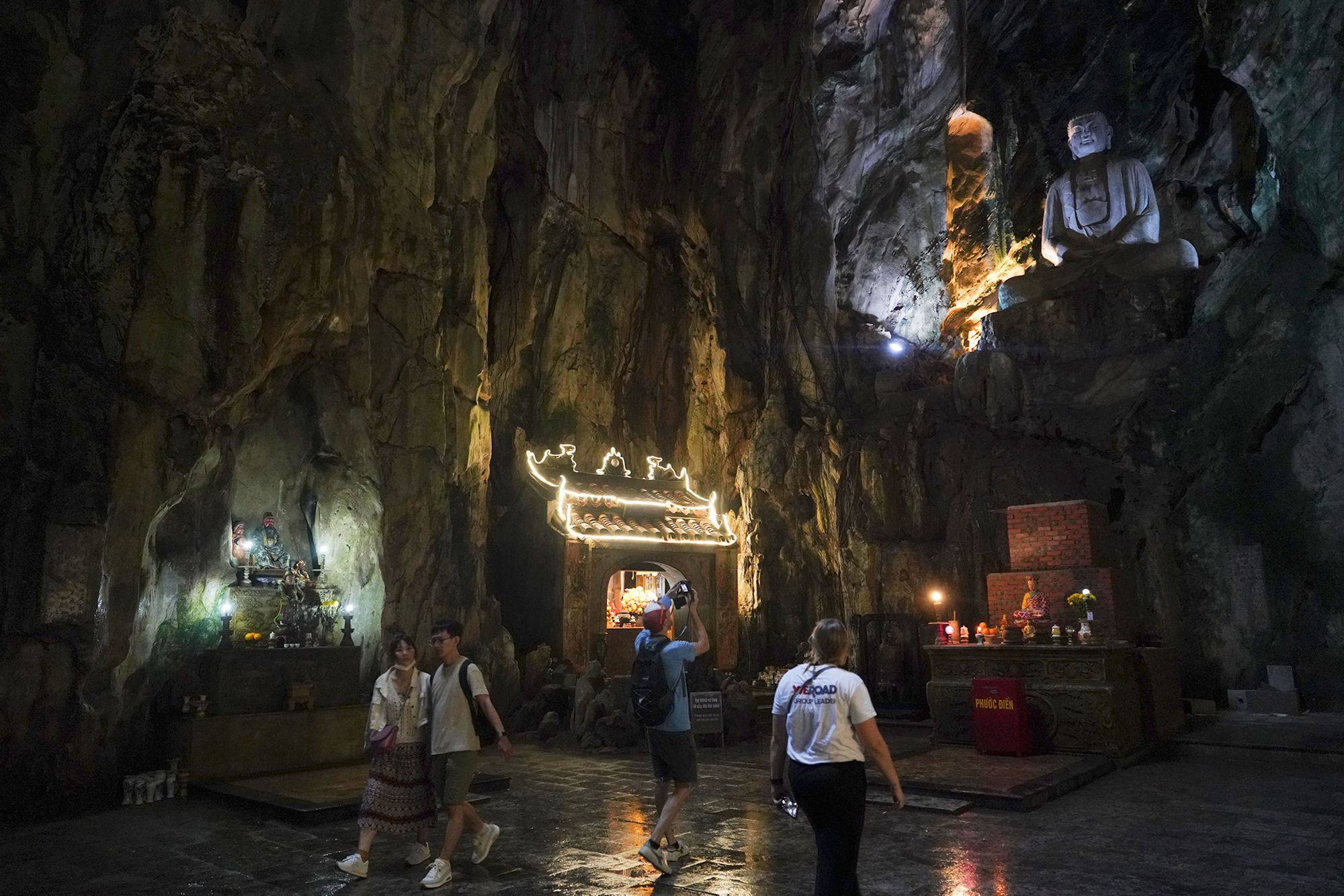
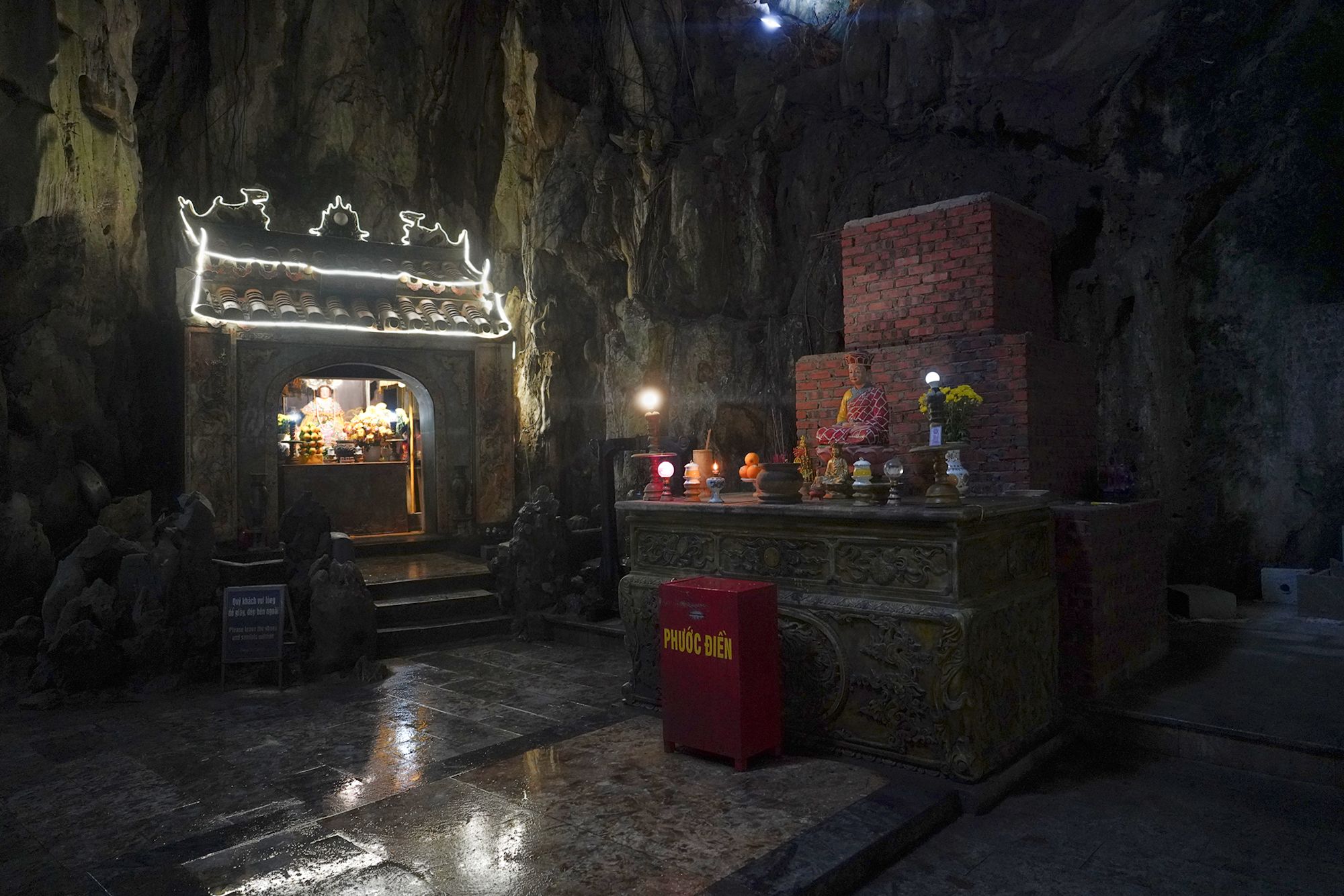
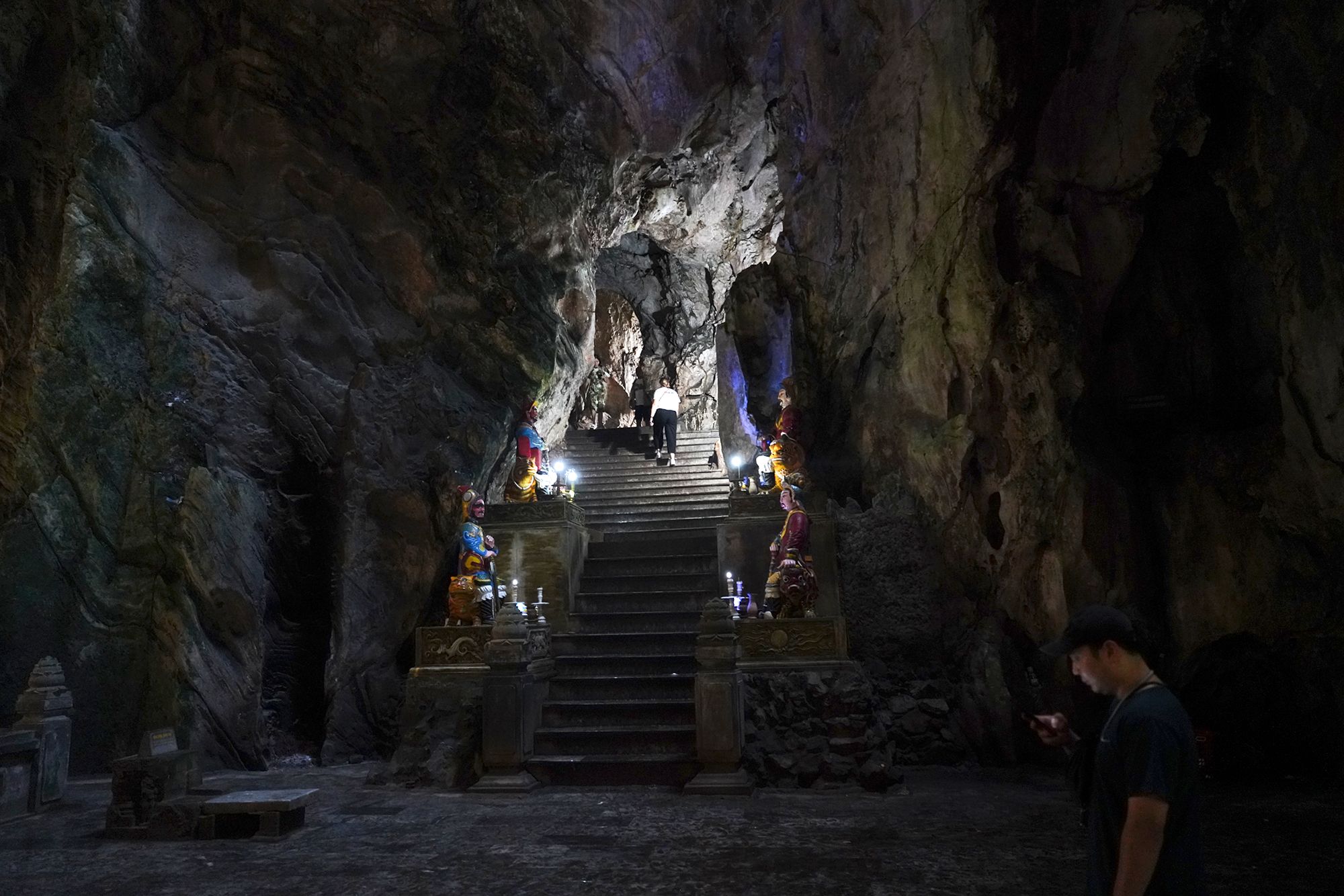
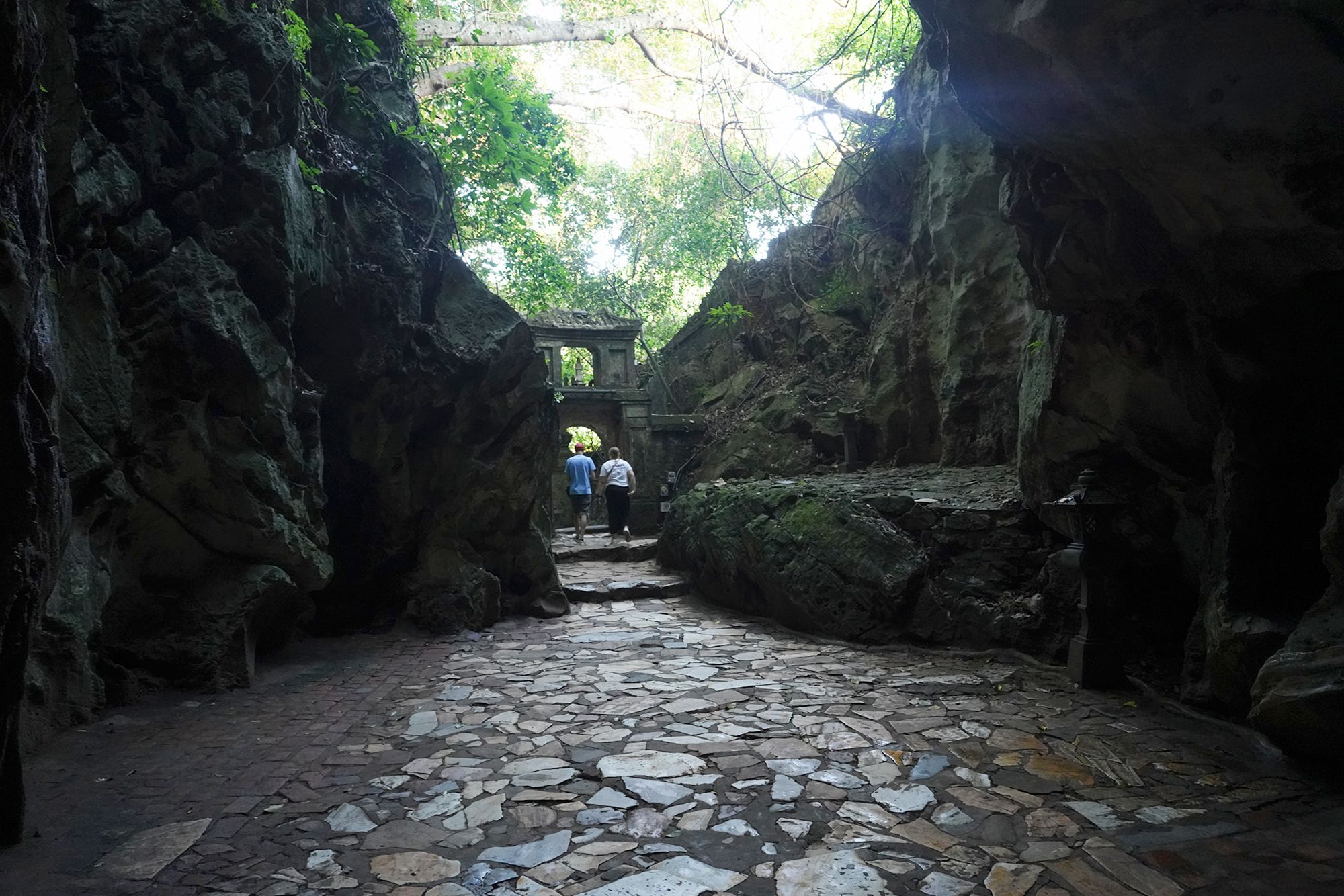
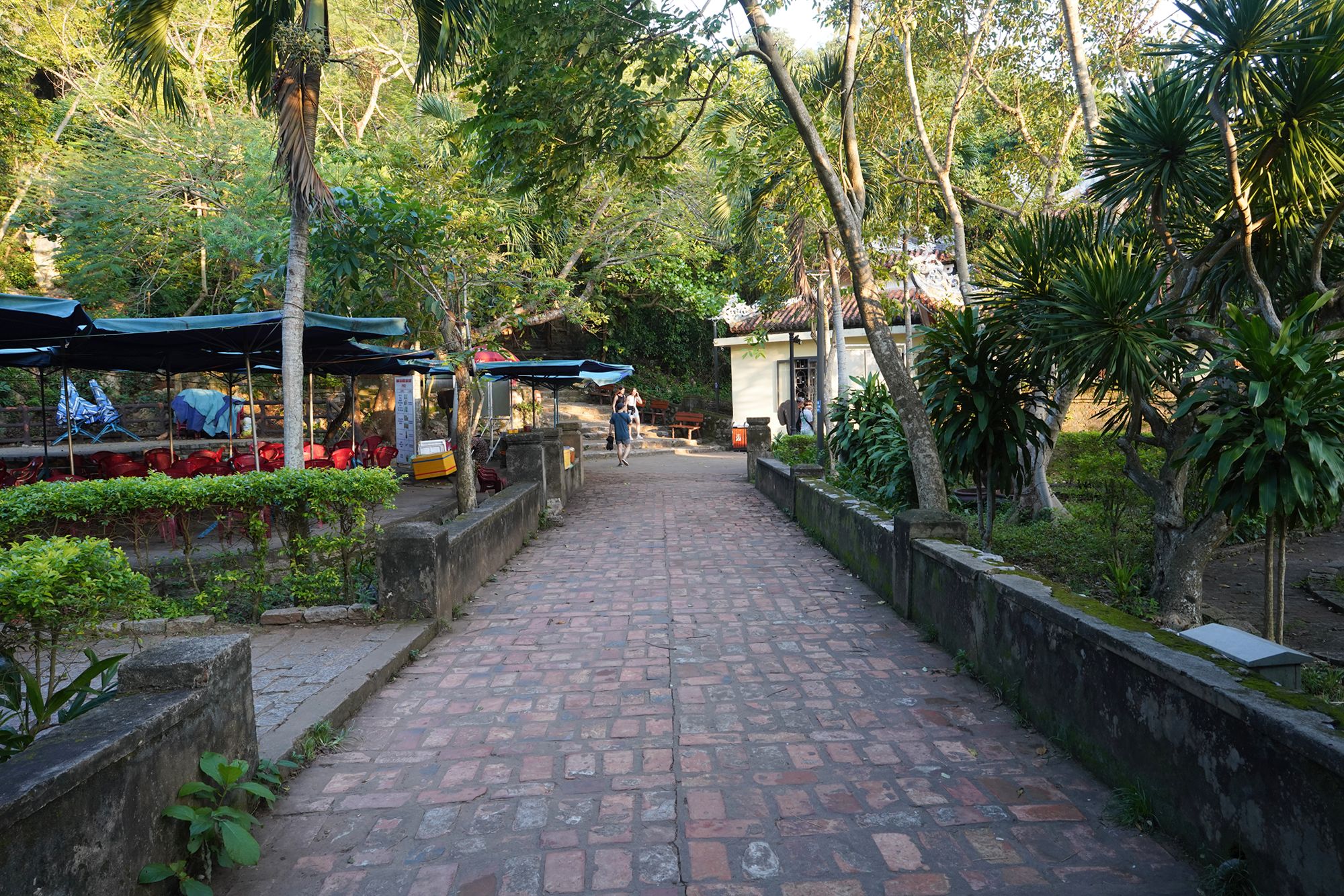
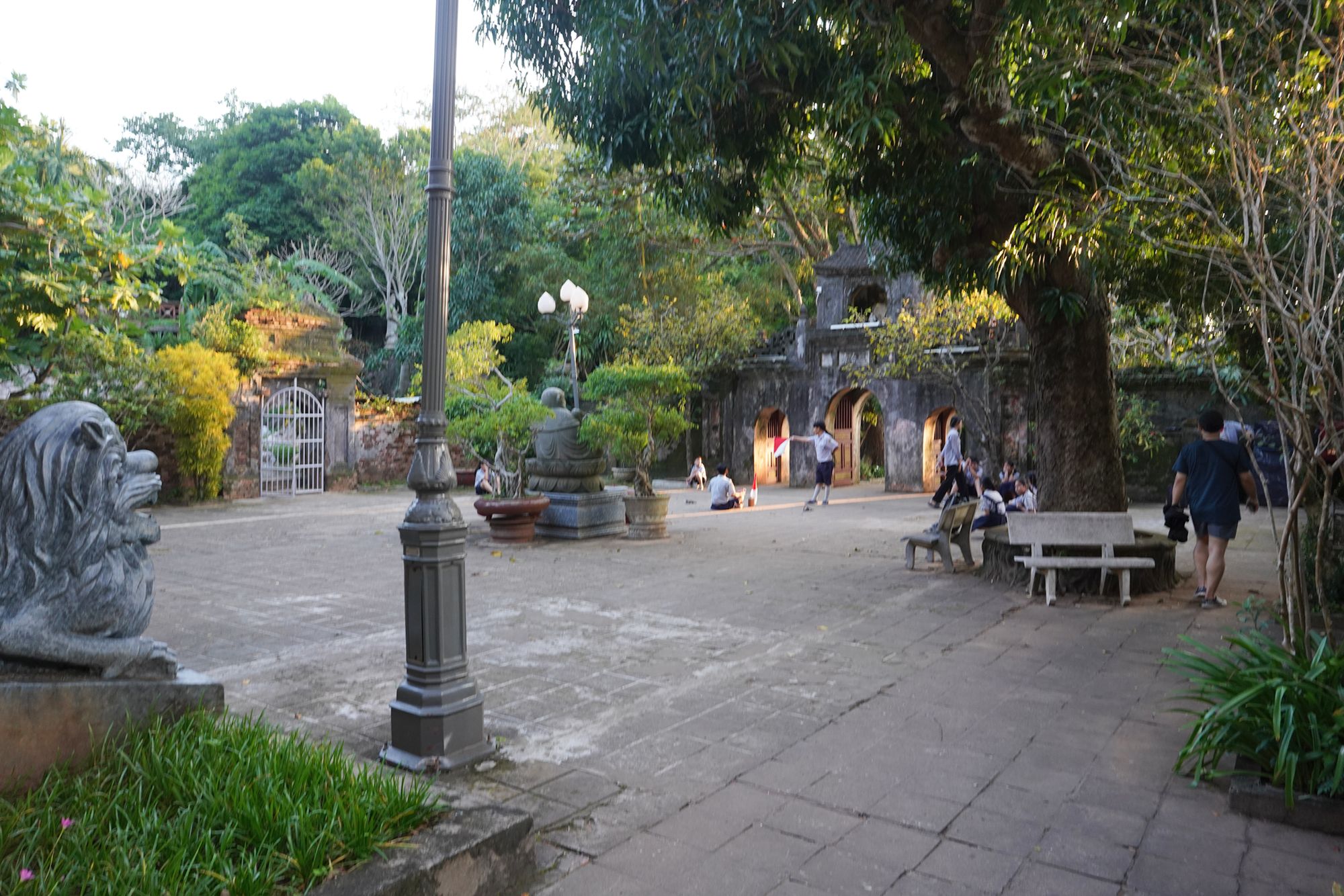
Another temple in the area
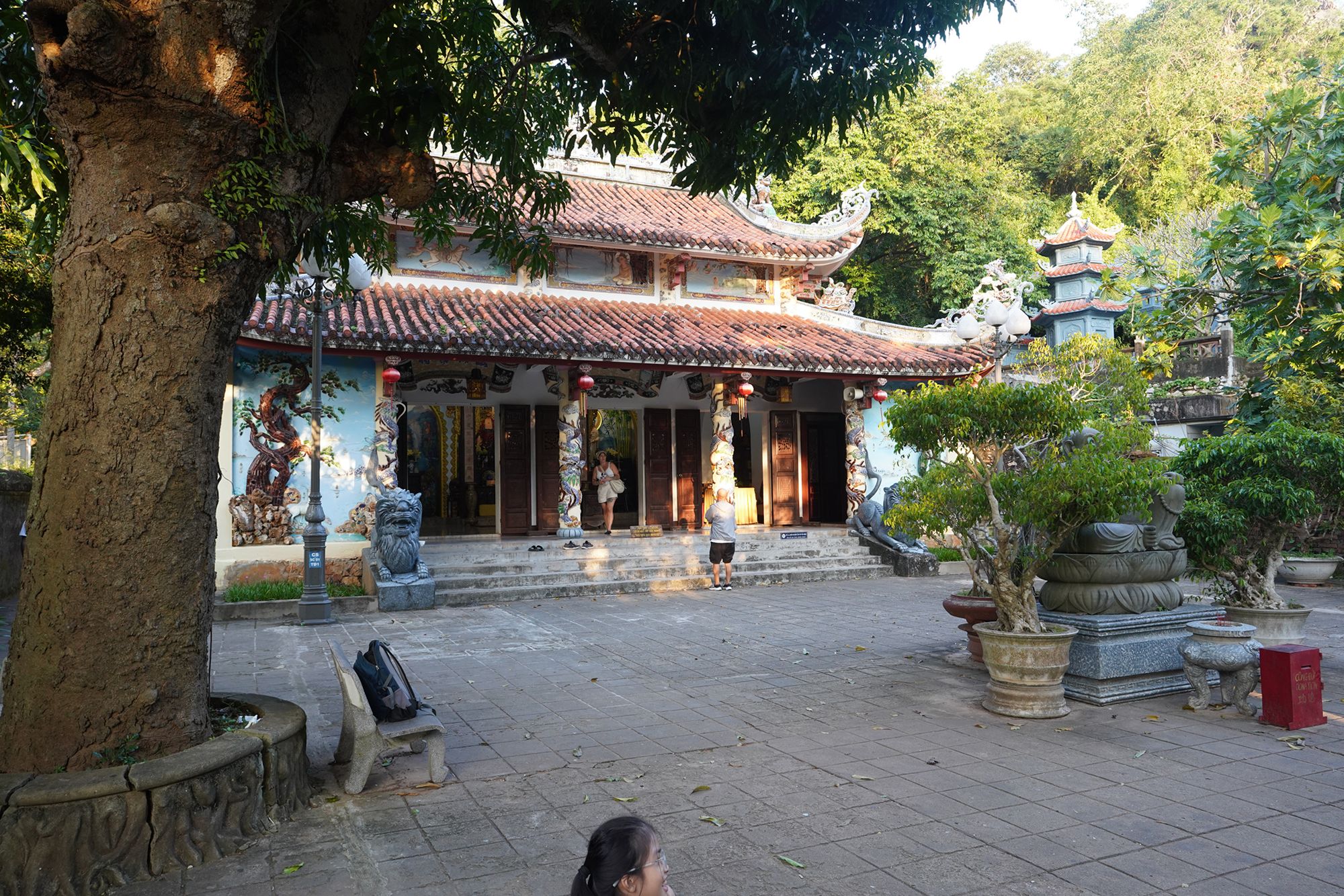
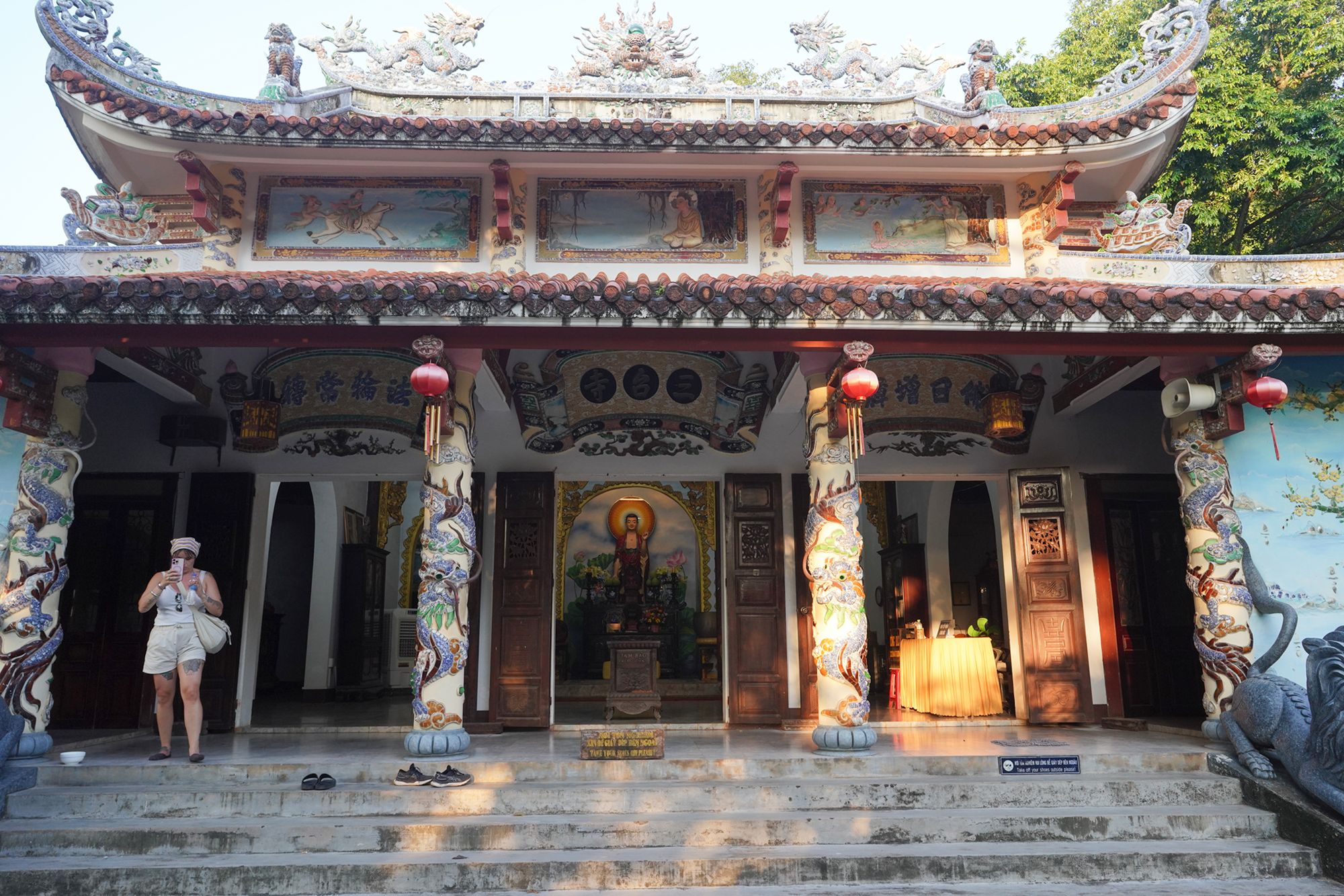
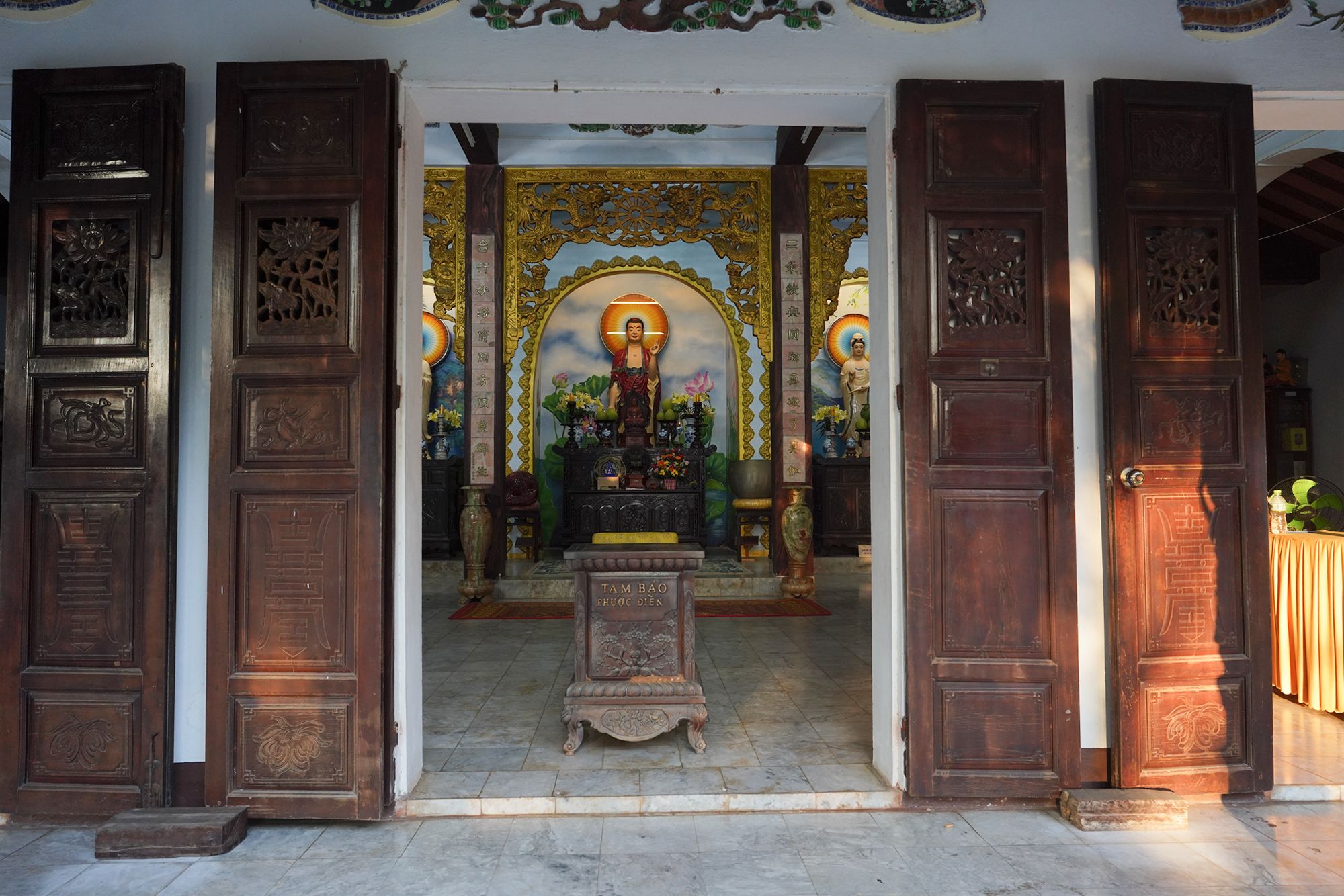
Children playing in the temple courtyard.
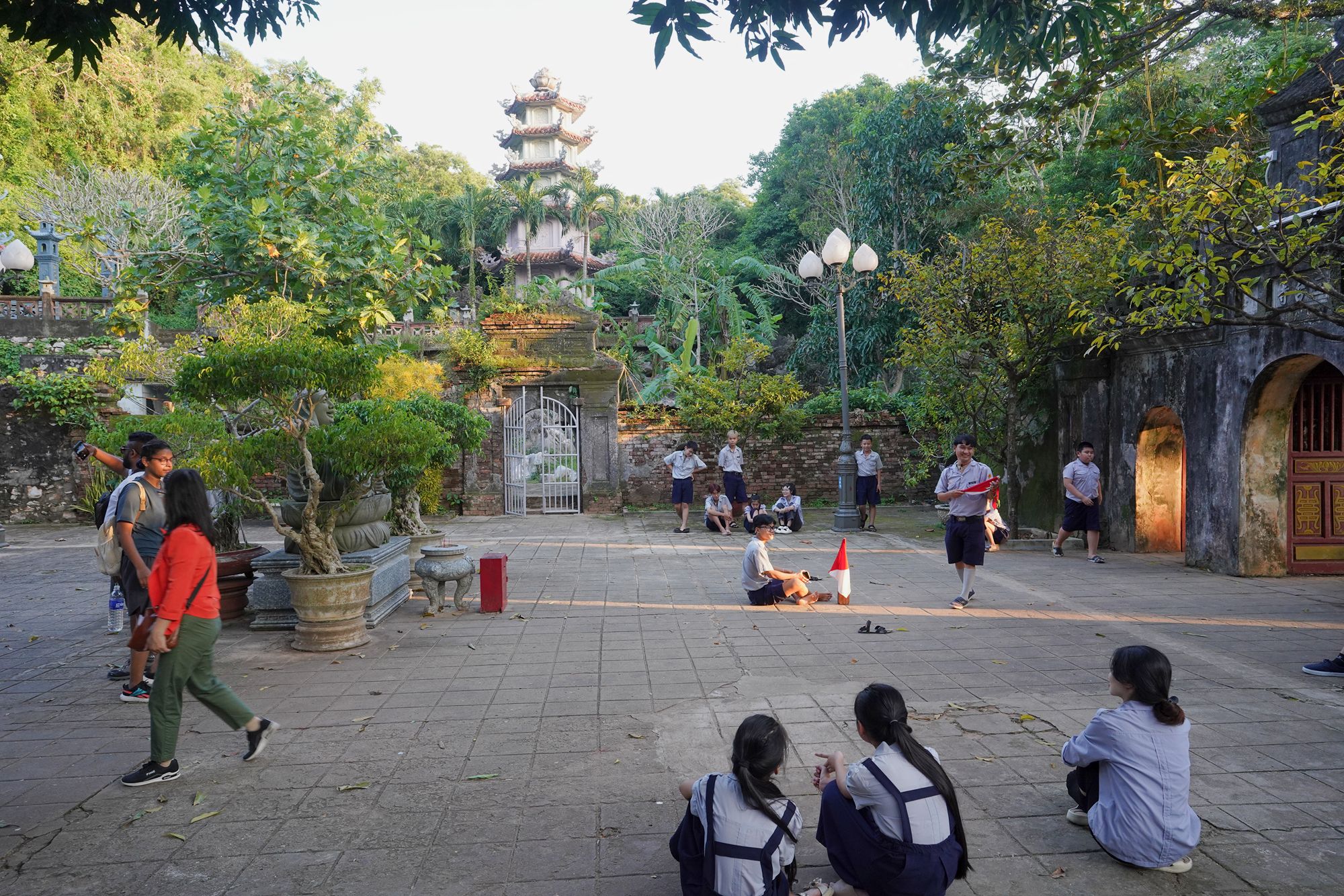
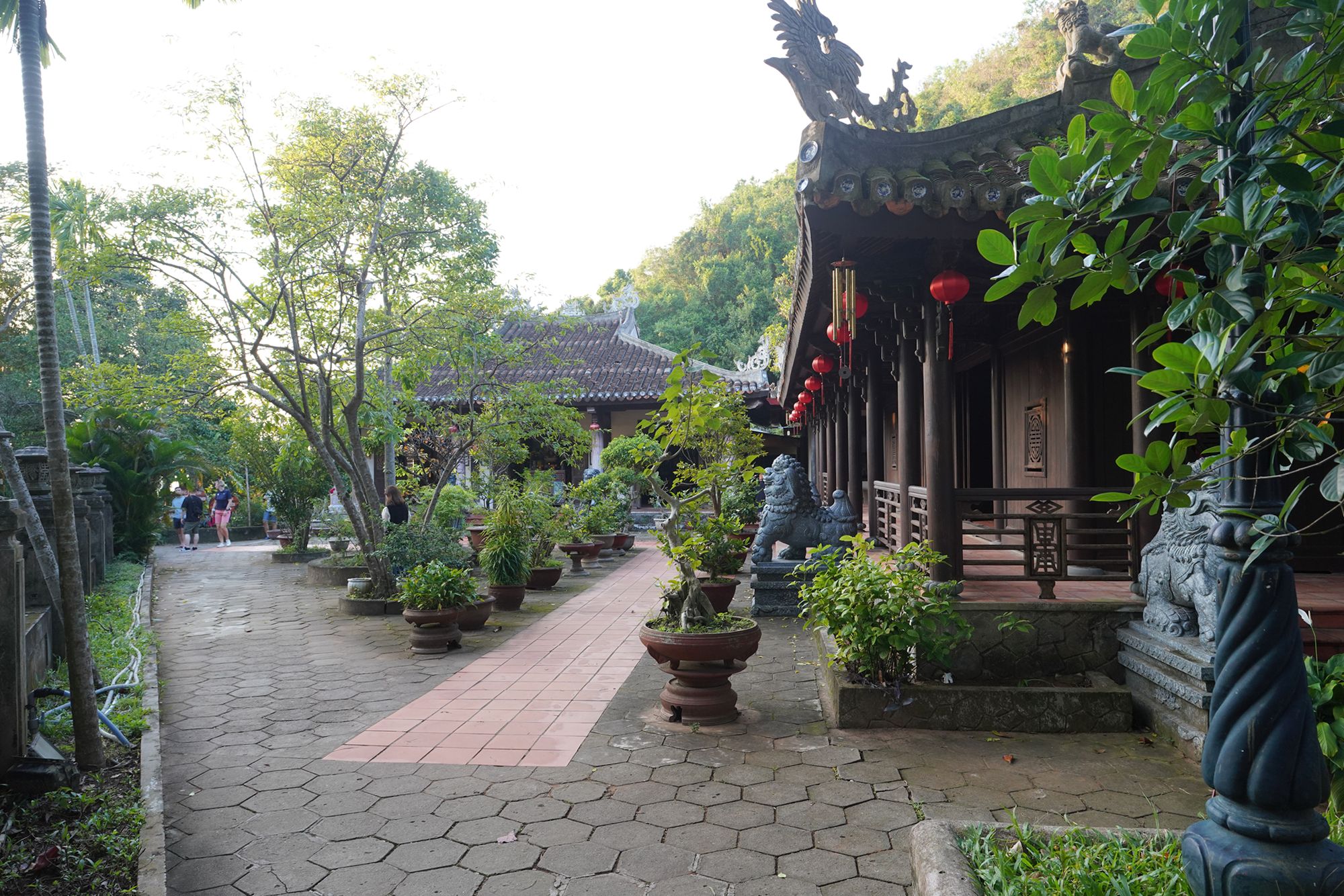
Another temple in the area
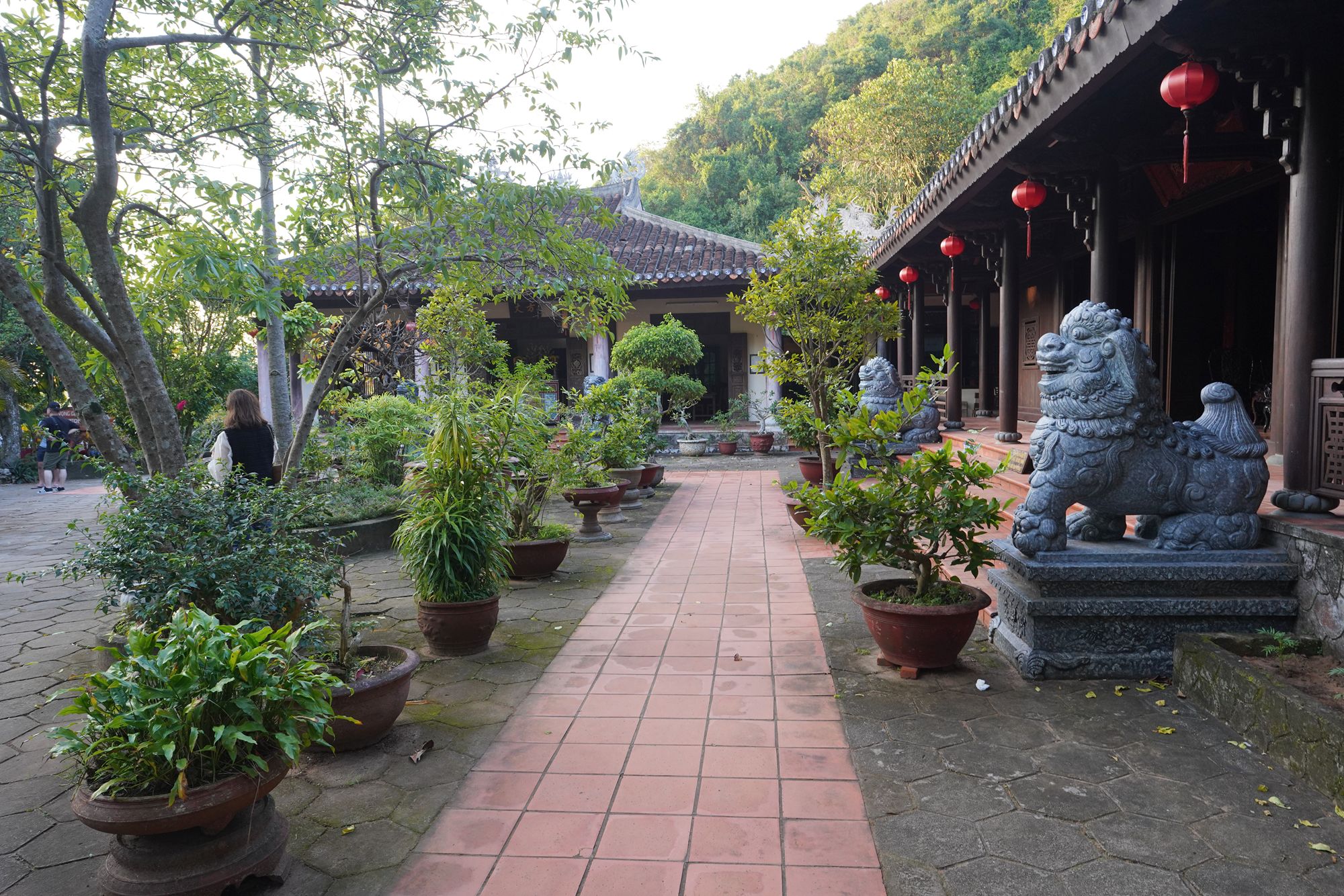
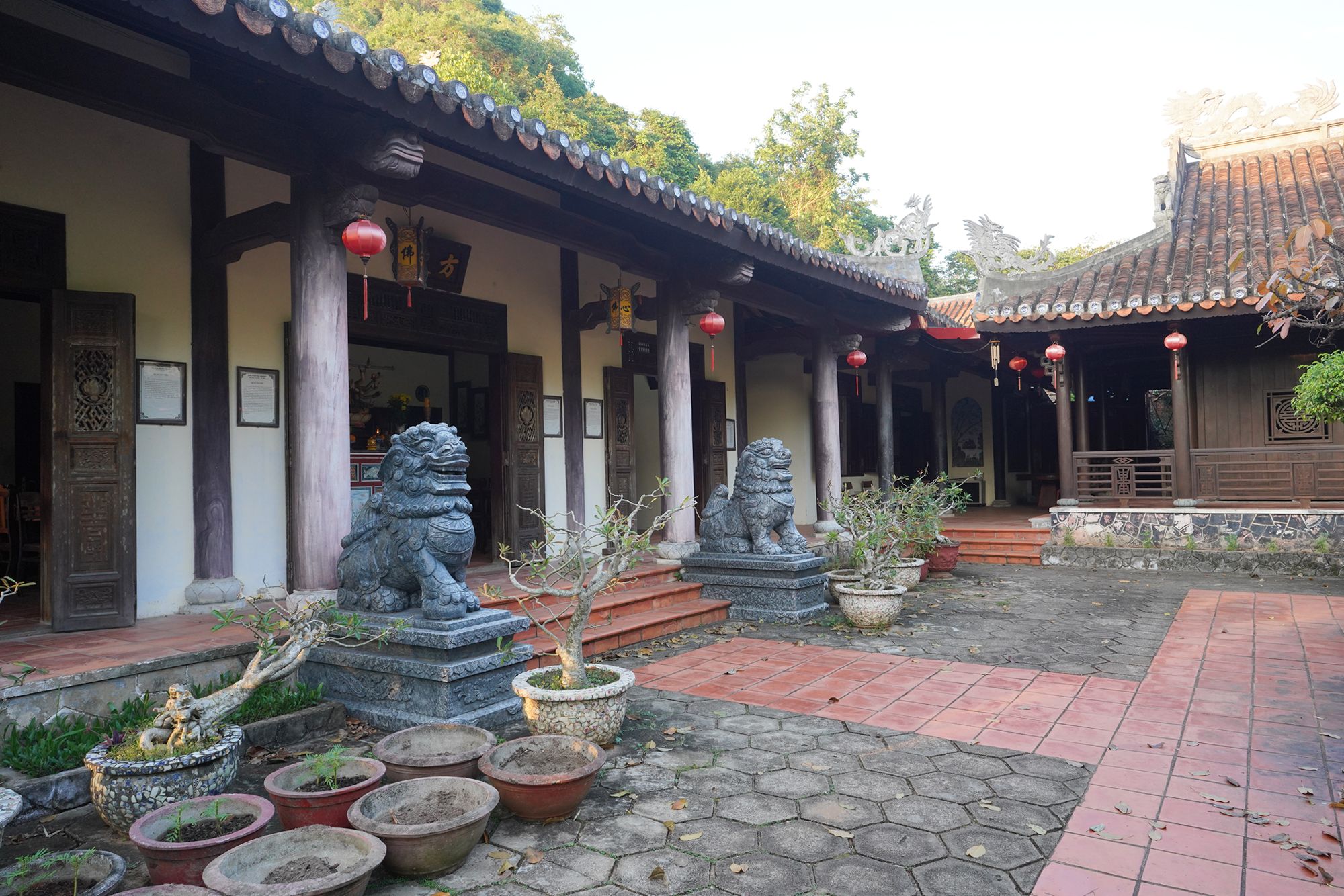
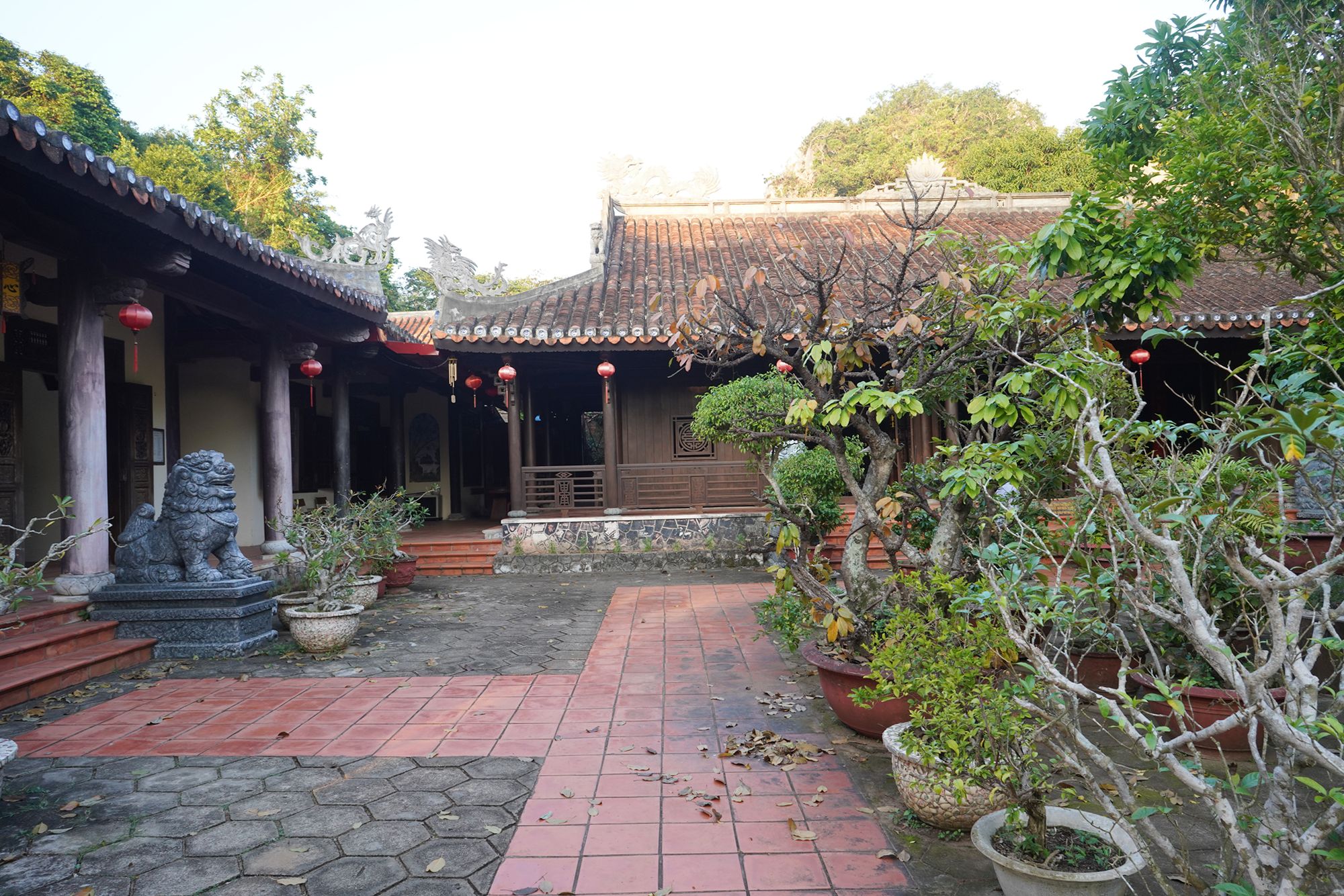
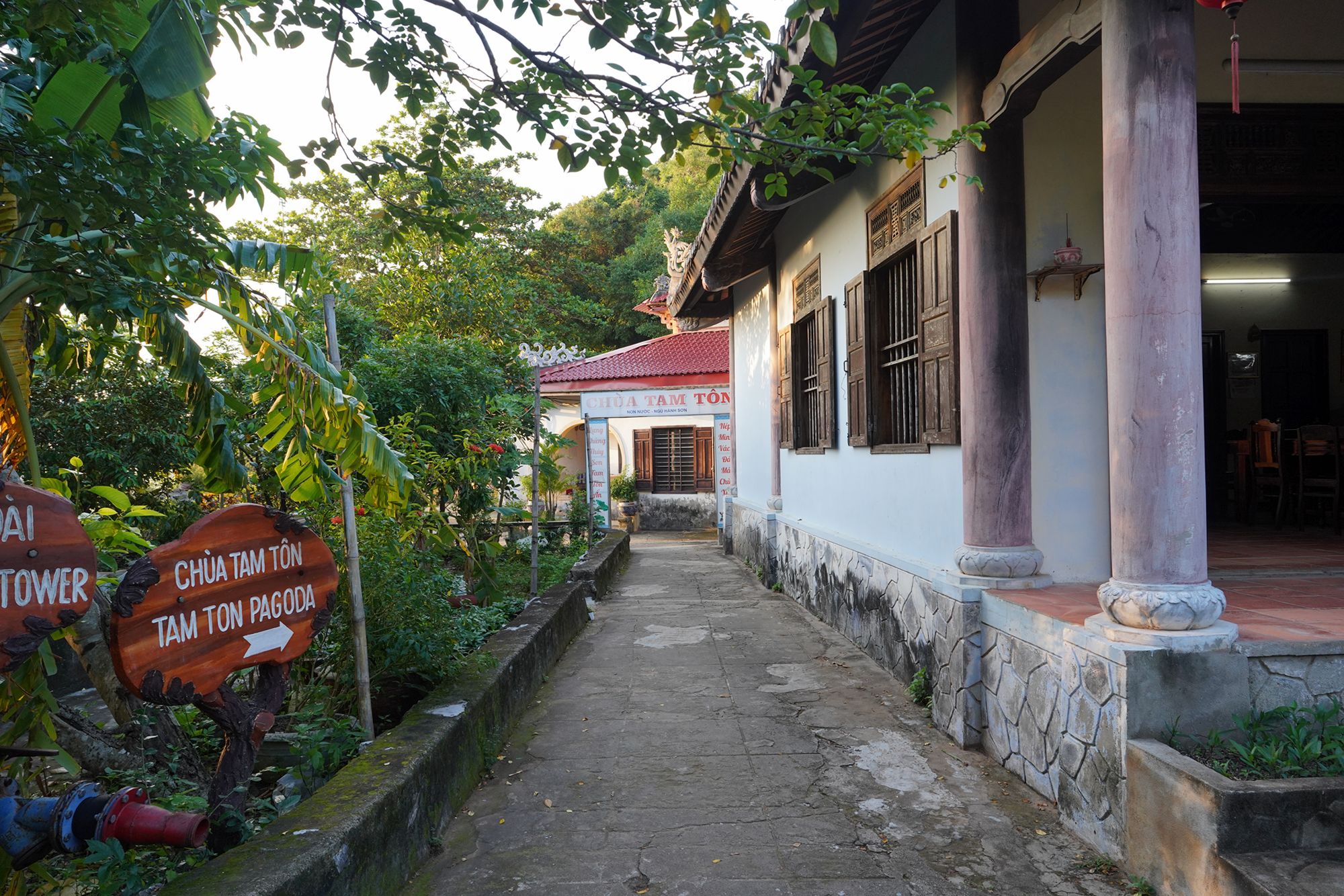
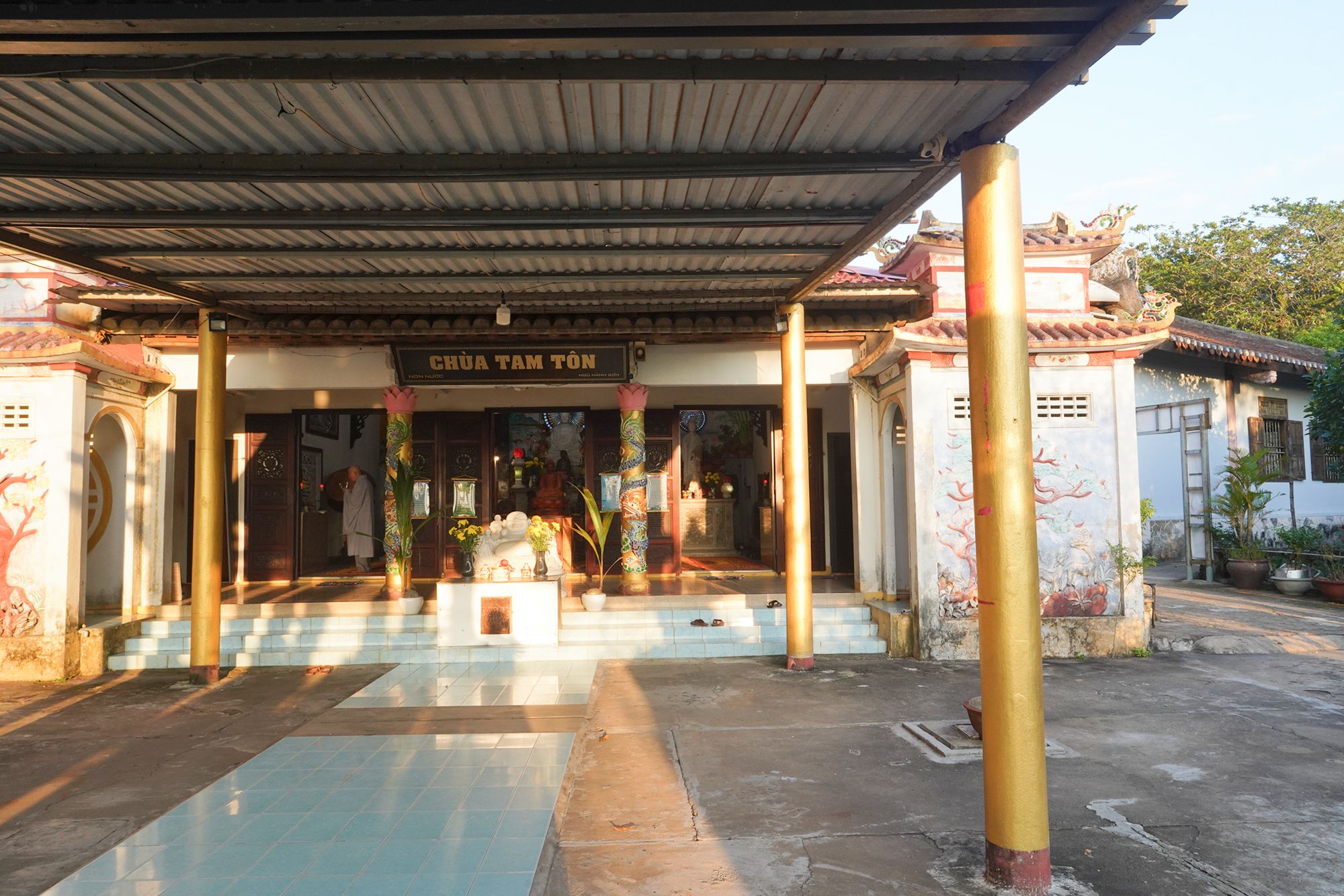
Marble Mountains, or Ngũ Hành Sơn, is a cluster of five limestone and marble hills located just south of Da Nang, Vietnam. These mountains are named after the five elements in Vietnamese philosophy: Kim (Metal), Thủy (Water), Mộc (Wood), Hỏa (Fire), and Thổ (Earth). They are renowned for their natural beauty, spiritual significance, and historical importance.
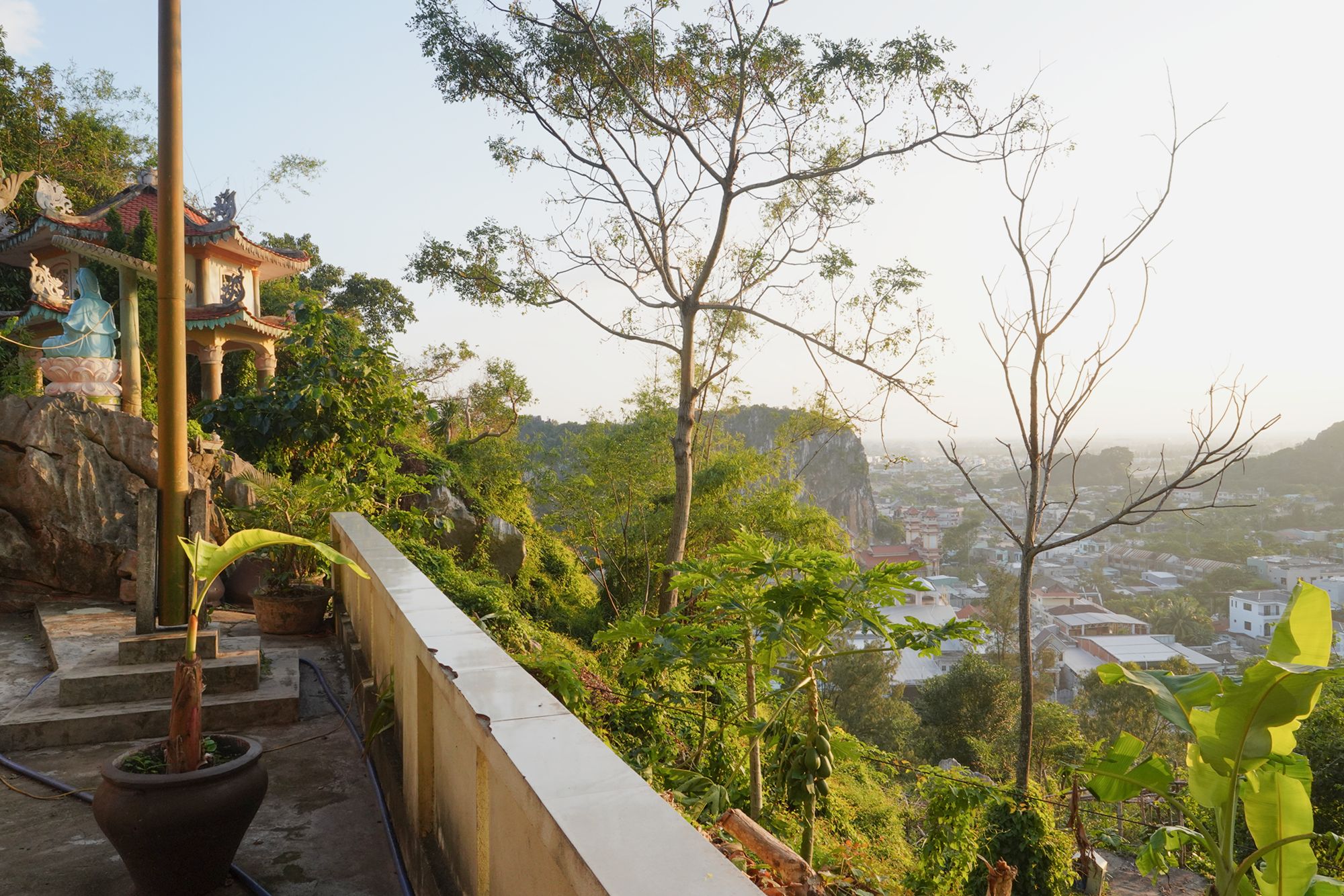
I was in Thủy Sơn, the largest and most prominent of the Marble Mountains near Da Nang, Vietnam. Thủy Sơn, also known as the “Water Mountain,” is the main attraction in the cluster and is home to several temples, caves, and scenic viewpoints, including Tam Thai Pagoda.
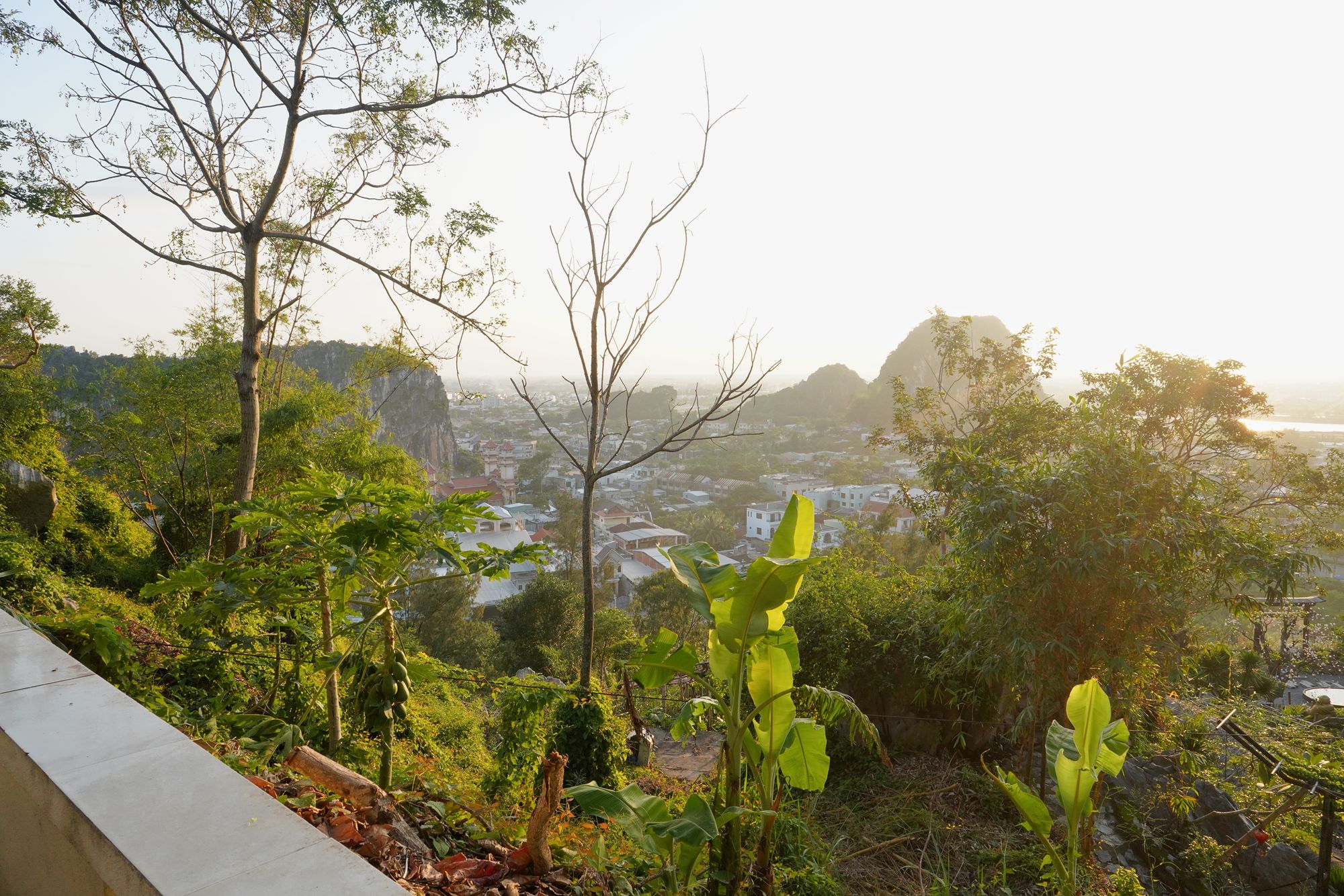
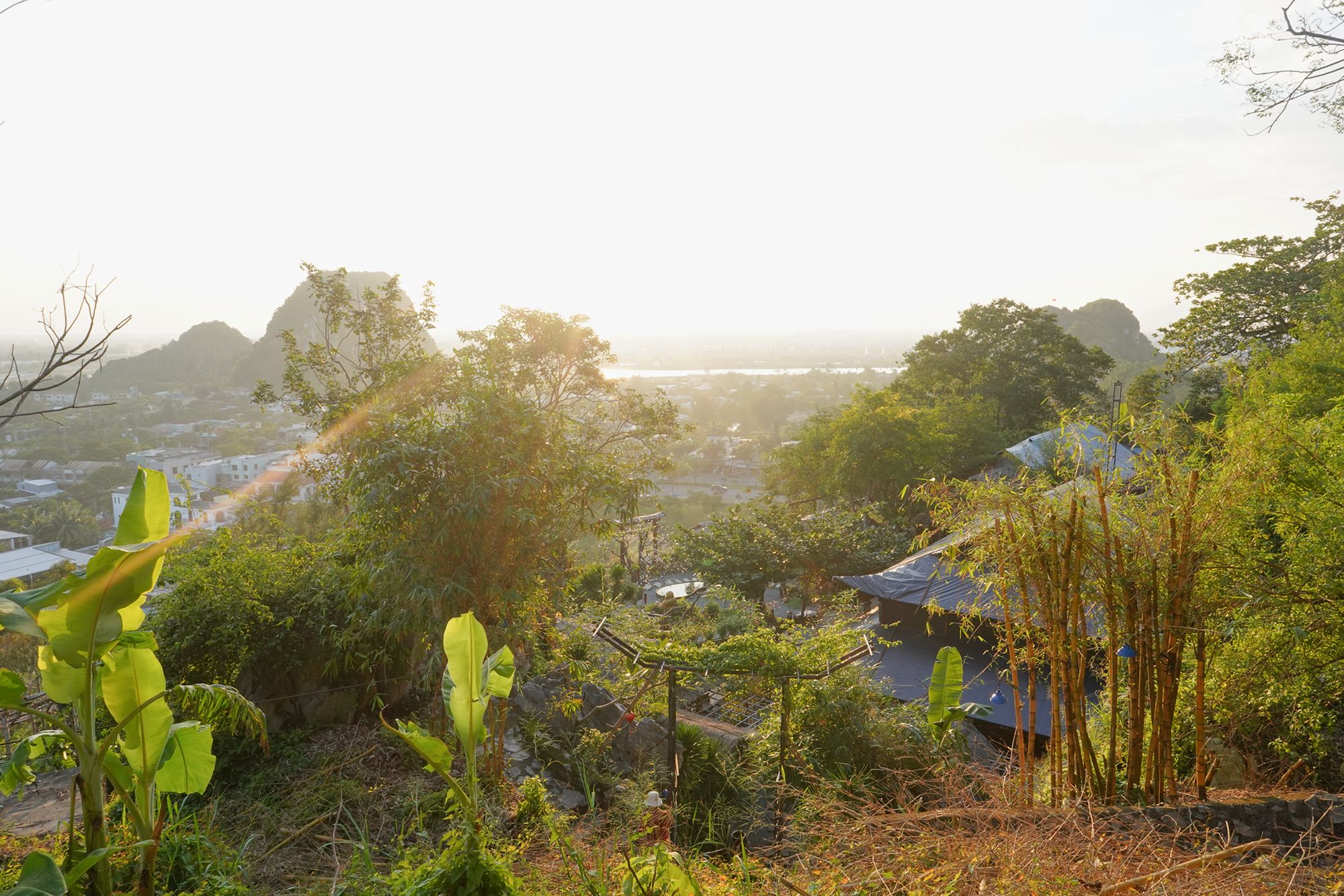
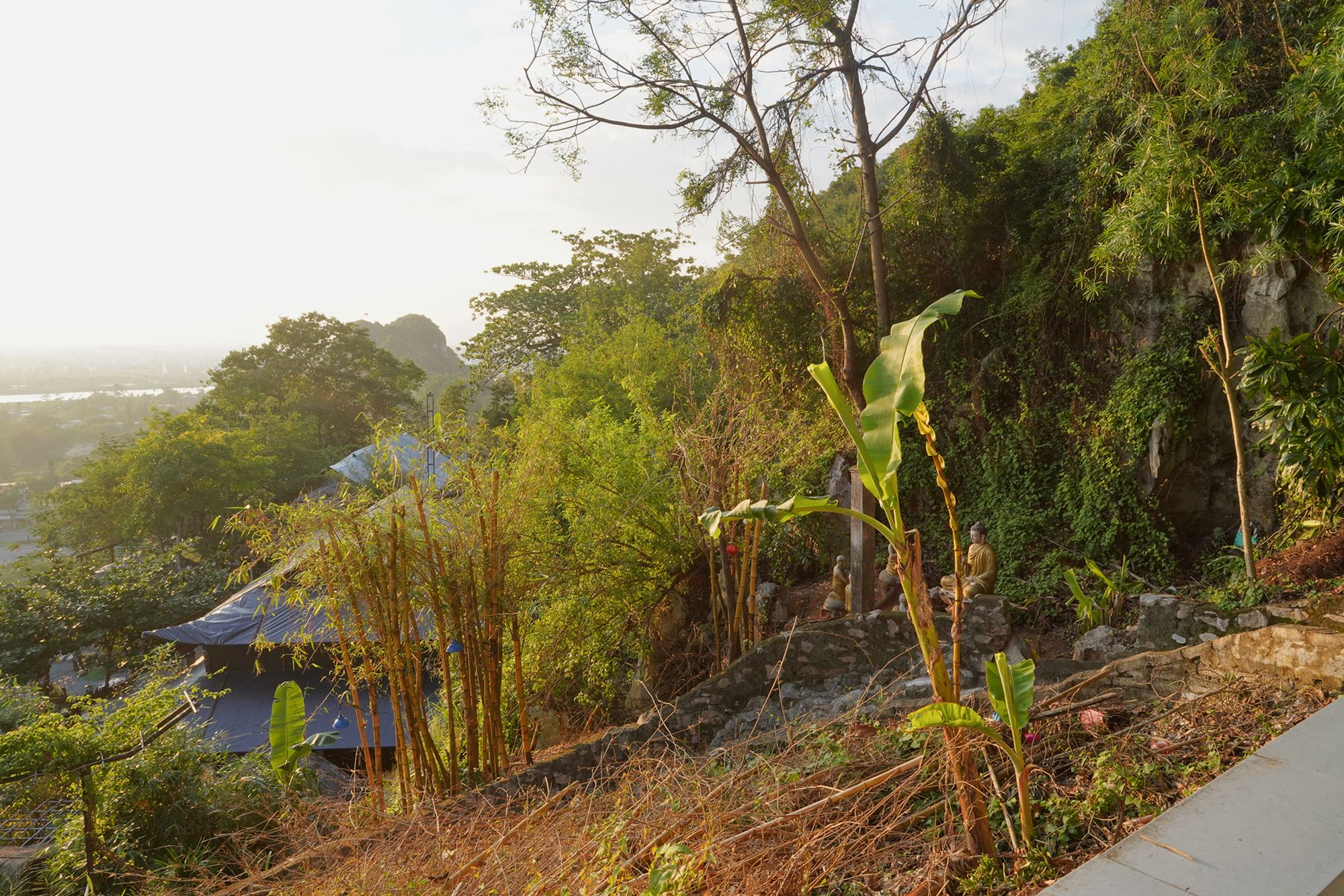
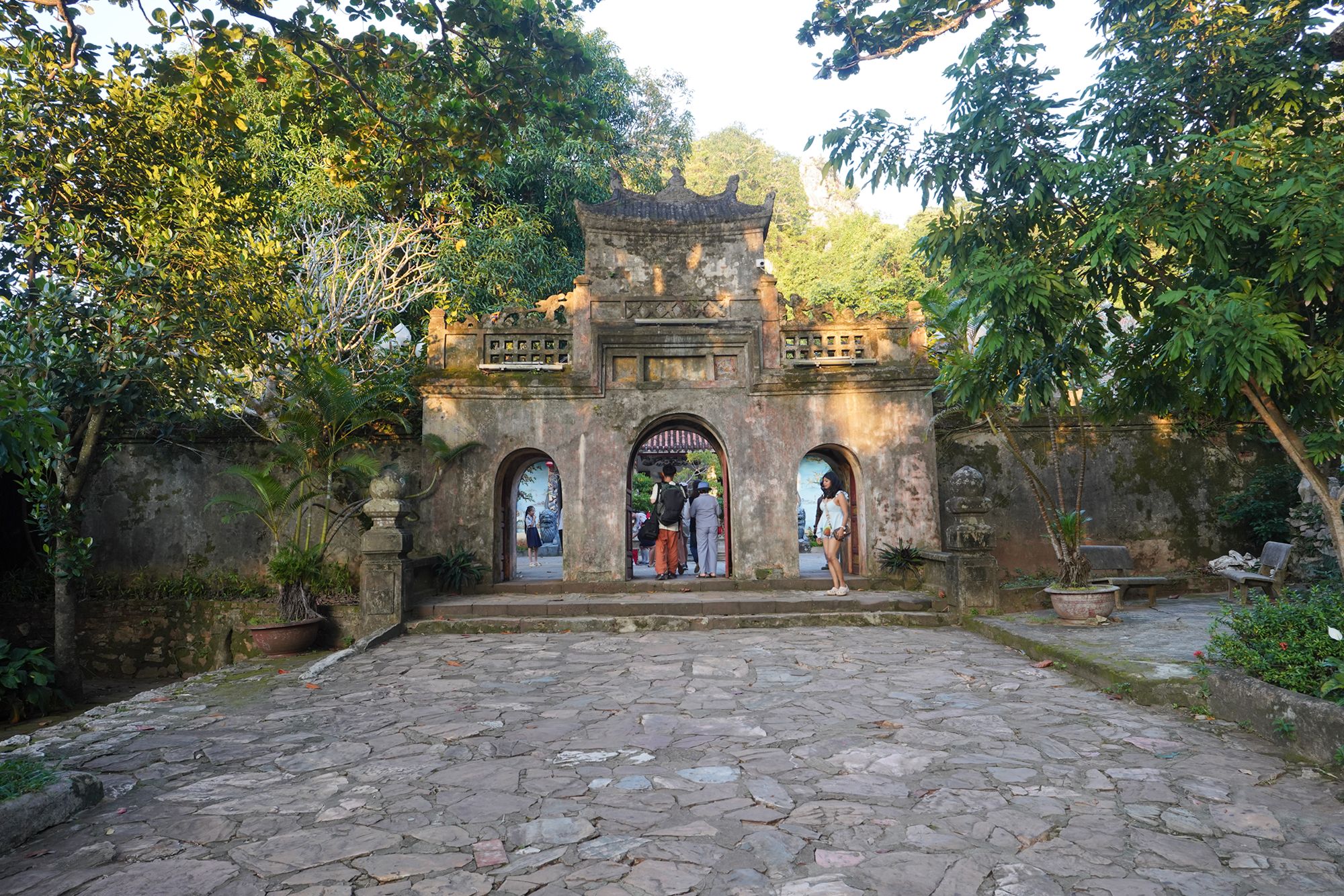
I walked down the mountain on foot as the elevator was located far from that area.
